

Ultimate Travel Guide to Jeonju- Everything you need to know when planning your trip!
In this travel guide to Jeonju’s hanok village, we focus on all the more technical details you need to know while planning your trip to Jeonju ! We spend a few days in Jeonju and absolutely fell in love with this town! Jeonju’s hanok village is a great addition to your South Korea itinerary and in this guide we will show you how to do so!
You will learn how to get to Jeonju, where to stay as well as what highlights you absolutely should not miss while there! We also delve a little into whether a trip to Jeonju is something for you , in case you are not yet decided, and what the ideal duration of your stay will be!
So, let’s get travel planning!
Note: We use affiliate links in this post. They are marked by an *, so you can recognize them in advance. By interacting with these links, you can support us and our website at no extra cost to you! For more information, read our Disclaimer .
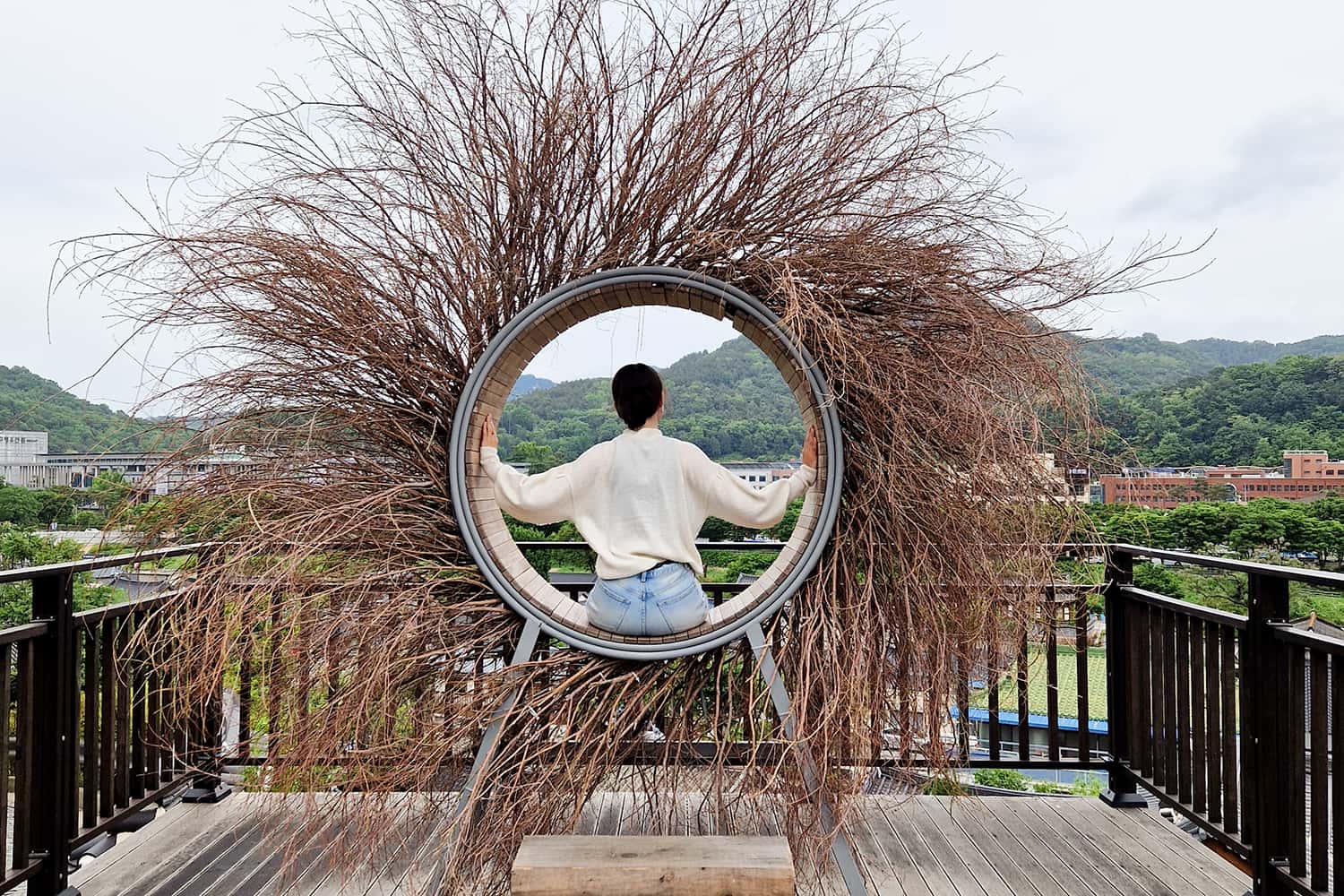
Table of Contents
A quick Travel Guide to Jeonju Hanok Village
Jeonju is located 2-3 hours south of Seoul and therefore a perfect getaway from South Korea’s capital . More precisely though, when we talk about Jeonju in this guide we usually mean Jeonju Hanok Village, which is actually only a smaller more relaxed part of the way bigger city of Jeonju.
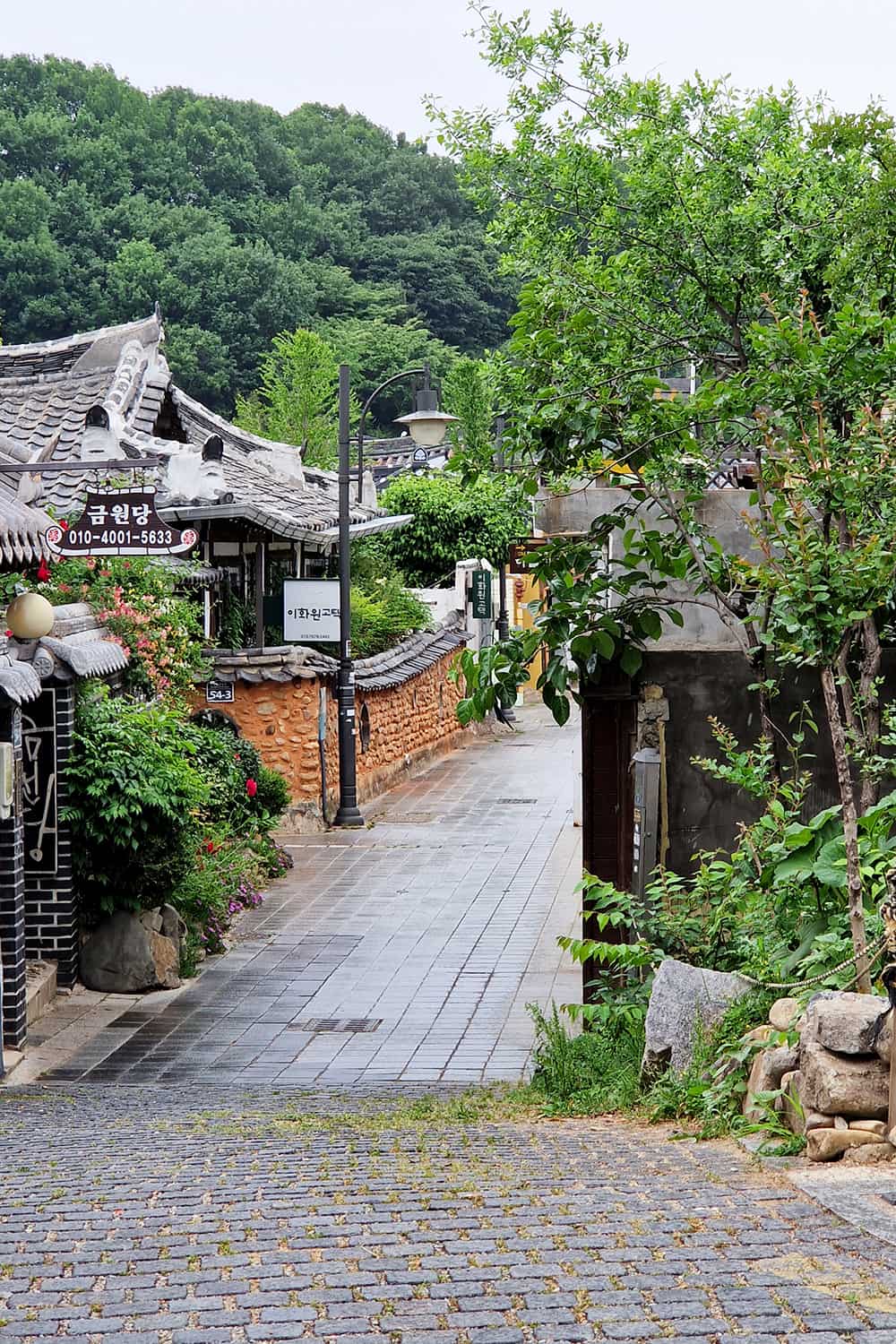
Jeonju is a very old city and it always had some degree of importance in Korea’s history. Which is why the fact that it has such a beautifully preserved hanok village is an absolute tourist magnet for Koreans as well as international travelers !
In this travel guide to Jeonju Hanok Village, we wish to show you why you should travel to Jeonju as well as how you can easily plan your own magical trip with a few key information we will be sharing in this post!
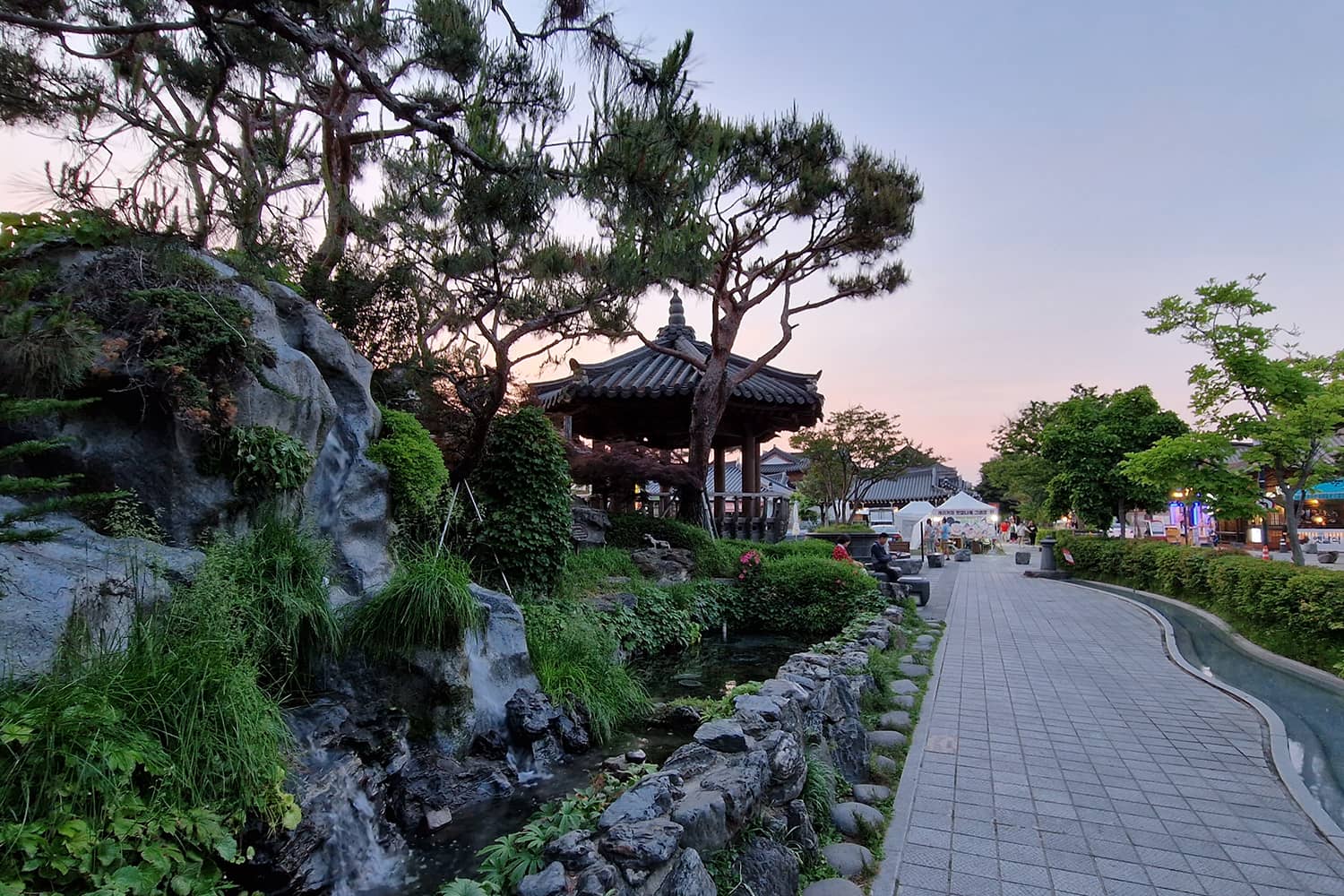
Is Jeonju Hanok Village worth visiting?
Whether Jeonju Hanok Village is worth visiting or not for you definitely depends on your interests and what you wish to see and do. So the better question is, for whom is Jeonju Hanok Village worth visiting?
Jeonju has a lovely hanok village and therefore it is an awesome place to experience what living in Korea might have felt like in the past. Of course it is a more glamoured tourist version of it, but we enjoyed it nonetheless. And, you will too, if you are into the following things:
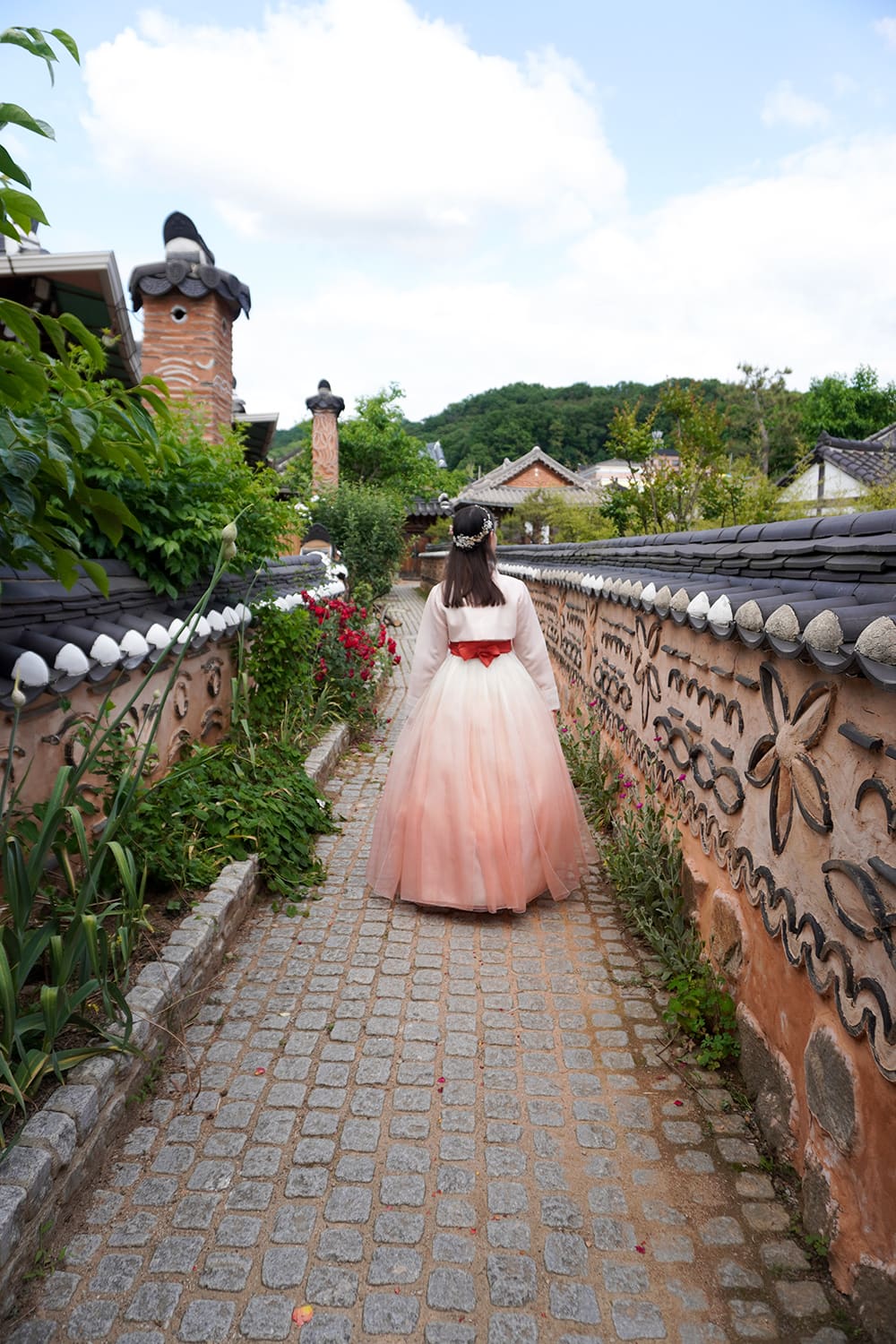
Does spending a few relaxed days, sleeping in a hanok, roaming through a hanok village in a hanbok and eating your way through Jeonju Hanok Village sound good to you? Then, Jeonju is definitely worth a trip! More on what to see and do in Jeonju Hanok Village further down below.
Can you visit Jeonju as a day trip from Seoul?
Jeonju is located a 2h40min bus ride away from Seoul. So, while you technically could visit Jeonju as a day trip from Seoul, we would strongly advise against it . Even if you do not have a lot of time, consider staying in Jeonju for at least one night .
How many days are enough for Jeonju Hanok Village?
If you plan on only spending time inside Jeonju’s Hanok Village (i.e. no day/ half-day trips outside of the city), an ideal timespan will be to spend 2 nights/3 days in Jeonju . That way you have plenty of time (as well as one full day) to enjoy all the perks of spending time in this lovely hanok village.
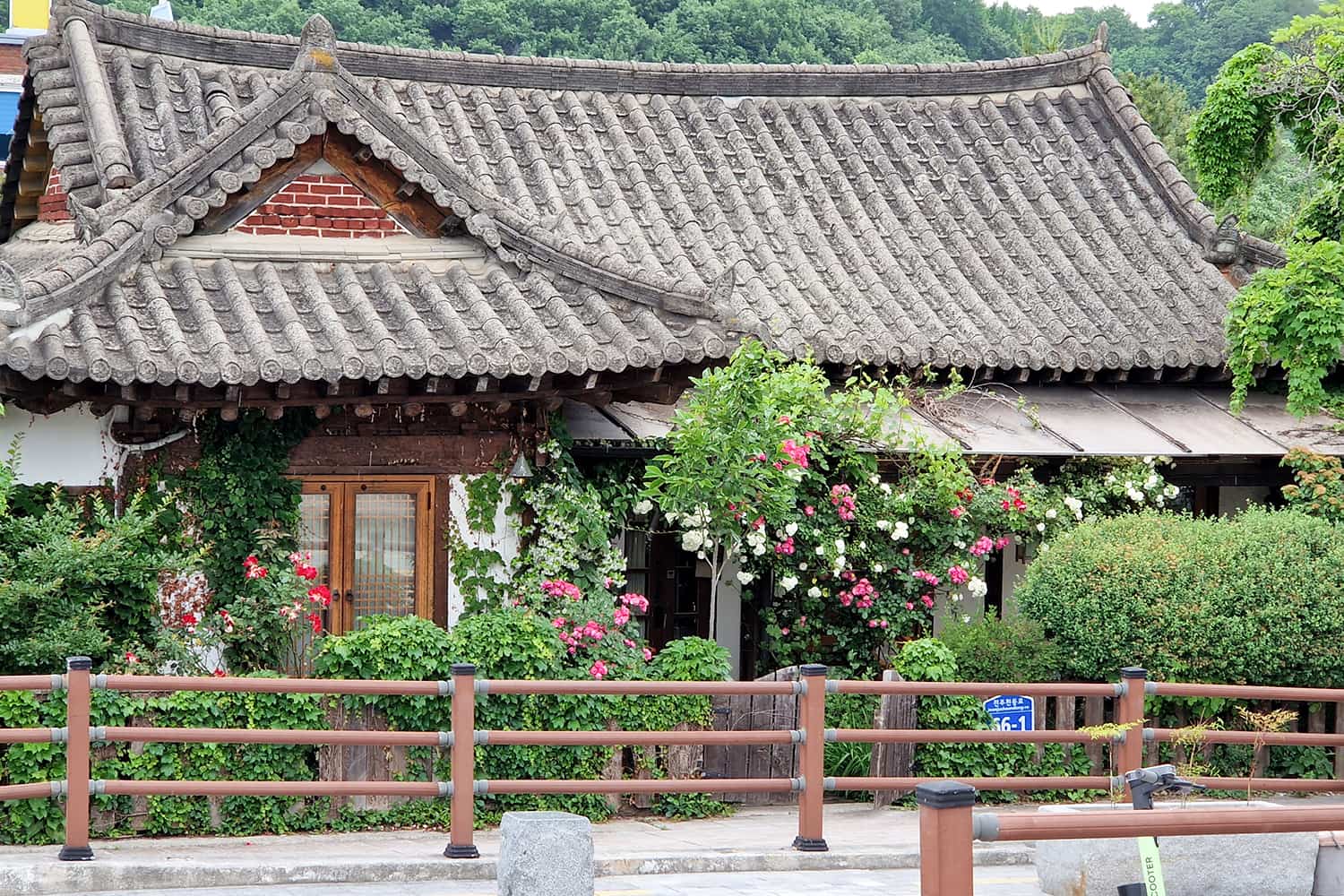
How to get to Jeonju?
Jeonju can easily be reached by Express Bus from a number of South Korean cities. Depending on where you travel from, you can even reach Jeonju by train.
Down below you can find an overview of interesting direct public transport connections with travel times and approximate prices.
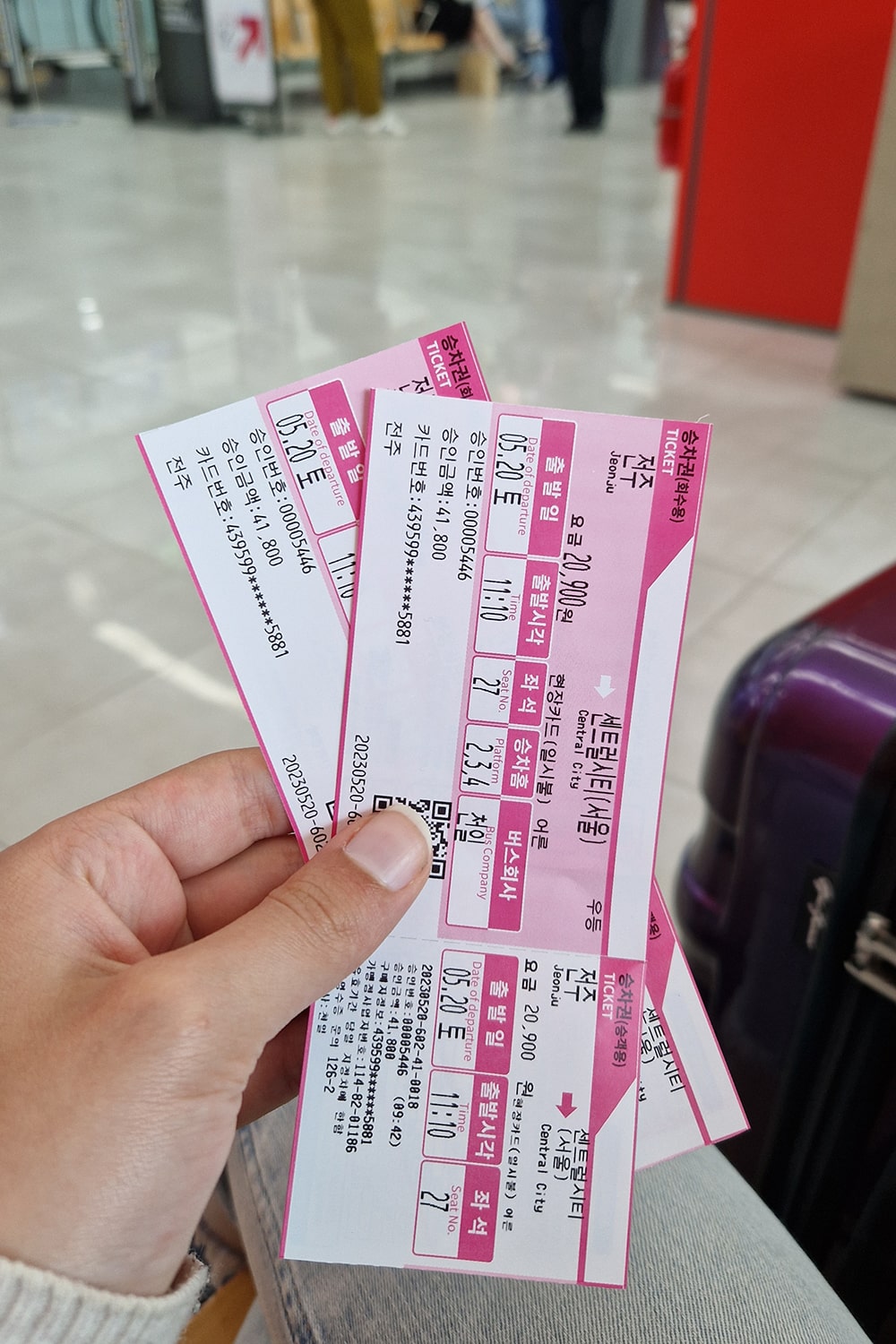
As mentioned in our Best way to travel in South Korea: South Korea’s Bus System guide, buying tickets for Express/Intercity busses is best done on the day of travel at the bus terminal itself. However, train tickets can most easily be bought in advance on Trip.com *!
Travel Tip: If you are looking for a very specific travel connection, download Naver Map , a Korean navigation app you will 100% need to travel South Korea ! Because: the Google Maps navigation function is blocked in South Korea . Also the former gives you real time connections with travel times and prices!
Travelling to Jeonju from Seoul
Public transport connections between Seoul and Jeonju are many and they come at various price points. As you might have grasped from the overview above, prices are usually inversely correlated with the travel time. For instance, the fastest way to get to Jeonju from Seoul is by taking the KTX , Korea’s high-speed train. It is, however, also the most expensive option.
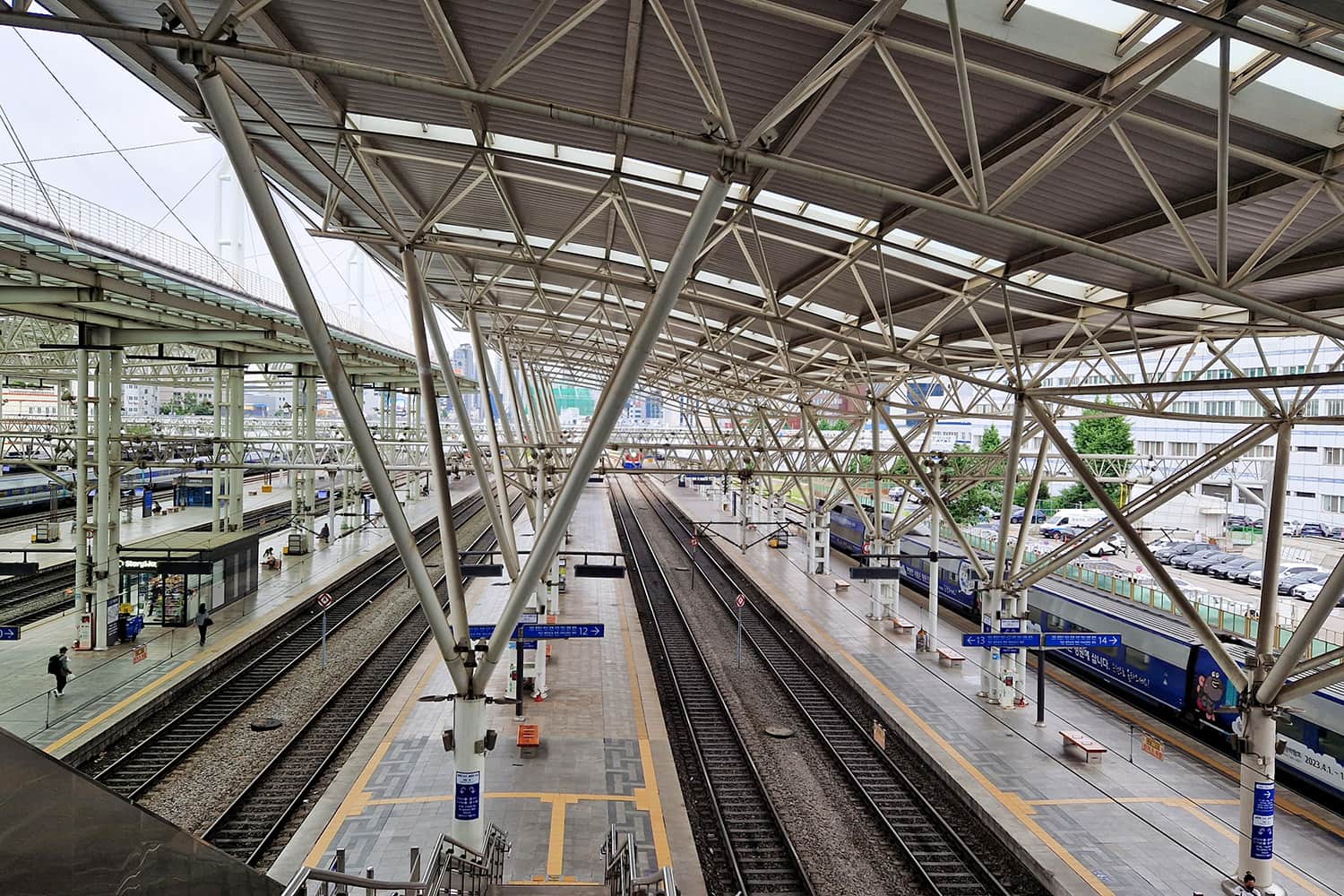
There are several regional trains travelling between Seoul and Jeonju as well. Depending on the train you choose, travel times and prices vary. Travelling to Jeonju by regional train is the cheapest but also the slowest option .
Lastly, there are numerous Express/ Intercity busses going to Jeonju on a daily basis . We chose to travel to Jeonju by bus. Mostly because, we travelled to Jeonju from Sokcho via Seoul and simply transferring to another bus at the Seoul Express Bus Terminal was more convenient than having to change from the bus station to a train station before travelling onwards – something you might want to consider too , depending on where you travel from.
Travelling to Jeonju from Busan
Taking an Express or Intercity bus is the only direct travel connection between Jeonju and Busan. Therefore we recommend taking an Express/Intercity bus when travelling from Busan to Jeonju. The Express Bus will take a little more than 3 hours and cost approximately 35.600KRW.
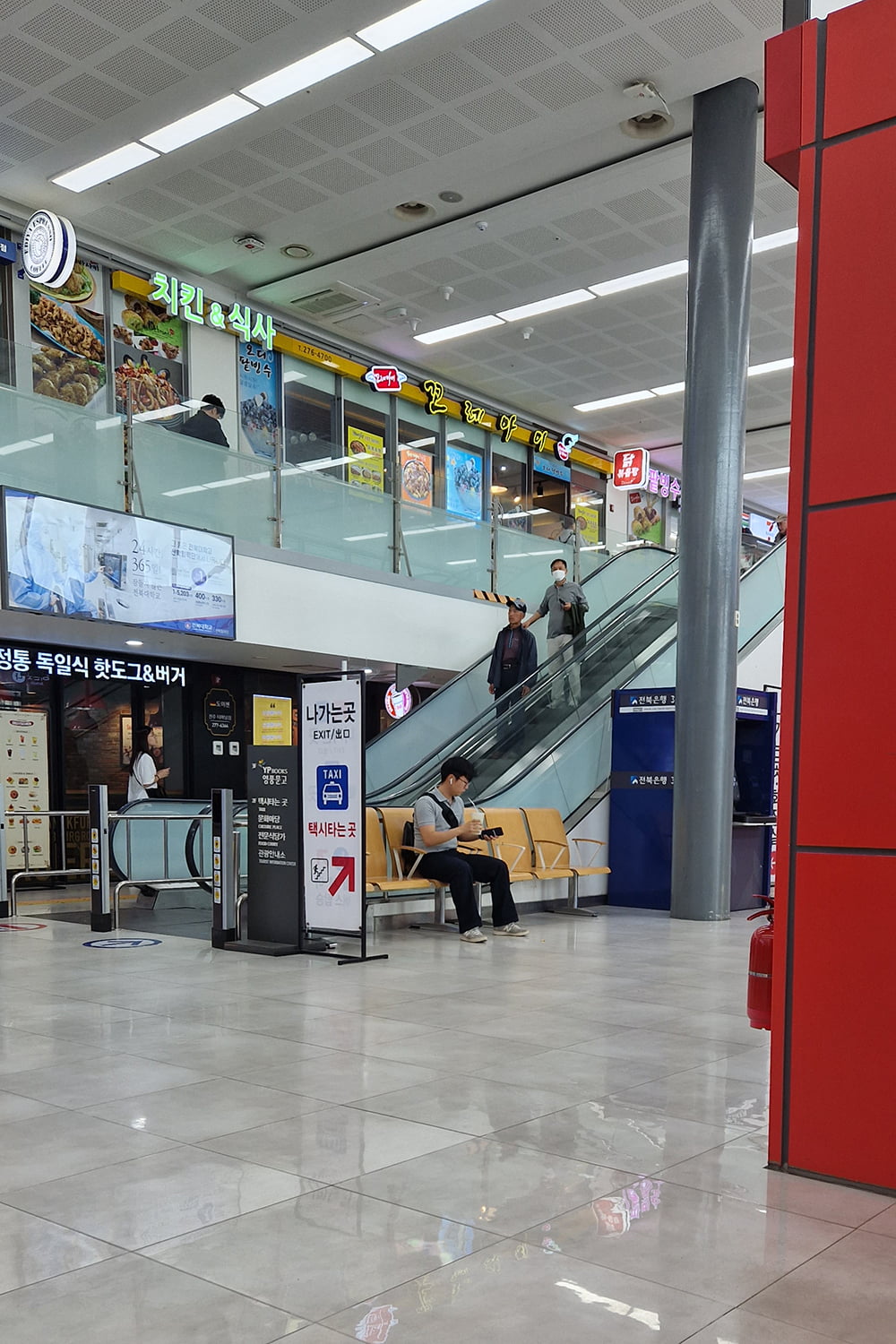
You can also get to Jeonju by taking the KTX or a regional train when travelling from Busan. However, you will have to transfer either in Osong or Suncheon Station (depending on whether you take the KTX or regional train). The KTX option can get pretty expensive though (~50.000KRW+) and will take you between 4-5 hours to complete.
The regional train is the least expensive option again (~20.000-30.000KRW). However, depending on the connection you choose your travel time will be somewhere between 5-7 hours.
How to get to Jeonju Hanok Village from the Jeonju train/bus station?
Once you reach Jeonju, be it by taking the Express Bus or train, you will find yourself either at Jeonju Station or at the Jeonju Express Bus Terminal . From here you have 2 possibilities to get to your accommodation inside Jeonju Hanok Village: either you take the local bus or a taxi.
If you decide to take the local bus , you have numerous options. For real-time bus information simply check on Naver Map what bus leaves next once you arrive at either station. Taking the local bus is a great option if you do not have heavy suitcases.
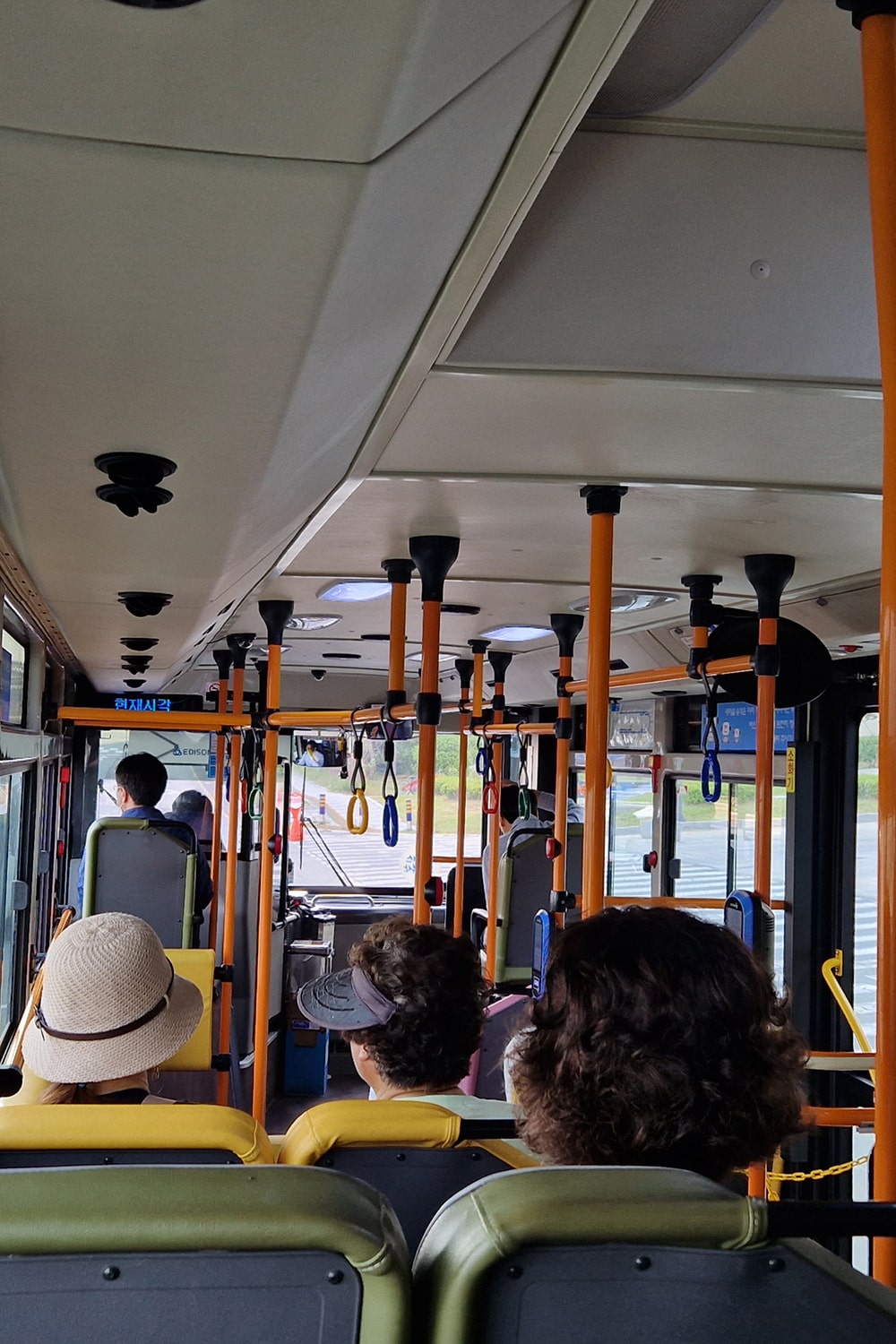
In case you have more luggage, taking a taxi might be the better option . We did the latter, which is why we can say: do not expect the taxi drivers in Jeonju to know any English! If you want to avoid any miscommunication, download the free Korean app Kakao Taxi !
For more information on how Kakao Taxi works (and a quick anecdote on how we struggled to get to Jeonju Hanok Village due to language barrier 😆) head to Best 4 Free Apps that will make travelling through South Korea so much easier!
Where to stay in Jeonju Hanok Village?
Since Jeonju Hanok Village is famous for its, well, hanok, it is kind of a given that you should stay inside a hanok at least for one night . We say, at least for one night, because it is a really awesome but truthfully not necessarily a comfortable experience.
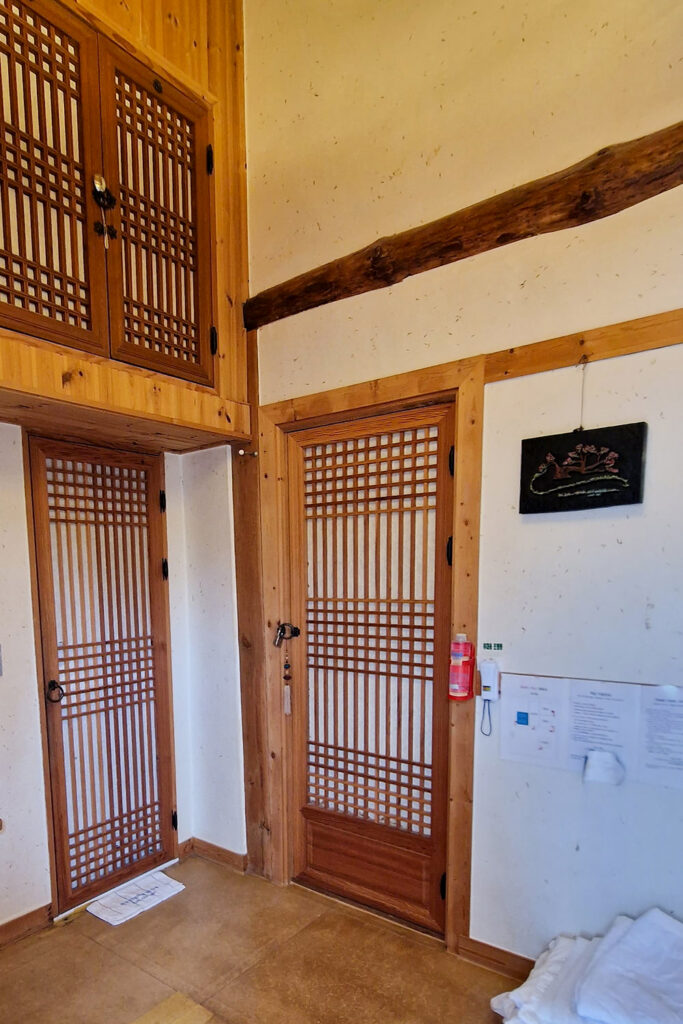
Sleeping on the ground does take a toll on your back, especially if you are used to sleeping in a comfy bed at home. We ignorantly booked a hanok stay for three nights and let’s say, our backs were killing us by the end😆. So, a little heads up there.
When it comes to choosing a hanok stay , you are spoiled for choice. Unsurprisingly, Jeonju Hanok Village is filled with hanok stays! Typically prices range from 59.000KRW/night to 101.000KRW/night (~40-70€/night). If you are looking for a place to stay with a real bed within Jeonju’s hanok village, you will need to pay more.
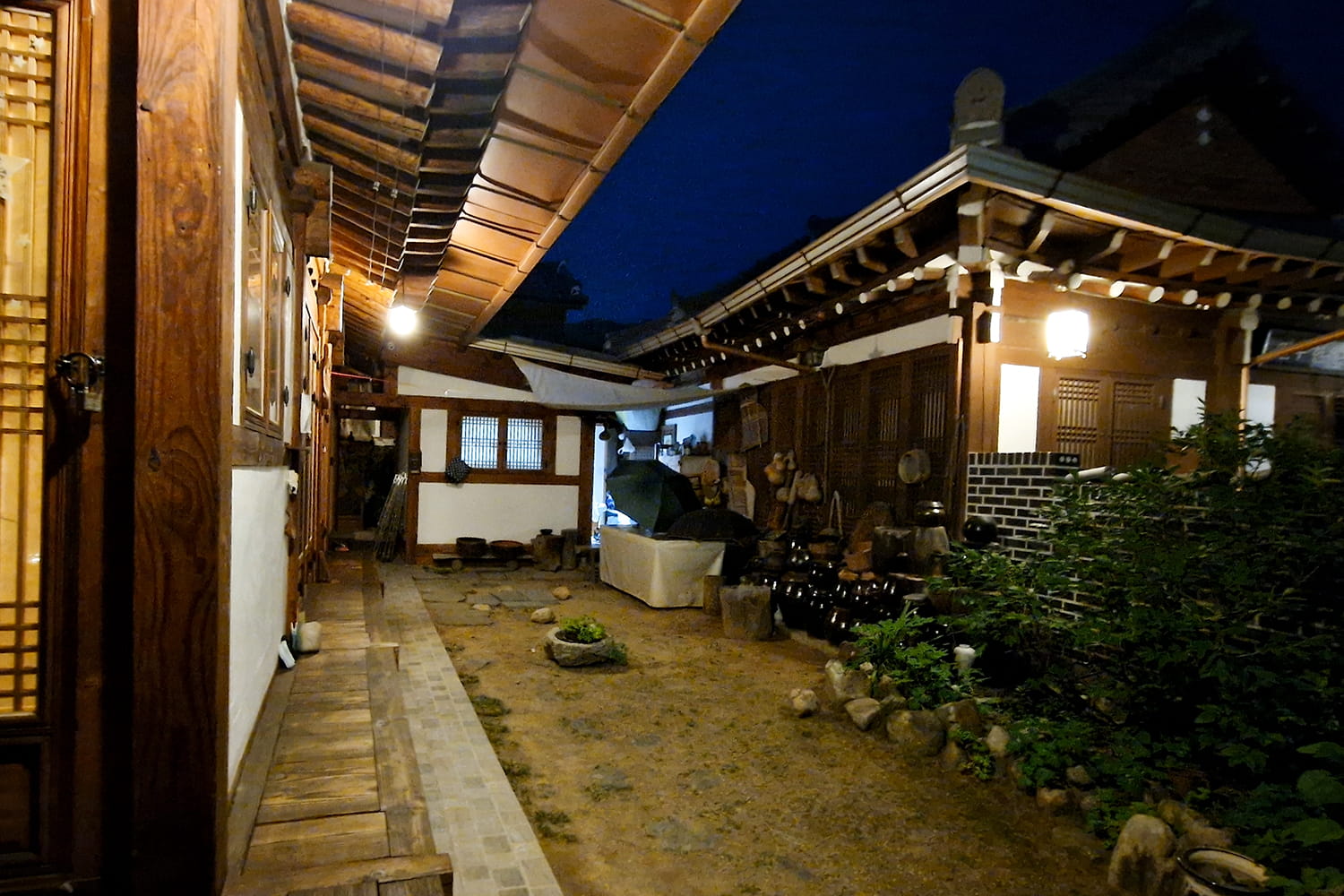
As a Tip: Booking a hanok stay in Jeonju is something you should do in advance, especially if you plan on travelling there during a busy season ! Jeonju is quite a popular destination among Koreans, which is why the best Hanok stays – at least in terms of what you get for your money – are booked out quite quickly!
As mentioned above, we stayed at Jeonjuhanog Baggane * . This hanok stay is located right in the centre of Jeonju hanok village and can be accessed by a really stunning walkway! The owner of the guest house is a lovely lady that lives here as well. She is renting out a few rooms of her hanok to tourists and does a really awesome job in doing so!
What to see and do in Jeonju Hanok Village?
Jeonju Hanok Village is a great place to spend a few relaxed days away from the busy city of Seoul. Especially, if you are interested in delving a little deeper into life in South Korea during the Joseon dynasty ! Down below you can find a list of experiences you should not miss out on while in Jeonju Hanok Village!
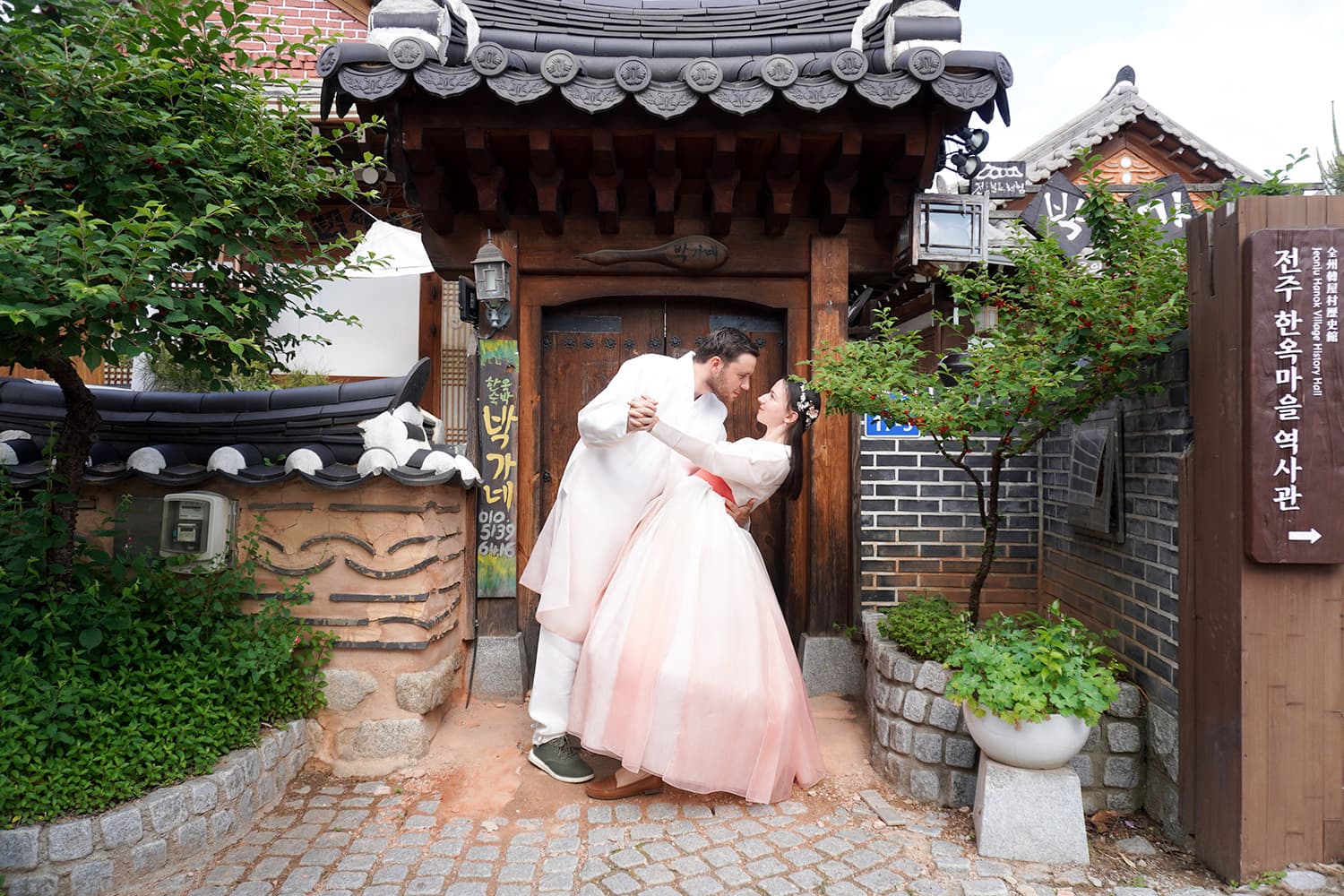
In our 3-day Jeonju Hanok Village itinerary , we share how you can easily spend three magical days in Jeonju! Along with more detailed information on each individual highlight and activity and what not to miss!
What & where to eat in Jeonju
In South Korea, Jeonju is somewhat known as a food hub. What undermines this even more is the fact that Jeonju is also famous for bibimbap ! The latter is the most popular Korean dish among foreigners and kind of our favourite as well. So, if you like bibimbap or in general trying new dishes, all the more reason for adding Jeonju to your itinerary!
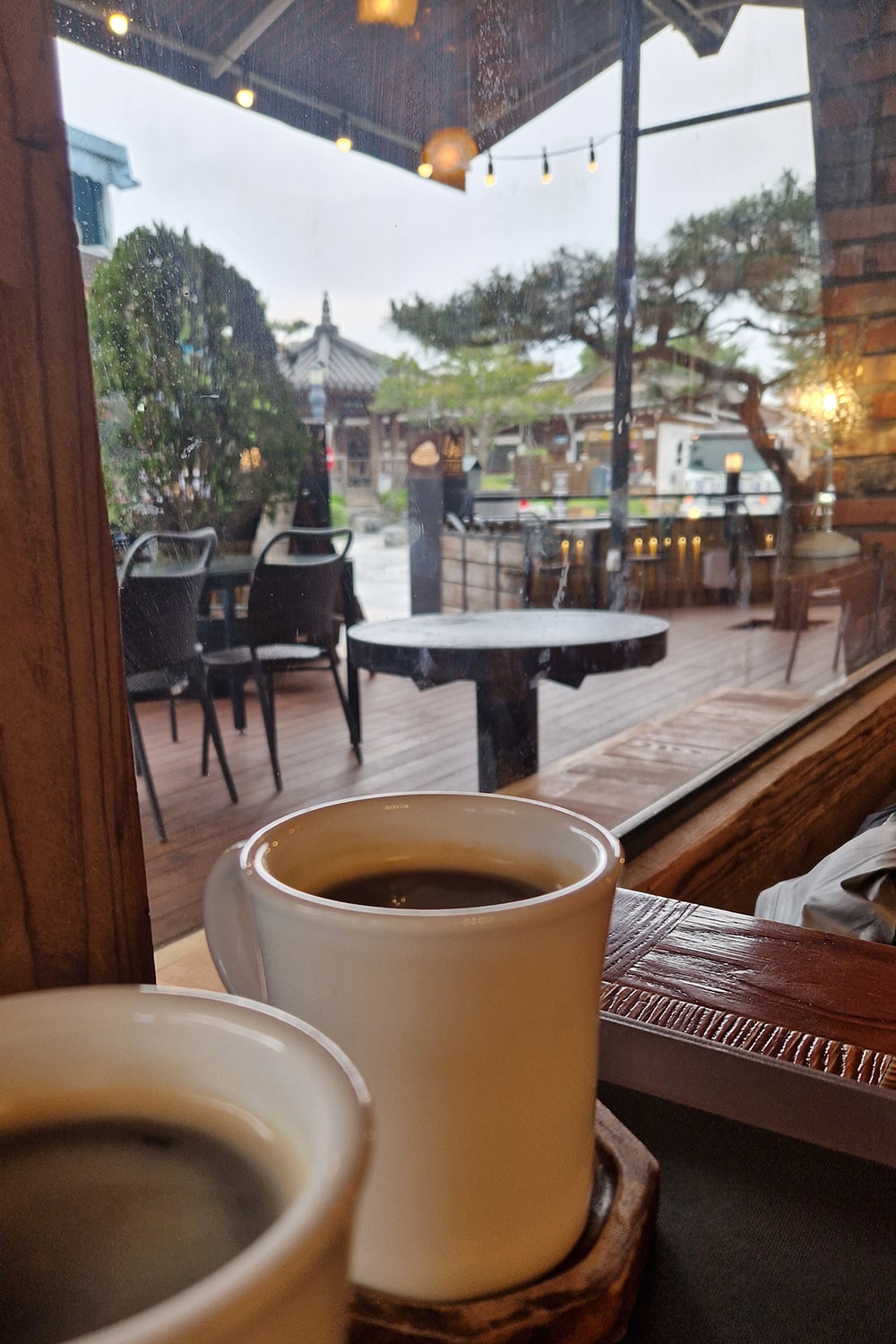
We compiled a list of a few must-try dishes, including where to find them and their respective prices, while in Jeonju in a separate guide: 10 Awesome Dishes you Need to Try in Jeonju Hanok Village !
Travel Guide to Jeonju: Final thoughts
As we hope you could grasp from this post, Jeonju Hanok Village has much to offer ! Food, culture and history are located all in one place and a beautiful one at that! While slightly on the more touristy side of things, it is nonetheless a great city to delve deeper into Korean culture and an experience we can absolutely recommend!
With this travel guide, you should be able to plan your own adventure to Jeonju Hanok Village and we hope you end up liking it as much as we did!
You might also like:
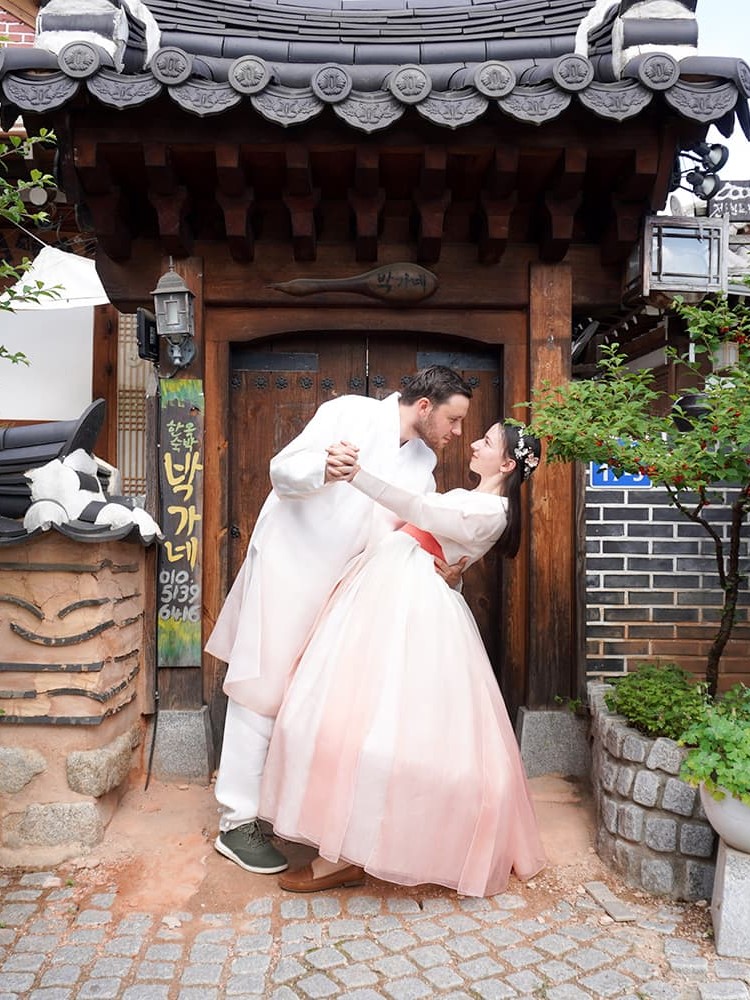
The perfect Jeonju Itinerary – How to spend 2-3 magical days inside Jeonju’s Hanok Village!
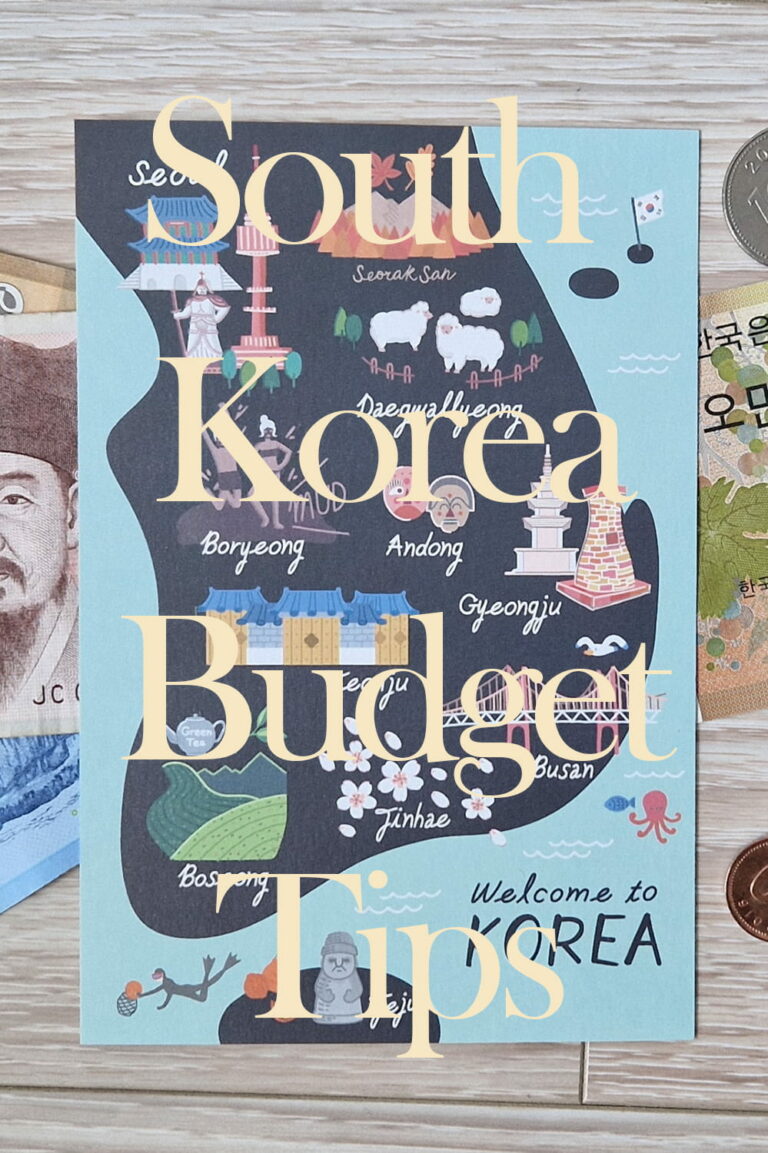
10 Tips for Travelling South Korea on a Budget

Best 4 Free Apps that will make traveling through South Korea so much easier!
Leave a reply cancel reply.
Your email address will not be published. Required fields are marked *
Cookies are small files that are stored on your browser. We use cookies to improve our website! By choosing 'Accept all' you agree that this website may use these cookies and similar technologies. You can tailor to which types of cookies you consent by choosing the corresponding options under 'Preferences' or choose to reject them with 'Reject'! For more informations on cookies and our use of cookies, we invite you to go to our cookie policy page (which you will find at the bottom of our homepage)!
- Work with me
- Privacy policy

- Years in review
- United Kingdom
- Bosnia & Herzegovina
- North Macedonia
- Philippines
- South Korea
- South Africa
- Africa Overlanding
- Central America
- New Zealand
- Solo Travel
- Budget travel
- Travel tips
- Travel itineraries
- Hidden gems
- Bucket list
- Travel resources
- Digital nomadism
- Blogging tips
- Start a travel blog
Idyllic Things To Do in Jeonju, South Korea
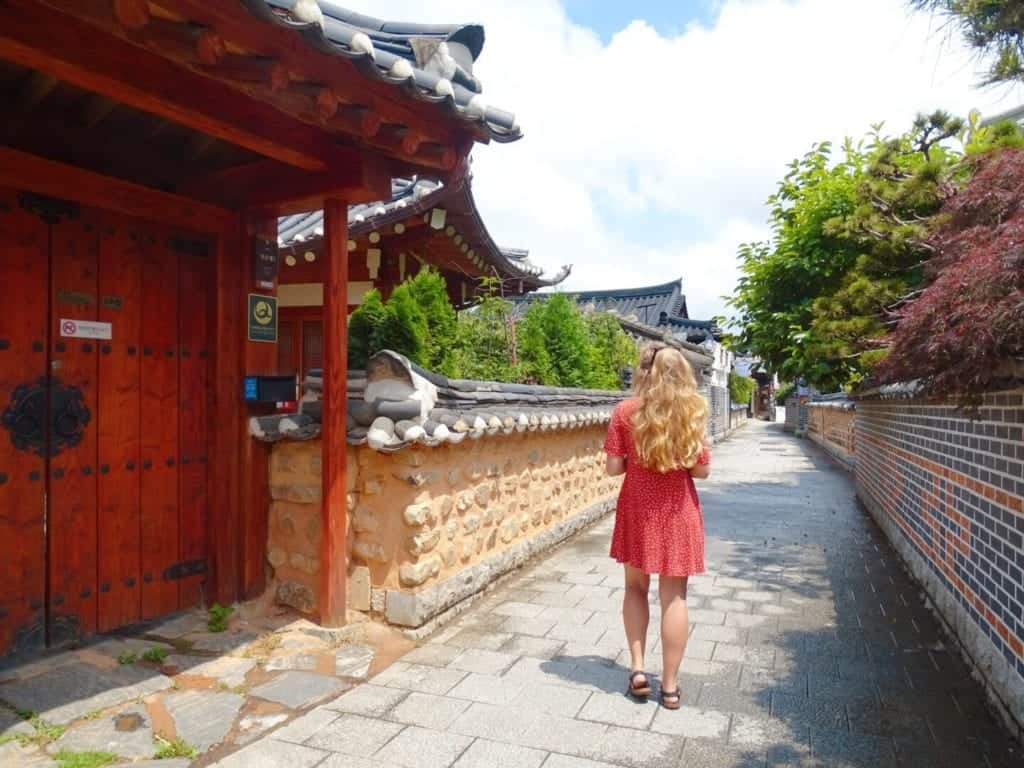
Table of Contents
This post may contain affiliate links to things like tours, hotels, Amazon associates and products. These help me earn a small commission at no additional charge to you.
The small settlement of Jeonju in South Korea may not feel like a city but by definition it is. But instead of skyscrapers and bright lights, you can expect modest hanok houses and traditional local cuisine. Jeonju is worth visiting during any South Korea itinerary simply because it’s so different to anywhere else. If you want to experience traditional Korea, there are plenty of cultural things to do in Jeonju. This city was voted a UNESCO city of gastronomy in 2012 which only made me more excited as I’m head-over-heels in love with Korean food !
JEONJU KOREA ESSENTIALS Accommodation: Booking.com / Hostelworld Jeonju activities: Viator Getting there: flight / bus / train ( Trip.com )
Where is Jeonju?
Jeonju is in West Korea, halfway between Seoul in the north and Busan in the south. If you just have a week in Korea, it would make a nice pitstop as you journey between the two megacities.
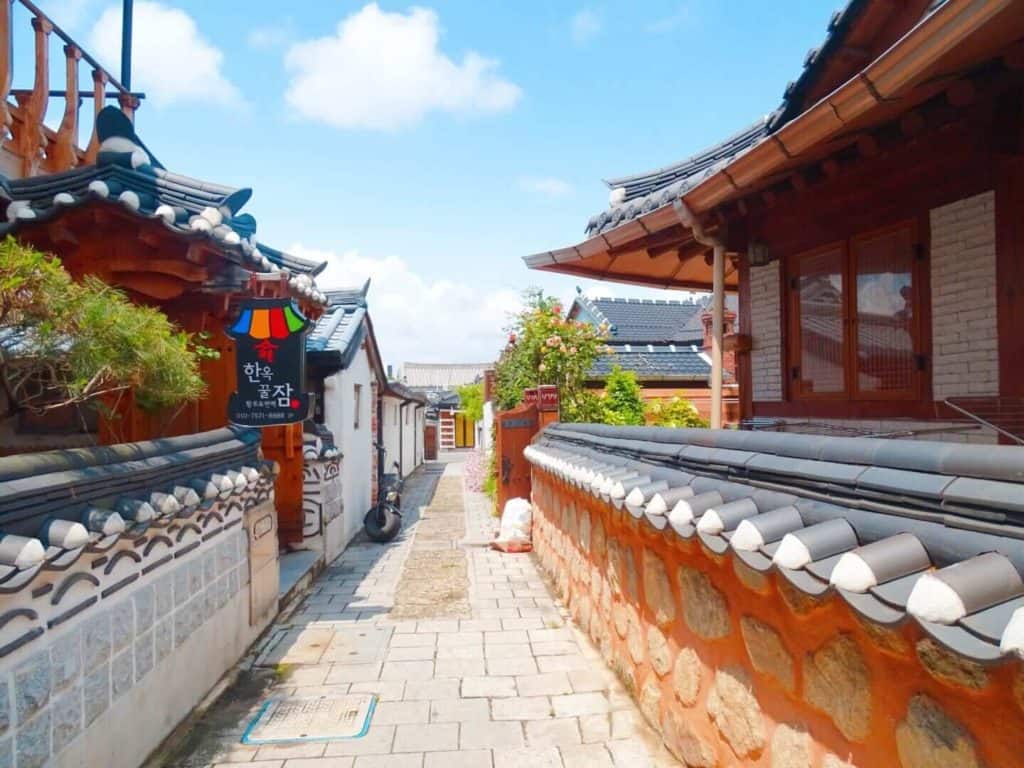
Getting to Jeonju, Korea
One thing to know about public transport in South Korea: it’s seriously efficient. Unlike countries in Southeast Asia where night buses and long days in transit are a necessity, things are a breeze in South Korea. Both buses and trains are quick and comfortable. By train: The journey takes just under 2 hours and cost 30,000 won ($25) including a free drink and cake . To book, show up at the station or use Trip.com , partner of Korail (the official railway network of Korea) to reserve your tickets. The website accepts international payment options, unlike Korean rail websites. Click the three stripes in the top right corner then the flag to change it to English. By bus: If you’re travelling on a budget, my best Korea travel tip is to take the bus. They take around 3 hours and depart from Jeonju Express Bus Terminal . Booking bus tickets online is a faff so it’s best to just turn up on the day. Buses depart regularly so you shouldn’t have any problems.
Can you visit Jeonju as a day trip from Seoul?
Yes! If you have limited time, you can easily see Jeonju Hanok Village during a day trip from Seoul. But I always enjoy staying in a place and having time to see it properly. There are several places to visit in Jeonju so it was nice to enjoy them at my leisure while staying overnight.
Where to stay in Jeonju

When I noticed there were no hostels in Jeonju, I was initially disappointed as a solo traveller in South Korea who likes to meet other people. However, I then learnt that Jeonju has some of the best-preserved hanok houses in the country, dating back to the 14th century. Staying in a hanok house was high on my Korea bucket list ! Simply translating as ‘Korean house’, hanoks are modest buildings displaying traditional Korean architecture. They’re typically made with dark-coloured wood and elegant, sloping ceilings, set around sleepy courtyards.

Korean architecture is deeply holistic, representing a spiritual connection between the inhabitants and their surroundings. Hanoks were traditionally built with a mountain behind and a river in front. Indeed, my hanok guesthouse had a river running not far from the entrance. While there are plenty of hanoks , I chose to stay at Happiness F ull Hanok Guesthouse . The owner of this sweet little place didn’t speak English but it wasn’t necessary. She smiled warmly, made me tea and handed me some maps. My room was basic like most hanoks : a bed on the floor, minimal furniture and a TV showing Korean channels (which by the way are a treat in themselves. There are 2 dog channels!).
What to do in Jeonju
Next in my Jeonju travel guide, what to do, see and eat during your visit. There are only a few attractions in Jeonju compared to Seoul or Busan but is that such a bad thing? Not at all. Jeonju is the antidote to big, busy cities and just what I needed at the time. Here are some of the top attractions and places to go in Jeonju…
Eat the best bibimbap in Jeonju
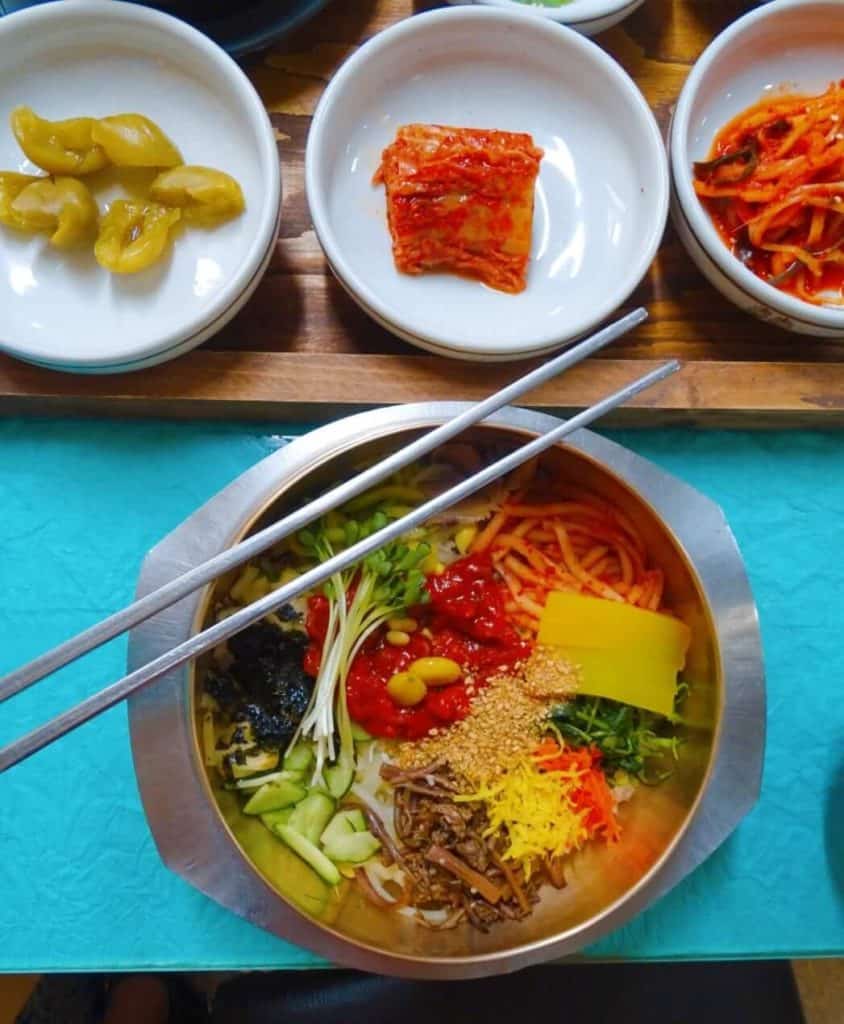
My sightseeing in Jeonju began with bibimbap and that’s exactly how I want all my travel adventures to start! Would you believe that the photo below is just of my side dishes? Jeonju is the original hometown of the dish so it would be rude to leave without tucking into at least one bowl. In case you don’t know – bibimbap translates as ‘mixed rice’ and is a tasty mess of egg, veggies, beansprouts, kimchi and pepper sauce. If you’re travelling Korea on a budget , eating this affordable dish is one of the best ways to keep the costs down.

If you’re looking to try bibimbap in Jeonju (spoiler – you should), I’d highly recommend Family House . There are plenty of restaurants in Jeonju that serve bibimbap but honestly, you can’t do better than this place. My bibimbap with 12 side dishes was 12,000 won. Bargain! These sides included kimchi, asparagus, glass noodle salad, pickled jelly, gooseberries, syrup-soaked sweet potato and more.
Jeonju Hanok Village
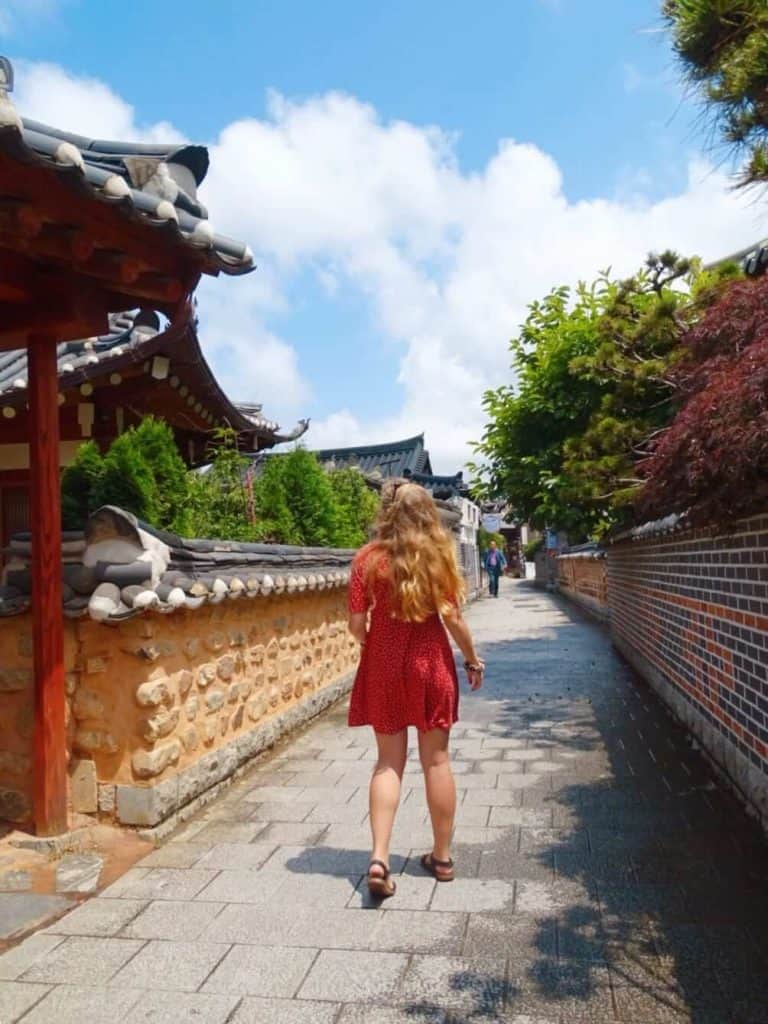
If you’re not staying in one (and even if you are), ensure you visit the famed Hanok Village. This was well worth the hype: a preserved traditional village with some cultural finds along the way.
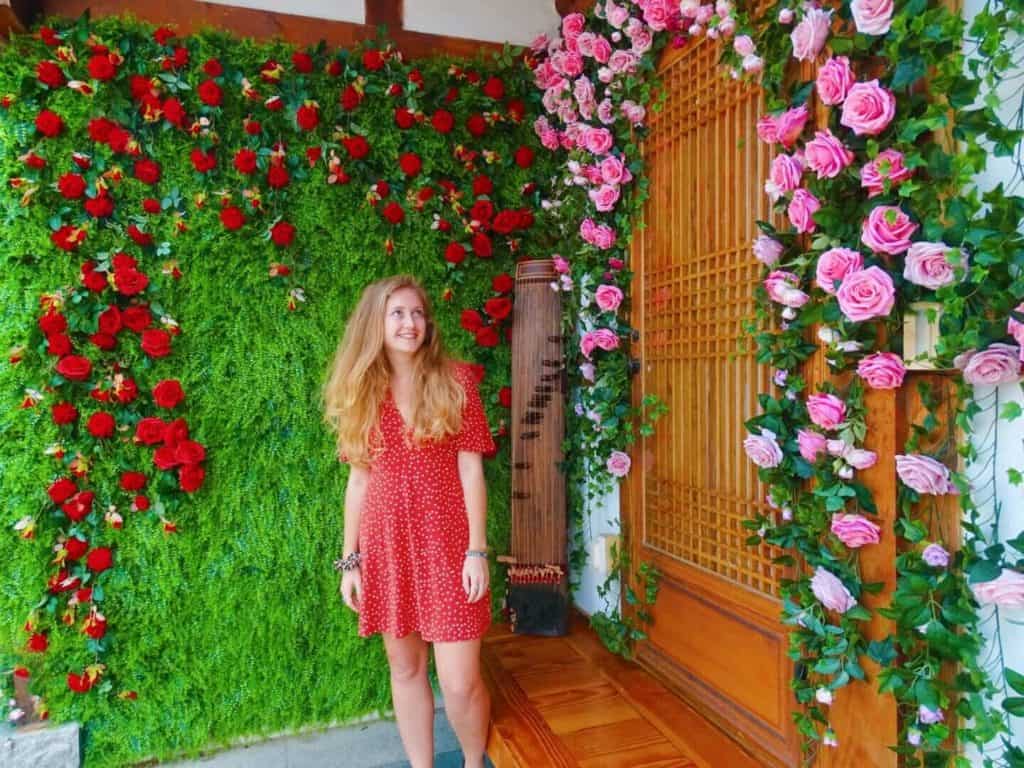
Things to do in Jeonju Hanok Village include visiting the calligraphy and sake museums or simply strolling the peaceful streets, trying Korean snacks or renting a traditional hanbok outfit .
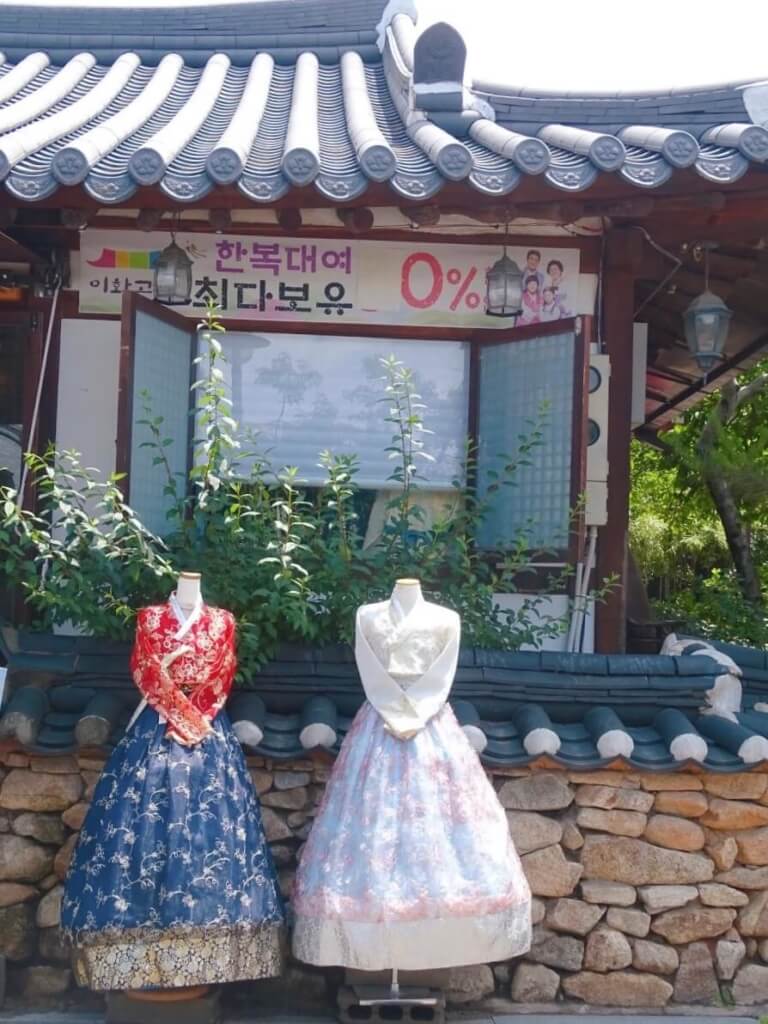
Pose in a photobooth
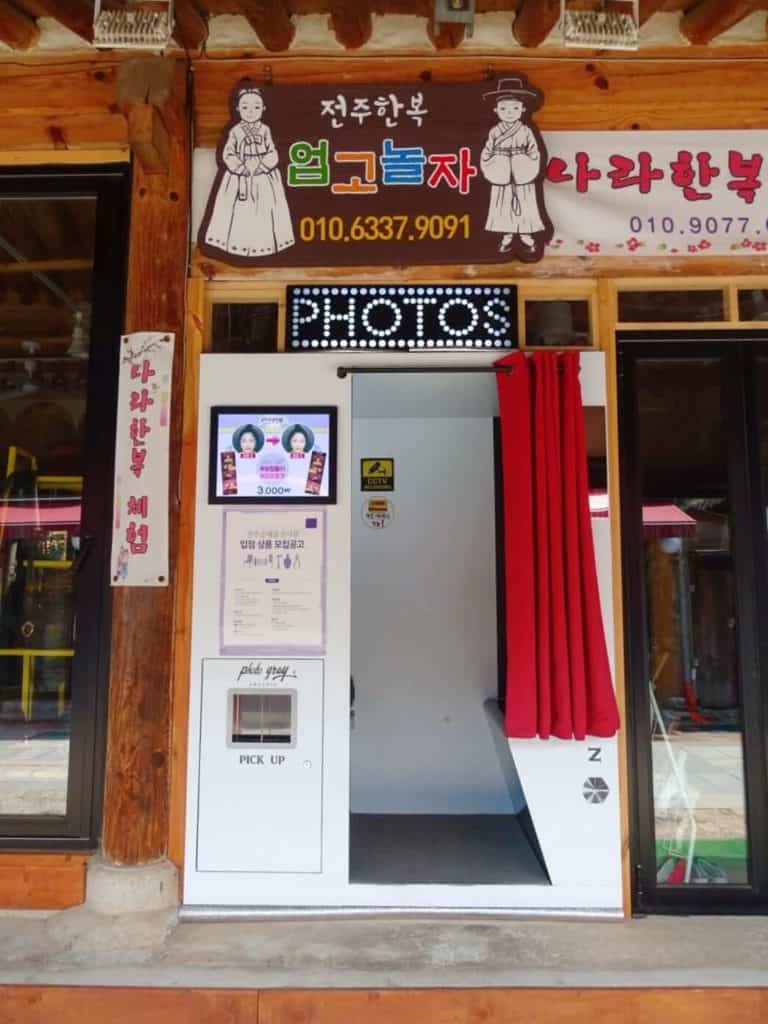
Jeonju may have deep traditional roots but who doesn’t love a selfie? There are a few modern touches dotted around Jeonju Hanok Village including these fun photobooths. The ultimate millennial souvenir!
Eat at Nambu Market
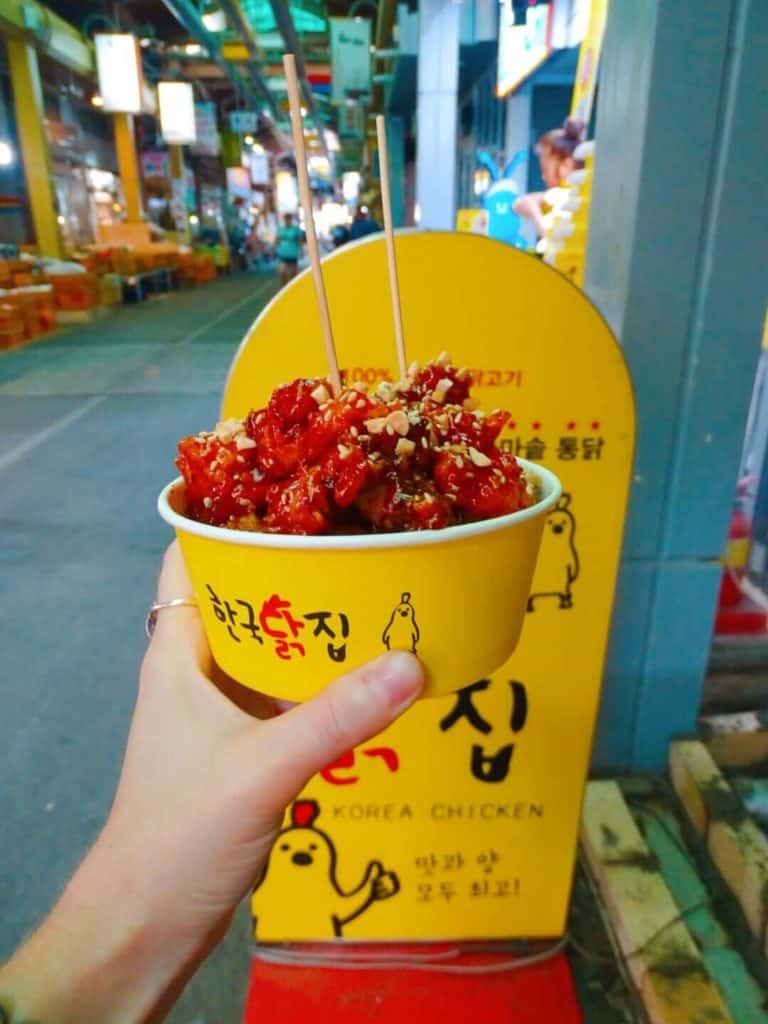
For Korean food and a taste of local life, head to the biggest local market in Jeonju. Nambu Market has been selling groceries, hot dishes and colourful fruit and veg for over 200 years. Google says Nambu Market is open all day and evening but I didn’t find this to be the case. It was closed when I visited at 6pm but apparently it’s open on Friday and Saturday nights. The best time to visit is for breakfast or lunch. There wasn’t quite as much hot food as I was hoping for but I did find some tasty Korean fried chicken. It’s not old-school Korean food but it was delish.
Hike to Omodae Viewpoint
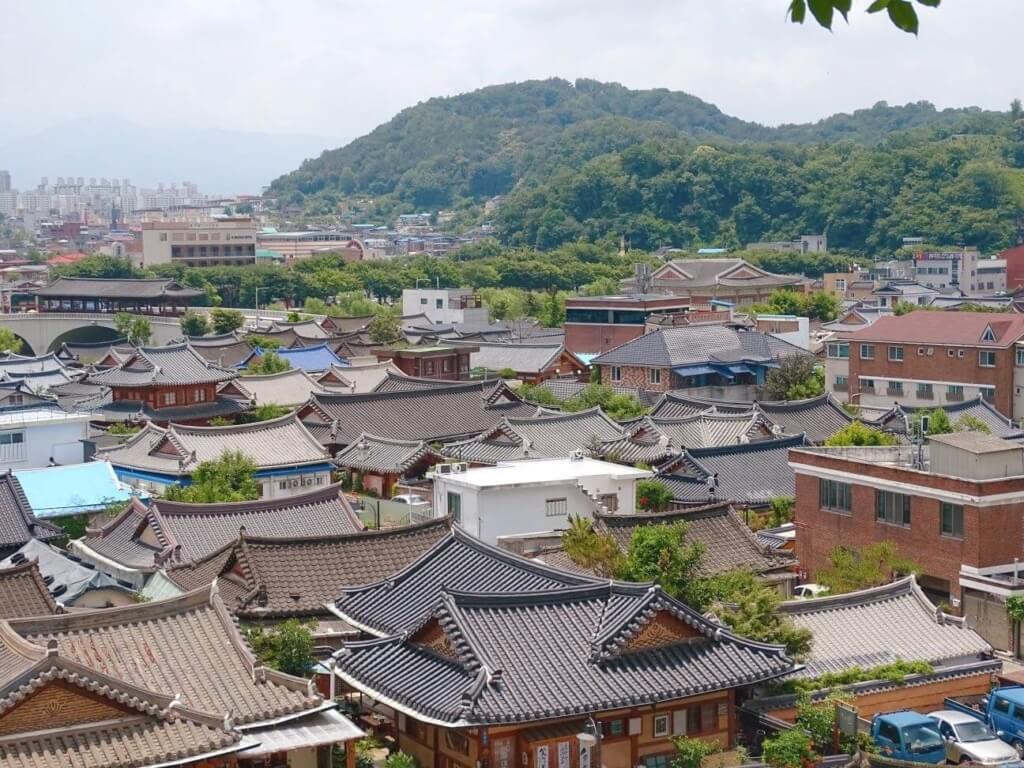
Being a low-rise city, it’s not too difficult to capture Jeonju from above. Walking up to Omodae Viewpoint is an easy 5-minute climb up a couple of flights of wooden stairs. Snap some photos of the idyllic Hanok Village before returning to ground level… and perhaps rewarding yourself with a bowl of bibimbap for that oh-so-strenuous 😉 hike.
Jaman Mural Village
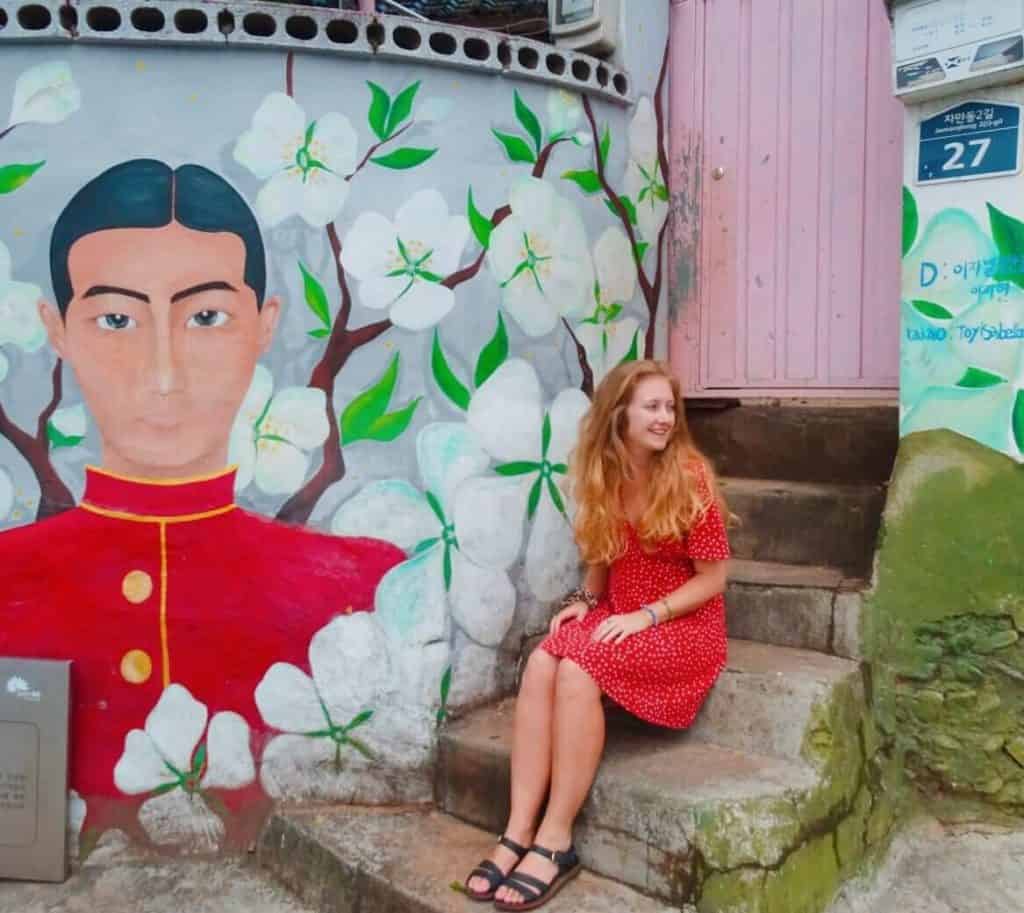
I love the diversity of Korea. Who would expect a vibrant and modern street art village in this traditional town? South Korea somehow marries the old and new so well; good news for me as I love street art.
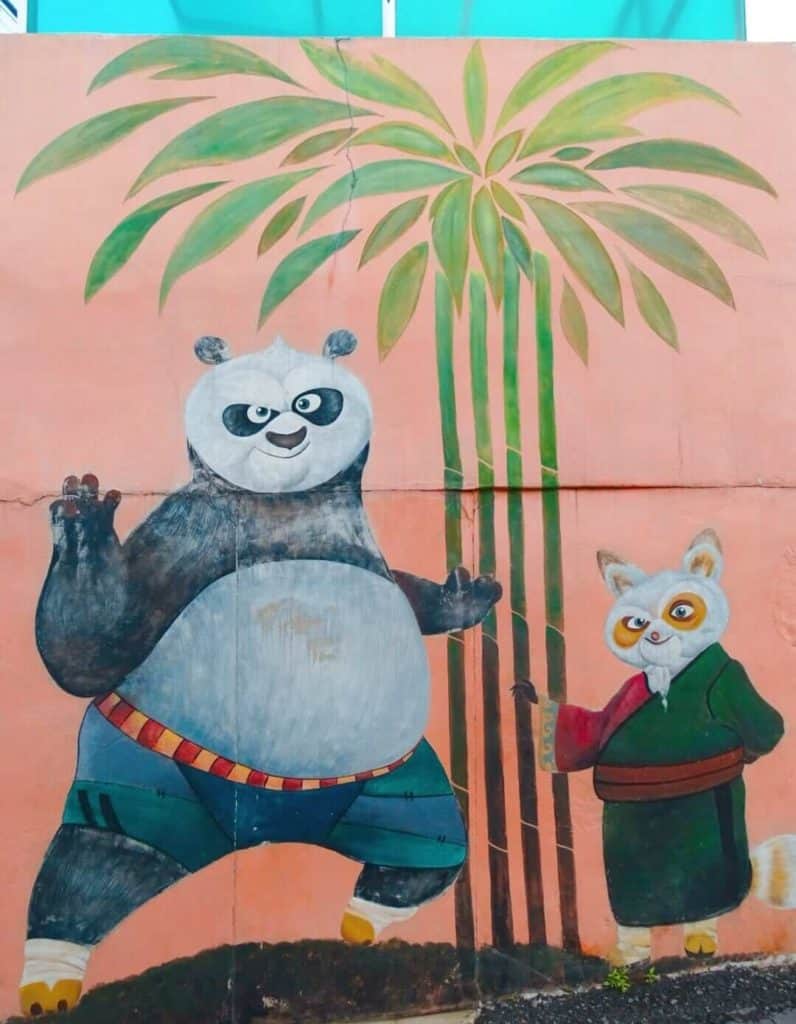
The most colourful place to visit in Jeonju is Jaman Mural Village, just a short walk from the centre of Jeonju. In this colourful residential corner, the homes and walls are splattered with cartoon-like images of people and animals. As well as the art itself, there are a few Insta-worthy cafes to check out.
Jeonjuchun River walkway
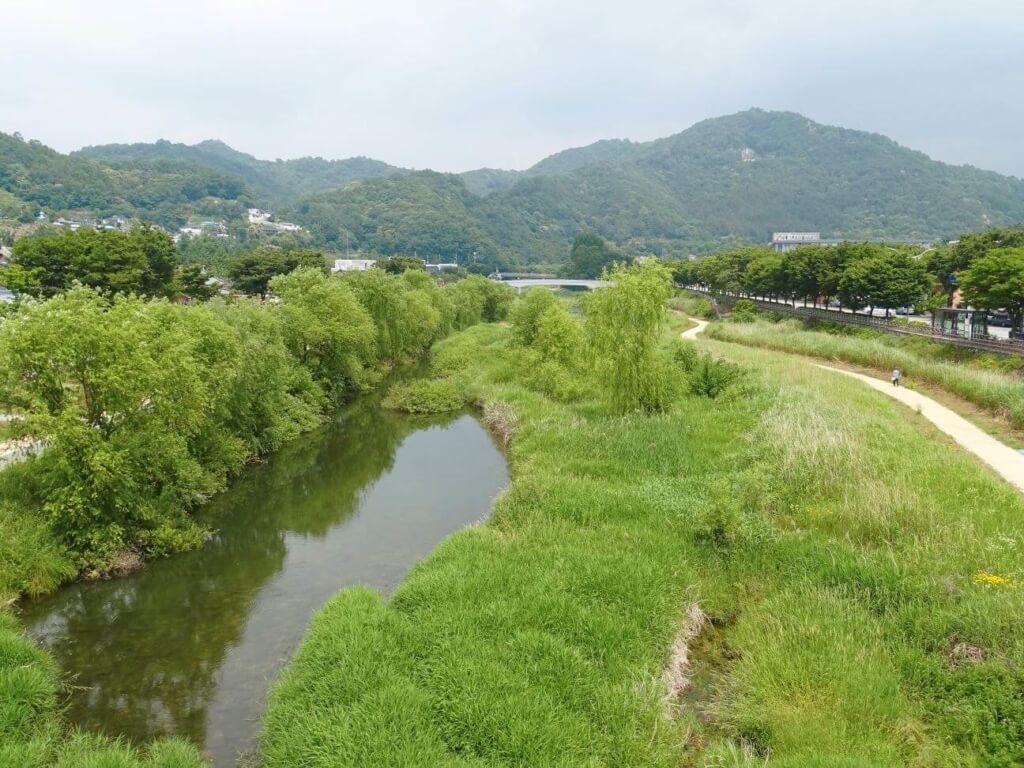
During my time in Jeonju, I took several early evening runs beside the Jeonjuchun River. Whether your motivation is staying fit and healthy while travelling or simply experiencing the peaceful Korean countryside, you can’t go wrong. For an easy, flat walk with beautiful views, follow the Silver Grass path along the Jeonjuchun River from Ssajeondari Bridge to Jeonju Ecomuseum.
Seohakdong Art Village
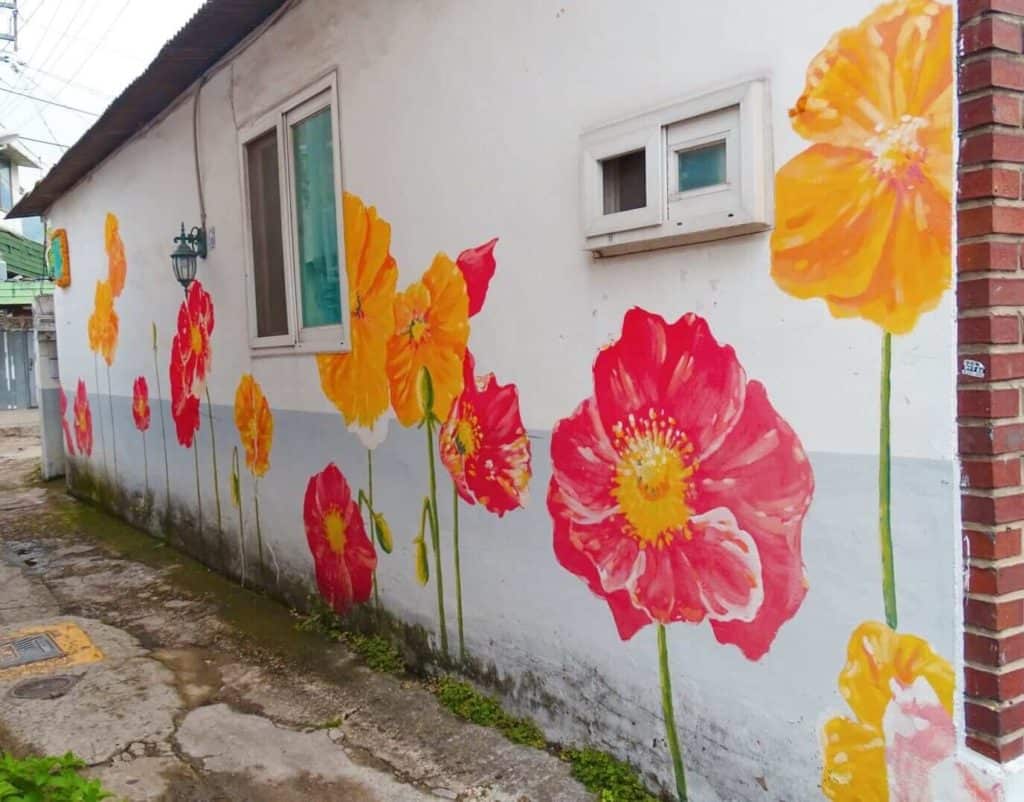
One spot I read about before visiting Jeonju was Seohakdong Art Village . After checking it out, I can’t say it was the best thing to do in Jeonju as it was fairly small and sleepy. However, if you’ve got a spare hour, take a walk around this part of town. There are a few art galleries, shops and cute wall murals to check out. Address: Jeollabuk-do, Jeonju-si, Pungnam-dong.
Sip on makgeolli
Alcoholic milk? Believe it or not, this beverage is a favourite with Koreans and tourists alike. Makgeolli is a popular milky rice wine with a hint of fizz. It might sound odd but it’s famously from Jeonju so it would be rude not to try it whilst you’re in town. There are plenty of places in Jeonju to try makgeolli but you can’t go wrong with Yetchon Makgeolli Restaurant .
1 day itinerary for Jeonju Korea
Include these things to do in Jeonju for the perfect day in this gorgeous city… Morning – wander Jeonju Hanok Village. Sample local snacks, take photos in the booths or simply soak up the atmosphere. Lunch – stop at Nambu Market for hot food (I would highly recommend the Korean fried chicken). Afternoon – walk to Jaman Mural Village. Afterwards, take a loop around Seohakdong Art Village. Evening – head for dinner at Family House for your bibimbap feast. Evening drinks – Visit Yetchon Makgeolli Restaurant to try the famous Jeonju beverage.
South Korea essentials
- Copy of Lonely Planet Korea .
- A Korean phrasebook & dictionary .
- To stay connected, a 4g SIM to collect at Seoul airport or a rental pocket Wi-Fi device
- A handy bumbag to keep your belongings secure.
- Reusable coffee cup (collapsable) for hot takeaway drinks.
- A reusable water bottle that you can fill up with filtered water (your accommodation will have this).
- Alternatively, a filtering water bottle that allows you to safely drink tap water.
- Metal straw and cloth bag set to reduce the use of plastic straws.
- Travel luggage – I use I recommend the Osprey Farpoint ( men’s ) ( women’s ).
- A camera – I use the Sony DSC-HX350 Digital Compact Bridge Camera which I think is one of the most affordable options based on the zoom and quality of photos.
- A GoPro if you’re into making videos – I use the HERO8 Black .
- Solo travel pick: a tripod or mini GorillaPod to get yourself in the shot – I use the Manfrotto tripod and Joby GorillaPod .
Thanks for reading my guide to Jeonju Korea
Check out my other South Korea blogs:
- The ultimate South Korea bucket list
- Is Korea expensive? A complete cost breakdown
- 30 South Korea travel tips
- Solo female travel guide to South Korea
- South Korea 2 week itinerary
- 5 day Seoul itinerary
- The ultimate guide to Seoul street food
- How to spend 3 days in Busan
- 20 best foods to try in South Korea
- Visiting Jeju Island without a car
- Tips for visiting the DMZ from Seoul
- The best Busan day trips
See you next time,
For more travel content, follow me on Instagram , Facebook , Twitter and YouTube .
Ps. Liked these things to do in Jeonju? Pin it for later!
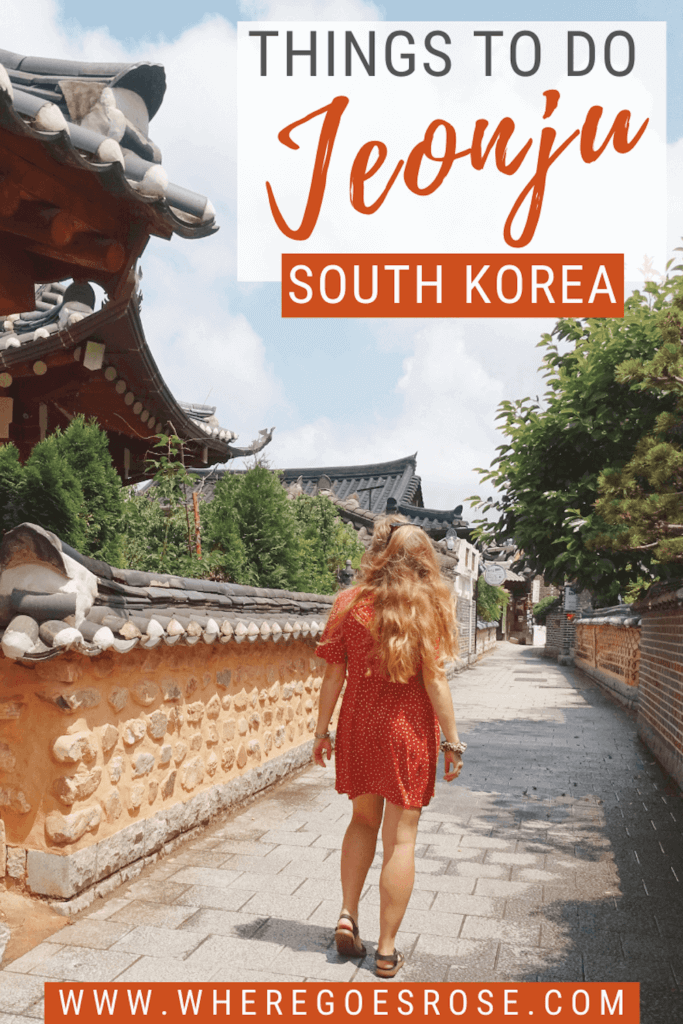
VISITING SOUTH KOREA? These are my trusted resources: Getting around by air – I use Skyscanner to find the best-value flights, using the ‘search by month’ tool to find the cheapest dates. You can also use the ‘to anywhere’ feature if you’re flexible on where you’re going. Buses – buses are comfy and efficient. It’s tricky for foreigners to book online so it’s best to turn up on the day. Trains – use Trip.com , partner of Korail (the official railway network of Korea) to book your seats in advance. The website accepts international payment options, unlike Korean rail websites. Click the three stripes in the top right corner then the flag to change it to English. Driving in Korea – use Rentalcars.com to compare car rentals. Hiring a car will be especially useful on Jeju Island. For hotels in Korea, I use Booking.com – they also have self-catering apartments. You can filter by review score and price to find the best-rated budget places. For hostels, I use Hostelworld . Browse South Korea tours and activities on GetYourGuide . I also check Viator and Klook in case they have a better price. For food tours with passionate local chefs and foodies, check out EatWith . Need travel insurance ? I use True Traveller (for UK & Europe residents) since it’s affordable but covers everything you’d need including various activities, valuables and pre-existing conditions. Unlike some companies, they insure you if you’re already travelling / don’t yet have your flight home booked. Get a quote . For travel insurance for other nationalities, I recommend Hey Mundo and for long-term digital nomad travellers, I suggest Safety Wing . Check out my resources page for more travel discounts and tips!
Rose is a solo traveller from the UK who has been on the road since 2015. She wants to show other women that solo travel isn't scary and doesn't have to be expensive! Rose has lived in Mexico, Canada and all over Asia, seeking out food, bubble tea and street art wherever she goes!
4 thoughts on “ Idyllic Things To Do in Jeonju, South Korea ”
I had honestly never heard of this place before, but it looks so nice and charming, and colorful. It seems like art is a big thing here which is awesome. So pretty
Jeonju looks like a fab place to wander around and get lost! I’ve always wanted to visit South Korea! xx
Is Jeonju cheaper compare to big cities like Seoul and Busan? In terms of their food pricing, transport, etc?
I think it’s a bit cheaper yes, although street food is more prevalent in big cities like Seoul so it’s more restaurant dining in Jeonju. In terms of Jeonju, you can get all around by foot so you don’t need any transport. Hope that helps!
Leave a Reply Cancel reply
Your email address will not be published. Required fields are marked *
You can see how this popup was set up in our step-by-step guide: https://wppopupmaker.com/guides/auto-opening-announcement-popups/

- Accomodation
- Attractions
- Food & Drink
- K-Entertainment Tours
- Korean Culture
- Shopping Destinations
- Transportation
- Travel Essentials
- Travel Tips
- Travel News in Korea
- Gyeonggi-do
- North Gyeongsang (Gyeongsangbuk-do)
- North Jeolla (Jeollabuk-do)
- South Chungcheong (Chungcheongnam-do)
- South Gyeongsang (Gyeongsangnam-do)
- South Jeolla (Jeollanam-do)

Things to Do in Jeonju: A Bucket List for Tourists and Locals Alike

9,805 total views, 2 views today

Visiting Jeonju should be a part of your South Korea travel itinerary as it’s a beautiful city with some amazing places to discover!
Jeonju in South Korea is known for its ancient downtown, which is referred to as the Hanok village. The term “hanok” refers to traditional Korean homes, which are often lovely. Jeonju should be on your list of things to see in South Korea.
Lonely Planet included Jeonju in its “Best Attractions in Asia” list in 2016, which is still proudly displayed on the city’s tourist map. Despite all of Jeonju’s activities, it is still off the Western tourist’s radar, resulting in fewer people.
While you’re in this charming city, here are some top things to do in Jeonju!
Table of Contents
Wandering Through the Hanok Village
Jeonju Hanok Village is the best place to start exploring the city. This village is home to over 800 traditional Korean homes, which have been beautifully preserved. You can explore the homes, stroll through the streets, and even stay overnight in a hanok if you want to experience traditional Korean culture .
The traditional streets of this village are not only jam-packed with breathtaking structures and ancient architecture, as one might expect from Korea’s culinary capital, but they’re also filled with street food vendors selling all types of delectable foods. Rent and wear a hanbok to stroll the lovely atmospheric streets eating South Korean street cuisine while enjoying the full experience.
View this post on Instagram A post shared by 오창한옥마을 (@hanok_village)
Visit the Gyeonggijeon Shrine
The Gyeonggijeon Shrine is located near the hanok village. Visiting Gyeonggjieon is a must if you want to visit Jeonju.
This Shrine was erected in the early years of the 15th century, shortly after King Taejo’s death, establishing the Joseon dynasty. For the same reason, several shrines had previously been erected in the country. They were all destroyed by the Japanese and subsequently rebuilt.
You may see the Royal Portrait Museum in addition to paying a visit to the Shrine. This is where you can view King Taejo’s portrait, among other things.
View this post on Instagram A post shared by Haoyee | Travel & Food 📷 (@haoyee_)
Shop at Nambu Market
The Nambu Market is a massive local market in Jeonju, where you can find everything from seafood to pajamas to souvenirs to kitchen goods. It is a great place to find unique items that you can’t find anywhere else. Although it is generally tranquil during the day, a Friday and Saturday night market in Jeonju fills with bustling vendors when the town comes alive at night.
View this post on Instagram A post shared by 포항남부시장 (@nambu.market)
Eat Bibimbap at its origin
Bibimbap is a Korean dish that is traditionally made with rice, vegetables, and meat. It is typically served in a stone bowl, which helps to keep the food warm. Bibimbap is one of Korea’s most popular dishes , and it is said to have originated in Jeonju.
Many restaurants in Jeonju serve Bibimbap, but you can also find it at street food stalls. Be sure to try the Jeonju version of this dish, which is made with beef and a variety of vegetables.
View this post on Instagram A post shared by 食いしん坊夫人 (@madam_foodie_foodie)
Hwangbangsan Nature Trail
The Hwangbangsan Scenic Walk is a popular excursion in the Jeonju area! This light nature path is ideal for both beginners and experts—and it’s also enjoyable whether you have or don’t have hiking gear. Be sure not to miss out on Jeonju’s natural beauty!
View this post on Instagram A post shared by Visit Jeonju (@visitjeonju_official)
Take a stroll through Jaman Mural Village
The Jaman Mural Village is located to the south of Jeonju’s traditional Hanok Village. From the Omokdae viewpoint, you can cross a bridge and reach this hamlet. The Jaman Mural Village is a must-see in Jeonju because it demonstrates the city’s artistic and trendy side.
The streets of Jeonju offer a number of beautiful murals painted by talented locals. Many individualistic cafés and bistros line these dark alleys. They frequently have outside terraces where you may relax and enjoy the views of Jeonju from above.
View this post on Instagram A post shared by 자만벽화마을 (@jaman.mural.village)
Visit Jeondong Catholic Church
This Catholic Church is one of the largest and considered to be one of the most beautiful churches in South Korea. It’s been used in many Korean shows as a backdrop, but it’s still utilized for daily mass in Jeonju in the mornings.
View this post on Instagram A post shared by けいこ (@ke.iko8454)
Take a rest in the Hanbyeokdang Pavilion
A lovely pavilion overlooking a little lake and the wooded hill next to it can be found at the edge of Jeonju city. It’s a nice place to sit back and soak up Korea’s stunning scenery. You might almost think you’re floating back to Korea hundreds of years ago in this area.
Visit Jeonju Hyanggyo
The perfectly preserved Confucian school, which is about 15 minutes on foot from the center of Hanok Village, is another notable feature of Jeonju. The buildings are preserved in their ancient appearance, and it’s easy to picture Confucian scholars strolling its corridors. Today, portions of the school are used to teach Confucian values to children in Jeonju.
This institution is well-known for its Gingko trees, which turn a brilliant golden in the fall. They were placed there to signify learning and education. The school’s ginkgo tree stands near the entrance and is almost 400 years old.
View this post on Instagram A post shared by 꾹 🔎 집중 탐구 시간 (@scottsangugii)
Take A Snap At PUNGNAM Gate
Pungnam Gate (Pungnammun) is one of the four gates that served as entry points to Jeonju’s ancient city. It is the only surviving door, though wood panels have covered it for some time.
Pungnam Gate, like many other attractions in Jeonju, was erected during the Joseon Dynasty. It was built in 1768.
Pungnammun isn’t a must-see attraction in Jeonju; rather, it’s a photo opportunity. It is most magnificent during the evening when it is illuminated. The top of the door is out of reach.
View this post on Instagram A post shared by David Carnevali (@davecarnevali)
Visit Donggosa Temple
The little but peaceful Donggosa Temple is a nice destination. The Dongosa Temple is a cultural heritage object designated as Jeonbuk No. 2 in the UNESCO World Heritage Centre’s inventory of cultural sites. A 50cm bamboo forest walkway connects you to Chimyeongjasan Martyrs’ Mountain, a famous night view location in Jeonju. At Donggosa Temple, go for a stroll and enjoy the sunset as well as the night view.
Jeonju is a city with many hidden treasures waiting to be discovered. From the delicious food to the ancient sights, there is something for everyone in Jeonju. Whether you’re a tourist or a local, be sure to add these items to your bucket list!
9,805 total views, 3 views today
Anyaa is a versatile writer with an insatiable wanderlust and a deep love for all things Korea. Her passion for exploration and storytelling shines through in her diverse articles covering every aspect of Korean travel. From the bustling streets of Seoul to the tranquil beauty of Jeju Island, her articles serve as a virtual passport for readers, providing them with insider tips, detailed itineraries, and practical advice to ensure an unforgettable journey through Korea.
Related Posts
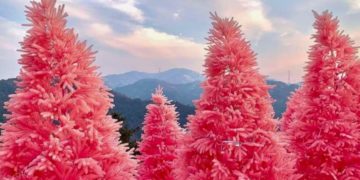
Pocheon Herb Island: A Guide to Korea’s Largest Botanical Garden
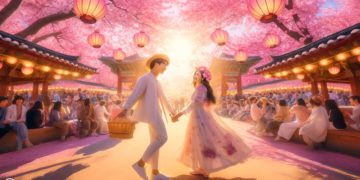
Popular Trend of “Hired Companions” for Cherry Blossom Dates in South Korea 2024

An Exclusive Journey Awaits You with “KOREA Invites U” Event 2024
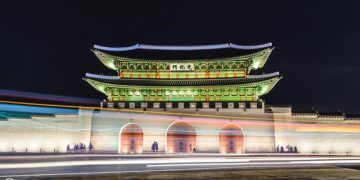
The Majestic Return of Gyeongbokgung Palace Night Tour 2024 – A Precious Jewel for Travelers!
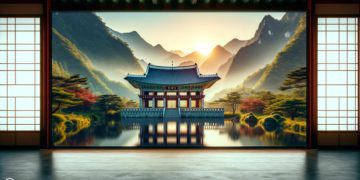
A COMPLETE Guide to English Temple Stay Program in South Korea 2024
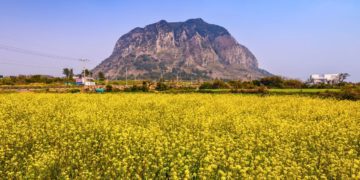
Golden Spring In Jeju: A Tour of Canola Flowers Paradise

Wellness Travel in South Korea - 5 Ways to Relax

TESSAN Germany France Travel Power Adapter

Lonely Planet Korea 12

Korean Snack Box Variety Pack

OSULLOC Lovely Tea Gift Box Set
More from our network.

- Medical Tourism
FREE NEWSLETTER
Copyright © 2024 About Us| Terms of Use |Privacy Policy| Cookie Policy| Contact : [email protected]
Login to your account below
Fill the forms bellow to register
Retrieve your password
Please enter your username or email address to reset your password.

8 Amazing Things to Do in Jeonju, South Korea
- Last Updated: February 5, 2024
From tasting the dish that was listed on Lonely Planet’s “Ultimate Eatlist” to trying out traditional attire and mixing with the locals, these are just some of the best things to do in Jeonju .

In Jeonju, a charming city in South Korea’s south-west, time slows down.
Only less than two hours by train from fast-paced Seoul, entering Jeonju is like being in a time warp.
Besides, the spiritual capital of the erstwhile Joseon dynasty, Jeonju has retained the old school traditions, architecture, and cuisine.
In spite of being knighted as ‘UNESCO City Of Gastronomy’ in 2012, Jeonju has stayed clear from tourism explosion.
READ MORE: Check out our brand new guide to the best things to do in Seoul !
Table of Contents
Set Off In Search Of Jeonju’s Best Bibimbap
Live in a traditional hanok home, embark on a photography walk of mural village, trace the forgotten history of jeonju, indulge in a diy gastro-tour, dine & wine in traditional korean style, shop to your heart’s content, try on a hanbok, key information, the best things to do in jeonju.
While many come here for day trips, Jeonju is a city that is hard to be understood in a few hours.
With a large number of things to indulge in, here’s our recommendation of 8 experiences to explore Jeonju’s magic.
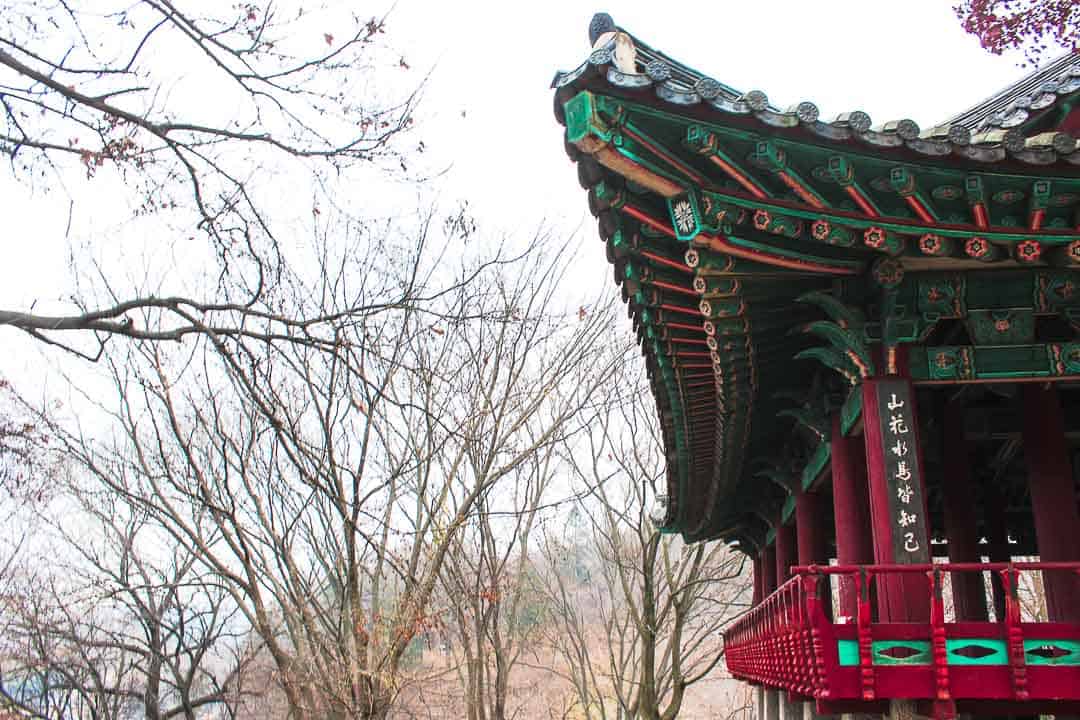
There are very few food experiences in the world like a ‘meal in a bowl’ in Jeonju, Korea.
Among the gazillion such bowls, the most celebrated is the ‘mixed rice’ bowl of bibimbap that was born in Korea’s Jeonju.
It is a bowl of rice mixed with shiitake mushrooms, beef, spinach, flavoured with spicy chilli paste, fermented soybean paste, and topped with fried egg.
Trust us, it tastes as stunning as it looks.
As a testament to the quality of the dish, Lonely Planet’s recently released ‘ Ultimate Eatlist’ book featured it as the world’s 8th best eating experience.
Almost every restaurant and stall in town have their take on the dish.
Finding your personal favorite is an adventure only Jeonju has on offer.
We recommend the hot pot version at Hanguk-jip, one of the oldest serving institutions.
If you find yourself in Jeonju in October, don’t miss the bibimbap festival that celebrates not just the dish but also other specialties of the region.

14th-century traditional Korean homes, Hanoks , epitomise eco-friendly architecture in the modern era of high rise buildings.
Made entirely using natural materials, living inside a Hanok is a reminder of simplistic times.
Jeonju features one of the largest congregation of such houses, featuring close to 800 in a closely knit atmosphere.
Every single thing in Jeonju unravels around the Hanok village, the image you’ll remember Jeonju by.
The best way to surrender yourself to a Jeonju style of living is to spend a few nights inside one of these Hanoks.
Inside a typical Hanok, you will find a comfy futon bed, a Korean style ondol heating system, and absolutely no cluttered furniture.
A couple of nights in a Hanok is a great way to reconnect with the surroundings.
The Jeonju Hanok House is one of the most preferred properties located in the center of the village and it features lovely hosts.

Located on one of the small hilly pavilions above the Hanok village, the Jaman mural village is a photographer’s delight.
Once a poor hillside village, the introduction of murals on the walls has uplifted the village into a hub of Jeonju tourism.
It’s a delight to photograph the artsy walls more so with locals gathered here in their traditional attire.
Across the bridge from the village, the two pavilions of Omokdae and Imokdae will also keep the photographer in you occupied.
The pavilions are the finest vantage points in the city for a view of the Hanok village.
After satiating your hunger for photography, settle down at the only cafe available in the Mural Village and sip on traditional Korean tea.

As one of the centres of the Joseon dynasty that ruled over Korea between the 14th and 19th centuries, Jeonju is also an open museum on the rich history of the country.
The Gyeonggijeon shrine built in 1410 houses the portrait of the dynasty’s founder.
Rebuilt in the 1600s after being brought down during a war, the shrine also houses an ancient library.
This library contains unique artefacts and ancestral tablets of the Yi royal family alongside annals from the Joseon dynasty that was one of the few that survived the Japanese invasion.
Korea Tourism organises a guided tour of the shrine that will introduce you to a unique historical side of the city.
One can buy tickets at the counter.
After visiting the shrine, cross the road over to the Jeondong Catholic cathedral, one of the first and oldest Romanesque buildings in the region.
Another survivor of the Japanese invasion, the church is equally stunning from the inside as it is from the outside.
From there on, walk 2 mins towards the Pungnammun gate, the only surviving of the four gates that surrounded the now-defunct castle.
At night, the light show at the gate is a delight to watch.
If you’re into history this shrine should be on your list of things to see in Jeonju!
Don’t miss out on our guide for the best hiking in South Korea!

Of all the things to do in Jeonju, this was our favourite.
Jeonju, the gastronomical capital of Korea is the apt place to unlock the foodie in you.
Dive into the myriad flavours of the country, from spicy to sweet, in the city where everyone is a gourmand.
The pick of the lot is the PNB Choco Pie, that debuted in Jeonju almost 70 years ago.
Filled with cream or strawberry jam, the pie has achieved cult status.
Be warned, a handful of variants of the “pie” is doled out all over Jeonju.
The long queues outside the original should guide you to the right one.
Follow up the pie with the savoury meatball skewer, another crowd favourite, found right outside PNB.
Variants with octopus and shrimp are equally delightful.
Another must-try street food item is Hotteok, Korean sweet pancake, crispy on the outside and filled with sugar syrup.
In the mornings, head to the ‘Jeonju bread cafe’ to taste the handmade bread made of bibimbap ingredients like the sweet red bean bread and wash it down with a cuppa coffee.
If you happen to be in Jeonju on a Friday evening, the traditional Nambu market is the only place to be.
With over a hundred colourful food stalls in a festive atmosphere, you’ll leave with your belly full and satisfied.
This city has great food culture so plan diligently where you want to eat as there are many fantastic places to visit in Jeonju.

The Koreans love their makgeolli, a spirit made of fermented rice.
One of the most exciting things to do in Jeonju is the experience of its ‘ makgeolli town’, a bar strip that specialises in the drink.
These taverns are like a Korean version of tapas.
You can order a brass kettle of rice wine for the table and the accompanied food is brought alongside.
For each kettle you get, expect a spread of 20+ dishes, each brimming with flavour.
At Chunnyunnuri Bom, a makgeolli town run by the senior citizen club, each dish is packed with a flavourful punch.
Along with banchan, large ginseng soup bowls, grilled fish, stir-fried pork belly are some of the many dishes served.
The more kettles of wine you order, the dishes on the table grow with it.
Don’t worry about the hangover as Jeonju has the perfect cure for it – Kongnamul Gukbap.
It’s a bean sprout soup with rice that you’ll find in the streets in the morning.
On your list of what to do in Jeonju, visiting the makgeoli town is a Jeonju must see.

While shopping in Jeonju is incomparable to the atmospheric markets of Seoul, it carries a traditional charm along with the modern.
From world-renowned cosmetic products (a face mask is a must-buy!) to affordable clothing, South Korea is a shopping heaven.
In the century-old Nambu Traditional Market, find everything from silk scarves to dried fish.
Wake up early to catch the best of the market.
The second floor of the market features a Youth Mall, an open terrace brimming with third wave coffee shops and fashion boutiques.
Downtown Jeonju that hosts the popular international film festival is a great place to shop for luxury brands.
Your best buy would be the face masks from Innisfree. It’s one of the more popular Jeonju tourist attractions – you can’t travel to South Korea without buying some skincare!

If you’ve already explored Seoul, you’d have noticed locals and tourists walking around in colourful traditional hanboks .
Jeonju is a more traditional region to try out some hanboks.
Much like the locals, rent one at a local store and feel like a Korean.
While this may seem like an incredibly touristy thing at first, it is what the locals do too.
You can rent a hanbok for around 5000 won (6 AUD) for 2 hours and most stores will help you slip into the attire.
The traditional hanboks are available both for men and women, usually in a complementary pairing.
Choose from either a garish ceremonial dress or a plain everyday dress and click photographs that you’ll remember.
With almost every second person wearing a hanbok, you’ll not be the odd one.
If you wish to learn more about Jeonju attractions, book a full-day guided tour with Klook .

- Jeonju is accessible from Seoul via a KTX train ride of about 1.5 hours. One can also get to Jeonju by bus from the Seoul bus station, in about 2 hours.
- We recommend spending 2 nights in Jeonju, preferably over a Friday-Saturday, to make the most of the city.
- Add an additional day if you’ve time on your hands to visit the unique Red Ginseng Spa in Jinan county.
Given the sheer number of fun and unique things to do in Jeonju, it deserves to be on every traveler’s itinerary to South Korea. Chances are you’ll meet the real Korea in this elegant, charming, and forgotten city.
We skipped the crowded Cherry Season for a more local experience during the Winters in South Korea.
DISCLAIMER: Some of the links in this article are affiliate links, which means if you book accommodation, tours or buy a product, we will receive a small commission at no extra cost to you. These commissions help us keep creating more free travel content to help people plan their holidays and adventures. We only recommend the best accommodations, tours and products that ourselves or our fantastic editorial team have personally experienced, and regularly review these. Thanks for your support, kind friend!
Alesha and Jarryd
Hi, We’re Alesha and Jarryd!

We’ve been traveling the world together since 2008, searching for the planet’s best destinations and adventures.
Love Travel?
Sign up for our free weekly newsletter for the best travel tips, ideas and deals!
We respect your privacy. Unsubscribe at any time.
READ MORE...
23 Epic Things to Do in SEOUL, South Korea (2024 Edition)
The perfect 3 days in seoul itinerary (2024 guide), life experiences while wwoofing in south korea, related posts, 5 most scenic hiking spots in south korea, 1 thought on “8 amazing things to do in jeonju, south korea”.
One of my dream destinations is South Korea. One thing is for sure when I get the chance to visit this place is to drop by at the Nambu Market. One of my goal is to visit South Korea this year. 🙂
Leave a comment Cancel reply
Save my name, email, and website in this browser for the next time I comment.

Jeonju Travel Guide: Top Things to Do, See & Eat in Jeonju, Korea
Ready to dive into a city where the past and present dance in harmony? Welcome to Jeonju, South Korea’s hidden gem! Nestled in the heart of the Jeolla Province. This city is a vibrant tapestry of traditional Hanok houses, cutting-edge art galleries, and culinary delights that will have you coming back for seconds (or thirds!).
Jeonju isn’t just a destination; it’s an experience, offering a deep dive into Korea’s rich heritage, bustling modern life, and, let’s not forget, the birthplace of bibimbap. Whether you’re strolling through the Jeonju Hanok Village, catching a film at the Jeonju International Film Festival, or savoring street food that bursts with flavor, Jeonju promises a journey that’s as flavorful as it is unforgettable. Let’s unpack what makes Jeonju a must-visit for anyone seeking the soul of Korea.
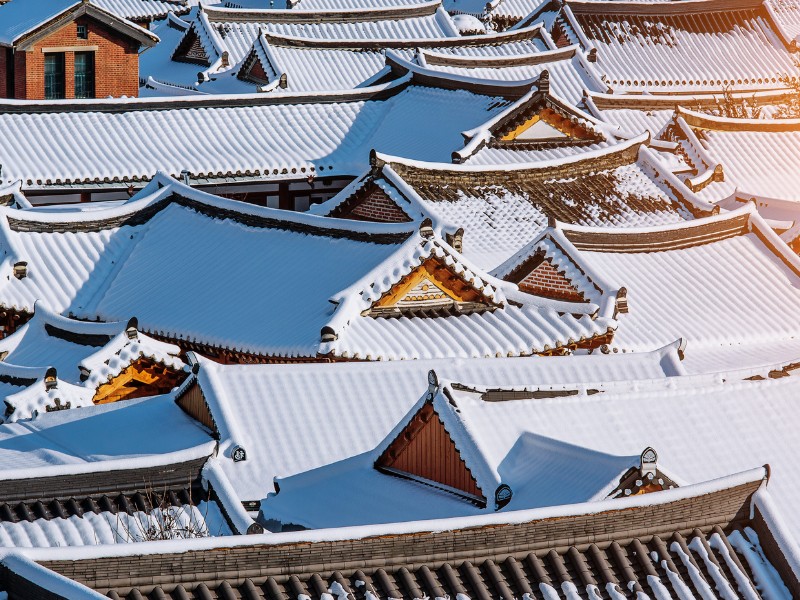
A Step Back in Time: Jeonju Hanok Village
Tradition Lives Here : With over 800 traditional Korean houses, the Jeonju Hanok Village is where history breathes and thrives. Wander the cobblestone streets, sip on traditional teas, and maybe even spend the night in a Hanok to fully immerse yourself in Korea’s architectural beauty.
Culinary Capital: The Flavors of Jeonju
A Foodie’s Paradise : Dubbed Korea’s culinary capital, Jeonju takes your taste buds on an adventure with its traditional dishes and street food. From the famous Jeonju bibimbap to savory bean sprout soup and mouth-watering street snacks, every meal is a celebration of Jeolla Province’s rich agricultural heritage.
Art and Soul: Jeonju’s Creative Pulse
Where Art Meets Heart : Jeonju’s vibrant arts scene is on full display in its galleries, street art, and the annual International Film Festival. The city’s commitment to preserving traditional crafts, such as Hanji (Korean paper) making, adds another layer to its cultural tapestry.
Green Escapes: Nature in the City
Urban Oasis : Amidst its bustling streets, Jeonju offers serene escapes like the Jeonju Zoo and Deokjin Park. The latter, with its lotus pond that blooms vibrantly in summer, provides a peaceful counterpoint to the city’s lively atmosphere.
So, grab your camera, bring your appetite, and let Jeonju take you on a journey through the heart of Korea.
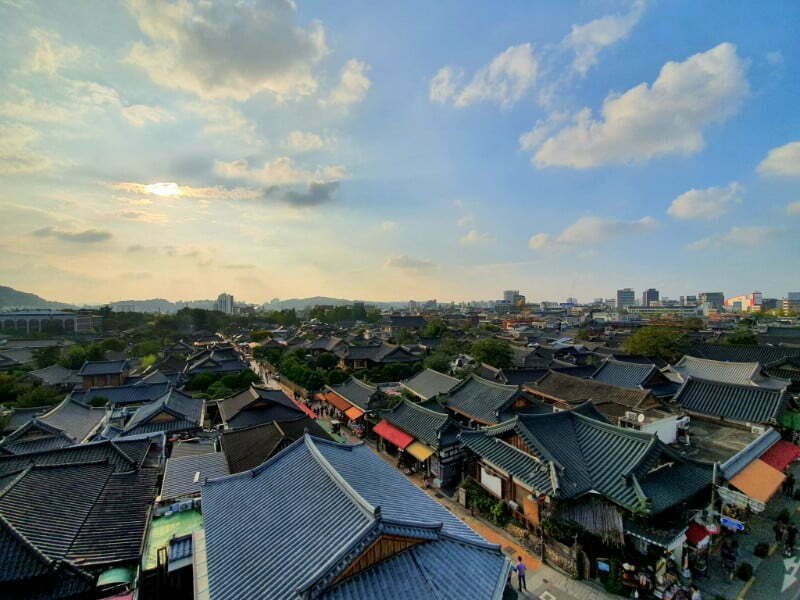
Jeonju City Guide: A Brief History Of Jeonju, South Korea
Ready to time travel? Strap in because Jeonju, nestled in the heart of South Korea, is not just a city; it’s a living museum where every alley, building, and dish tells a tale. From its roots as a royal city to its evolution into a cultural powerhouse, Jeonju’s history is as rich and flavorful as its famed cuisine. Let’s peel back the layers of time and explore the historical journey that has shaped Jeonju into the vibrant city it is today.
The Birth of a Dynasty
A Royal Legacy : Jeonju holds a special place in Korean history as the birthplace of the Joseon Dynasty, one of Korea’s most renowned and influential dynasties. The city was home to the esteemed Yi family, from which the dynasty’s founder, King Taejo, hailed. This royal connection imbued Jeonju with a sense of prestige and cultural significance that still resonates through its streets today.
A Cultural Heartbeat
Preserving Tradition : Throughout the centuries, Jeonju has been a custodian of Korean culture, fiercely protecting and nurturing traditional arts, cuisine, and architecture. The city’s Hanok Village, with its beautifully preserved traditional houses, is a testament to Jeonju’s dedication to keeping history alive. It’s a place where the past isn’t just remembered; it’s experienced.
The Culinary Capital
A Feast Through Time : Jeonju’s reputation as Korea’s culinary capital isn’t new. For centuries, its fertile lands have provided a bounty of ingredients that local chefs have skillfully transformed into dishes fit for royalty. The invention of bibimbap, one of Korea’s most beloved dishes, is proudly claimed by Jeonju, showcasing the city’s enduring influence on Korean cuisine.
Modern Innovations
Blending Old and New : While deeply rooted in tradition, Jeonju has never shied away from innovation. The city has embraced modernity, integrating contemporary arts, technology, and sustainability initiatives with its historical heritage. This fusion makes Jeonju a unique destination where the past and future coexist harmoniously.
Jeonju Today
A Living History : Today, Jeonju stands as a beacon of cultural pride, drawing visitors from around the world eager to experience its rich history, vibrant arts scene, and unparalleled cuisine. The city serves as a reminder of the importance of preserving cultural identity while embracing progress and change.
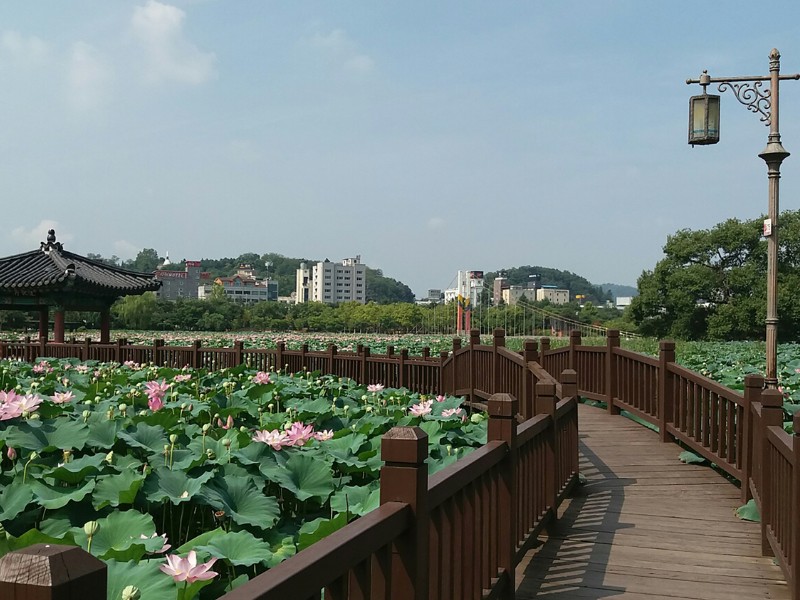
Jeonju Top Attractions and Best Places to Visit in Korea
Korea may be a small country, but Jeonju is a bit out of the way. It takes 2-3 hours by bus, and the fastest train will get you here in one hour 40 minutes. If you persevere, though, you’ll find a city bursting with culture .
Start with its traditional folk village within city limits, then move on to its museums. Stop for a meal of local bibimbap, then explore its Christian heritage. During your time in Jeonju, you won’t be short of things to do .
Start your time in North Jeolla’s largest city by checking out the Jeonju Hanok Village . In actuality, this isn’t a ‘village’, per se – it is a neighbourhood of traditional houses. They stand in stark contrast to the towers that popped up like mushrooms over the past generation.
With over 800 houses, there is no shortage of buildings to explore and photograph . With signature roofs, separate rooms for men and women, and heated floors, you’ll be fascinated how different the lives of Koreans used to be.
Do you want to check out a historical point of interest in the Jeonju area? Make room in your schedule for the Gyeonggijeon Shrine . It holds the portrait of King Taejo, and mortuary tablets for him and his wife.
More Attractions
Around since the 15th century, it has seen many wars since its founding. A battle fought during The Imjin War led to the partial destruction of this structure. Since then, it has been renovated periodically to keep it in its original form. In addition to the relics mentioned above, carriages used to transport dignitaries are also on display.
Keep exploring the legacy of Korea’s monarchy by including the Royal Portrait Museum in your sightseeing. Only open since 2010, it is a recent addition to Jeonju. Here, you’ll find the painted likeness of numerous Korean monarchs, including King Sejong, King Yeongjo, and King Cheoljong.
Additional exhibits relay royal history and show off artifacts that include incense burners and objects related to rituals. Allow at least an hour and a half to fully appreciate everything this museum has to offer.
While in the Jeonju area, make time to check out two historically significant places, Omokdae and Imokdae . Located atop a steep hill, Omokdae is where Yi Seong-gye (later King Taejo) celebrated his victory over the Japanese. Imokdae is a short distance away at the base of Seungamsan Mountain. It was here where King Taejo’s great-great-great-grandfather Mokjo engaged in war games with his friends.
Mokjo was banished from Jeonju by rivals – five generations later, King Taejo believed the gods preordained his rise to power. This accomplishment and Taejo’s victory over the Japanese are honoured with an attractive pavilion. The views from here are spectacular, especially in the fall, so don’t forget your camera at your accommodation.
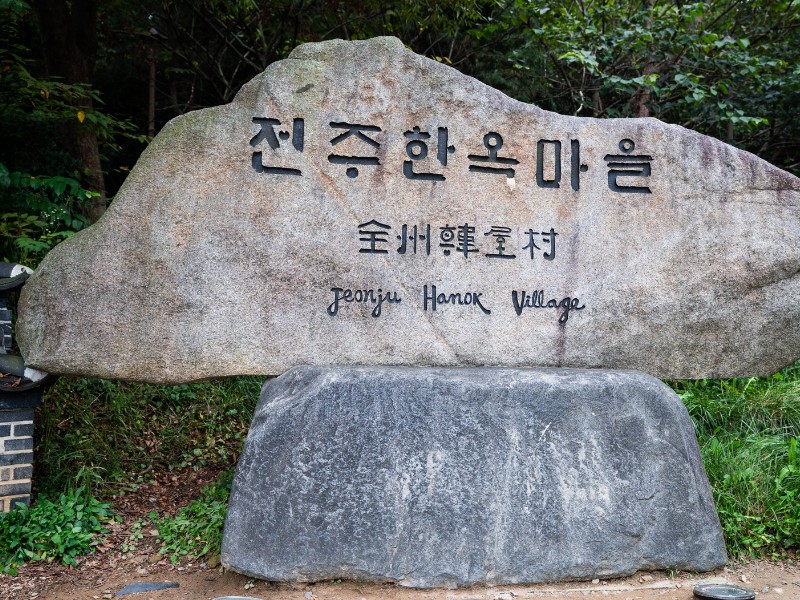
Other Cultural Attractions: Trip to Jeonju, South Korea
The Jeonju area has long been a stronghold for Christianity in Korea. As such, it should come as no surprise to find a church as attractive as the Jeondong Catholic Cathedral . Religious authorities built this 100-year-old cathedral in honour of missionaries who martyred themselves during the Joseon Dynasty.
Built in the Romanesque style, this church greatly resembles Seoul’s Myeongdong Cathedral. There’s a reason for this – Father Poinel, its priest, took it upon himself to design the church in Jeonju. One final note – its bricks were sourced from the Jeonjueupseong Fortress after the Japanese dismantled it.
Get in touch with local street life by visiting the Nambu Traditional Market . Founded in 1905, it boasts a mix of produce, housewares, and other goods. Entrepreneurs from the current generation have rejuvenated its stalls, offering goods commonly found in Seoul’s Hongdae. Food fans will want to drop by Friday or Saturday evening, as additional stalls offer treats from nokdujeon to bibimbap.
Other Attractions
Are you looking for an attraction that pairs The Office with Jeonju? Set aside enough space in your schedule for a visit to the Hanji Museum . This institution exists to extol the virtues of Korean-made paper, or Hanji. During your time here, you’ll get to feel 100 different kinds of Hanji and see the machinery that creates it. On top of this, you’ll get to make sheets of Hanji – exciting!
Take a second to chill out and relax during your visit to Jeonju by stopping by Deokjin Park . Situated around a pond that has been relevant since the Goryeo Dynasty, it is a favourite among locals. Famous for its water irises and lotus blossoms, it is the place to be on a beautiful day.
Park officials hold fountain shows regularly between April and October, and pedal boats are available for rent. Buy some food from a local supermarket or shop and enjoy an afternoon here – you’ll love it!
Top 20 Things To Do in Jeonju, Korea For Visitors
Here are the top 20 things to do in Jeonju:
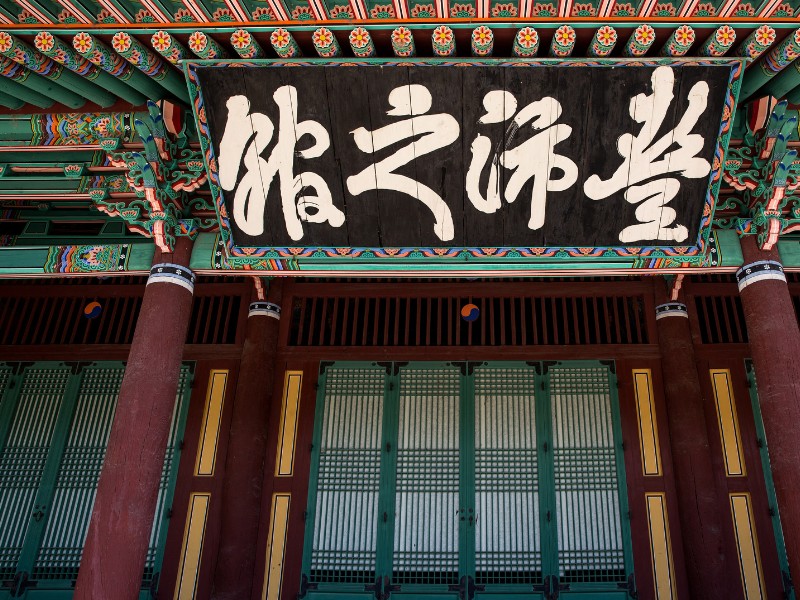
1. Explore Jeonju Hanok Village
Jeonju Hanok Village boasts over 800 traditional Korean houses, known as hanoks, where visitors can experience the beauty of Korean architecture. Strolling through the village, you’ll find traditional tea houses, artisan shops, and cultural museums. Many hanoks operate as guesthouses, offering a unique overnight stay. The village also hosts various cultural events and traditional performances throughout the year.
2. Taste Authentic Jeonju Bibimbap
Jeonju is famous for bibimbap, a delicious Korean dish consisting of rice, mixed vegetables, beef, egg, and spicy gochujang sauce. Numerous restaurants throughout the city serve their version of this iconic dish, each adding a unique twist. Trying bibimbap in Jeonju is a must-do for food lovers. Don’t forget to explore other local delicacies like kongnamul gukbap (bean sprout soup) and choco pies.
3. Visit Jeonjuhyanggyo Confucian School
Jeonjuhyanggyo Confucian School is a historical site that offers insights into Korea’s educational system during the Joseon Dynasty. The school features well-preserved classrooms and lecture halls where Confucian teachings were imparted. It’s a peaceful place for reflection, surrounded by ancient trees. The site often hosts traditional Korean music performances and cultural events.
4. Enjoy the View from Omokdae Pavilion
Omokdae Pavilion is located on a hilltop, offering stunning panoramic views of Jeonju Hanok Village and the city beyond. The pavilion is a historic site where King Taejo celebrated a victory with his generals. It’s an ideal spot for photography, especially during sunset. Visitors can enjoy a leisurely hike up to the pavilion, passing through scenic areas of the Hanok Village.
5. Experience Traditional Korean Crafts at Jeonju Traditional Culture Center
Jeonju Traditional Culture Center offers workshops where visitors can learn about and participate in making traditional Korean crafts such as hanji (Korean paper), pottery, and calligraphy. The center also provides hanbok (traditional Korean attire) rental services, allowing visitors to dress up and take beautiful photos around the Hanok Village. It’s a great way to immerse yourself in Korean culture. The center occasionally hosts traditional Korean performances and tea ceremonies.
6. Sample Local Street Food at Nambu Market
Nambu Market, established in the early 20th century, is a bustling marketplace that comes alive at night with its famous night market. Visitors can sample a wide array of street food, from Korean pancakes (jeon) and skewered meats to inventive modern snacks. The market also houses vendors selling clothing, accessories, and household goods. It’s a lively spot to experience the local food scene and shop for unique souvenirs.
7. Relax at Deokjin Park
Deokjin Park is known for its beautiful lotus pond, which blooms vibrantly in summer. The park features walking paths, traditional pavilions, and a fountain show. It’s a popular spot for families, couples, and anyone looking to enjoy nature within the city. Pedal boats are available for rent, offering a fun way to explore the pond.
8. Learn at the Jeonju National Museum
The Jeonju National Museum houses a rich collection of artifacts and exhibits related to the history and culture of the Jeolla region. Highlights include traditional Korean ceramics, calligraphy, and folk art. The museum’s architecture is itself a blend of traditional and modern styles. Special exhibitions and educational programs are held throughout the year.
9. Visit Gyeonggijeon Shrine
Gyeonggijeon Shrine was erected in 1410 to house the portrait of King Taejo, the founder of the Joseon Dynasty. The shrine complex includes historical buildings, a museum, and a serene garden. It’s a place of cultural and historical significance, offering a glimpse into the royal lineage of Korea. The shrine also serves as a picturesque backdrop for photos, especially in traditional Korean attire.
10. Walk Along Jeonju Cheongyeon River
The Jeonju Cheongyeon River, running through the city, offers beautiful walking paths lined with trees and sculptures. It’s a lovely area for a leisurely stroll, particularly in the evening when the bridges and walkways are illuminated. The river walk connects several of Jeonju’s attractions, making it a pleasant way to navigate the city. Along the way, visitors will find cafes and spots perfect for a restful break.
11. Take a Hanbok Photography Tour
Wearing hanbok and taking a photography tour around Jeonju Hanok Village is a popular activity among visitors. Several rental shops offer a wide range of hanboks, from traditional to contemporary designs. It’s a unique experience that allows you to step back in time and create memorable photographs. Many shops offer photography services, or you can explore and take selfies at your own pace.
12. Enjoy Jeonju’s Nightlife at Gaeksa
Gaeksa is considered the commercial and nightlife hub of Jeonju, featuring a wide array of bars, clubs, and restaurants. It’s a great place to experience the city’s modern side, enjoy live music, and socialize with locals and other travelers. The area stays lively into the early hours, offering everything from traditional Korean pubs (pojangmacha) to trendy cafes. Gaeksa’s vibrant atmosphere is a contrast to the traditional charm of the Hanok Village.
13. Discover the Jeonju Korean Traditional Wine Museum
The Jeonju Korean Traditional Wine Museum is dedicated to Korea’s rich history of traditional brewing and wine making. Visitors can learn about the processes involved in making various Korean wines and liquors, including makgeolli and soju. The museum offers tasting sessions and workshops where you can try your hand at brewing. It’s an insightful experience that combines education with pleasure.
14. Visit the Jeonju Zoo
The Jeonju Zoo, located in Jeonju World Cup Stadium Park, offers a family-friendly outing with a variety of animals from around the world. In addition to animal exhibits, the zoo features recreational facilities, including a children’s playground and picnic areas. The zoo is committed to conservation and education, providing a fun and informative experience for visitors. Seasonal events and animal feeding shows add to the zoo’s attractions.
15. Explore Jaman Mural Village
Jaman Mural Village is nestled on the hillside near Jeonju Hanok Village and is known for its vibrant street art and murals. The colorful artworks cover the walls of narrow alleys, turning the village into an open-air gallery. It’s a popular spot for photography and exploring local cafes and shops. The village’s artistic atmosphere and stunning views of Jeonju make it a must-visit.
16. Take in the Views from Jeonju World Cup Stadium
Jeonju World Cup Stadium, known for its unique design resembling a traditional Korean kite, offers tours that include access to the stadium’s facilities and panoramic views of the city from its upper levels. It was one of the venues for the 2002 FIFA World Cup. The stadium complex includes leisure facilities and a park, making it a great place for sports enthusiasts and families. The stadium’s architecture and significance in Korean football history are highlights for visitors.
17. Enjoy the Arts at Sori Arts Center of Jeolla
The Sori Arts Center of Jeolla is a premier venue for performing arts, hosting a variety of shows ranging from traditional Korean music and dance to modern theatre and concerts. The center’s architecture is modern and impressive, adding to the cultural experience. Visitors can enjoy high-quality performances and gain insight into Korea’s vibrant arts scene. The center also hosts international arts festivals and workshops.
18. Relax at Palbok Art Factory
Palbok Art Factory is a cultural complex set in a converted factory, offering galleries, art studios, and performance spaces. It’s a hub for contemporary art and culture, showcasing the work of local and international artists. The complex includes cafes and casual eateries, making it a perfect place to relax and enjoy the creative atmosphere. Palbok Art Factory regularly hosts art exhibitions, workshops, and live music events, contributing to Jeonju’s modern cultural landscape.
19. Hike in Moak Mountain
Moak Mountain offers scenic hiking trails that lead to Buddhist temples, serene forests, and panoramic viewpoints overlooking Jeonju. The mountain is a popular spot for outdoor enthusiasts and provides a peaceful escape from the city. The trails are suitable for hikers of all levels, with the Moaksan Provincial Park offering well-maintained paths. Highlights include Gujeolcho Park, known for its beautiful wild chrysanthemums, and the historic Geumsansa Temple.
20. Experience Jeonju’s Tea Culture at Traditional Tea Houses
Jeonju’s traditional tea houses offer a serene environment to experience Korea’s tea culture. Visitors can taste a variety of Korean teas, including green tea, herbal teas, and fruit teas, accompanied by traditional Korean sweets. Many tea houses are located in Jeonju Hanok Village, providing a traditional setting that enhances the tea experience. It’s a delightful way to unwind and immerse yourself in Korean tradition.
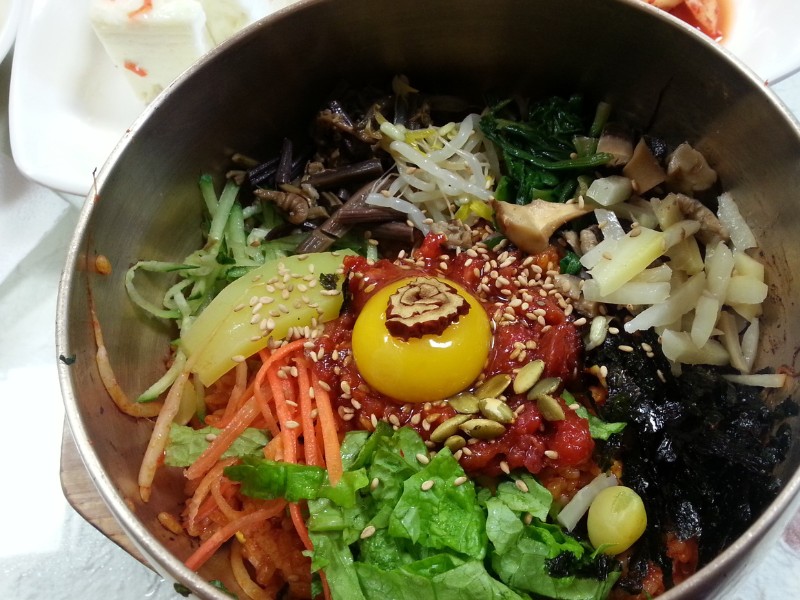
What To Eat and Drink at Restaurants in Jeonju, South Korea
Whether you’re a foodie on the hunt for authentic Korean cuisine or someone looking to taste the heart of Korea, Jeonju has you covered. Let’s dive into the must-eat dishes and must-drink beverages that make Jeonju a gastronomic paradise.
Traditional Delights
1. Jeonju Bibimbap : Starting with the obvious, no visit to Jeonju is complete without trying its world-renowned bibimbap. This dish features a colorful array of vegetables, beef, a fried egg, and gochujang (chili pepper paste) served over rice. It’s not just food; it’s art in a bowl, with each ingredient representing different health benefits.
2. Kongnamul Gukbap : This comforting bean sprout soup with rice is a Jeonju specialty known for its savory, satisfying taste and purported hangover-curing properties. It’s a simple dish with profound flavors, showcasing the city’s love for wholesome, nourishing meals.
Street Food and Snacks
3. PNB Choco Pie : A visit to Jeonju wouldn’t be complete without sampling the original Choco Pie from PNB Bakery. Unlike the mass-produced versions, these treats are freshly made, with fluffy cake and a marshmallow center, all coated in chocolate.
4. Jeonju Hotteok : This sweet, filled pancake is a popular street food snack in Korea, but Jeonju’s version is especially famous. Filled with a mixture of brown sugar, nuts, and cinnamon, it’s a warm, gooey delight that’s perfect for snacking while exploring the Hanok Village.
Unique Sips
5. Moju : This traditional Jeonju beverage is made from makgeolli (rice wine) infused with medicinal herbs and spices. It’s milder and sweeter than regular makgeolli, making it an excellent introduction to Korean traditional alcohol.
6. Jeonju Makgeolli : Speaking of makgeolli, Jeonju’s version of this milky, slightly fizzy rice wine is a must-try. Often served in traditional Korean restaurants alongside a plethora of side dishes, it’s a communal drink that encourages sharing and conversation.
Culinary Experiences
7. Hanjeongsik : For those looking to experience the full spectrum of Korean cuisine, a Jeonju Hanjeongsik is the way to go. This traditional Korean set meal includes a wide array of side dishes, grilled meats, soups, and stews, showcasing the diversity and richness of Korean culinary traditions.
8. Gamaek : A portmanteau of “ga” from “gagae” (store) and “maek” from “maekju” (beer), Gamaek culture involves enjoying cheap beer and snacks at small convenience stores. It’s a unique experience that offers a glimpse into the everyday life of locals.
Sweet Treats
9. Patbingsu : For dessert, don’t miss out on patbingsu, a shaved ice dessert that’s particularly refreshing during the hot summer months. Jeonju’s version often includes a generous topping of sweet red bean paste, mochi, and condensed milk.
10. Yakgwa : This traditional Korean sweet, made from honey, sesame oil, and wheat flour, is deep-fried to perfection. It’s a sticky, sweet confection that’s often enjoyed with tea.
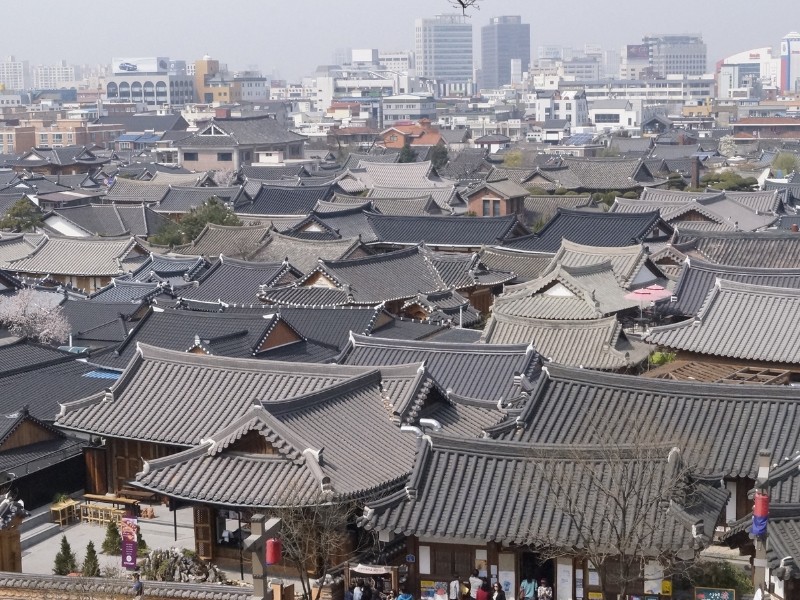
Tours For Visitors To Jeonju, South Korea
Here’s a curated list of tours for visitors to Jeonju, ensuring you get the most out of this vibrant city.
1. Jeonju Hanok Village Walking Tour
Delve into the heart of Korean tradition with a guided walking tour of the Jeonju Hanok Village. Learn about the architectural significance of over 800 traditional Korean houses and discover hidden gems, including artisan shops, traditional tea houses, and beautiful courtyards.
2. Korean Food Cooking Class
Immerse yourself in Korea’s renowned culinary culture with a cooking class right in Jeonju, the birthplace of bibimbap. Local chefs teach you how to prepare traditional Korean dishes, offering insights into the ingredients and techniques that make Korean cuisine uniquely delicious.
3. Jeonju Cultural Heritage Tour
Explore Jeonju’s rich history with a tour focusing on its cultural heritage sites, including Gyeonggijeon Shrine, Jeondong Catholic Church, and the Jeonju Traditional Wine Museum. This tour offers a deep dive into the city’s storied past and its role in the Joseon Dynasty.
4. Jeonju Craft and Artisans Workshop Tour
Get hands-on with Jeonju’s traditional crafts by participating in workshops led by local artisans. From learning the art of making Hanji (Korean paper) to trying your hand at traditional pottery or Korean calligraphy, this tour connects you with the city’s artistic traditions.
5. Jeonju Night Market and Street Food Tour
Experience the vibrant atmosphere of Jeonju’s night markets on a guided street food tour. Sample local delicacies, from Jeonju bibimbap to street snacks like hotteok (sweet pancakes), while soaking in the lively energy of the city after dark.
6. Jeonju Film Street Tour
For film enthusiasts, a tour of the Jeonju Film Street and the Jeonju Cinema Complex offers insights into the city’s burgeoning film scene and its annual International Film Festival. Discover indie film theaters, learn about Korean cinema, and maybe even catch a screening.
7. Jeonju Traditional Alcohol Tasting Tour
Delve into the world of traditional Korean alcohol with a tasting tour in Jeonju. Visit local breweries to sample makgeolli (rice wine) and other traditional beverages, learning about the fermentation process and the role of alcohol in Korean culture.
8. Jeonju Calligraphy and Painting Experience
Engage with Korea’s artistic side by participating in a traditional calligraphy or painting class. Under the guidance of skilled artists, create your own piece of art to take home as a unique souvenir of your time in Jeonju.
9. Jeonju Eco-Tour: Riverside and Nature Walk
For those seeking tranquility, a guided eco-tour along the Jeonjucheon River offers a chance to connect with nature. Discover local flora and fauna, learn about the city’s efforts in preserving natural habitats, and enjoy the peaceful scenery.
10. Jeonju Virtual Reality (VR) Experience
Step into the future with a tour that combines Jeonju’s historical sites with cutting-edge VR technology. This unique experience allows you to see the city’s landmarks in different historical periods, offering a fascinating glimpse into the past through modern means.
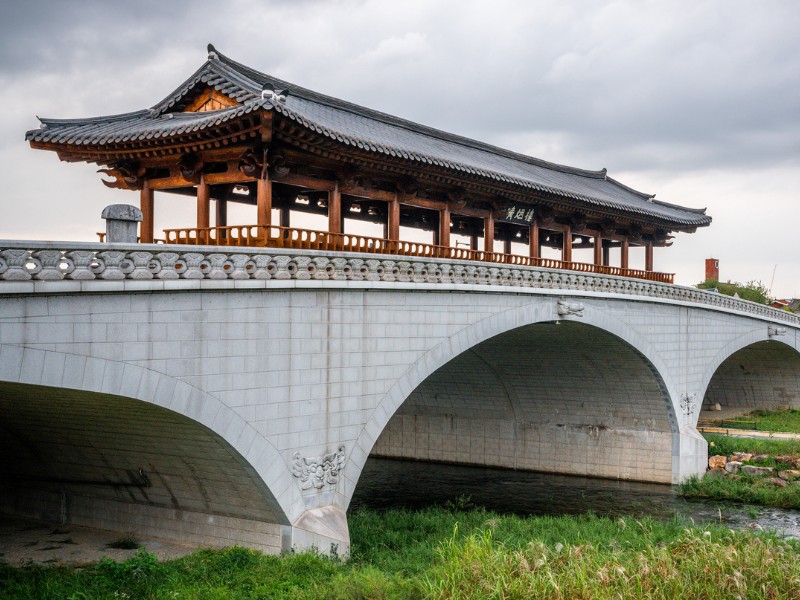
Jeonju Accommodations Guide: Hotels, Guesthouses and Hostels
Here’s a comprehensive travel guide to where to stay in Jeonju, ensuring a comfortable and memorable visit.
Traditional Hanok Stays
1. Rakkojae Jeonju : Experience the elegance of traditional Korean living in this beautifully restored Hanok. Rakkojae offers a serene atmosphere, with rooms that open onto a lovely courtyard, complete with ondol (floor heating), futon beds, and classic wooden architecture.
2. Jeonju Hanok Living Experience Center : Ideal for those looking to immerse themselves in the Hanok lifestyle, this center provides traditional accommodations along with opportunities to learn about Korean culture through various workshops and activities.
3. Jeonju Hanok Hotel : Combining the beauty of traditional Korean architecture with modern conveniences, the Jeonju Hanok Hotel offers a comfortable stay in the heart of the Hanok Village. It’s a perfect blend of old and new, providing an authentic experience without sacrificing comfort.
Modern Hotels
4. Lahan Hotel Jeonju : Located close to the Hanok Village, Lahan Hotel offers contemporary luxury with spacious rooms, an in-house restaurant serving local and international cuisine, and amenities such as a fitness center and sauna.
5. Ramada Jeonju : Situated in downtown Jeonju, the Ramada offers easy access to the city’s attractions. The hotel features modern rooms, a variety of dining options, and meeting facilities, making it suitable for both leisure and business travelers.
Budget-Friendly Hostels and Guesthouses
6. Jeonju Guesthouse Gosadong : For travelers on a budget, Gosadong offers a cozy and friendly atmosphere with both dormitory and private room options. It’s a great place to meet fellow travelers and get insider tips on exploring Jeonju.
7. Pungnam Tourist Hotel : Offering affordable accommodations without compromising on quality, Pungnam Tourist Hotel provides clean and comfortable rooms, conveniently located near the Jeonju Bus Terminal and key attractions.
Boutique and Specialty Accommodations
8. Yihua Hotel Jeonju : This boutique hotel stands out for its unique design, blending traditional Korean elements with contemporary flair. Each room is uniquely decorated, offering guests a stylish and intimate stay experience.
9. Dukmanjae : A traditional Hanok that’s been thoughtfully converted into a boutique guesthouse, Dukmanjae offers an intimate glimpse into Korea’s past, with beautifully preserved rooms and a tranquil courtyard.
Family-Friendly Options
10. Benikea Jeonju Hansung Hotel : Catering to families and larger groups, the Hansung Hotel provides spacious family rooms, along with kid-friendly amenities and easy access to Jeonju’s main attractions, ensuring a comfortable stay for guests of all ages.
Eco-Friendly and Sustainable Stays
11. Jeonju Eco City Hotel : For the environmentally conscious traveler, the Eco City Hotel focuses on sustainable practices without sacrificing comfort. It’s a great choice for those looking to minimize their carbon footprint while enjoying the delights of Jeonju.
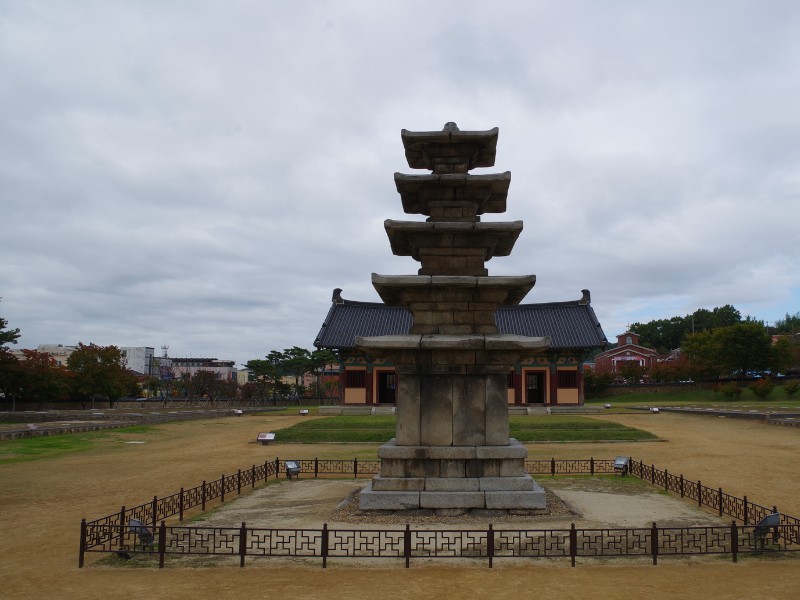
Day Trips From Jeonju, South Korea
Here’s a curated list of day trips from Jeonju, promising diverse experiences that enrich your South Korean journey.
1. Gwanghalluwon Garden and Gwangju
Just a short drive from Jeonju, Gwanghalluwon Garden in Namwon is a picturesque traditional Korean garden, renowned for its beautiful pavilions and bridges. Continue to Gwangju, a city with a rich history of art and democracy, where you can visit the May 18th National Cemetery and the Gwangju National Museum. Gwangju’s bustling food scene, especially around the Yangdong Market, offers a taste of local delicacies. The city is also a hub for contemporary art, with numerous galleries and the Gwangju Biennale exhibition.
2. Maisan Provincial Park
An hour from Jeonju lies Maisan Provincial Park, famous for its unique twin peaks that rise dramatically from the flat surroundings. The park is home to Tapsa Temple, known for its intriguing stone pagodas built by a single monk. Hiking trails offer varying levels of difficulty, providing stunning views of the region. Maisan is especially beautiful during the spring when cherry blossoms and azaleas are in full bloom.
3. Naejangsan National Park
Known for its spectacular autumn colors, Naejangsan National Park is a must-visit for nature lovers, about an hour’s drive from Jeonju. The park features scenic hiking trails, waterfalls, and the historic Naejangsa Temple. The Naejangsan Cable Car offers a less strenuous way to enjoy the park’s panoramic mountain views. Visit in fall to see the mountainside ablaze in vibrant reds and oranges.
4. Daedunsan Provincial Park
Daedunsan is renowned for its dramatic landscapes, featuring rugged peaks and deep valleys. The park’s suspension bridge, Daedunsan Cloud Bridge, offers thrilling views of the surrounding area. A cable car can take you partway up the mountain, making the stunning scenery accessible to all visitors. Daedunsan is another fantastic spot for autumn foliage, making it a popular destination for photographers and hikers alike.
5. Boseong Green Tea Fields
Boseong, a couple of hours from Jeonju, is famous for its vast green tea fields that carpet the rolling hills. Visitors can walk among the tea plantations, learn about the tea-making process, and sample fresh green tea. The area also offers green tea-themed spa treatments for a unique relaxation experience. The annual Boseong Green Tea Festival celebrates the region’s tea culture with various events and activities.
A trip to Buyeo immerses you in the history of the Baekje Kingdom, with ruins and artifacts that tell the story of this ancient civilization. The Buyeo National Museum and the Baekje Cultural Land offer insights into the cultural heritage of the region. Visit the Busosanseong Fortress for a glimpse into the military history of the Baekje Kingdom. The nearby Lotus Park is a serene spot, especially beautiful when the lotus flowers bloom in summer.
7. Muju Deogyusan Resort
For those interested in winter sports, Muju Deogyusan Resort offers some of the best skiing and snowboarding in South Korea, about two hours from Jeonju. The resort is located within Deogyusan National Park, offering stunning natural scenery year-round. In the off-season, the area is popular for hiking, with well-marked trails leading through the mountains. The resort also features hot springs, perfect for relaxing after a day on the slopes or trails.
8. Suncheon
Suncheon is known for its ecotourism attractions, including the Suncheon Bay Wetland Reserve, where visitors can observe diverse ecosystems and bird species. The Suncheon Bay National Garden is another must-visit, showcasing beautifully themed gardens from around the world. The nearby Suncheon Open Film Set offers a fun glimpse into Korea’s cinematic history, with sets from various movies and dramas. Suncheon’s culinary scene, especially its seafood, provides a tasty end to the day.
9. Haeinsa Temple
Located in Gayasan National Park, Haeinsa Temple is one of the Three Jewel Temples of Korea and a UNESCO World Heritage site. It houses the Tripitaka Koreana, the most complete collection of Buddhist scriptures engraved on over 80,000 wooden blocks. The temple’s tranquil setting amidst the mountains offers a peaceful retreat. Guided tours are available, providing insights into the temple’s history and significance.
10. Jinan and Tapsa Temple
Jinan is home to Tapsa Temple, unique for its hundreds of stone pagodas built by a single monk, which are nestled within the scenic Maisan Mountain. The surrounding area, with its mystical rock formations and tranquil atmosphere, provides a backdrop for reflection and exploration. Jinan also hosts the annual Red Ginseng Festival, celebrating one of the region’s most famous products. The nearby Jucheongang River offers picturesque walking paths and recreational areas.
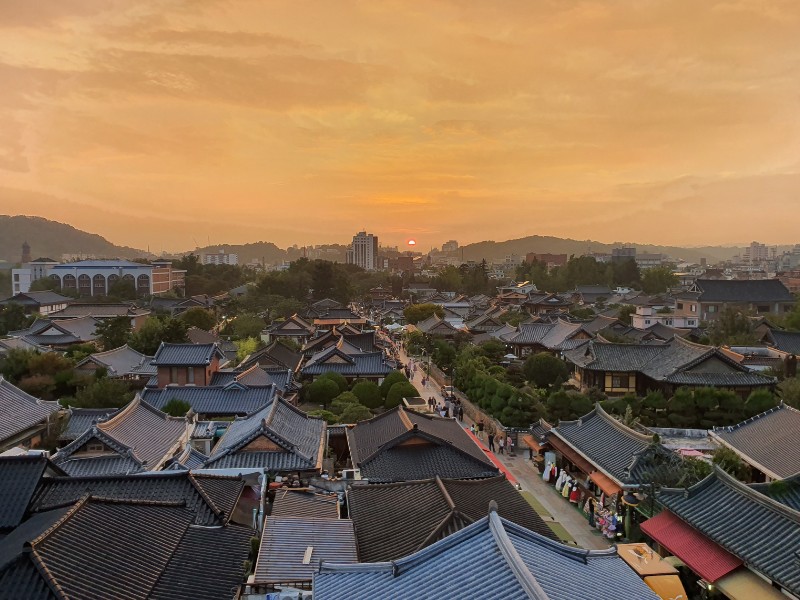
Jeonju Transportation Guide
Here’s a complete travel guide to getting around Jeonju and beyond.
Getting to Jeonju
By Air : The closest major airport to Jeonju is Incheon International Airport, with many travelers opting to fly into Seoul and then travel to Jeonju by bus or train. Another nearby option is the Gunsan Airport, offering domestic flights and located about an hour away from Jeonju.
By Train : Jeonju is well-connected by Korea’s efficient train network. The KTX (Korea Train eXpress) operates between Jeonju and major cities like Seoul, making the journey fast and convenient. The Jeonju Train Station is located just outside the city center, with buses and taxis readily available for onward travel.
By Bus : Intercity buses run frequently to Jeonju from Seoul and other major cities. The Jeonju Intercity Bus Terminal is centrally located and serves as a hub for travelers entering the city. Buses offer a cost-effective option and provide scenic views of the countryside.
Getting Around Jeonju
On Foot : The historic Hanok Village and surrounding areas are best explored on foot. Many of Jeonju’s attractions, including traditional tea houses, artisan shops, and street food vendors, are located within walking distance of each other, making walking both enjoyable and practical.
By Bicycle : Jeonju is a bike-friendly city, with several bicycle rental shops available, especially near tourist areas. Biking is an excellent way to cover more ground within the city and enjoy its parks and riverside paths.
By Taxi : Taxis are an efficient and reasonably priced option for getting around Jeonju, especially for destinations outside the city center or for those traveling in groups. Most taxi drivers do not speak English, so it’s helpful to have your destination written in Korean.
By Bus : The city’s bus system connects major attractions, shopping areas, and residential neighborhoods. Buses are a cost-effective way to navigate Jeonju, though routes can be challenging to decipher for non-Korean speakers. Apps like Naver Maps can be invaluable for planning your bus journey.
Day Trips from Jeonju
Rental Cars : For flexibility on day trips to nearby national parks, temples, and rural areas, renting a car might be your best bet. Several rental agencies operate in Jeonju, offering a range of vehicles to suit different group sizes and preferences.
Organized Tours : For those who prefer not to navigate on their own, several travel agencies in Jeonju offer organized tours to popular destinations like Gwanghalluwon Garden, Maisan Provincial Park, and Naejangsan National Park. These tours often include transport, a guide, and admission fees, making for a hassle-free exploration.
Public Transportation : Utilizing trains and buses for day trips is feasible for several destinations around Jeonju. This option requires some planning, especially regarding timetables and connections, but can be an economical choice for solo travelers and those looking to experience local life.
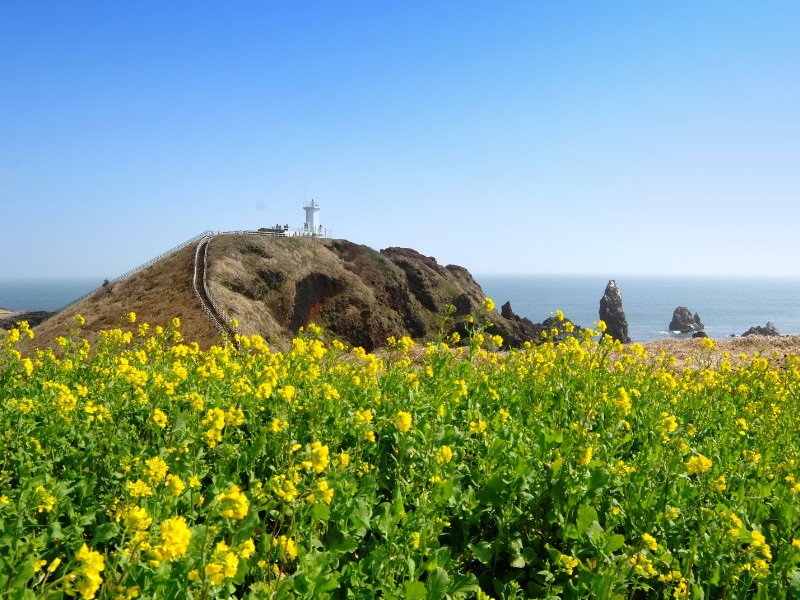
Where To Visit After Your Trip To Jeonju?
Here’s a detailed list of places to visit after Jeonju, offering everything from urban exploration to tranquil retreats.
The dynamic capital city is a must-visit for its seamless blend of ancient history and cutting-edge modernity. Explore traditional palaces like Gyeongbokgung, dive into the vibrant shopping districts of Myeong-dong and Insadong, and savor street food at Gwangjang Market. The city’s nightlife in areas like Hongdae and Itaewon is legendary. Seoul also serves as a hub for visiting the DMZ, offering a poignant glimpse into the Korean Peninsula’s history.
South Korea’s second-largest city, known for its beautiful beaches, scenic cliffs, and thermal spas. Haeundae Beach offers urban relaxation, while the Beomeosa Temple provides spiritual solace. Don’t miss the Jagalchi Fish Market for a taste of local seafood. For a panoramic view of the city, head to the Busan Tower in Yongdusan Park.
3. Gyeongju
Often referred to as “the museum without walls,” Gyeongju is home to numerous Silla Dynasty relics. Visit Bulguksa Temple and the Seokguram Grotto for a dose of spiritual heritage. The Gyeongju National Museum and the ancient Tumuli Park offer insights into the city’s rich history. For a unique experience, stroll around Anapji Pond at night when the historic ruins are beautifully illuminated.
Known for its modern airport, Incheon also boasts Chinatown, offering a variety of Chinese-Korean dishes and cultural experiences. The Incheon Grand Park is a serene escape with lovely walking paths. Wolmido Island provides a fun day out with amusement rides and seaside attractions. Explore the Songdo International Business District for its futuristic architecture and urban planning.
5. Jeju Island
A volcanic island offering stunning natural beauty, from the majestic Hallasan Mountain to the serene Cheonjiyeon Waterfall. Jeju’s beaches, like Jungmun and Hyeopjae, are perfect for relaxation or water sports. Explore the mysterious Manjanggul Lava Tubes. The island’s unique culture, seafood cuisine, and local markets make it a fascinating destination year-round.
Famous for its traditional Korean culture, including the Hahoe Folk Village, a UNESCO World Heritage site. Experience traditional mask dances and sample Andong jjimdak, a savory chicken dish. The Andong Folk Museum offers insights into the area’s history and culture. The city is also known for its annual International Mask Dance Festival.
Just south of Seoul, Suwon is famed for its well-preserved Hwaseong Fortress, a UNESCO World Heritage site. The fortress walls offer a scenic walking path with views of the city. The Korean Folk Village in Suwon provides a comprehensive look at Korea’s traditional lifestyles. Don’t miss the chance to try Suwon galbi, a delicious Korean BBQ variant.
8. Chuncheon
Known as the ‘City of Lakes’, Chuncheon offers a peaceful retreat with beautiful scenery and is famous for dak galbi, spicy stir-fried chicken. Enjoy boat rides on the Soyang River or explore the tranquil Nami Island, known for its tree-lined pathways. The Chuncheon Puppet Festival adds a unique cultural experience. Outdoor enthusiasts will love the numerous water sports available on the lakes.
9. Gangneung
A coastal city that boasts beautiful beaches like Gyeongpo and Anmok. Don’t miss the opportunity to visit the Ojukheon House, showcasing traditional Korean architecture. The city is also famous for coffee culture, with the Anmok Beach Coffee Street offering ocean views and quality brews. The annual Gangneung Danoje Festival is recognized by UNESCO for its cultural significance.
A city renowned for its vibrant textile industry and traditional medicine market, Yangnyeongsi. The Daegu Arboretum provides a lush escape within the city. Hike up to Apsan Park for sweeping views of the urban landscape. Daegu’s modern art scene and lively markets, such as Seomun Market, offer a blend of the traditional and contemporary.

Jeonju Travel Guide: Final Thoughts
And just like that, our journey through Jeonju comes to a close. Jeonju, with its harmonious blend of tradition and modernity, has shown us that some places don’t just exist.
A Melting Pot of Culture
Tradition at Its Heart : Wandering through the Hanok Village, with the soft murmur of history beneath our feet, we’ve connected with a past that still pulses vividly in the present. Each hanok, with its elegantly curved roof, isn’t just architecture; it’s a testament to a culture that values beauty, harmony, and heritage.
Culinary Delights
A Feast for the Soul : If you came to Jeonju hungry, you’re leaving with not just a full belly but a heart enriched by the tastes of Korea. From the bibimbap that’s as much a feast for the eyes as it is for the palate to the street snacks that offer bites of happiness, Jeonju has fed us in more ways than one.
Creative Vibes
Art in Every Nook : The city’s vibrant art scene, from street murals to galleries, has shown us that creativity thrives here. Jeonju’s commitment to preserving traditional crafts while embracing contemporary art makes it a haven for artists and art lovers alike.
Nature’s Embrace
A Breath of Fresh Air : Amidst the buzz of cultural and culinary exploration, Jeonju’s natural landscapes have offered tranquil moments of reflection. The serenity of the Jeonjucheon River and the lushness of the surrounding areas remind us that nature is never too far away.
So, here’s to Jeonju, a place where every visit feels like a homecoming, and every departure is a promise to return.
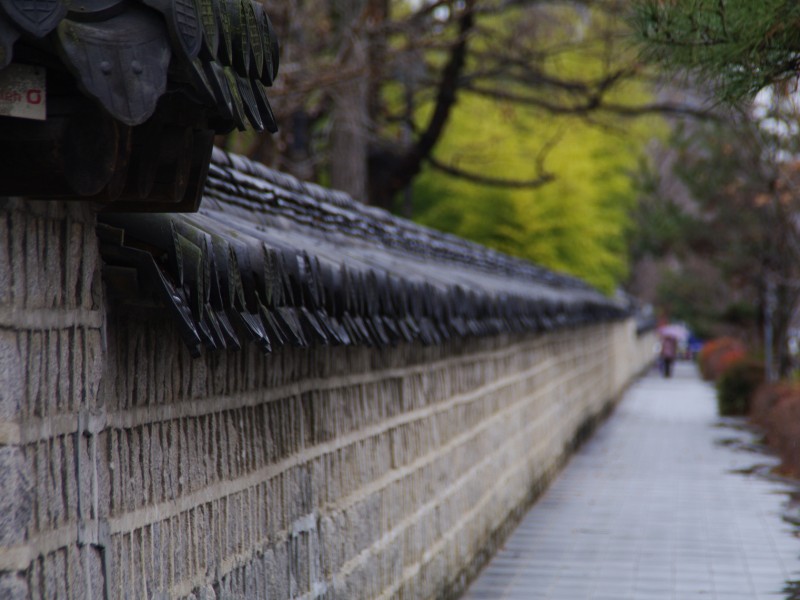
Ode To Jeonju
There once was a city named Jeonju Where the food was the star of the show Bibimbap was the dish of the day And makgeolli was there to stay
The streets were lined with hanok houses And the night market buzzed with spouses There were palaces and museums to explore And even a village of paper dolls galore
So come to Jeonju, don’t be shy Eat, drink, and explore, don’t be sly The city has so much to offer You won’t regret being a Jeonju lover!


The Ultimate Jeonju Travel Guide: Exploring South Korea’s Hidden Gem
Jeonju (Korean pronunciation: [tsʌn.dzu]) is the 16th largest city in South Korea and the capital of North Jeolla Province. It is a unique blend of urban and rural areas, largely due to its close proximity to Wanju County, which almost completely surrounds Jeonju. Many residents of Wanju County work in Jeonju. The name Jeonju literally means “Perfect Region” (from the hanja 全 (전; jeon) for perfect, 州 (주; ju) for region). It is an important tourist center renowned for its Korean food, historic buildings, sports activities, and innovative festivals.
In May 2012, Jeonju was designated as a Creative City for Gastronomy by UNESCO’s Creative Cities Network. This distinction acknowledges the city’s rich culinary heritage, which has been passed down for thousands of years. Jeonju is actively involved in both public and private food research, has a system in place to cultivate talented chefs, and hosts distinctive food festivals.
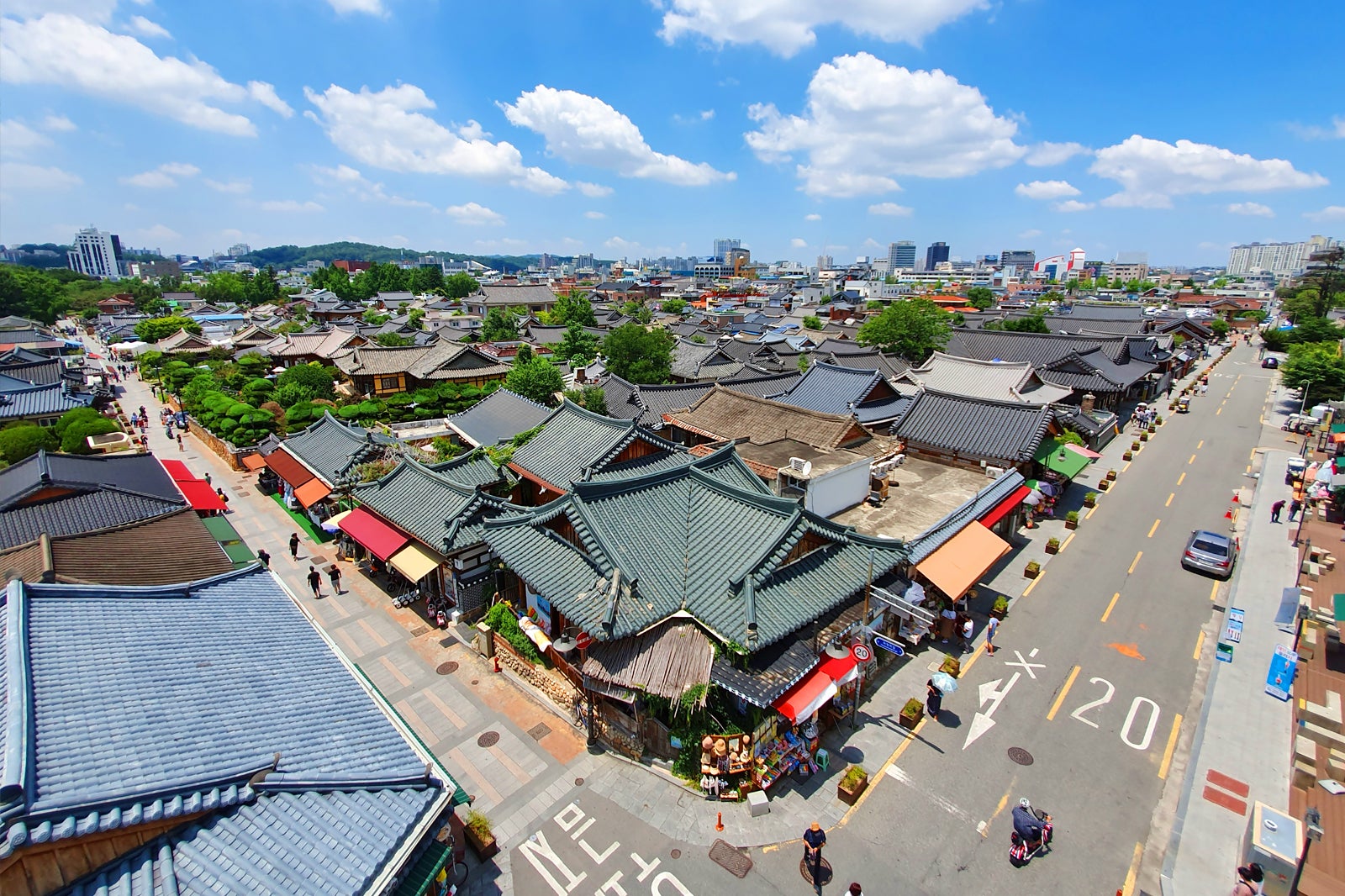
Table of Contents
The Baekje kingdom was situated in southwestern Korea, including the area where Jeonju is currently located. Jeonju is believed to have originated as a market town within Baekje around 57 BCE.
In 660 CE, Jeonju, along with Baekje in general, was conquered by the kingdom of Silla and their Chinese Tang allies. It became part of the Silla kingdom and was designated as one of the nine chu, or provincial capitals, in 685. From 889 onwards, peasant revolts stemming from overtaxation became widespread throughout the kingdom, including Jeonju. It became the headquarters of one of the most powerful rebel leaders of that time, Gyeon Hwon. In 892 or 900, Gyeon Hwon renamed the city Wansan and established it as the capital of the Later Baekje kingdom. From Wansan, Gyeon Hwon waged campaigns against Silla, culminating in the destruction of Geumseong, the capital of the Silla kingdom, and the assassination of King Gyeongae in 927. With the decline of Silla, Wang Geon of the Goryeo kingdom invaded Later Baekje in 934, and Jeonju surrendered to him in 935.
Under Goryeo rule, Jeonju returned to being a provincial capital and enjoyed relative stability and economic growth. However, in 1182, the city was taken by peasant rebels with the aid of governmental troops stationed there who resented being forced to do heavy labor alongside slaves. The rebellion was suppressed after forty days.
In 1392, the Joseon dynasty overthrew Goryeo and established a new dynasty, taking possession of Jeonju. The Joseon considered Jeonju their ancestral home, as an ancestor of Yi Seonggye of Joseon may have fled Jeonju after the peasant revolt of 1182. During the Joseon period, Jeonju became the capital of a reorganized Jeolla province, one of the eight provinces of Joseon. In 1413, Jeonju, along with three other cities, was entrusted with the safekeeping of copies of the Annals of the Joseon Dynasty, which still exist today in the former Confucian academy in Jeonju.
In 1894, the town was occupied by the Donghak Peasant Revolution. Jeonju, like the rest of Korea, was subsequently occupied by the Japanese from 1910. The ancient walls of the old city were destroyed by the Japanese authorities, with the Pungnammum Gate being the only remnant remaining today. Jeonju’s population grew from 1925 to 1949, reaching 100,000 inhabitants. It was granted metropolitan status in 1935, and the city itself was founded in 1949. During the division of Korea, Jeonju was not on the immediate frontline of the war but suffered bombardment and the loss of many male residents who fought during the conflict by the time the armistice was signed in July 1953.
Jeonju received its modern boundaries and government system in 1963 and has since undergone rapid industrialization. However, compared to other parts of Korea, it did not experience the same level of industrial infrastructure, manufacturing, or heavy industries in the 20th century. Today, traditional tourism and sightseeing are major industries in the city.
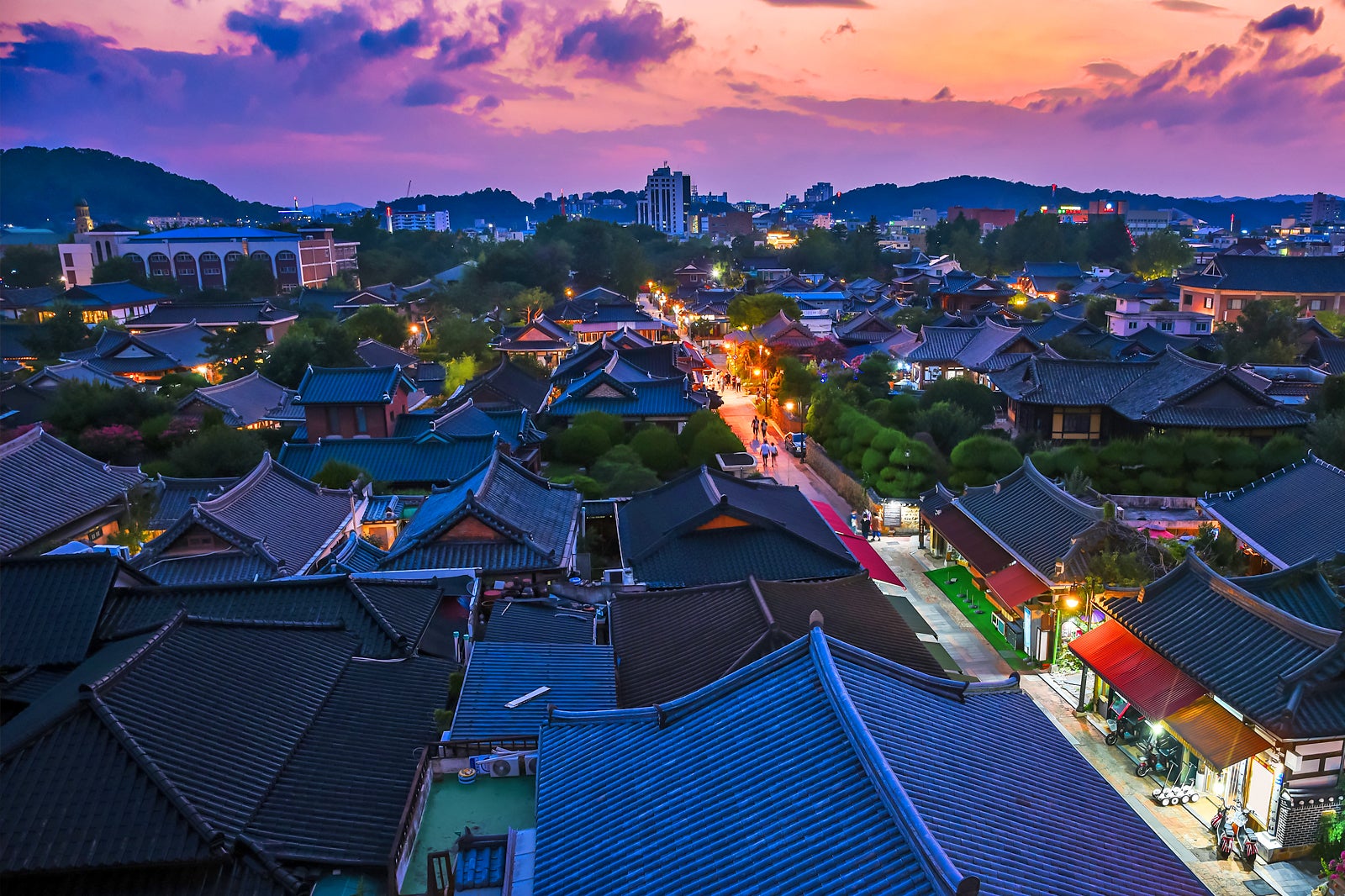
The Jeonju International Film Festival (JIFF) is an Asian film festival that was established in 2000. Initially, it started as a non-competitive film festival with partial competition and aimed to showcase independent and experimental films, focusing on the alternative aspects of contemporary film art.
During the first edition of JIFF, debut films by Darren Aronofsky were introduced to South Korea, along with early works of Béla Tarr, which were showcased in Asia for the first time. The festival’s International Competition Section has awarded notable filmmakers such as Ying Liang, John Akomfrah, and Miike Takashi.
One unique aspect of JIFF is its involvement in film production. Directors who have been invited to the festival have also been later invited to participate in the Jeonju Digital Project (JDP), which consists of three digital shorts. JDP provides financial support to accomplished directors for their short films and premieres these works at the festival.
Celebrating its 15th edition, the JDP has expanded its scope to include feature-length films, with the participation of filmmakers such as GYÖRGY Pálfi from Hungary and PARK Jung-bum/SHIN Yeon-shick from the Republic of Korea.
Another notable feature of JIFF is its experimental section called “Expanded Cinema,” previously known as “Stranger than Cinema.” This section provides a platform for avant-garde and experimental works that push the boundaries of traditional filmmaking.
Overall, the Jeonju International Film Festival is renowned for its promotion of independent and experimental cinema, as well as its support for film production through initiatives like the Jeonju Digital Project.
Jeonju Hanok Village
Jeonju Hanok Village is a charming village located within the city of Jeonju, South Korea. It encompasses the neighborhoods of Pungnam-dong and Gyo-dong and is renowned for its collection of over 800 traditional Korean houses known as ‘Hanok.’ These traditional buildings stand in stark contrast to the modern cityscape that surrounds the village.
The village holds significant appeal for both Koreans and tourists due to its preservation of traditional architecture and cultural heritage. In 2010, it was designated as an International Slow City, acknowledging its relaxed pace of life and the harmonious blend of traditional culture and nature.
Over the years, the popularity of Jeonju Hanok Village has soared, resulting in a significant increase in visitor numbers. From 2007 to 2014, the number of visitors more than doubled, surging from 3.17 million to 7.89 million. Among major tourist cities in Korea, excluding Seoul, Jeonju ranks third in terms of visitor numbers, trailing only Jeju and Busan.

The city of Jeonju holds great historical significance in Korea. It served as the capital of the Hubaekje Kingdom, established by Gyeon Hwon in the 10th century. The city also held spiritual importance during the Joseon Dynasty because the Yi royal family originated from Jeonju. In this dynasty, Jeonju governed the Jeolla-do region, including Jeju Island, and served as a central administrative hub. This rich historical background is why Jeonju is often referred to as ‘the ground of more than 1000 years of history.’
The roots of settlement in the Jeonju area can be traced back over 10,000 years. Initially, people inhabited the foot of a mountain, and later, during the Silla kingdom, they began to move into the flatlands surrounding the mountain. As the city developed, a defensive wall was constructed, leading to the formation of many villages around it. These villages eventually evolved into the present-day Hanok village, which has become a popular tourist attraction in Jeonju.
During the Korean Empire period, the city wall of Jeonju was demolished, and the residential area within the wall began to expand into the Pungnam-dong and Gyo-dong districts, particularly influenced by the Yangban class. This expansion contributed to the growth and development of the city.
Overall, Jeonju’s historical significance, dating back thousands of years, combined with its unique Hanok village, has made it a compelling destination for tourists seeking to explore Korea’s rich cultural heritage.

Attractions

On the eastern side of Hanok Village in Jeonju, there is a significant historical site related to Lee Seonggae, the founder of the Joseon Dynasty. This location is where Lee Seonggae held an outdoor banquet to celebrate his triumphant return to Gaegyeong (the capital at the time) after a victorious campaign against Japanese coastal invaders at Hwangsan Mountain. The site is situated at a high elevation, offering visitors a splendid view of the surrounding scenery.
Due to its historical importance and picturesque setting, many tourists choose to begin their exploration of Jeonju at this location. It serves as a starting point for discovering the rich history and cultural heritage of the area, especially in relation to the founding of the Joseon Dynasty by Lee Seonggae.
In Korean: 오목대 ( Omokdae ), 이목대 ( Imokdae ) Address: 55 Girin-daero, Wansan-gu Open year-round. Free admission.
Jeonju Hyanggyo
The Jeonju Hyanggyo served as a Confucian temple and educational institution for students in Jeonju during the Joseon Dynasty. Its origins date back to the Goryeo Dynasty period when it was initially constructed by the King of Gongmin in 1354. Originally, it was situated at the Gyeonggijeon Shrine site in Jeonju. However, due to two separate wars, it had to be relocated twice.
The main area within the shrine grounds is the Daeseongjeon, which served as the Confucian Shrine Hall. It is positioned in the front of the complex. In contrast, the primary teaching space, known as the Myeongyundang, or lecture hall, is located at the rear. This arrangement deviates from the typical layout of hyanggyos. The Jeonju Hyanggyo consists of a total of 99 rooms.
Recognized for its historical and cultural significance, the Jeonju Hyanggyo holds the distinction of being designated as a Korean Historical Treasure. It stands as a testament to the Confucian educational system that played a crucial role in shaping the intellectual and moral foundations of the Joseon Dynasty.
Gyeonggijeon

Gyeonggijeon is a significant hall in Jeonju where the portrait of Lee Seonggae, the founder of the Joseon Dynasty, is enshrined. It was originally constructed in 1410, during the 10th year of King Taejong’s reign. Gyeonggijeon holds the distinction of being designated as a Private Historical Landmark in Korea, while the portrait of Lee Seonggae itself is recognized as a National Treasure.
Situated in front of Jeonju Hanok Village, Gyeonggijeon attracts a large number of tourists who often visit it as their first stop. The original size of Gyeonggijeon was larger than its present form. However, during the period of Japanese Colonialism, the west side of Gyeonggijeon and its annex were demolished to make way for a Japanese elementary school. The remaining structure is a simple building consisting of outer and inner gates.
Despite its reduced size, Gyeonggijeon continues to hold immense historical and cultural significance as the place where the portrait of Lee Seonggae is revered. It stands as a testament to Korea’s rich heritage and attracts visitors eager to learn about the country’s past.
In Korea: 경기 전 ( Gyeonggijeon ) Address: 44 Taejo-ro, Wansan-gu Entrance fee: 3,000 wons (approx. 2.20 euros)
Pungnammun Gate
Pungnam Gate holds historical significance as the southern gate of the city wall that once surrounded Jeonju during the Joseon Dynasty. It is the only remaining gate following the destruction of the wall. Recognized for its cultural value, Pungnam Gate was designated as National Treasure #308 on January 21, 1963.
During the Joseon Dynasty, Jeonju served as the capital for provincial governors, necessitating the construction of fortifications to enclose the city. These fortifications included gates in all four directions. However, in the 30th year of King Seonjo’s reign (1597), all the gates, except Pungnam Gate, were demolished.
After extensive repair work that commenced in 1978, Pungnam Gate was successfully restored. Notably, the gate’s architectural design, particularly the column arrangement on the second story, showcases a unique and rare Korean building style.
Pungnam Gate stands as a testament to Jeonju’s historical significance and serves as a cherished cultural heritage site, attracting visitors who wish to appreciate its architectural beauty and delve into the city’s rich past.

Its architecture is quite unique, as its columns span the first and second floors of a wooden superstructure. You can’t visit the inside, but you can freely walk around it. In the evening, it is very nicely lit.”
In Korean: 전주 풍남문 ( Jeonju Pungnammun ) Address: 1 Pungnammun 3-gil, Wansan-gu Open all year round.
Jeondong Catholic Cathedral
The Jeondong Cathedral[1] (Korean: 전동성당), also known as the Old Cathedral of Jeondong and now as the Jeondong Church of Francis Xavier, holds significant importance as a Catholic church in Jeonju, South Korea.
The cathedral building, designed in the Roman-Byzantine style, was constructed between 1908 and 1914 by Victor Louis Poisnel (1855-1925). It falls within the jurisdiction and supervision of François-Xavier Baudounet (1859-1915), a French priest born in Mostuéjouls, Aveyron, the same region where numerous Christians were martyred. Situated in the city center, close to the traditional Jeonju Hanok Village, this church is considered a historic landmark.
Presently functioning as a parish church, the cathedral is under the authority of the Diocese of Jeonju (Dioecesis Ieoniuensis or 전주 교구).
The Sacred Heart Kindergarten is an institution affiliated with the cathedral, while the Jeonju Sacred Heart Girls’ Middle School (attended by Wheein and Hwasa) and Jeonju Sacred Heart Girls’ High School are located nearby.
The Jeondong Catholic Church in Jeonju, completed in 1914, was designed by Priest Poinel, who was also the architect behind the famous Myeongdong Cathedral in Seoul. It holds the distinction of being the largest and oldest Western-style structure in the Jeollanam-do and Jeollabuk-do provinces of South Korea. The church was constructed on the site where Yun Ji-chung (1759-1791), the first Korean Catholic martyr, died.
The Jeondong Cathedral is one of South Korea’s three prominent Catholic churches, alongside the Myeongdong Cathedral in Seoul and the Gyesan Catholic Church in Daegu. Its architectural style is a blend of Romanesque and Byzantine influences, resulting in a visually striking and captivating structure. Regarded as one of the most beautiful buildings in Korea, it stands as a testament to the rich cultural heritage of the region.

In Korean: 전동성당 ( Jeondong Seongdang ) Address: 51 Taejo-ro, Wansan-gu Open year-round. Free admission.
The Jeonju Hyanggyo is a historical school that was originally established at the Gyeonggijeon Shrine site in Jeonju, Korea, during the early 15th century, within the Joseon Dynasty (1392-1910). The Gyeonggijeon Shrine was constructed in 1410, indicating that the construction of the Jeonju Hyanggyo followed sometime later.
During the Second Japanese Invasion in 1592, both the Gyeonggijeon Shrine and the Jeonju Hyanggyo were completely destroyed. In 1603, the hyanggyo was relocated and reconstructed at its present location in Jeonju.
Unlike the more typical Jeonhakhumyo style observed at the Goheung Hyanggyo, the Jeonju Hyanggyo features a less conventional design of being situated on level ground. The memorial enshrinement area is centered around the Daeseongjeon (Confucian shrine hall) at the front, while the educational area revolves around the Myeongyundang (lecture hall) located at the rear. This configuration is uncommon for a hyanggyo. In total, the Jeonju Hyanggyo comprises 99 rooms.
Recognized for its historical significance, the Jeonju Hyanggyo holds the designation of a historical treasure.

In Korean: 전주향교 ( Jeonju hyanggyo ) Address: 139 Hyanggyo-gil, Wansan-gu Open 9am-6pm in summer, 10am-5pm in winter. Free admission.
Jaman Mural Village
Jaman Mural Village is situated on the ridge between Omokdae and Imokdae, nestled along the base of Seungamsan Mountain’s Jungbawi Rock. The village offers a picturesque view of Jeonju Hanok Village from its broad street. While the ascent to Jaman Village may be moderately steep, visitors will be rewarded with a delightful experience as they encounter vibrant murals adorning the buildings and walls along the pathway.
In Korean: 자만벽화마을 ( Jaman byeokhwa maeul ) Address: 1-10, Jamandong 1-gil, Wansan-gu Open year-round. Free admission.
Foodie Jeonju
Jeonju is renowned as the “city of taste” and has earned this reputation due to three key factors: rice cultivation in the Honam plain, the gathering of wild vegetables from the surrounding mountains, and fishing in the waters of the Yellow Sea.
Recognizing the city’s dedication to preserving its long-standing culinary traditions, UNESCO has included Jeonju in its network of “creative cities”. Jeonju has demonstrated significant efforts in maintaining its culinary heritage through various means such as engaging in exchanges with other Cities of Gastronomy, active participation in international forums, and providing support to local chefs. In essence, Jeonju is a city where one can indulge in exquisite dining experiences.
The bibimbap , this essential dish
Bibimbap is a popular Korean rice dish known for its delicious combination of flavors and textures. The name “bibimbap” translates to “mixed rice” in English, highlighting the preparation method of combining various ingredients with rice.
Traditionally, bibimbap consists of a bowl of steamed white rice topped with an assortment of namul (seasoned and sautéed vegetables) or kimchi (fermented vegetables). It is typically garnished with gochujang (a spicy chili pepper paste), soy sauce, or doenjang (fermented soybean paste) to add depth of flavor. Additional toppings often include a raw or fried egg and sliced meat, commonly beef.
To enjoy bibimbap, the hot dish is thoroughly mixed together just before eating, ensuring that the flavors blend harmoniously. This mixing process evenly distributes the ingredients throughout the rice, creating a satisfying and flavorful meal.

Gyodong Dawon Tea House
Jeonju boasts several wonderful teahouses, but the one I hold dear is particularly special to me. It is housed in a traditional wooden structure, featuring a spacious entrance that seamlessly connects with the surrounding garden. The atmosphere inside is tranquil and serene, creating an ideal environment for introspection and the appreciation of fine tea.
Within this teahouse, you can expect a focus on high-quality teas. The selection is carefully curated, ensuring that each tea offers a delightful and memorable experience. Whether you seek a moment of meditation or simply wish to indulge in the art of tea drinking, this teahouse provides an exceptional setting to unwind and savor the flavors and aromas of exquisite teas.
If there were no more places, try your luck at Daho, at 12-3 Taejo-ro.
In Korean: 교동다원 ( Gyodong dawon ) Address: 65-5 Eunhaeng-ro, Gyo-dong, Wansan-gu Open every day except Tuesday, from 11 am to 10:30 pm.
Nambu Market
Jeonju Nambu Traditional Market has a rich history, tracing back to its establishment in 1905 as a public market on the grounds of the Joseon-era Nammunbakk Market, which was situated just outside the Southern gate of the city. Presently, the market comprises around 800 stores with approximately 1,200 workers offering a diverse range of goods, including vegetables, fruits, food items, dried fish, furniture, silk products, and general merchandise.
To breathe new life into the market, the Youth Market was created within the previously vacant shops on the second floor of 6-dong. This addition has attracted a wave of young shopkeepers and entrepreneurs, infusing the marketplace with a vibrant and dynamic atmosphere reminiscent of popular areas like Hongdae or Samcheong-dong.
One of the highlights of the market is the night market held on Fridays and Saturdays. This event entices numerous visitors with a wide array of delectable treats. From traditional dishes such as nokdujeon (mung bean pancake) to fusion creations like bibimbap wrapped in rice paper resembling a spring roll, there is an abundance of culinary delights to indulge in. The night market provides a delightful opportunity to explore unique flavors and enjoy a vibrant food scene in Jeonju.
In Korean: 전주 남부시장 ( Jeonju Nambu sijang ) Address: 2-242 Jeonong 3-ga, Wansan-gu, Open year-round. Free admission.
Jeonju the cultural
Jeonju international sori festival.
The Jeonju International Sori Festival, established in 2001, holds significant prominence as South Korea’s primary event dedicated to traditional music, and since 2011, world music as well. The festival has gained international recognition for its cultural significance and artistic excellence.
Notably, in 2012, 2013, and 2014, Songlines, a renowned world music magazine, included the Jeonju Sori Festival in its esteemed list of the World’s Best 25 International Festivals. It was the sole Asian festival to be featured on this prestigious list, underscoring its exceptional standing in the global festival landscape.
This recognition highlights the festival’s commitment to showcasing diverse musical traditions, fostering cross-cultural exchanges, and celebrating the richness of traditional and world music. The Jeonju International Sori Festival has undoubtedly contributed to promoting cultural heritage and strengthening international appreciation for traditional and world music genres.

In Korean: 전주 세계 소리 축제 ( Jeonju segye sori chukje ) Address: 1F Conference Hall, Sori Arts Center of Jeollabuk-do, Sori-31, Deockjin-gu, Jeonju-si Website Internet: www.sorifestival.com
Map of Jeonju and its sights

Mohamed SAKHRI
I am Mohamed SAKHRI, the creator and editor-in-chief of this blog, 'Discover the World – The Blog for Curious Travelers.' Join me as we embark on a journey around the world, uncovering beautiful places, diverse cultures, and captivating stories. Additionally, we will delve into mysterious and, at times, even bizarre destinations.
Leave a Comment Cancel reply
Save my name, email, and website in this browser for the next time I comment.
Discover the world – The blog of curious travelers
Discover the World is aimed at lovers of travel and beautiful landscapes. You will find as many tips and practical advice as beautiful destinations that will make your mouth water. With its dreamy photos, you will undoubtedly want to fly around the world.. Learn more about me on Linkedin! , Twitter! , Reddit .
Privacy Policy
© discoverytheworld.com | All rights reserved
Privacy Policy | Terms and Conditions
Privacy Overview
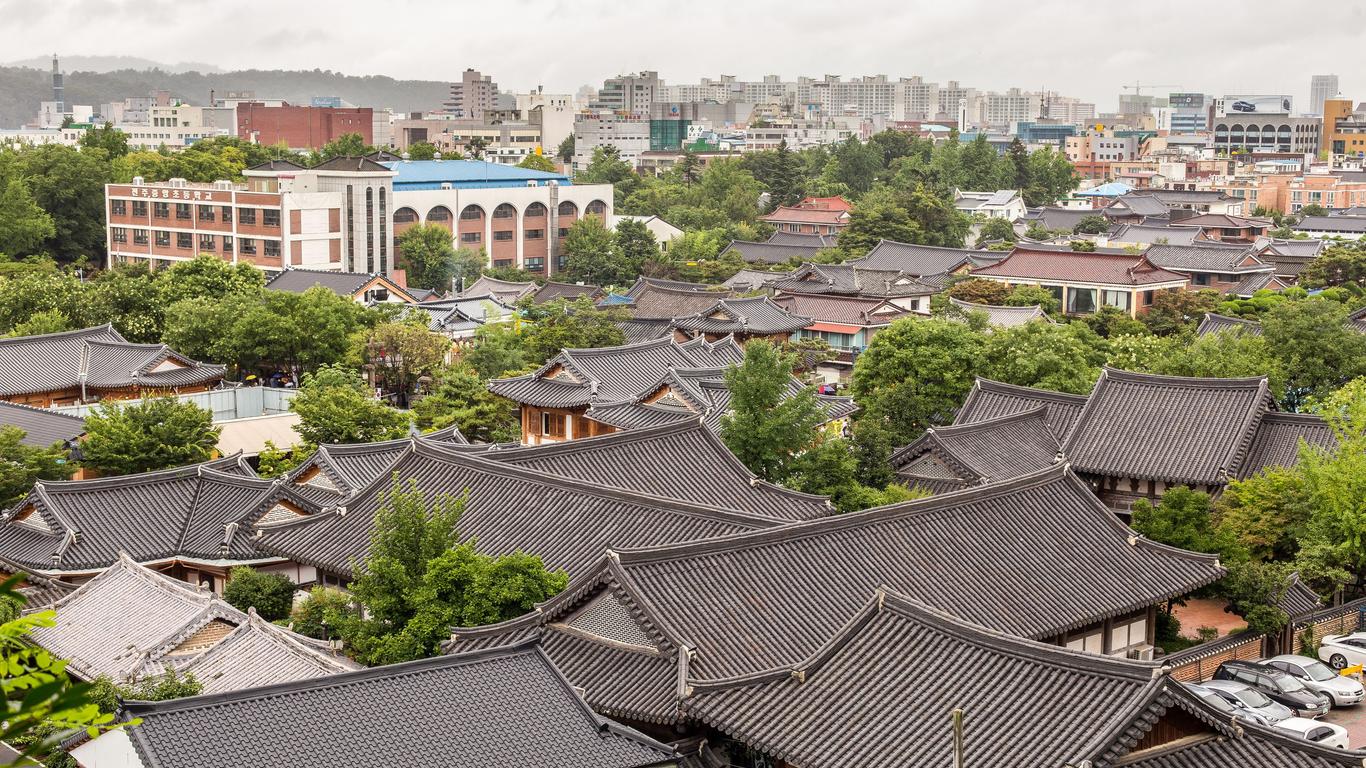
Jeonju travel guide
Jeonju tourism | jeonju guide, you're going to love jeonju.
Urban life and rural charms meet in Jeonju, South Korea, capital of the North Jeolla Province. Famed for the local cuisine that arose from the farmlands that surround it, Jeonju was named a UNESCO City of Gastronomy in 2012. From the cobblestone streets and iconic hanok of the historic district to the mountains beyond the city limits, it's easy to see why this is one of the most popular destinations for Korean tourists.
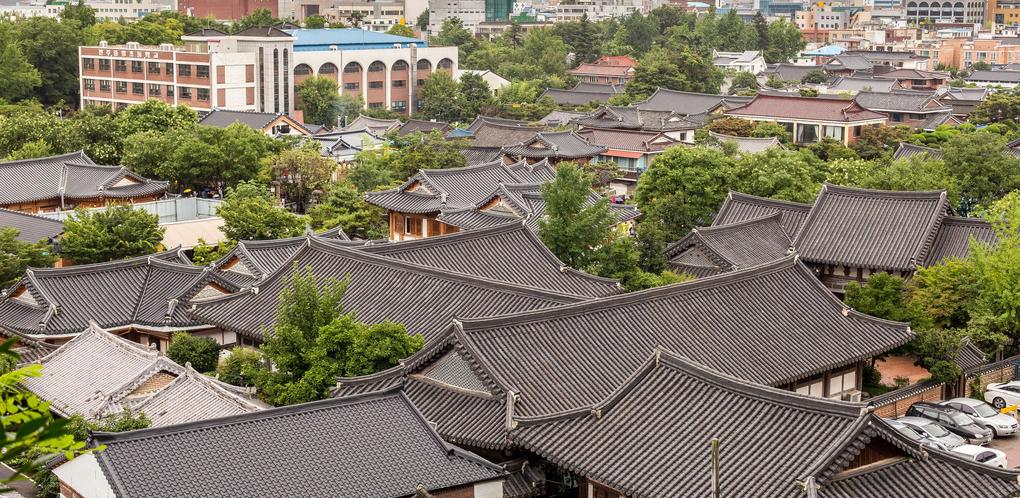
Top 5 Reasons to Visit Jeonju
1. the food.
The people of Jeonju have a saying: "Eat once in Jeonju, and you'll be spoiled for life." The signature dish of Jeonju is bibimbap, or a traditional rice bowl with meat, egg, vegetables, and hot sauce.
2. Picturesque Local History
There are more than 800 hanoks, or traditional wooden Korean dwellings with their characteristic curved roofs, left in the city, most located in the Hanok Village and along the charming cobblestone streets of the historic district.
3. Sizzling Nightlife
Join the fun-loving spirit of the city at night in a busy scene of beer halls, karaoke bars, and the local specialty, makgeolli bars that serve the traditional unfiltered rice wine of the region.
4. Local Arts Scene
There is a fascinating local arts scene to explore, including the Jaman Mural Village with its outdoor murals.
5. Explore the Mountains
Explore the nearby mountains with excellent local connections via rail and bus, including the Naejangsan and Maisan peaks. The area is particularly beautiful in the fall.
What to do in Jeonju
1. have a wild time.
The Jeonju Zoo is a visitor favorite, especially for its diverse facilities that include a soccer field, a volleyball court, and an amusement park known as "Dream-Land". The zoo itself is home to many diverse creatures such as tigers, lions, giraffes, hippos and even camels. Kids and adults alike can enjoy an afternoon at the zoo, with nearly 106 different species to engage with.
2. A Historic Landmark
Officially designated as a public park in 1978, the beautiful Deokjin Park is a favourite of visitors and residents alike. Its major draw is a sprawling, almost magical lake right at its center, whose surface is covered with lotus blossoms and lily pads. The park, which spans 13,000 square meters, also has a grand and majestic pavilion and a serene, tranquil water iris garden. There is a small arch bridge that is suspended over the lake, coupled with an artificial waterfall and nine stone monuments scattered around the park. This, coupled with the streams of couples walking and-in-hand around the park, makes Deokjin a walk to remember.
3. Food Hub Of South Korea
Jeonju is the food hub of South Korea and so a trip to the district would not be complete without visiting its street food hot spot, the Jeonju Nambu Traditional Market & Night Market! Open in the evenings until late, the night market serves up steak on a stick, freshly skewered and grilled, bacon rolls, octopus tentacles in light batter, dakkochi, fried sushi and even the traditionally loved bibimbap. For those who can't get enough, check out the Nambu Traditional Market, which is near Pungnammun Gate, Hanok Village.
4. Preserving Historical Culture
This present-day landmark is a bastion for the preservation of Korean history and culture. The National Museum was first established in 1990 to further research and preservation efforts, since there are so many sites in Jeonju that can be traced back to royal rulers and dynasties. Over the years, the museum has made considerable efforts to acquire some 30,000 artifacts from the Jeollabuk-do province of south-western South Korea. Of these, 1,300 are on display, organized in five distinct exhibits and one open-air hall. The magnificent structure includes dedicated spaces such as at the "Ancient Culture Room", focused on the prehistoric culture of the Jeonbuk area and the growth of the Baekje Dynasty, as well as the "Fine Arts Room", which brings together 350 relics, most of them Buddhist in origin. And, to preserve the spoken word, the museum also has a "Folklore" room.
5. A National Treasure
Some say it was built in 600, others say 599. Yet, all can agree that the Geumsansa Buddhist Temple has withstood the test of time, even if its first avatar was eventually destroyed by Japanese invaders. The structures were eventually rebuilt in 1635 and still showcase a large part of the progression of the Buddhist faith in Jeonju, especially the "prophecy" of a "Buddha of the Future".
Where to Eat in Jeonju
Get the best of local cuisine and the nightlife scene at Yetchon Makgeolli, where your first kettle of makgeolli or rice wine comes with pork belly and kimchi for ₩20,000. Enjoy classic bibimbap in Jeonju's enchanting historic district at Hanguk-jip, where prix fixe meals start at ₩11,000.
When to visit Jeonju
Jeonju's climate is very seasonal, with cold winters and summers where temperatures average over 85 degrees. Many visitors come to the city during the more temperate spring for the blossoms and fall for the changing colors of the leaves in the nearby mountains.

How to Get to Jeonju
The closest international airport is Seoul Incheon Airport (ICN), about 120 miles away. Express bus service to Jeonju costs about ₩15,000, and the trip takes about 2.5 hours.
Jeonju Station is a regional hub, with extensive service to other major centers in South Korea from companies such as ITX-Saemaul, Mugunghwa-ho, and S-Train, along with the high-speed KTX bullet train route from Seoul to Busan.
Jeonju is well connected to other major centers throughout the North Jeolla Province and beyond by an extensive network of highways.
The Intercity Bus Terminal connects Jeonju with other major centers in South Korea, along with sightseeing trips to the mountains in the region.
Airports near Jeonju
Airlines serving jeonju, where to stay in jeonju.
Stay in traditional style with all the modern amenities at Dan Kyung, steps away from the Hanok Village. Enjoy the sleek contemporary style of the Box Hotel, located just outside the historic district.
Popular Neighborhoods in Jeonju
Hanok Maeul - the city's historic center is where you will find one of the largest assemblies of elegant traditional hanok buildings in the country, along with other attractions such as the Gyeonggijeon Shrine, built in 1410.
Jaman Mural Village - located along a ridge between the Omokdae and Imokdae hills, overlooking the city from the foot of Seungamsan Mountain. The historic site is now home to streets of murals painted by local artists, along with galleries and boutiques.
Deokjin-gu - this green area of the city is where you will find the large Deokjin Park, centered around a natural pond with iris gardens and lotus blooms, an artificial waterfall, and much more.
Where to stay in popular areas of Jeonju
Most booked hotels in jeonju, how to get around jeonju, public transportation.
There is an extensive network of public bus routes through the city, with a flat fare system that starts at ₩1,100.
Taxis are plentiful throughout the city, with fares that start at ₩2,800. A typical fare within the city runs about ₩5,000 to ₩10,000.
While public transit service is very good in Jeonju, a car rental lets you easily explore the region. A compact rental starts at about ₩86,100.
The Cost of Living in Jeonju
Shopping streets.
For locally produced artisan craft work, you'll want to check out the Jeonju Crafts Exhibition Hall, along with other shops and boutiques in the city's historic district.
Groceries and Other
Home Plus, Lotte Mart, and Megamart are three of the larger supermarket chains in the city. A quart of milk costs about ₩2,265 and a dozen eggs comes in at about ₩2,450.

10 BEST THINGS TO DO IN JEONJU [KOREA GUIDE]
WHAT TO DO IN JEONJU HANOK VILLAGE? HOW TO GET AROUND IN JEONJU? JEONJU ON A DAY TRIP? WHERE TO STAY IN JEONJU?
Jeonju in South Korea is famous for its old town called Hanok Village. Hanok means traditional Korean houses, which are usually beautiful. Visiting Jeonju should absolutely be on your travel itinerary in South Korea.
Expect a romantic village, amazing food, peaceful temples, a surprisingly beautiful cathedral, and great parks.
We were pleasantly surprised during our visit by how gorgeous is Jeonju. You can visit the main sites in a day trip from Seoul.
READ: 21 AWESOME DAY TRIPS FROM SEOUL
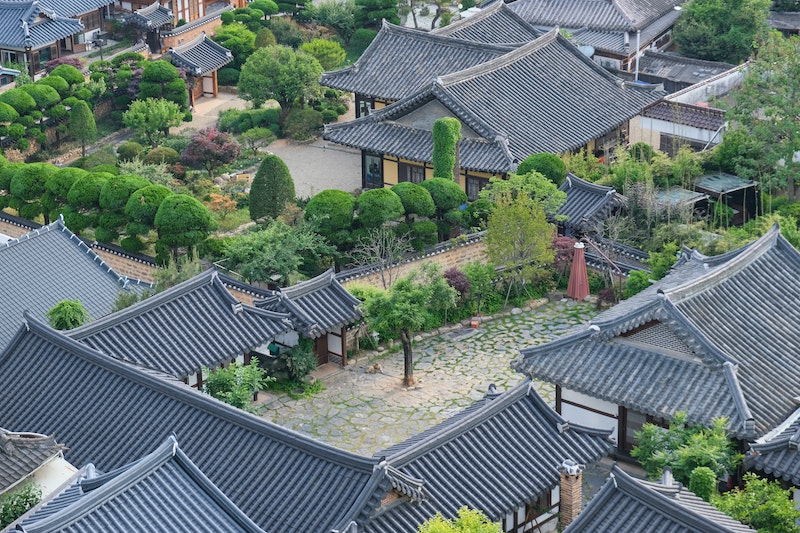
In a Nutshell:
– Jeonju City (전주시 in Korean) is considered a major cultural site in South Korea . During the Joseon period, it was considered the spiritual capital of the country. – Jeonju cuisine is also very famous. Besides, Jeonju’s famous bibimbap (Korean’s national dish), the gastronomy in Jeonju is much more than only this dish. – The city of Jeonju is even listed in UNESCO in the gastronomy category . – You can reach Jeonju by train from Seoul
Here is a glimpse of what to expect when visiting Jeonju:
BEST THINGS TO SEE IN JEONJU HANOK VILLAGE
1. wander through the hanok village.
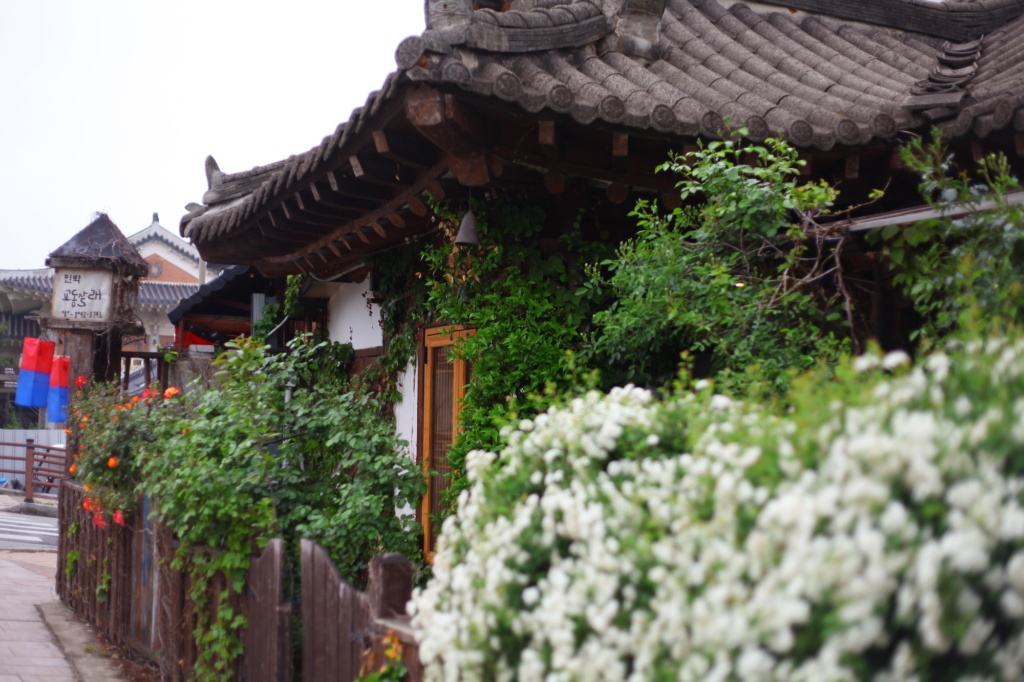
Jeonju Hanok Village is the heart and the old part of Jeonju City (Jeonju is one of the 10 biggest cities of South Korea). The Hanok Village spans across several streets and alleys. There, you can see beautiful Hanoks everywhere, which now form shops, restaurants, cafes, museums, and galleries. It’s the nicest neighborhood in Jeonju.
Rent a Hanbok:
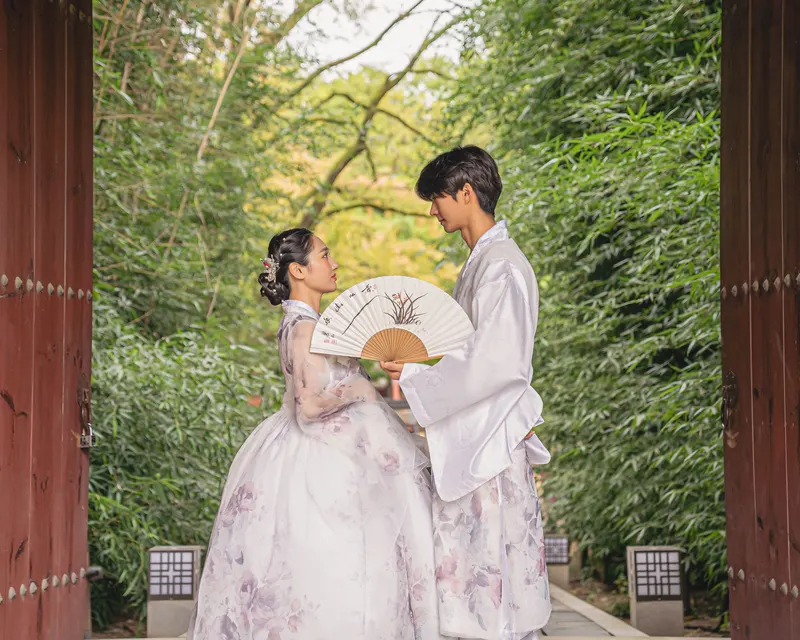
Adventure yourself in small and hidden alleys to discover beautiful and romantic spots. South Koreans like to rent Hanboks (Korean traditional clothes) and walk around with it the entire day. This is a fun experience, which you can book HERE .
It makes it a perfect place for photography. Although we do not like to compare, it reminded us a lot of Kyoto in Japan.

Most tourists visit Jeonju Hanok Village by day. However, we highly recommend a stroll through the village at night. With beautiful lights everywhere, it’s even more romantic.
2. Visit Jeonju Gyeonggijeon Shrine
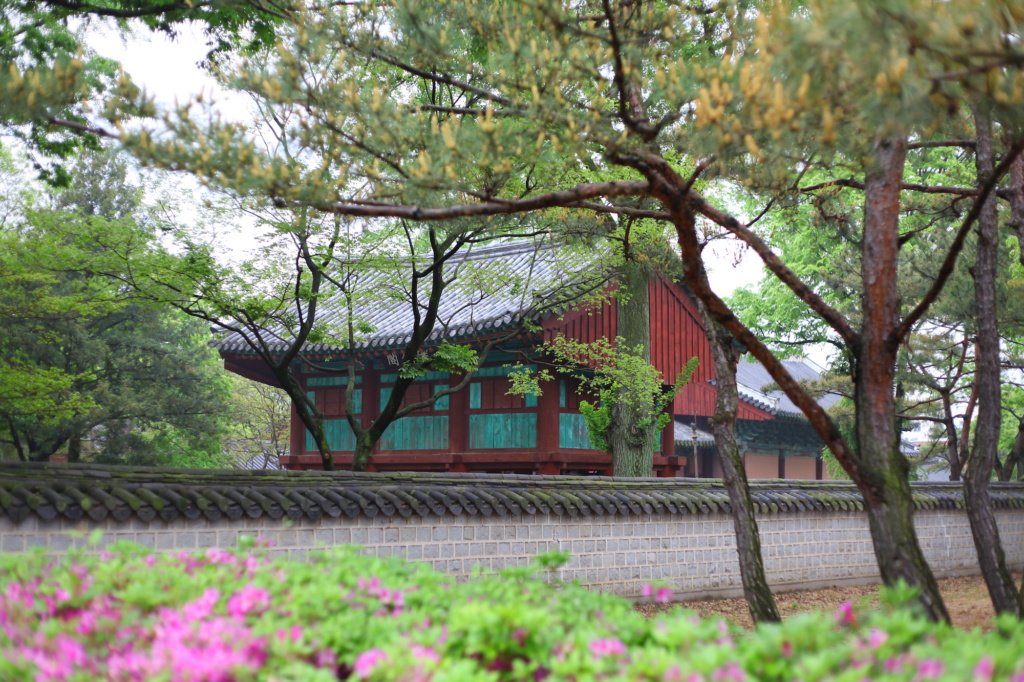
The Gyeonggijeon Shrine is located just outside the hanok village. Gyeonggjieon is one of the best things to see in Jeonju!
This Shrine was built at the very beginning of the 15th century , a few years after the death of King Taejo, founder of the Joseon dynasty.
The purpose of the building was to house a portrait of King Taejo. Other shrines had been built in the country for the same purpose. They were all destroyed by the Japanese but rebuilt later on.
In addition to visiting the Shrine itself, you can also visit the Royal Portrait Museum . This is where you can see the portrait of King Taejo among others.
There is a fee for visiting the Gyeonggijeon shrine (경기 전 in Korean). The entrance ticket costs 3,000 won per person for adults.
3. Hyanggyo Confucianism school

Founded during the Joseon Dynasty (1392-1910), Jeonju Hyanggyo is another Historic Site of South Korea and one of the best things to see in Jeonju!
Hyanggyo were national educational establishments in the provinces that provided Confucian teachings during the last Korean dynasty. The Jeonju Confucian school was originally located around the holy place of Geonggijeon, but it was moved to its present location in 1603.
Composed of many different buildings, this school is one of the largest educational establishments . It is a beautiful and peaceful site to visit.
4. Eat some local delights, one of the best things to do in Jeonju

You’ve surely heard of “bibimbap” before even coming to Korea. It’s one of those internationally renowned dishes. Bibimbap should be your culinary priority, as apparently it was invented in Jeonju .
It is a rice dish with a lot of vegetables, beef (but they also have a vegetarian option), and sauce, topped with an egg. Many Koreans say that the best bibimbap should not contain less than 10 ingredients and that the real bibimbap contains 29 !
Once you get your bibimbap, mix all the ingredients together, and there you go, it’s ready to eat!
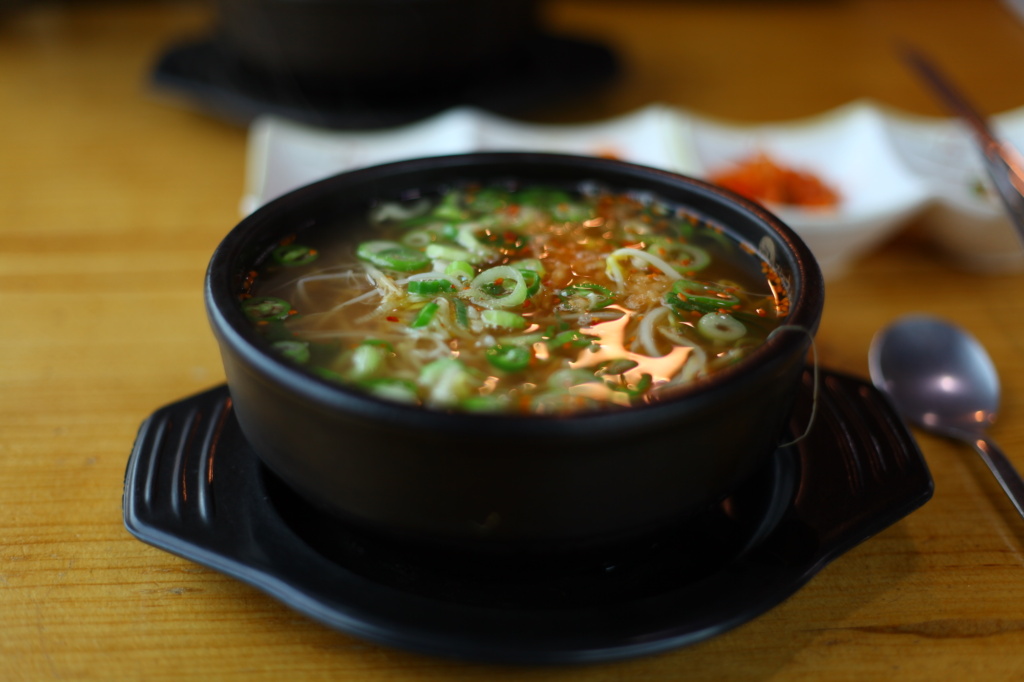
Gukbap is a delicious soup renowned for its high-quality of bean sprouts. This is due to the high quality of the soil where the beans are grown, as well as the quality of the water.
You can enjoy it at many restaurants in the city. We went to Hyundai-ok Hanok Village branch , which was recommended by a local friend. It was really delicious.
Koreans recommend pairing this dish with Moju, a light alcoholic local rice wine.

Makgeolli is an alcoholic drink made from fermented rice with a milky texture.
If you order a bottle of Makgeolli, you will be served several side dishes. And when you ask for another one, you’re usually served a variety of different dishes.
Jeonju even has Makgeolli Street located at Seosin-dong. It’s a fantastic place with many restaurants serving great food and of course great Makgeolli
5. Jeondong Cathedral

Jeondong Cathedral is a Roman-Byzantine-style Catholic cathedral. It was built by a French priest at the start of the 20th century. Jeondong is classified among the Korean historic sites.
It is possible to visit it for free .
If you plan to visit on a Sunday, be aware that there are several masses during the morning and it’s usually full. So remember to visit it on another day or outside of mass hours. Christianity is the most widely practiced religion in the country. Even though Catholics are a minority.
Jeondong Cathedral is located on the edge of the Hanok village, close to the Gyeonggijeon Shrine.
6. Pungnam Gate
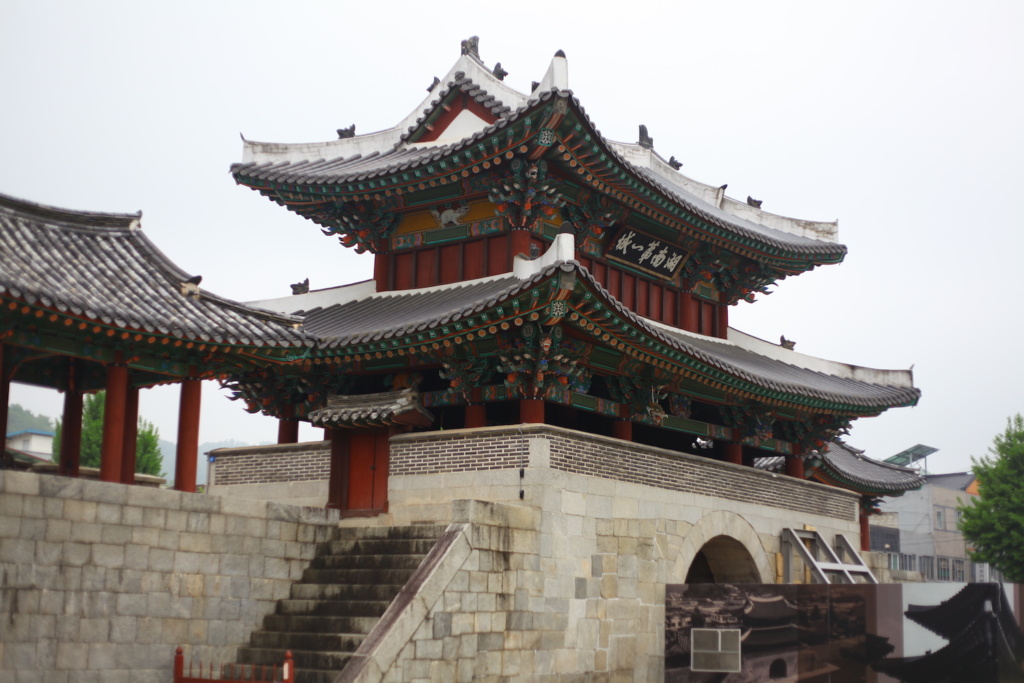
Pungnam Gate or Pungnammun is one of the 4 gates that marked the entrances to the old city . It is the only door that remains visible today.
Pungnam Gate was built during the Joseon Dynasty, like most places of historic interest in Jeonju. Its construction dates back to the year 1768.
Illuminated in the evening, it is probably at this time of day that it is most impressive. Pungnammun is more of a photography stop than a visit to Jeonju. It is not possible to climb to the top of the door.
7. Jaman Mural village

Right next to Jeonju Hanok Village, you can visit Jaman Mural Village which is a charming village situated on the hillside of a mountain with a great view of Jeonju.
The walls of the village were painted by local artists which then became a popular attraction in Jeonju. There are also great cafes with a fantastic panorama of Jeonju Hanok Village.
For us, this is one of the best things to see in Jeonju!
8. Climb the hill to Omokdae and Imokdae for the best view of the city

On your way to Omokdae and Imokdae, 2 Shrines situated on top of a hill, you can take great photos of Jeonju Hanok Village. At the very top, you will find Omokdae and Imokdae. These are two places that have a connection to history. Indeed, King Taejo (who called himself at the time Lee Song-Gye) organized a feast at this place after a great victory.
Finally, this was also the place his great-grandfather lived before leaving Jeonju.
All and all, this is by far the best view of Jeonju Hanok Village! So make sure to check it out.
9. Nambu Market

Right beside the Hanok Village, we recommend taking a little tour of the Nambu traditional Market.
It’s the biggest market in town. It breaks down into several parts: a covered part, a second outdoor with shops that overlook the street. And there are also smaller stands outside.
The market is also open in the evening. It’s a good place to eat local delights in Jeonju.
Nambu market is located southwest of Pungnammun Gate, between the gate and the Jeonjucheon River.
10. Visit free museums in Jeonju

Many museums in Jeonju are actually free.
We recommend the Jeonju Korean Traditional Alcohol Museum . It isn’t very big, but you can see the tools and machines used for manufacturing alcohol, as well as exhibitions of traditional Korean alcohol.
The most interesting areas of the museum are considered to be the alcohol preparation room and the fermentation room. Thanks to the speakers in these two rooms, you can hear the amplified sounds of alcohol during the fermentation process. You can also enjoy the seductive aromas of traditional Korean liquor.
Another Museum we recommend is The Jeonju Traditional Crafts Exhibition Center . It not only allows visitors to experience the beauty of Korean traditional crafts but also to create something . Visitors can create their own craft with rice paper sheets, pottery, millwork, embroidery, etc. In addition, it is possible to buy crafts made by professionals.
WHERE TO STAY IN JEONJU?
While Jeonju can be done on a day trip from Seoul, we recommend spending 1 night in Jeonju and truly appreciating this beautiful city.
Without a doubt, we highly recommend staying in the Hanok Village, for a unique experience. Besides the Hanok Village at night is very romantic with great lighting everywhere.
There are several options available in the Hanok Village. Here is our top 3 Hanok stays in Jeonju:
Hanok Dream
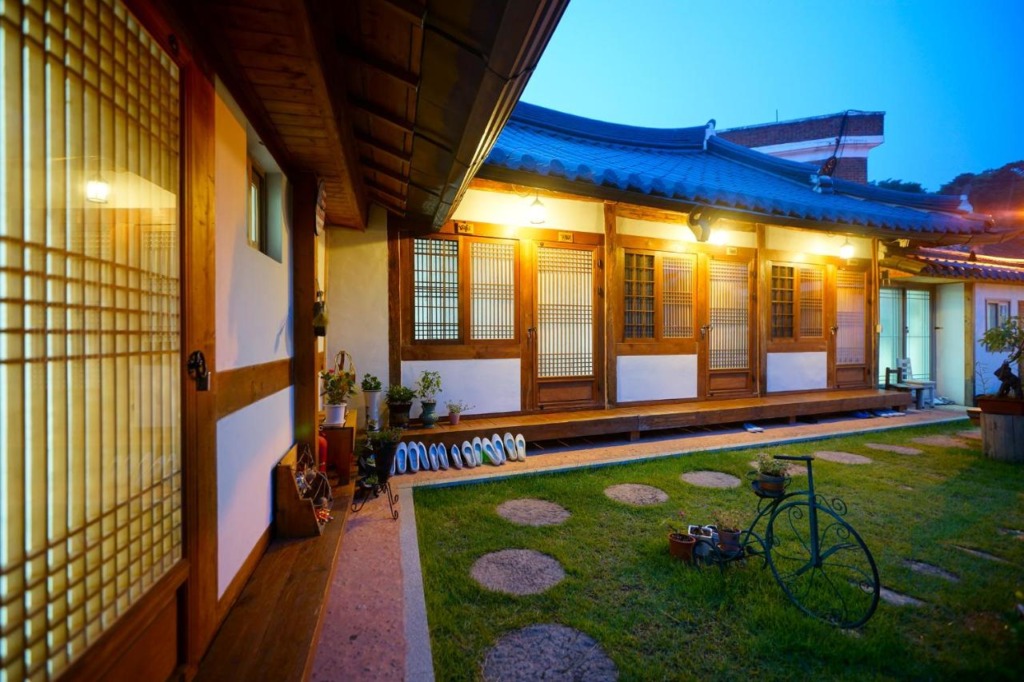
Hanok Dream is one of the most beautiful Hanok hotels in Jeonju. The hotel is perfectly located, within walking distance to Jeonju Hanok Village! Hanok Dream is often ranked as one of the best hotels in Jeonju, providing a unique and unforgettable experience!

Gaeunchae is also one of the most beautiful Hanok guesthouses that we have seen in Jeonju. It is perfectly located, newly renovated, and has great amenities.

Our final recommendation is the charming Jungdam Hanok hotel . Perfectly located, with private bathrooms, a beautiful garden, Jungdam Hanok is one of the best places to stay in Jeonju Hanok Village! BOOK HERE
WHAT ELSE TO SEE OUTSIDE JEONJU?

1. Geumsansa Temple
This stunning temple is located about twenty kilometers southwest of Jeonju. If you plan to stay more than a day in Jeonju, visiting Geumsansa is really worth it. The easiest to get there would be by car (25 minutes), however there are also buses.
As with most Buddhist temples in South Korea, Geumsansa is located in nature, outside the city in Moaksan Provincial Park.
This very old temple was founded in 599 . It is well known throughout South Korea, especially because it houses a relic of Buddha. The temple is quite large and the different buildings are spread over several levels. From the temple you can enjoy a magnificent panorama of the mountains and surrounding nature. In autumn, the place is majestic!
The entrance to the temple is 3000 won per person.
2. Hike in Moaksan Park
It is also possible to take several hikes in Moaksan Park, starting from Geumsansa. The nature and mountains are beautiful, which makes it a pleasant day out.
3. Deokjin Park
Deokjin Park is located in the northern part of the city. The park is really nice. It is a park with a large pool of water where you can see hundreds of lily pads. The park is very popular with locals, for walking or doing sports.
HOW TO GET TO JEONJU?

There are several options to get from Jeonju
The car is the best option because it allows you to visit the surroundings of cities without wasting too much time on public transport. By car, count at least 3 hours or more depending on the traffic to get out of Seoul. Parking could be a bit tricky though, so check with your hotel if they have free parking.
You can also opt for a private tour by car with departure from Seoul. This is a good option if you are traveling as a group. CHECK IT OUT!
Jeonju is easily accessible by train, especially from Seoul. You can also do a day trip from Seoul if you take the train in the morning and leave in the evening.
It only takes 2 hours and it’s a direct line. However, you will need to book in advance, as trains in Korea often get full. Take the high-speed train, called KTX. BOOK YOUR TICKET IN ADVANCE HERE
IN CONCLUSION – IS JEONJU WORTH A VISIT?
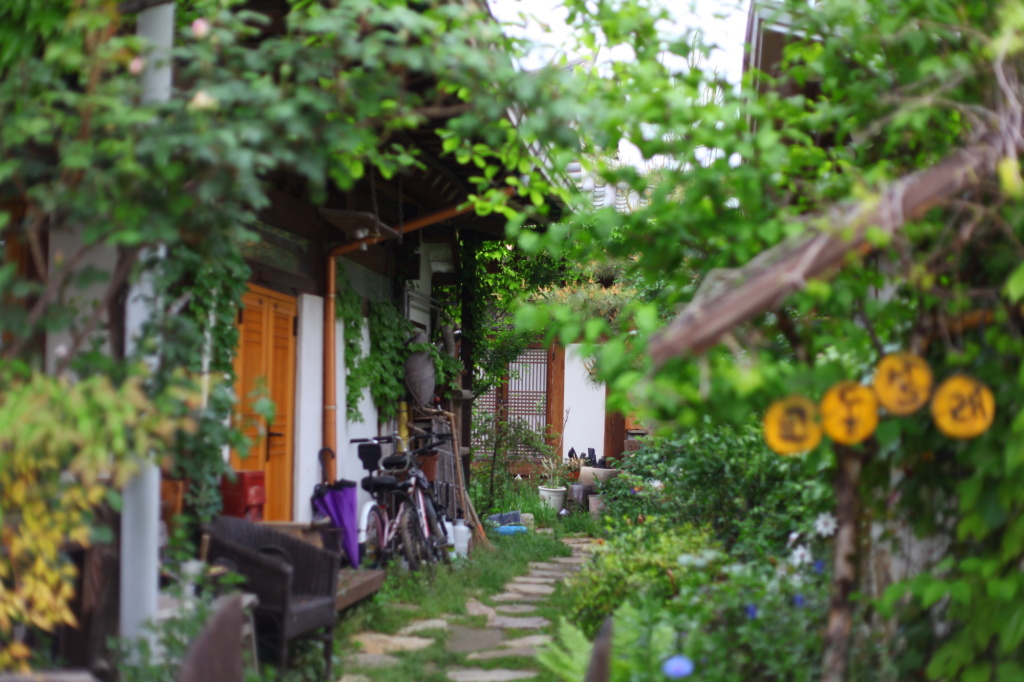
Visiting Jeonju should, be part of your itinerary for a first trip to South Korea. The city is really pleasant to discover and is not limited to Jeonju Hanok village. The rest of the city is also nice and there are lots of great restaurants.
If you are planning to visit Jeonju and still have questions, feel free to leave a comment below this post.
You can also find more information on the Jeonju Tourism Website .
- PLANNING YOUR TRIP TO KOREA
- VISIT GYEONGJU, THE FORMER CAPITAL OF SOUTH KOREA
- BEST DAY TRIPS FROM SEOUL
- EUNPYEONG HANOK VILLAGE NEAR SEOUL
- 99 BEST THINGS TO SEE IN SOUTH KOREA
- BEST THINGS TO VISIT IN SEOUL
- AWESOME THINGS TO DO ON JEJU ISLAND
- INCREDIBLE ADVENTURES NEAR SEOUL
- YANGYANG, KOREA’S SURF PARADISE
We are Hammer and Guillaume, a fun couple traveling the world. We will take you to some of the most amazing places on earth. Hammer is a yoga instructor and Guillaume a true water baby, enjoying all kinds of water sports. Follow-us to get the latest update about our travels.
Similar Posts
![jeonju travel guide 10 BEST DAY TRIPS FROM TOKYO [JAPAN GUIDE]](https://afuncouple.com/wp-content/uploads/2023/04/Best-things-to-see-in-Nikko-36-768x512.jpg)
10 BEST DAY TRIPS FROM TOKYO [JAPAN GUIDE]
Nikko, Hakone, Karuizawa, Kawaguchiko, Kamakura etc. there are so many amazing day trips from Tokyo! Here are the top 10 day trips from Tokyo

BAIYANG TRAIL IN TAROKO GORGE: COMPLETE HKING GUIDE
Experience Baiyang Trail in Taroko Gorge, a tranquil hike featuring the stunning the Baiyang Waterfall and unique Water Curtain Tunnel.
![jeonju travel guide 35 AWESOME THINGS TO DO IN JEJU [KOREA GUIDE]](https://afuncouple.com/wp-content/uploads/2020/10/Jeju-71-768x512.jpg)
35 AWESOME THINGS TO DO IN JEJU [KOREA GUIDE]
Jeju Island, often nicknamed the Hawaii of Asia, is a beautiful island situated in South Korea. Expect volcanos, beautiful beaches, great hikes etc.

VISIT OF CHANGGYEONGGUNG – OUR FAVORITE PALACE IN SEOUL
Changgyeonggung is our favorite palace in Seoul. It is located in Jongno-gu at the heart of Seoul. Here is a full guide about Changgyeonggung

ULTIMATE INDONESIA TRAVEL GUIDE: STEP-BY-STEP ITINERARY PLAN
A trip to Indonesia is often the adventure of a lifetime! In this guide you will find all you need to know to plan your trip to Indonesia.

BEST STOPS ALONG THE PINGXI LINE IN TAIWAN
Explore quaint villages, historical sites, and breathtaking landscapes along the iconic Pingxi Line in Taiwan.
Leave a Reply Cancel reply
Your email address will not be published. Required fields are marked *
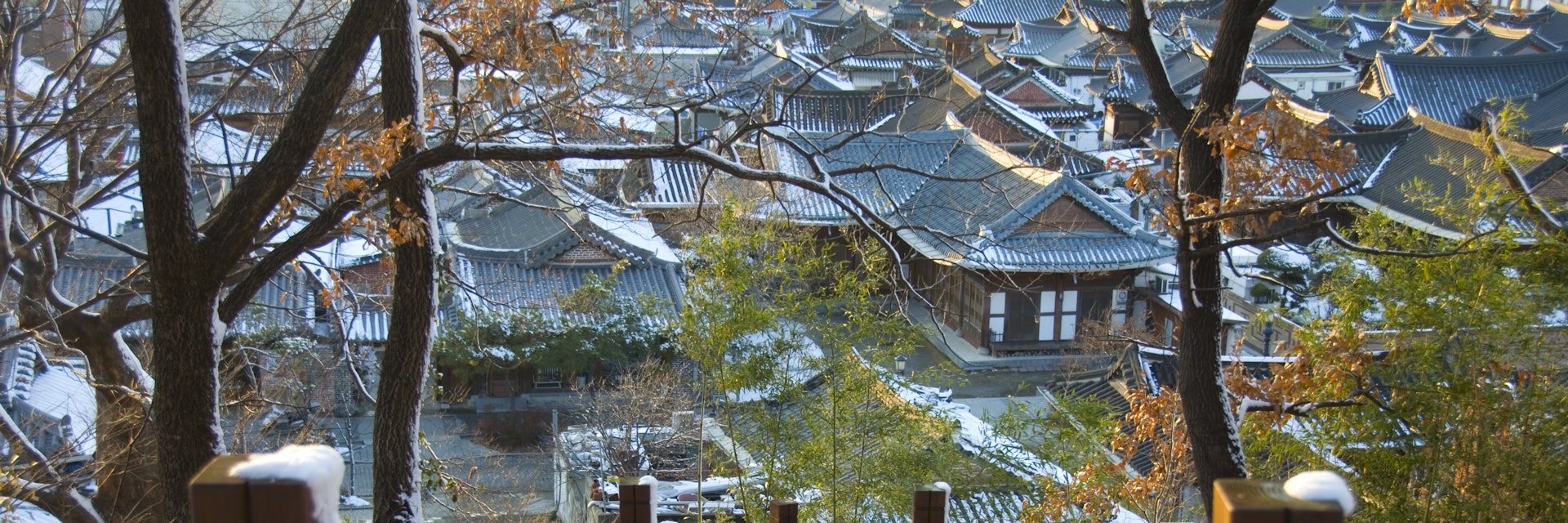
Getty Images/Moment Open
Jeonju (전주), the provincial capital of Jeollabuk-do, is famous for being the birthplace of both the Joseon dynasty and Korea’s most well-known culinary delight, bibimbap (rice, egg and vegetables with a hot sauce). Centrally located, the city is the perfect base from which to explore Jeollabuk-do, as it’s the regional hub for buses and trains.
Attractions
Must-see attractions.
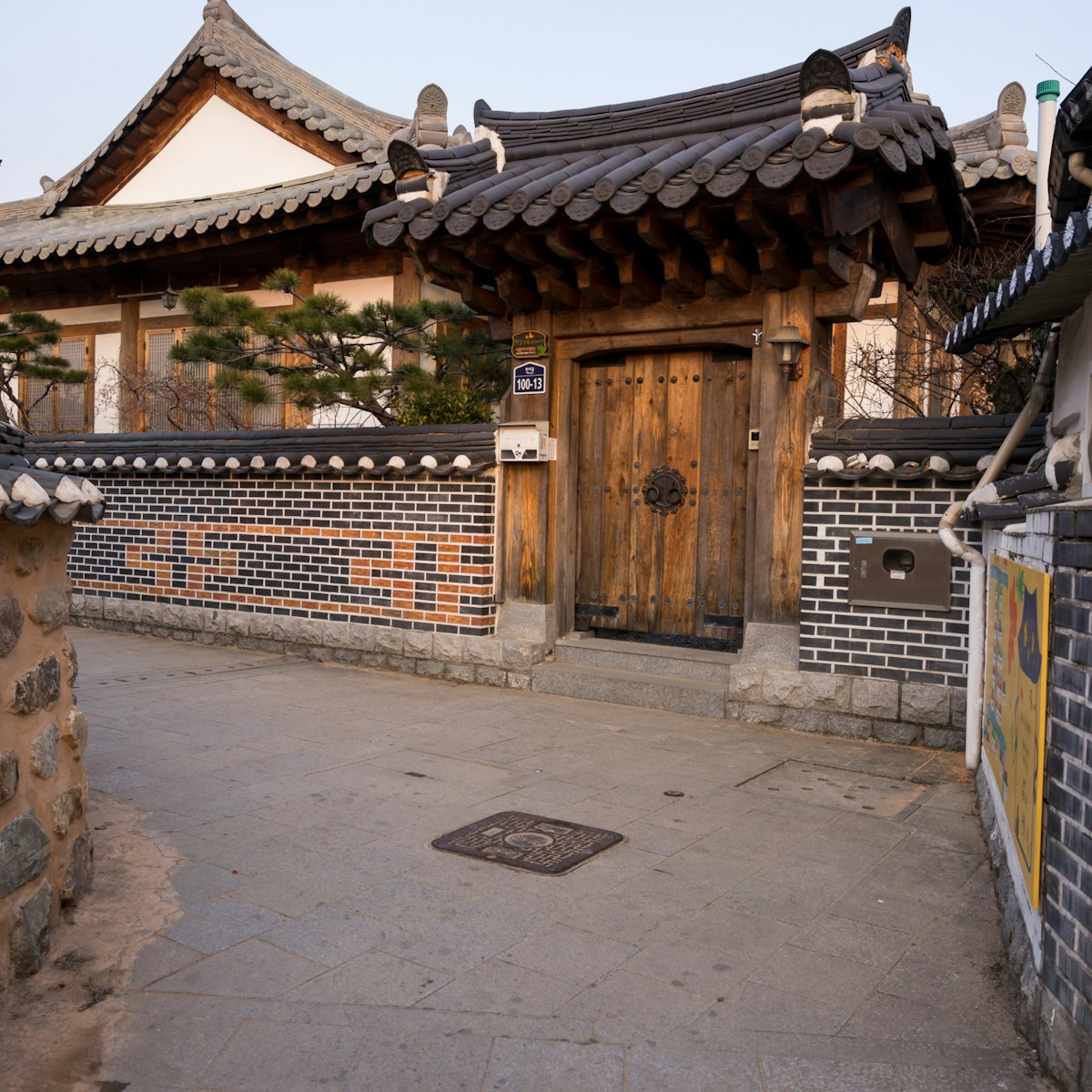
Jeonju Hanok Maeul
This maeul (village) has more than 800 hanok (traditional wooden homes), making it one of the largest such concentrations in the country. Virtually all of…

Jaman Village
Eclectic, colourful murals adorn the walls of this shantytown, on a hill overlooking Jeonju's hanok maeul. It's slowly gentrifying, meaning several spots…

Gyeonggijeon
This palace is home to shrines, storehouses and guardrooms relating to the Confucian rituals once held here. There is also a replica portrait of Yi Seong…

Deokjin Park
Join Korean couples who hire paddle boats in this charming park; particularly nice are the views of lotus lilies in July.

Pungnam-mun
This stone-and-wood gateway is all that remains of Jeonju’s fortress wall. First built in 1398 but renovated many times since, it's now the ornate…

Cheongyeonru Gazebo
Grab some street food and bring it here for a picnic in this large, public gazebo on the river.

Jeondong Catholic Church
The easiest landmark to find around the hanok village is a tall, red-brick church built by French missionary Xavier Baudounet where Korean Catholics were…

Jeonju Hanji Museum
Adjacent to a modern-day paper factory, this museum covers the history and processes involved in making hanji (traditional Korean paper) and also shows…
Latest stories from Jeonju

Jun 27, 2016 • 4 min read
For foreign travelers, Jeonju flies under the radar, but the city's historic architecture and buzzing food scene means that's likely to change.
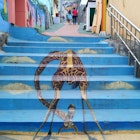
Aug 28, 2015 • 4 min read
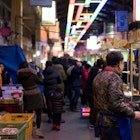
Apr 30, 2015 • 6 min read
in partnership with getyourguide
Book popular activities in Jeonju
Purchase our award-winning guidebooks.
Get to the heart of Jeonju with one of our in-depth, award-winning guidebooks, covering maps, itineraries, and expert guidance.

17 EPIC Things to Do in Jeonju
By: Author Sylvia
Posted on Last updated: January 23, 2024
Looking for the best thing to do in Jeonju? You have come to the right place.
Explore Jeonju, a vibrant city in South Korea, full of culture and history!
Boasting a wide range of attractions and activities, from traditional houses to annual events, Jeonju is a popular tourist destination.
Stop by traditional Korean markets, restaurants, and shops, and make sure to visit the numerous parks and temples for an unforgettable experience.
There is a really good chance that this post contains affiliate links. If you click one of them, we may receive a small commission (for which we are deeply grateful) at no extra cost to you.
Table of Contents
South Korea Essentials
- We have always found the best flights to Seoul on Momondo . You also have Skyscanner and recently WayAway , a new and promising travel aggregator, has popped up. It may be worthwhile to compare these three sites.
- Looking for more inspiration for your South Korea trip? Here are all our Korean posts.
- Use this step-by-step guide to plan your trip to South Korea.
- Looking for the perfect itinerary? Check out our 1 week Korea itinerary and 2-week Korea itinerary .
- Since foreign credit and debit cards don’t always work, we advise that you bring some spare cash.
- Don’t lose time upon arrival at the airport and order your Korea travel sim or portable WiFi device in advance so that it’s ready and waiting for you at the airport when you arrive.
- Consider getting the Discover Seoul Pass which covers 65 of Seoul’s best tourist attractions. It also has a T-money function that will save you ₩2,500 from buying a separate T-Money card. As an extra benefit, you get one free one-way A’rex Express train ride.
- Note that the Discover Seoul Pass is not always available. If it isn’t, you can see if they have the BTS edition. It’s a 24hr edition of the Discover Seoul Pass without the T-money option. Instead, you get a Korea Tour T-money Card as a bonus. The BTS edition covers the same attractions as the regular Discover Seoul Pass. Here is more information about this pass and other Seoul discount passes.
- Visiting the DMZ is on the bucket list of many travelers. Check out the best DMZ tours here.
- Looking for accommodation? Look at this list of highly-rated boutique hotels or this list of cool hotels in Seoul . We also have a selection of Airbnb’s in Seoul . Accommodation posts for other places in South Korea are here .
- Here is a post with more travel tips for Korea.
- Last but not least, make sure you have travel insurance .

Best Things to do in Jeonju
Whether you’re into food, tourist sites, or local festivals, Jeonju surely has something for you.
Tour the Jeonju Hanok Village, visit the Jeonju Korean Traditional Wine Museum or attend the Jeonju International Film Festival. That and there’s so much more.
Check out these places and activities you can explore in Jeonju.

Explore Jeonju Hanok Village
Jeonju Hanok Village is a traditional Korean village located in Jeonju, South Korea.
It is one of the most popular tourist destinations in the country and is renowned for its numerous traditional hanok houses
The structures of these houses are made from natural materials such as wood and paper.
The village is also known for its rich cultural heritage and diverse attractions.
Explore the village by taking a guided tour, visiting local markets, and participating in a variety of unique experiences, such as traditional tea ceremonies and cooking classes.
The village is also home to a variety of museums, palaces, and temples, making it an ideal destination for those interested in learning more about Korean culture.
Overall, Jeonju Hanok Village is a great place to explore and experience traditional Korean culture.
Best hanok stays in Seoul.

Visit the Gyeonggijeon Shrine
The Gyeonggijeon Shrine is a popular tourist destination in Jeonju. It is dedicated to King Taejo, the founder of the Joseon Dynasty.
It is located in a beautiful park and surrounded by historical buildings.
Admire the royal portrait of King Taejo, and several other artifacts related to the dynasty.
The shrine also houses a museum and offers guided tours.
Don’t forget to explore the surrounding area, which is home to many traditional Korean restaurants and shops.
Gyeonggijeon Shrine is a great place to experience traditional Korean culture and history.

Spend the Night in a Traditional Hanok
Sleep in a Hanok to immerse yourself in traditional Korean culture!
Enjoy a unique and cultural experience as you admire the curved tiled roof, central courtyard, and sunken floor of the centuries-old structure.
Built with natural materials such as wood, stone, and clay, Hanoks are designed to be in harmony with the environment and come with traditional furnishings and decorations.
Connect with nature, learn about traditional Korean culture, and find a sense of peace and tranquility by spending the night in a Hanok.
Here is a list of amazing hanok houses in Jeonju.

Rent a Hanbok
Rent a Hanbok and experience traditional Korean culture while exploring Jeonju!
Hanboks, are a traditional Korean garment consisting of long, billowy skirts and jackets with bright colors and intricate embroidery.
They can be found in stores specializing in Hanbok rentals.
Prices range from 10,000 to 50,000 Korean Won, and customers can choose from a variety of fabrics and styles.
Accessories such as hats, jewelry, and shoes are also available to complete the look.
If you want to immerse yourself in Korean culture, we would recommend renting a Hanbok.
Klook offers several packages for a Hanbok photoshoot and these will surely make the most out of your Korean experience.
Klook Travels’ most popular Hanbok Packages
- The Hanbok Experience with Korean Hairstyling
The package has over 500 hanboks to choose from, with staff glad to assist you in finding the most suitable match. Showcase your outfit in one of the many selfie studios and film sets they have available.
The package has everything you need to make your Hanbok experience complete.
The package includes 1.5 hours of traditional hanbok rental and basic hairstyling.
Check prices and availability: Hanbok Experience
- Premium Hanbok Rental (Hanboknam Premium Store at Jeonju)
The premium Hanbok rental is the perfect option for those looking to rent a hanbok to take photographs at the nearby palace.
Have professionals braid your hair in the traditional style, and add a Daenggi, a traditional Korean ribbon to your hair as a colorful accessory.
The package includes a premium hanbok rental, accessories, basic hair styling, and an inner skirt.
Klook Travels Hanbok Rentals allows you to join the growing trend of renting traditional Korean hanbok clothing for photo shoots and fun, allowing you to live out your favorite historical K-drama fantasy!
Check prices and availability: Premium Hanbok Rental

Try Local Food
Experience Jeonju’s street food scene with its famous Jeonju Bibimbap, tasty chicken skewers, churros, and waffles.
Try the signature rice bowl dish, Jeonju Bibimbap , made with vegetables, beef, and gochujang, accompanied by a fried egg and sesame oil.
For a quick snack, sample the grilled chicken skewers marinated in a sweet and spicy sauce and served with kimchi.
Churros are a sweet delight, fried dough sticks usually served with a chocolate or sweet dipping sauce.
Finally, don’t miss Jeonju’s famous waffles – savory fried waffles wrapped around bibimbap ingredients.
Explore Jeonju’s street food and find something for everyone.

Sip on Makgeolli
Consume makgeolli, a traditional Korean rice wine, since the Goryeo Dynasty.
Visitors can experience a unique local atmosphere at the famous makgeolli alleys in the Samchundong and Seosindong districts of Jeonju.
Order a makgeolli kettle to get served with a variety of dishes and appetizers at a typical makgeolli venue.
Explore the Seosindong district for more modern dishes. Makgeolli is available in three types: clear, dark, and chestnut.
Not only a popular alcoholic beverage, but makgeolli also offers probiotics and fiber for nutrition.

Jeonju Hyanggyo Local Confucian School
Located in the heart of Jeonju, South Korea, Jeonju Hyanggyo Local Confucian School provides a unique and immersive experience for visitors.
Dating back to the Joseon dynasty, the school is one of the oldest Confucian schools in South Korea and a popular tourist destination.
Explore the school grounds, including the impressive two-story main building, Hyangdan, which was constructed in 1776 and is surrounded by a large wall.
Inside the school, you can find many artifacts and documents that provide insight into Confucianism during the Joseon dynasty, as well as take part in traditional rituals and ceremonies.
Whether you are a history buff, a culture lover, or just looking for a unique experience, Jeonju Hyanggyo is a great place to visit.

Visit the Jeongdong Catholic Cathedral
Another highlight is the Jeongdong Catholic Cathedral.
This church was built in 1883 and is a popular tourist attraction.
Admire the impressive façade and large bell tower, and take in the beautiful views of the city.
Inside, marvel at the murals, stained glass windows, and other religious artwork.
Take a guided tour to learn more about the culture and history of South Korea, or explore the grounds for free.
Discover a unique and historical place when you visit the Jeongdong Catholic Cathedral.

Shop ‘Til You Drop
Go shopping at the Jeondong Shopping Mall, browse the Jeonju Traditional Market for handmade items or sample snacks from street vendors in the Hanok Village.
The Jeondong Shopping Mall offers luxury and local Korean brands in the heart of the city, while the Jeonju Traditional Market is renowned for its traditional Korean food and products.
The Hanok Village is a great place to find traditional Korean products and snacks, such as tteokbokki ( a simmered rice cake) and kimbap (Korean sushi).
Overall, Jeonju offers a unique shopping experience with its range of traditional and modern stores, so visitors can find a variety of items to purchase.

Take a Picture of the Pungnam Gate
Built in 1734, Pungnammun Gate has become an iconic symbol of Jeonju and one of the most important cultural attractions in the region.
Despite suffering severe damage from a fire in 1767 and the Imjin War, the Pungnam Gate still stands as a remarkable historical and cultural landmark.
Capture a photo opportunity of the Gate at night, when its detailed and colorful features are illuminated by spotlights.

See Jeonju From Above
Hike up a hill to Jeonju Omokdae and Imokdae, two important tourist attractions in Jeonju, South Korea.
At the summit, you can enjoy a stunning view of the city and Jeonju Hanok Village below.
These sites provide an incredible insight into the city’s history and allow you to appreciate the architecture from the Joseon Dynasty.
For an authentic experience of Jeonju, visiting these two sites is a must.

Visit some Free museums
Head to Jeonju, South Korea for a unique and exciting winter activity.
Explore the Traditional Wine Museum to learn about the history of traditional Korean wine-making and sample unique flavors.
Don’t miss the Jeonju Hanji Museum for a wide range of traditional Korean handmade paper.
Check out the Jeonju Crafts Exhibition Hall to appreciate the beauty of traditional Korean crafts.
Discover the culture and history of Jeonju at one or more of these free museums.

Wander around Jaman Mural Village
Wander through the winding cobblestone streets of Jaman Mural Village, explore traditional hanok homes, and marvel at the stunning murals that adorn the walls.
This vibrant cultural attraction in South Korea was created by a group of local artists and has since become one of the most popular tourist attractions in Jeonju.
This is also a great place to purchase your souvenirs.
Jaman Mural Village offers a great opportunity to get a taste of traditional Korean culture and to learn more about the history of Jeonju.

Stroll around Deokjin Park
Situated in the center of Jeonju, South Korea, Deokjin Park is a tranquil oasis known for its traditional Korean architecture and floating lotus flowers.
Stroll around the park, admiring the beautiful scenery and pavilions, and enjoy the variety of activities such as boating, a cafe, and a small zoo.
In the spring, the vibrant colors of the cherry blossoms around the perimeter of the park provide an extra treat.
With its large central pond and peaceful atmosphere, Deokjin Park is the perfect place to relax and enjoy the beauty of Jeonju.

For the BTS fans
Explore and visit the same sites of the popular K-Pop group BTS on their summer package tour in 2019, located in Jeonju.
Enjoy the rides and stand where the BTS members once stood at the Jeonju theme park Dreamland, where many of their iconic photo shoots took place.
At the Wibongsansung wall, which is also part of the BTS tour, take an epic photoshoot against the backdrop of its stone walls and natural scenery.
This historical landmark served as a defensive barrier during the foreign invasion in 1675 during King Sukjong’s reign.
Take a trip back in time with a visit to the Awon Traditional House, located just 40 minutes away by car!
BTS fans won’t want to miss this, as the group stayed in the hotel for more than 5 nights.
Entry to the hotel includes a free drink at the coffee shop, plus access to the art gallery, which featured shots from the BTS photobook.
Those on the two-day tour can even stay in the same hotel room as BTS!

Visit the Film Locations of Moonlight Drawn by Clouds
Jeonju is also home to the popular soap opera Moonlight Drawn by Clouds.
With its picturesque landscape and many cultural attractions, it has become a popular destination for tourists to explore the film locations of this iconic soap.
Visitors can traverse the Hanok Village, a traditional Korean village, to view the locations where the characters lived and worked.
Gyeonggijeon Shrine, an essential part of the show, offers visitors an opportunity to admire its history and beauty, as well as its pavilions, pond, and garden.
The City Hall of Jeonju, a modern building with many scenes filmed, allows tourists to explore the area and learn more about the city’s history and culture.
Also Read: 25 Best Things to Do in Korea for High-Flying Fun
Best Things To Do Near Jeonju
Explore Jeonju, a captivating city in South Korea, and discover its wealth of culture and history.
Take part in the numerous activities and attractions within the city or venture out to the nearby area for a unique experience.

Iksan
Iksan is an easy day trip from Jeonju.
Explore the Iksan National Museum to discover a range of artifacts and documents that showcase Korea’s history and culture.
The city is known as “The City of Jewels”, as is the leading domestic jewelry manufacturer in South Korea.
How To Get There
Travel from Jeonju to Iksan is possible by bus, car, or train.
Take the bus from 1-2 (Terminal. Dongsan Village), in Jeonju.
The journey takes approximately one hour and 26 minutes and passengers can buy a ticket at the station.
To travel by car, take Highway 26 and turn onto Highway 23 shortly after crossing the Mangyeong-Gyo bridge.
The drive takes around one hour and 25 minutes.

For outdoor activities, head to Mokpo, a port city located on the southwestern tip of the peninsula.
Here, visitors can find a variety of water sports and hiking trails, as well as the Mokpo National Maritime Museum.
Travel from Jeonju to Mokpo is easy. Take the intercity bus from the Jeonju Intercity Bus Terminal.
The bus will be labeled Jeonju-Mokpo Intercity Bus.
The journey takes approximately two and a half hours and will end at Moko Bus Terminal. Other options include taxi, car hire, and train.

Damyang
Finally, just a few miles north of Jeonju is Damyang, home to the beautiful Damyang Bamboo Forest and the Damyang Juknokwon Bamboo Garden.
Nature lovers must visit these spots, which are perfect for photography.
Traveling from Jeonju to Damyang is easy and convenient.
Take the bus labeled Jeonju-Gwangju Express Bus, from Jeonju Express Bus Terminal.
You’ll arrive in U Square in Gwangju. From there walk 1 minute to the Gwangju Bus Terminal and take bus 311-1 (Bongsan. Cheongjeon Apartment. Damyang).
The bus ends its journey at Damyang-guns main terminal, making the trip 2 and half hours in total.

Maisan Tapsa Temple
Located in the city of Jinan in South Korea, Maisan Tapsa Temple is a popular destination for its beautiful landscapes, including a large lake and nearby mountains.
Constructed in 1885, the temple still stands today and is said to be a gathering place of the gods and a place of peace.
Offering a unique experience with its stunning views and peaceful atmosphere, Maisan Tapsa Temple is well worth the journey to take in its historic beauty and surrounding scenery.
Visitors can easily access the temple, located 15 kilometers southwest of Jeonju, by car, bus, taxi, or train from Jeonju to Jinan station, followed by a walk or taxi ride.
Jinan Red Ginseng Spa
Experience the unique offerings of Jinan Red Ginseng Spa in Jeonju, South Korea.
The spa offers traditional Korean treatments, such as ginseng baths, saunas, massage therapy, and more.
All treatments are based on ancient Korean medicinal principles, aiming to promote health and wellness.
Enjoy traditional Korean cuisine, teas, and other beverages as you relax in the tranquil atmosphere.
Their signature red ginseng extract is used in all treatments and is said to have calming and rejuvenating properties, reduce stress, and improve skin tone.
The spa also features acupressure, reflexology, yoga, and tai chi classes to further promote relaxation and rejuvenation.
Visit Jinan Red Ginseng Spa and discover the benefits of traditional Korean healing.
From Seoul Central City Bus Terminal, you may take an express bus to Jinan.
The bus schedules are 10:10 AM and 3:10 PM.
Alternatively, from Jeonju Intercity Bus Terminal, you may take a bus to Jinan.
The earliest bus runs at 06:05 in the morning and is available throughout the day until 09:05 PM with 10-40min intervals.
You may also take a taxi to Jinan Red Ginseng Spa from the Jinan Bus Terminal.

FAQ You may have about your trip to Jeonju
Is jeonju worth visiting .
Absolutely! Jeonju is a wonderful city in South Korea, known for its traditional architecture, culture, and cuisine.
Tourists can explore the Jeonju Hanok Village, the cultural heart of the city where visitors can stay in traditional Korean guesthouses and experience traditional Korean cuisine.
The city also offers a variety of outdoor activities, from leisure strolls through the city’s lush parks to more intense mountain hikes.
Jeonju is also known for its vibrant nightlife and shopping scene, making it an ideal destination for anyone looking to explore South Korea and its culture.
What is Jeonju known for?
Jeonju, located in the North Jeolla province of South Korea, boasts a rich cultural heritage and traditional food.
It is famous as the birthplace of Jeonju bibimbap, a renowned Korean dish.
Visitors can explore the Jeonju Hanok Village, a traditional Korean village with over 800 traditional Korean-style houses and Art lovers can marvel at the museums and art galleries in Jeonju.


How many days in Jeonju?
Spend at least one night in Jeonju to fully experience all it has to offer.
You’ll be impressed by the Hanok Village, Pungnammun Gate, Gyeonggijeon Shrine, Jeondong Catholic Cathedral, and Jeonju Zoo.
One day may be enough to visit some of these places, but an overnight stay will provide you with the chance to explore even more.
You can certainly do a day trip to Jeonju from Seoul, but we highly recommend that you stay overnight to get the most out of your visit.
How to get to Jeonju
Jeonju is easy to reach from Seoul.
Take the KTX straight into Jeonju. This only takes about 1.5 hours.
Another slower, alternative would be to take the express bus down to Jeonju.
Where to stay in Jeonju?
Experience a traditional Korean stay in a Hanok, indulge in a luxurious stay at the Ramada Plaza Jeonju, Hotel Cielo Jeonju, or the Jeonju Grand Hotel, or save money by choosing the Jeonju Kukje Hotel, or the Jeonju Central Hotel.
For a unique experience, try a stay at a Hanok like the Joy Hanok Stay or the Jeonju Hanok Village Stay.
Jeonju offers a wide range of accommodations to suit every taste and budget, making it a popular tourist destination in South Korea.
Also Read: 16 Best Hanok Stays in Jeonju (2023 Guide)
Jeonju is a great city to explore, with plenty of activities, delicious food, and amazing sights. It is worth visiting and should not be missed!
- South Africa
- Afghanistan
- North Korea
- Adventure + Outdoors
- Amusement Parks
- Backpacking Trips
- Boating + Cruises
- Budget Travel
- Bus + Train Travel
- Coasts + Islands
- Country Trips
- Fall Vacations
- Family Vacations
- Green Travel
- Heritage + History
- Honeymoons + Romance
- Inspiration + Guide
- Landmarks + Attractions
- LGBT Travel
- Markets + Bazaars
- National Parks + Reserves
- Nature + Wildlife
- Parks + Gardens
- Pets + Animals
- Photography
- Airlines + Airports
- Budgeting + Currency
- Business Travel
- Celebrity Travel
- Customs + Immigration
- Deals + Rewards
- Family Travel
- Hotels + Resorts
- Luggage + Packing Tips
- Offbeat News
- Photography Tips
- Responsible Travel
- Solo Travel
- Tech + Gear
- Travel Etiquette
- Travel Warnings
- Bars + Clubs
- Celebrity Chefs
- Restaurants + Cafés
- Wine + Vineyards
- Beach Hotels
- Boutique Hotels
- Hotel Openings
- Hotel Reviews
- Luxury Hotels
- Mountain + Ski Resorts
- Spa Resorts
- Vacation Rentals
- Asia Cruises
- European Cruises
- Festivals + Events
- Museums + Galleries
- Style + Design
- Travel’s Best
- Hotel with Agoda.com
- Hotel with Booking.com

What to eat in Singapore? — 10+ must-eat & best street…
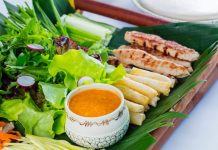
Must eat in Nha Trang — 45+ best street food in…

How to prepare for trekking in Nepal? — 10+ Nepal trekking…
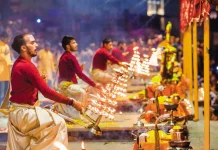
Where to go & what to do in Varanasi? — 15+…
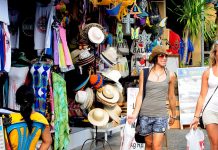
What to buy in Indonesia? — Top +9 famous gifts, souvenirs…
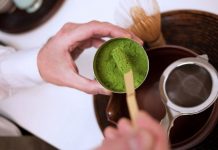
What to buy in Kyoto? — 31+ must-buy Kyoto souvenirs, gifts…
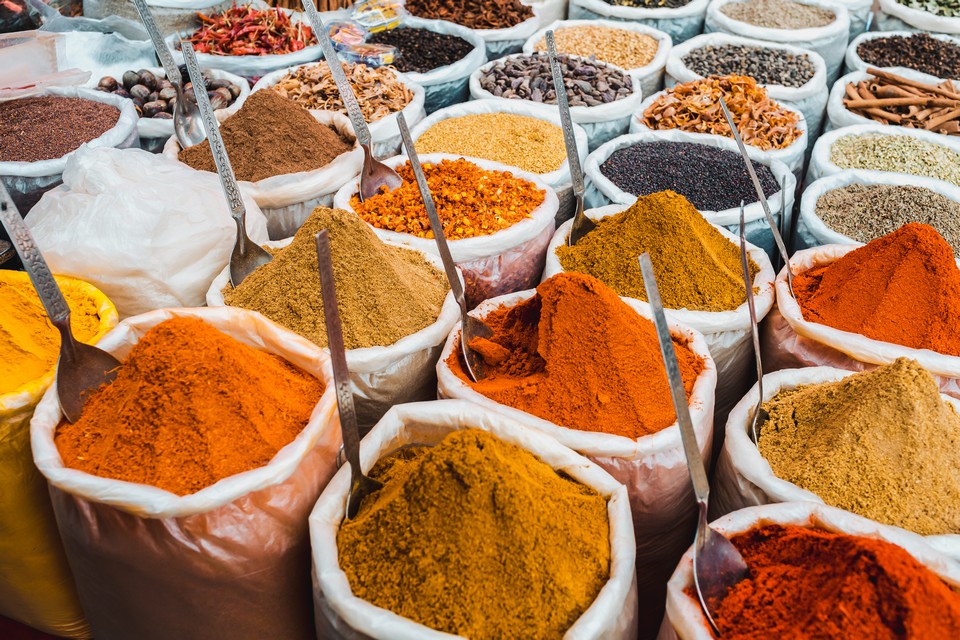
What to buy in India? — 29+ best gifts from India…

India trip tips — 9+ things to know before going to…

All about tips in Nepal — How much to tip in…

Cambodia travel tips — 15+ what to know & things to…

Must eat in Hong Kong — 7+ must eat & must…

Must eat in Georgetown — 10+ famous, must-eat & best street…

Top hotels in Siem Reap — 8+ best places to stay…

Top hotels in shanghai — 15+ best hotels in Shanghai

Top hotels in Malacca — 10+ good & best hotels in…

Top places to stay in Bali — Top 10 best areas…

10 must-know things for your best first time European river cruise

Top 3 best luxury cruises in Halong Bay, Vietnam

Cherry blossom festival Korea 2024 — Top 5 cherry blossom festivals…

Ghibli museum blog — The fullest Ghibli museum guide for first-timers

Kyoto festival — Top 10 best events & most famous festivals…

National Palace Museum Taipei blog — What to see in National…

Japanese waterfall — Top 10 most beautiful waterfalls in Japan in…

19+ most beautiful towns in Europe every tourist need to visit…

Georgia travel photos — 20+ captivating photos show Georgia is heaven…

Explore Damnoen Floating Market — The oldest floating market of Thailand

Visiting Fenghuang Ancient Town — One of the most charming ancient…

Mekong Delta travel blog — Beyond rivers of Southwestern Vietnam

14 reasons why you should travel when you are young

Shigaraki Tanuki – An animal symbol of good luck in Japan

Living in the charms of cave houses in Andalucia, Southern Spain

20+ jaw-dropping tiny homes around the world
- South Korea
- Trip Inspiration
Jeonju travel blog — The fullest Jeonju travel guide blog for a wonderful trip to Jeonju Hanok Village, South Korea
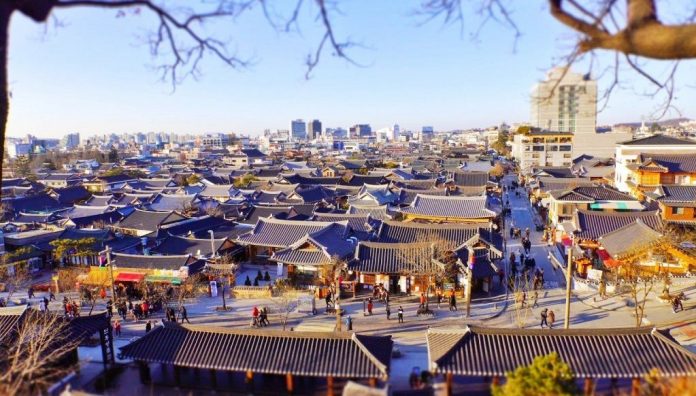
Jeonju Hanok together with Bukchon Hanok and Namsan Hanok are the three famous ancient villages of Korea, but only have Bukchon and Jeonju are two ancient villages that really still have people reside and living. For those who have traveled self-sufficient to South Korea is sure to be familiar with the ancient village of Bukchon in Seoul is so beautiful and very lovely. However, little is known about Jeonju, an ancient village about 2 hours drive from Seoul, considered a precious jewel of Korea with cultural features and ancient architecture are well preserved. If you are too stifled by the hustle and bustle of urban life, let’s visit Jeonju to breathe in fresh air, explore calm and peaceful life. What to do in Jeonju? Let’s check it out our Jeonju blog (Jeonju travel blog) — The fullest Jeonju travel guide blog for a wonderful trip to Jeonju Hanok Village, South Korea from how to get to Jeonju Hanok Village, best places to visit, top things to do in Jeonju to exploring Jeonju food, Jeonju street food below.
What to buy in Korea? — Top +23 cheap, famous & best things to buy in Korea
- South Korea itinerary 10 days — How to spend 10 days in South Korea perfectly?
- Busan 2 day itinerary — How to spend 2 days in Busan, South Korea?
- Seoul travel blog — The fullest Seoul travel guide blog first-timers
- Busan itinerary 4 days (Busan 4D3N itinerary) — How to spend 4 days in Busan perfectly?
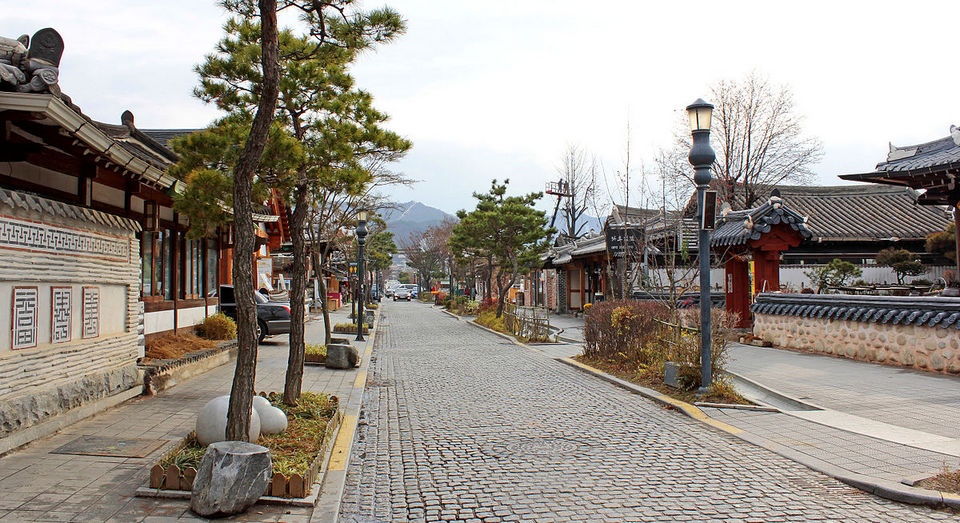
WARNING: Jeonju Hanok Village in the fall with yellow leaves, red leaves filled the sky, alternate with the ancient roofs, create the stunning scenery that make you want to stop breathing. If you do not want to come here, then to attach do not want to go home, you should not visit here in the fall, dear friends!
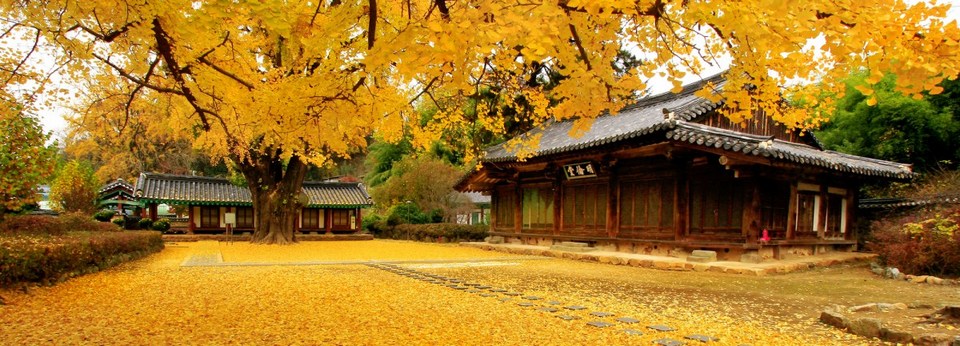
Jeonju blog: How to get to Jeonju from Seoul?
Jeonju is not too far from Seoul and there are many types of transportation that you can use.
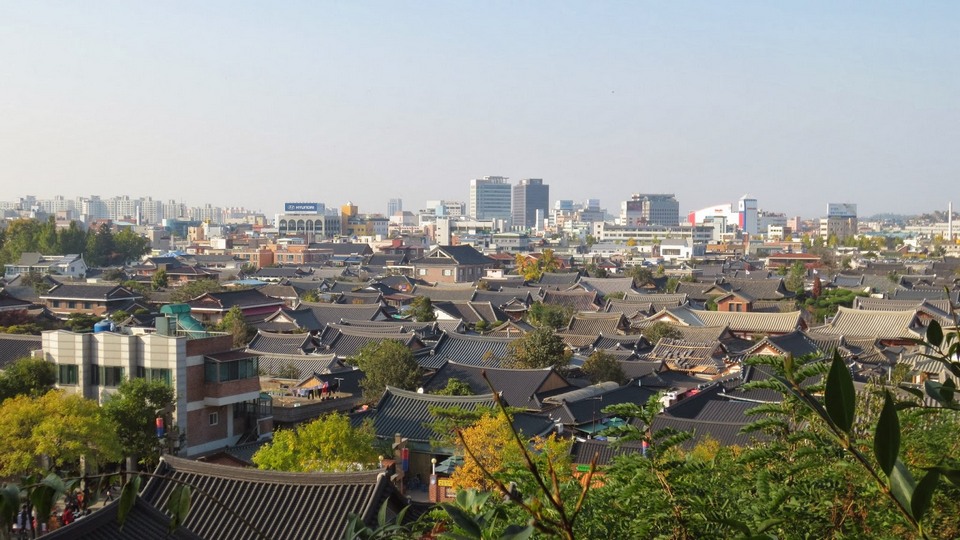
Bus: From Express Bus Terminal (Honam line – Central City) take the bus to Jeonju Express Bus Terminal, the ticket prices from 12,800 KRW to 187,000 KRW depending on the type of regular car or high quality car. Travel time is about 2 hours and 30 minutes.
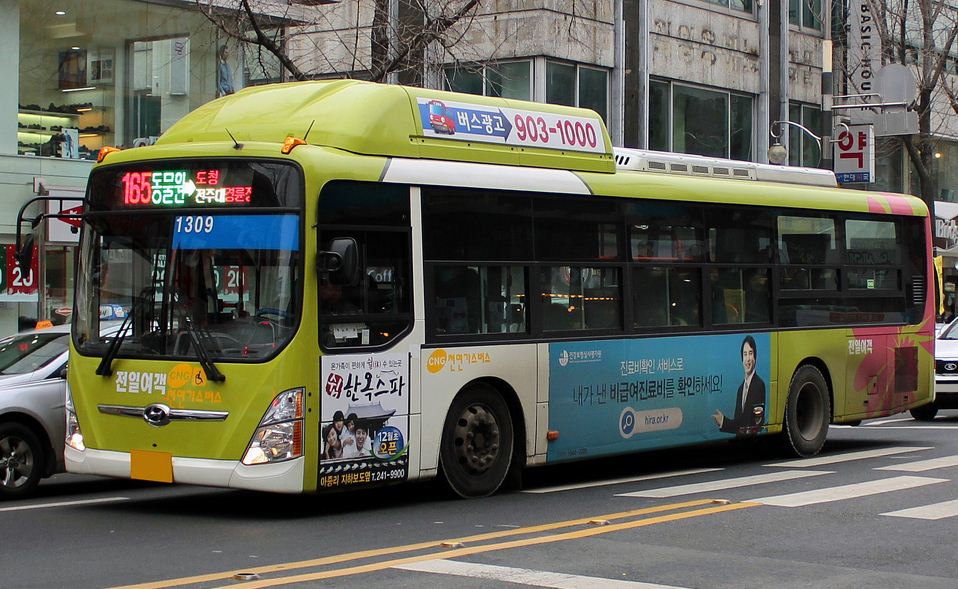
KTX (Korea Train eXpress): From KTX Station take the train to KTX Jeonju (because it is a high speed train, it takes only 2 hours to go), the retail ticket price is about 31,000 KRW / trip. However, if you plan to travel to other cities such as Busan, it will save you a lot if you purchase KORAIL PASS Card – the magical card used to go any type of train of the railway system of Korea, unlimited number of times get up and down, very convenient and comfortable. You can find out more about this card at HERE .
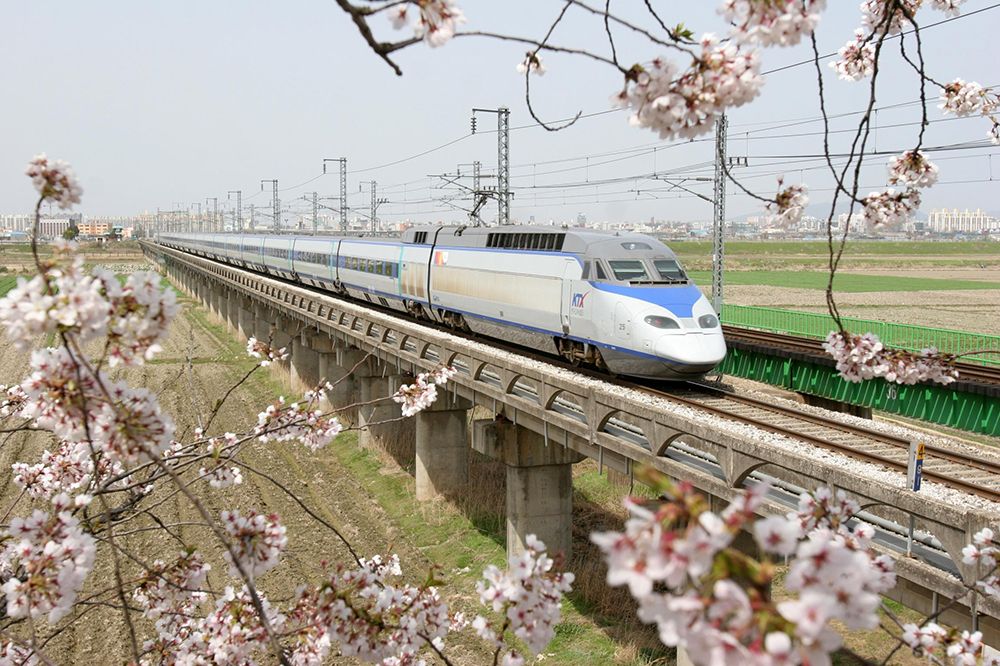
Jeonju travel blog: Getting around Jeonju.
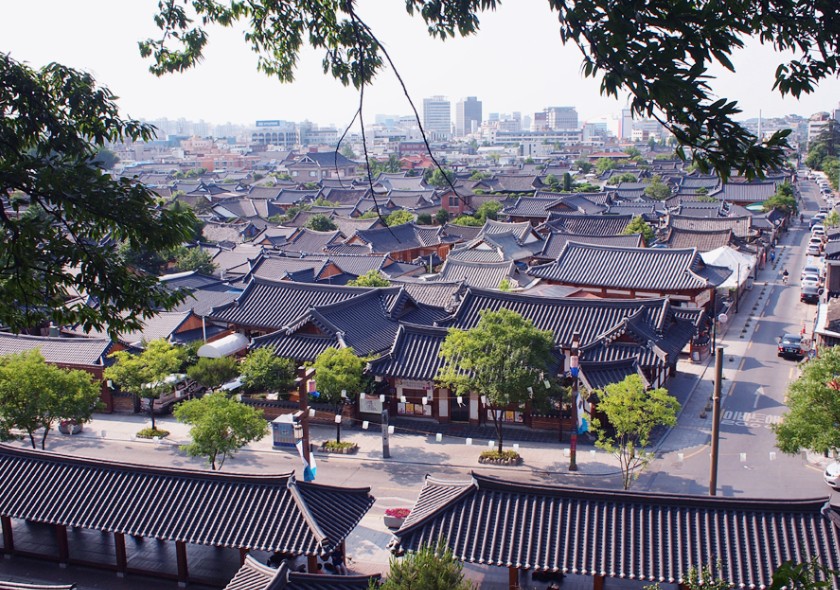
Jeonju is an old village that is not too wide, so all the tourist attractions will not be too far apart, you can walk easily (we actually advise you to walk to see, enjoy the landscape and feeling the gentle and slowly life here, remember to prepare sim 4G or pocket wifi to find information or check the road. If you feeling lazy or bring a lot baggage or not confident about finding the road, let’s take taxi.
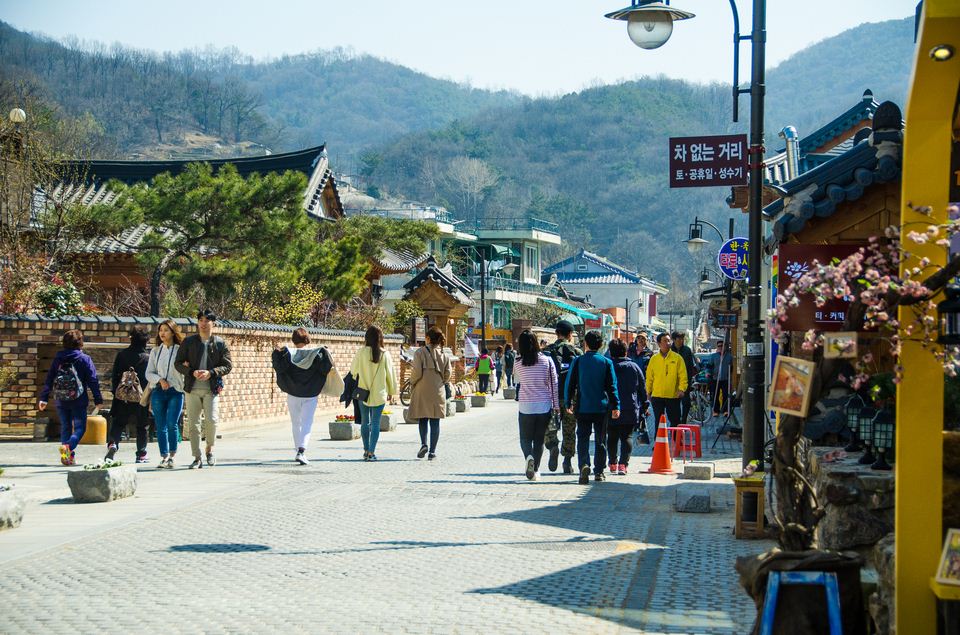
Jeonju travel blog: Where to stay?
Below are some best cheap, budget, mid-range and upscale hotels with good ratings and reviews you can refer to.
Gaeunchae Hanok Stay (Address: South Korea, Jeollabuk-do, Jeonju, Wansan-gu, Pungnamdong 3(sam)-ga, 38-5 / +82 10-6345-5267), a guesthouse with room rates from $39/night. (Check rates and reviews on Agoda.com or Booking.com ).
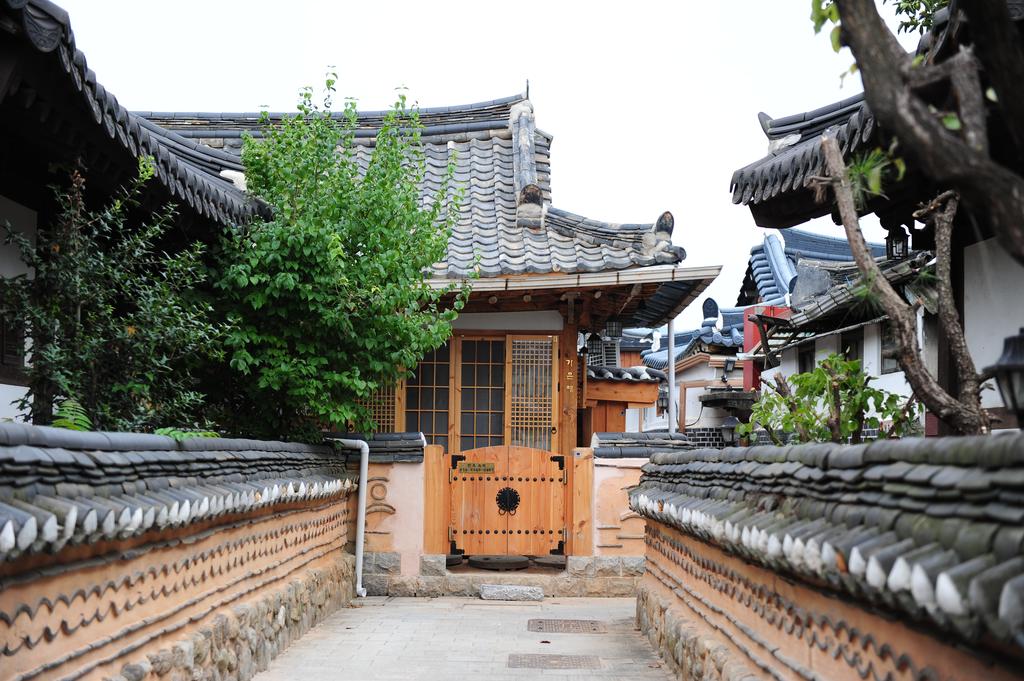
Roni Tourist Hotel Jeonju (Address: 74-50, Jeonjugaeksa 4-gil, Wansan-gu, 54999 Jeonju, South Korea / +82 63-280-7700), a 3-star hotel with room rates from $59/night. (Check rates and reviews on Agoda.com or Booking.com ).
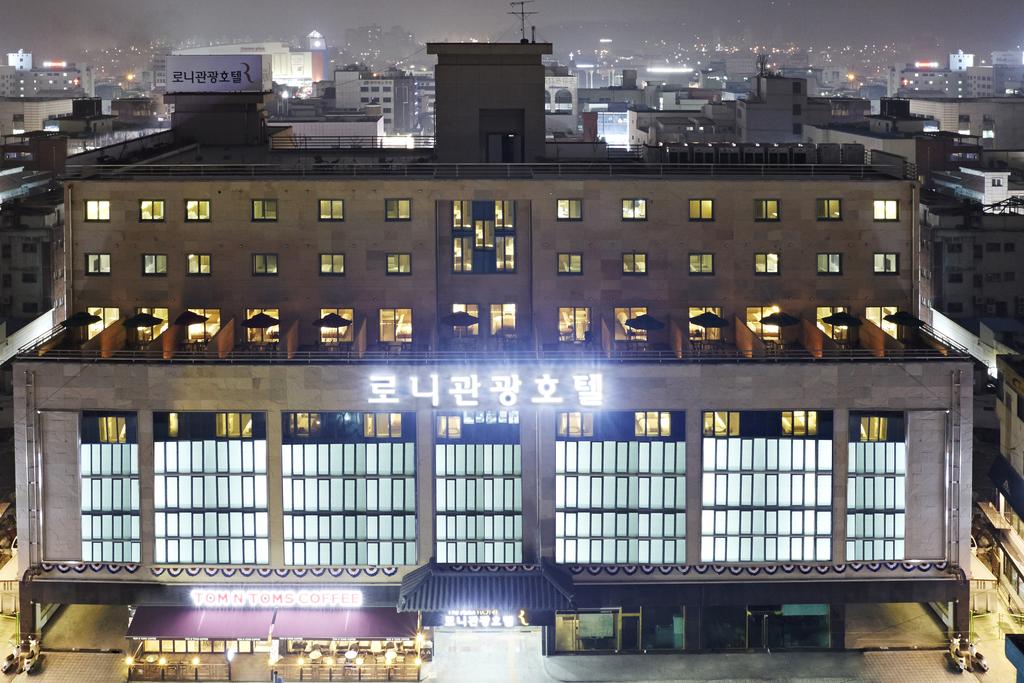
Dukmanjae Hanok Hotel (Address: 15-6 Eunhaeng-ro, Pungnam-dong, Wansan-gu, Jeonju, Jeollabuk-do, South Korea / Phone: +82 10-9123-6271), a 2-star hotel with room rates from $31/night. (Check rates and reviews on Agoda.com or Booking.com ).
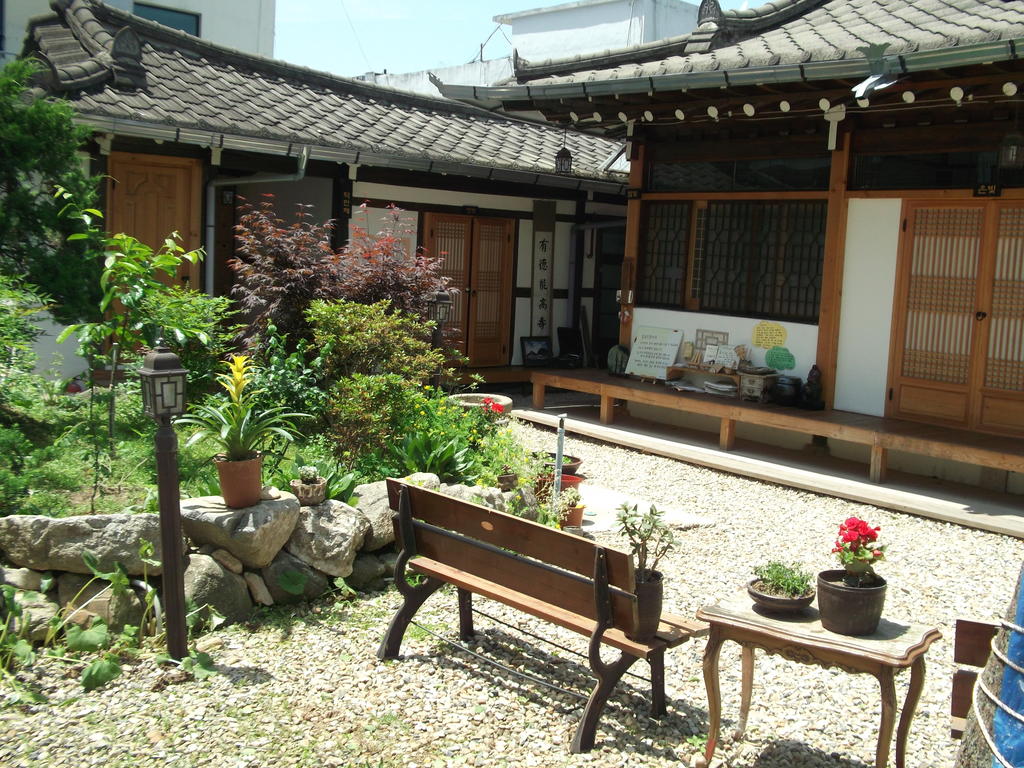
Blueboat Hostel Jeonju (Address: South Korea, Jeollabuk-do, Jeonju-si, 완산구 충경로 75 2층 / Phone: +82 10-6545-9049), a 2-star hotel with room rates from $11/night. (Check rates and reviews on Agoda.com or Booking.com ).
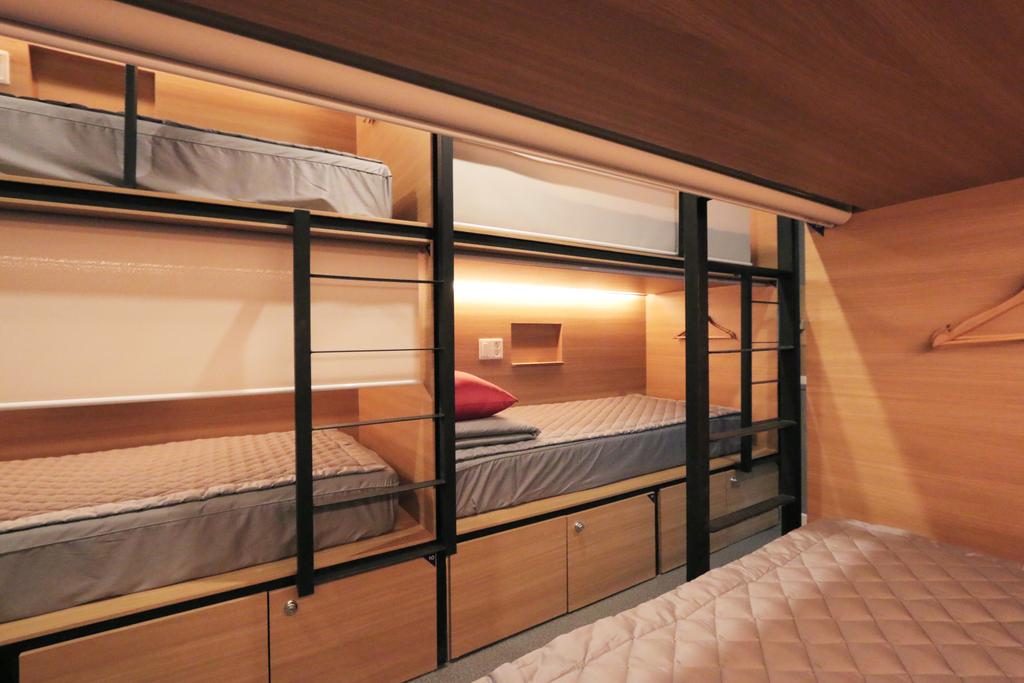
Benikea Jazz Around Hotel (Address: 182 Jungeonsin-ro, Uadong 2(i)-ga, Deokjin-gu, Jeonju, Jeollabuk-do, South Korea / Phone: +82 63-247-5900), a 3-star hotel with room rates from $77/night. (Check rates and reviews on Agoda.com or Booking.com ).
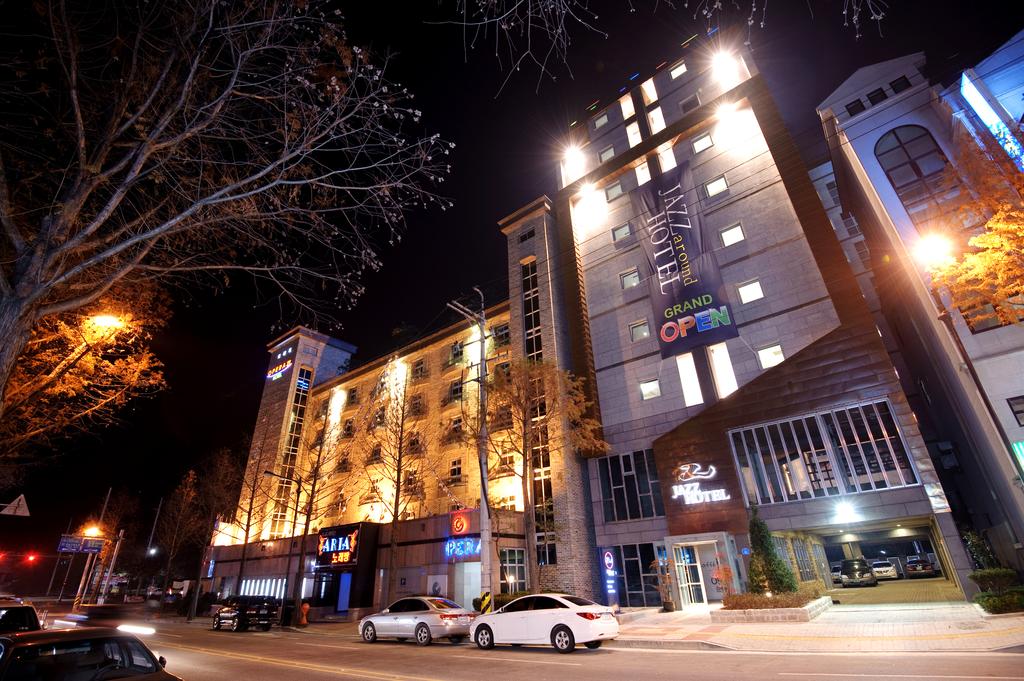
Bu Kyung Dang (Address: 99-5, Hanji-gil, Wansan-gu, Jeonju-si, CB, South Korea / Phone: +82 10-2604-7358), a guesthouse with room rates from $33/night. (Check rates and reviews on Agoda.com or Booking.com ).

In addition, you can refer to one of the best Airbnb in Jeonju : Minimal Life! The House of Designers. [ Week;2nd ] at $156/night or Jeonju_Vals_HAUS_1호점 / 한옥마을 / 신축 / 집전체_:) at $42/night.
–> Airbnb link discount up to $35 for the first booking here: https://www.airbnb.com/c/anht5185
Jeonju travel blog: What to do in Jeonju, top things to do in Jeonju and best places to visit in Jeonju
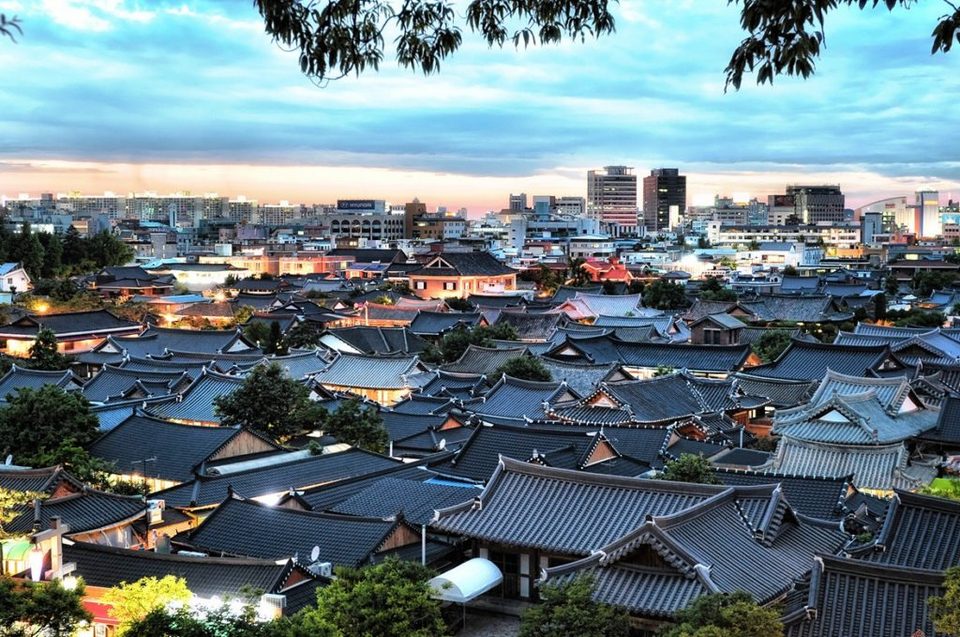
Visit Ancient Jeonju Hanok Village
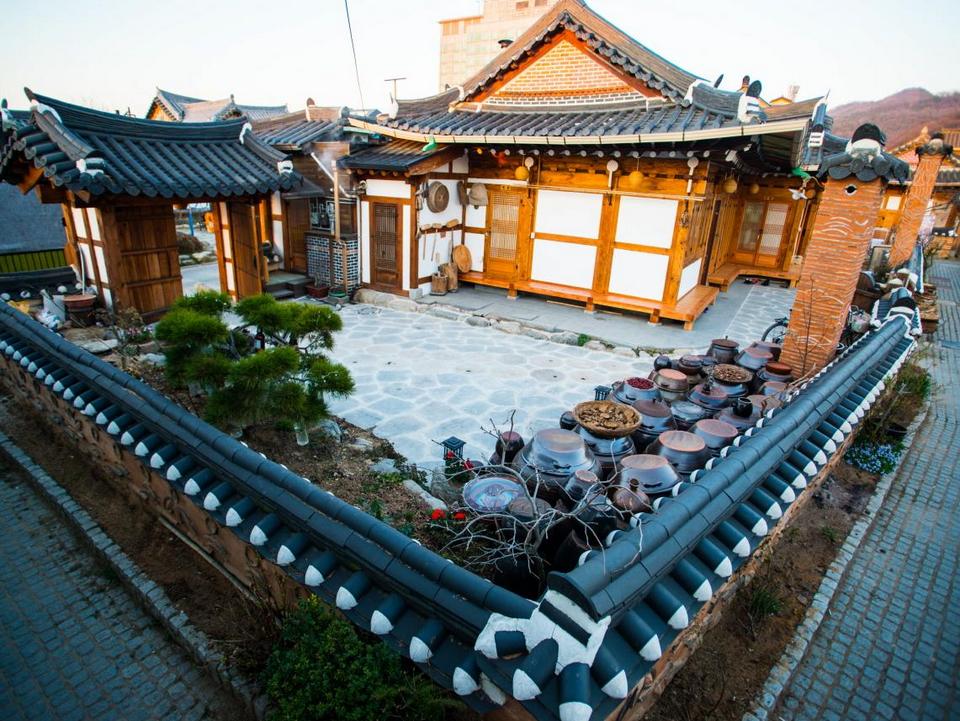
Jeonju Hanok Village has about 800 ancient houses still inhabited by people. For reasons of preserving and saving the features of culture, these houses have not been renovated and rebuilt into high-rise buildings, so coming here you will not see low-roofed and dilapidated houses. The houses here are built very firmly and carefully so looks like new, all houses that have only one floor with roof tile architecture look dwarf, cuteness overload. If you have more time, you can experience sleeping in the old houses also is quite interesting.
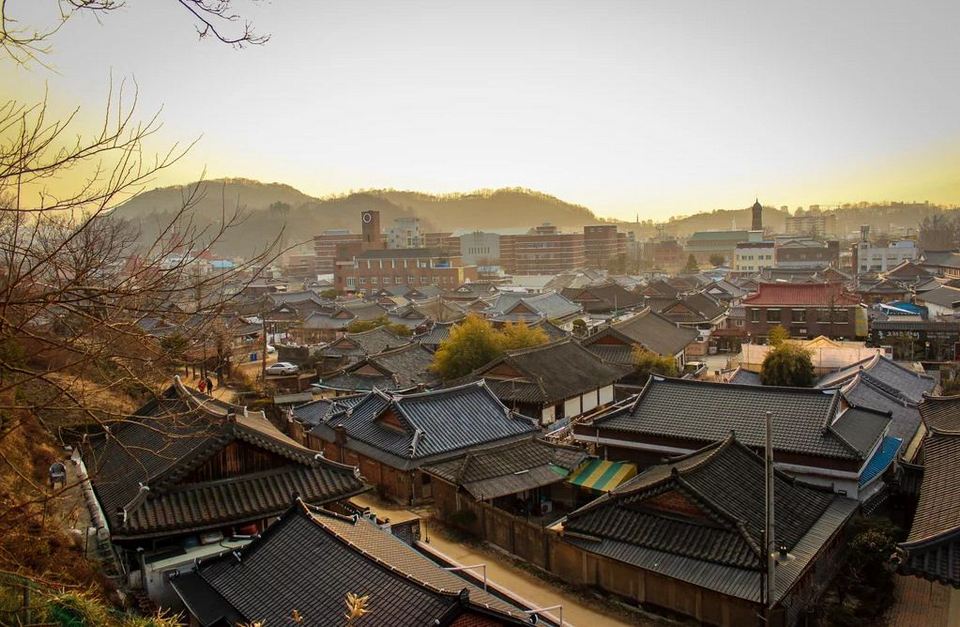
The ancient village is also the same as the ancient village of Bukchon in Seoul, a lot of delicious food, coffee shops are very artistic, wandering all day here to visit every shop also not feel bored. Remember to hire Hanbok to wear to taking countless nice photos, the poetry scene is more beautiful when the autumn come will give you the photos that remember all one’s life. Swear!!!!
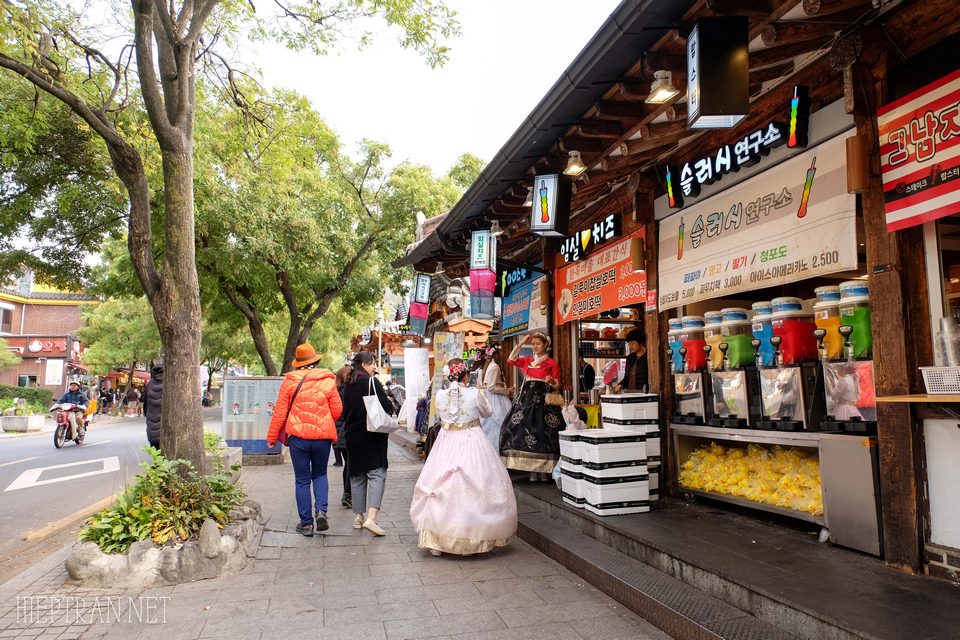
Jaman Mural Village
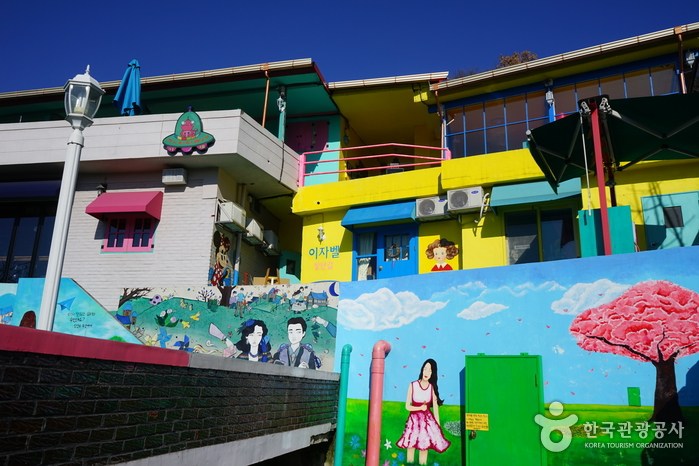
Not far from the old village, within 5 minutes walking distance, you will reach equally interesting place. This place can be considered as the art area of Jeonju with the murals (wall paintings) are extremely creative. Compared to the Ihwa Village in Seoul, the Jaman Mural is more beautiful, more colorful and more thematic.
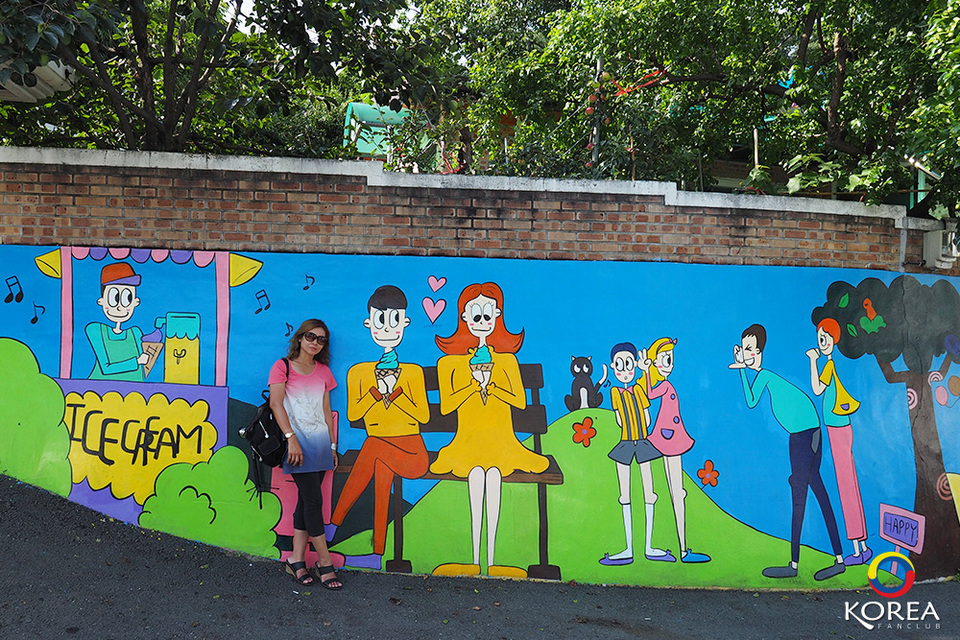
Omokdae & Imokdae
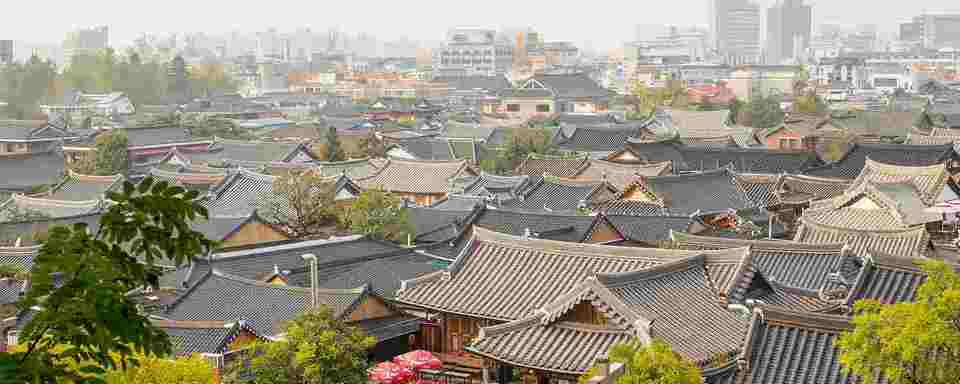
Right next to Jaman Mural Village, you go a little further to Omokdae, with a good location on a hill, this is a place to rest, looking the whole Jeonju scenery from above, very beautiful.
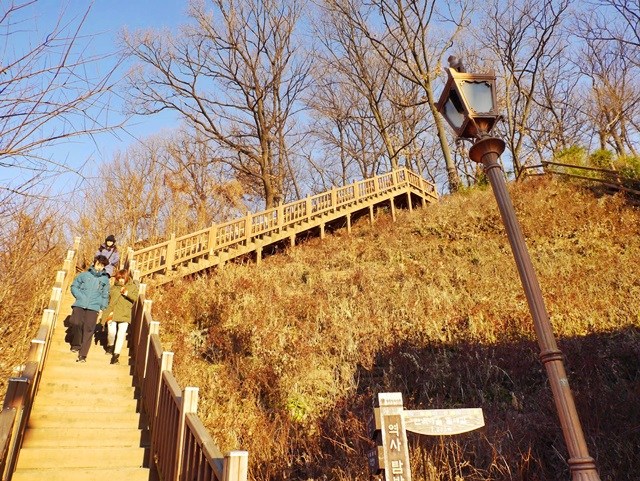
Just watching the whole view of Jeonju, just breathe the fresh air will make you understand why this place is called the city of slowly life. Because you will have to climb a bit so if you want to go here, you remember to wear sports shoes will be much more comfortable.
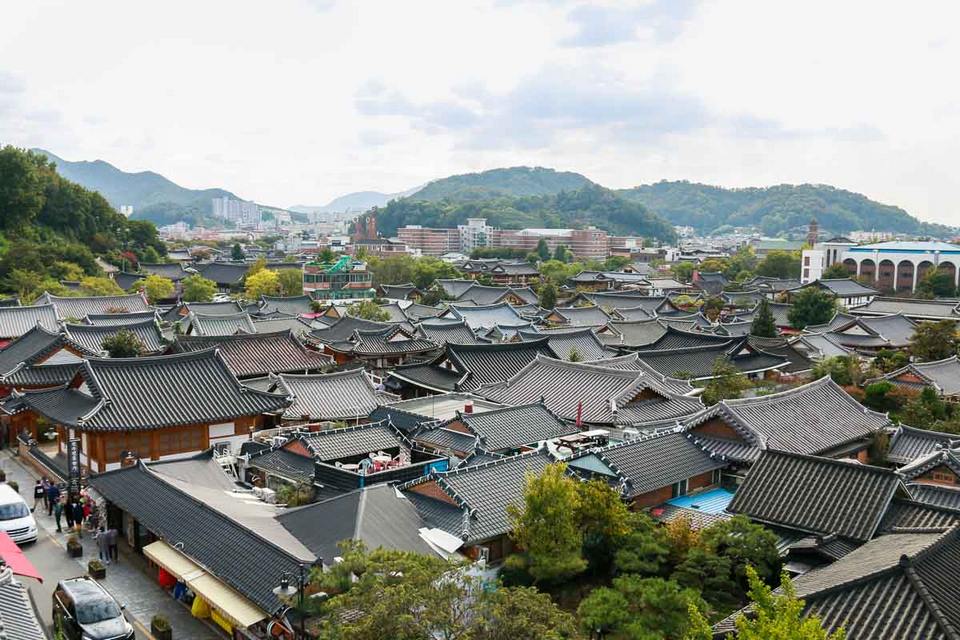
Continued reading…
Related articles

RELATED ARTICLES MORE FROM AUTHOR
Where to go & what to do in varanasi — 15+ places to visit & best things to do in varanasi, what to buy in indonesia — top +9 famous gifts, souvenirs & best things to buy in indonesia, what to buy in kyoto — 31+ must-buy kyoto souvenirs, gifts & best things to buy in kyoto, what to buy in india — 29+ best gifts from india & best things to buy in india.
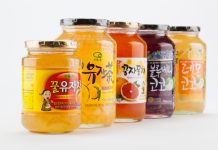
What to buy in USA? — 17+ must buy in USA & best things to buy in USA
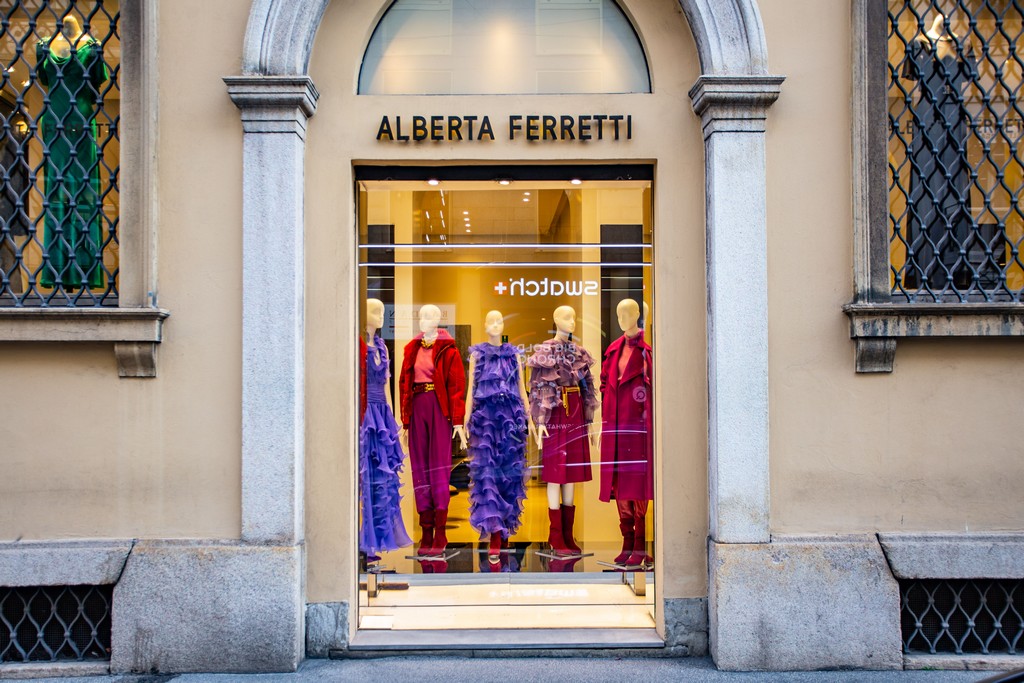
What to buy in Italy? — 19+ top souvenirs & best things to buy in Italy
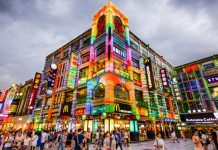
What to buy in Guangzhou? — 11+ best things to buy in Guangzhou & best shopping places in Guangzhou
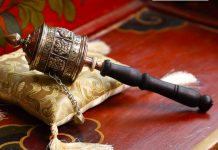
What to buy in Tibet? — Top 9+ tibet souvenirs, gifts & best things to buy in Tibet
Editor picks.

What to eat in Singapore? — 10+ must-eat & best street...

Must eat in Nha Trang — 45+ best street food in...

How to prepare for trekking in Nepal? — 10+ Nepal trekking...
Popular posts.

What to buy in USA? — 17+ must buy in USA...

What to buy in Korea? — Top +23 cheap, famous &...

Must buy souvenir in Taiwan — Top 17+ most famous, cheap...
Popular category.
- Inspiration + Guide 1462
- Trip Inspiration 468
- Food + Drink 210
- Thailand 209
- Coasts + Islands 193
- South Korea 168
- Vietnam 167
- Travel Photos 144
- Work for Us
- Terms & Conditions
- Privacy Policy

Jeonju, South Korea One-Day Itinerary and Self-Guided Tour
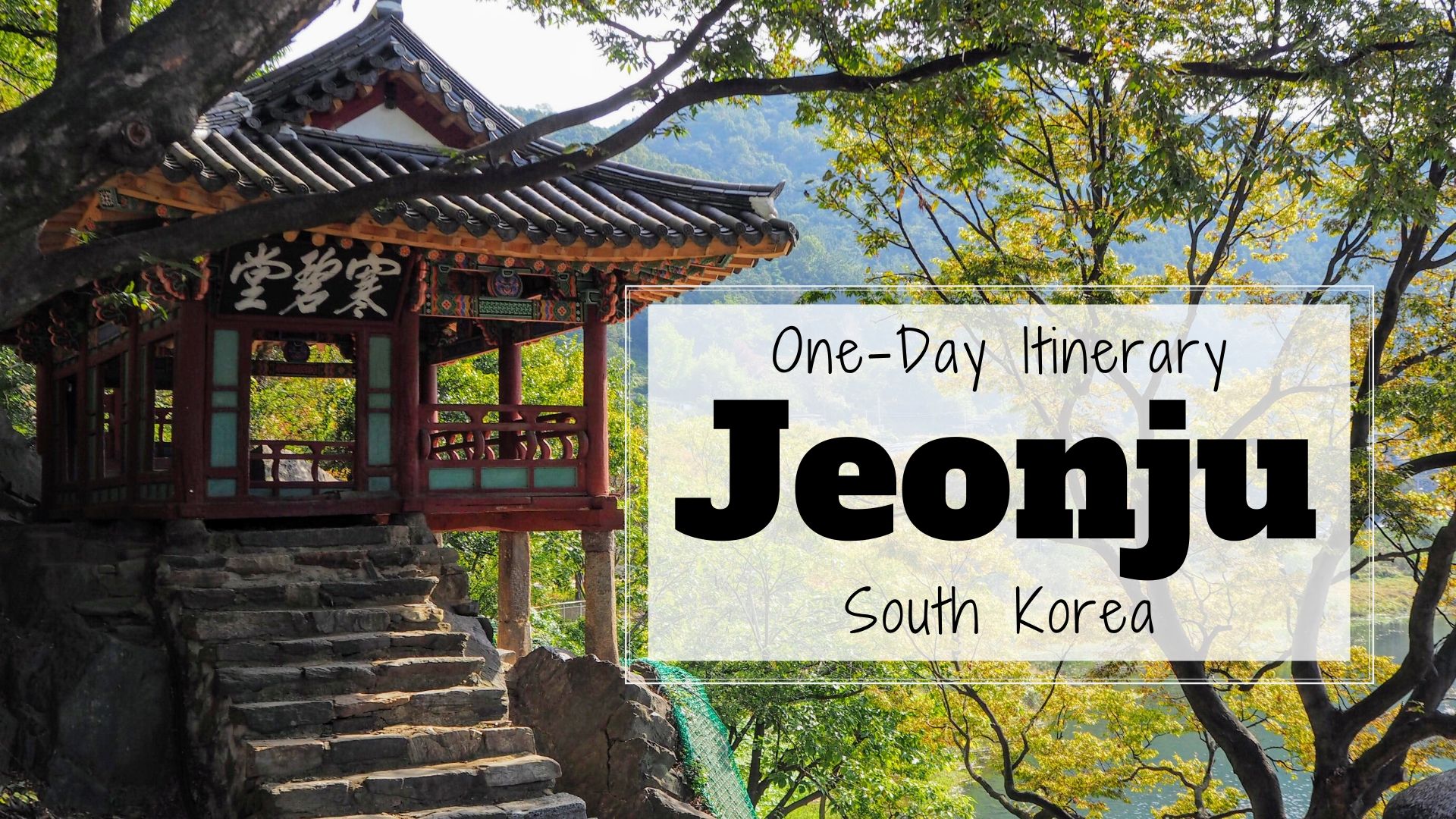
Jeonju, the cultural capital of South Korea, is a charming gem of a town that should not be missed during your South Korea itinerary . Famous for its Jeonju Hanok Village, the largest in South Korea, Jeonju is also filled with charming buildings, cultural museums, and well-preserved history. It’s nicknamed the “slow city” for its pace of life, which is exactly what you’ll experience on this Jeonju one-day itinerary!
Out of all the cities that I visited in South Korea, Jeonju was by far the most picturesque. Around every corner is another beautiful snapshot. Visit Jeonju before crowds of tourists discover its allure!
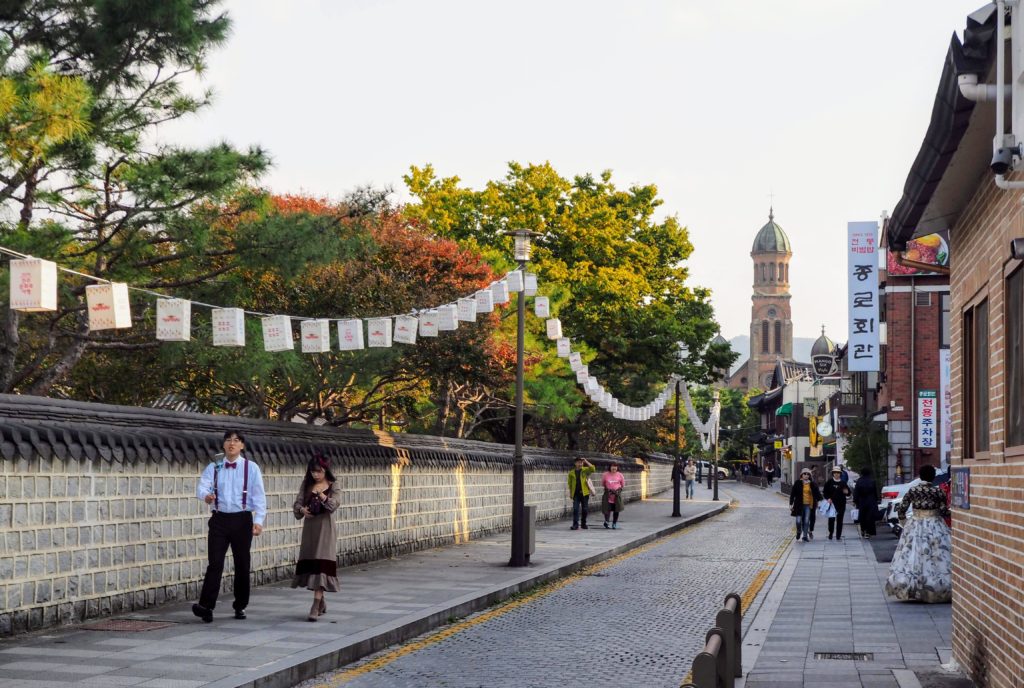
How to Get to Jeonju
Multiple trains and busses depart every day from Seoul to Jeonju. From Yongsan Station in Seoul, you can take the high-speed KTX train for 34,600 won ($31 USD), or local trains for about 26,000 won ($22 USD) to reach Jeonju.
Express busses also depart from Seoul to Jeonju every 10 minutes. They take anywhere from 2.5-4 hours and cost from 12,700 to 19,000 won ($10-$16 USD).
If you’re rather not DIY a Jeonju day trip, join a Jeonju Hanok Village Tour departing from Seoul.
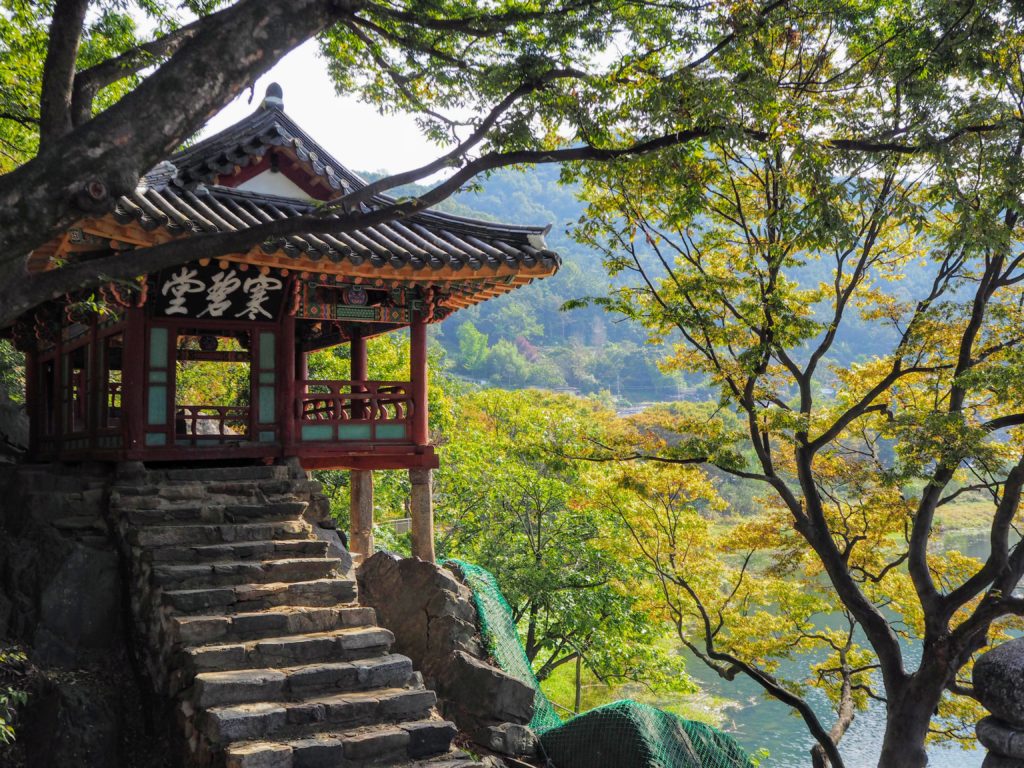
Where to Stay in Jeonju
The best place to stay in Jeonju is in a traditional Hanok House. There are countless guesthouses and hotels that operate within Jeonju’s Hanok Village, which is exactly where you want to be for this One-Day in Jeonju Itinerary.
Check out my list of 10 best hanok stays in Jeonju for some amazing recommendations. Many hanok guesthouses on the list are located in the heart of the Jeonju Hanok Village. Others are in quieter neighborhoods away from the crowds, but still within walking distance from the village and other things to do in Jeonju.
(If you want to skip to the good part, check out my favorite hanok from my list: Hanok Story Guesthouse .)
If you’re traveling on a backpacker’s budget, I stayed at the Jeonju hostel NeaRest Guesthouse . It’s is only a 10-minute walk from everything on this Jeonju One-Day Itinerary, has friendly and helpful staff, a common area, and amazing dorm room facilities.
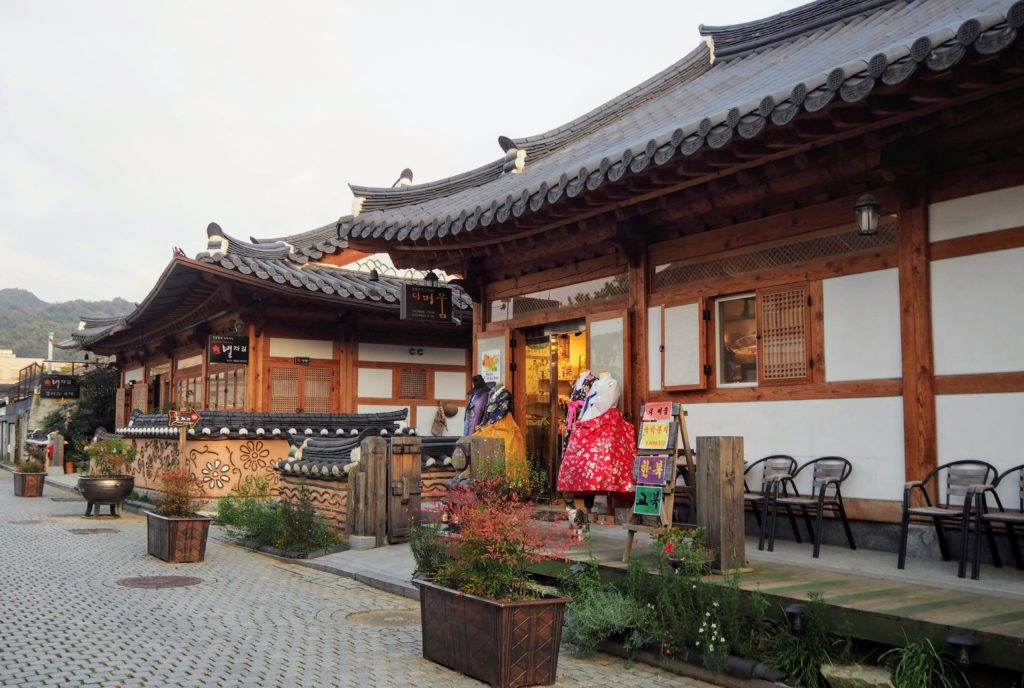
Start Your One-Day in Jeonju Itinerary
Set the tone for your one-day in Jeonju itinerary by visiting the Gyeonggijeon Shrine, then taking an initial stroll through Jeonju’s Hanok Village. Visit the town’s many museums, browse the shops, then stop for some lunch or tea in a traditional Hanok building.
Rent a traditional Hanbok dress before you go if you want to look the part for your one-day itinerary of traditional Korean culture! Many tourists (even locals) do this to take memorable photos of their trip to Jeonju and South Korea.
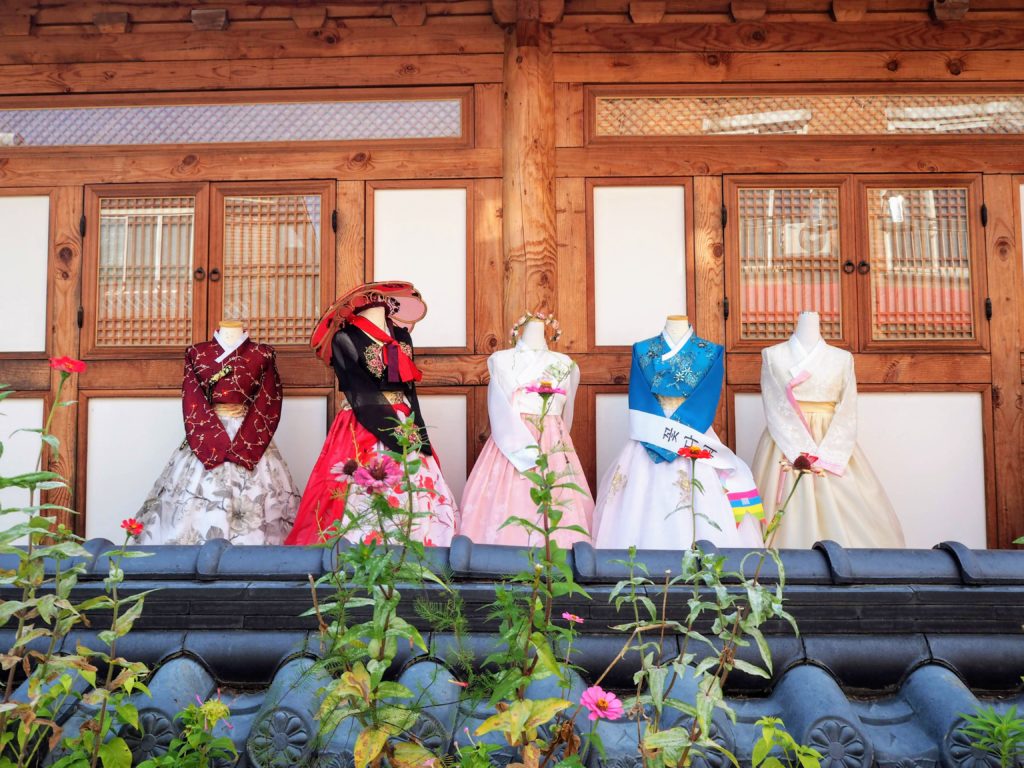
- The Gyeonggijeon Shrine is in the heart of Jeonju’s Hanok Village. It’s home to the portrait of King Taejo, a Korean historical figure who started the Joseon dynasty. In the same courtyard are several historical buildings, a bamboo grove, and the Royal Portrait Museum. The shrine and museum together costs 3,000 won ($2.50 USD) to enter, and opens at 9am.
- Stroll through the Jeonju Hanok Village and visit its many free museums including the Hanok Village History Museum, the Fan Culture Center, the Jeonju Traditional Wine Museum, the Jeonju Traditional Handicraft Master Center, and the Sori Art Center.
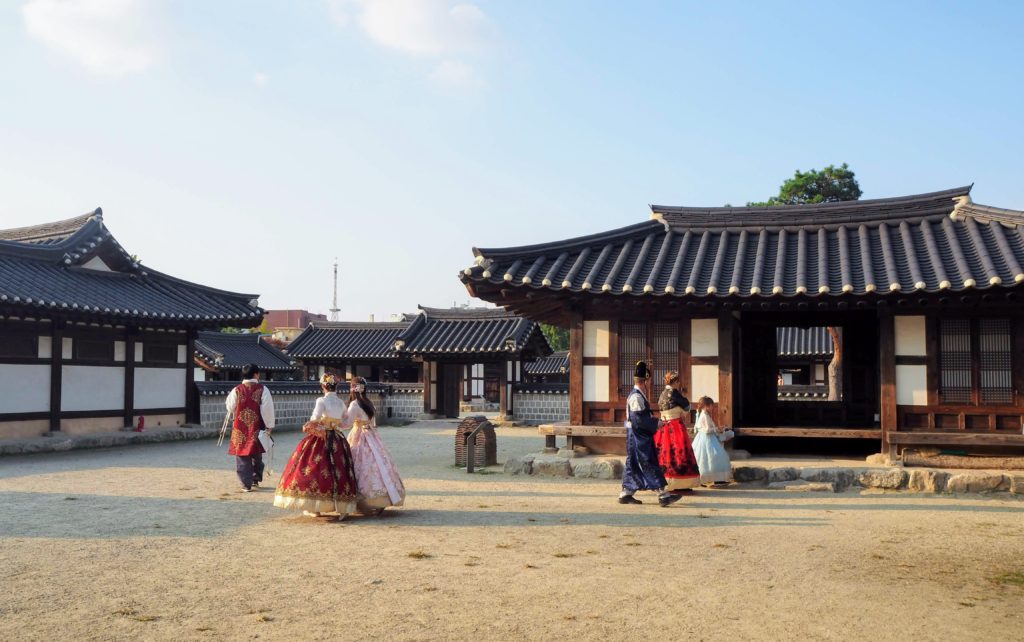
Stop for lunch in a traditional Hanok building. Many of the restaurants along Jeonju Hanok Village’s main streets are traditional Hanok buildings, renovated to look modern on the inside. Try Jeonju’s famous bean sprout soup with rice, which pairs perfectly with some kimchi.
Jeonju is also where one of Korea’s national dishes, bibimbap had its start. The dish consists of rice with a variety of different colorful and nutritious toppings including beef, eggs, bean sprouts, red chillies, and more. Jeonju even has an annual bibimbap festival in October to celebrate the dish.
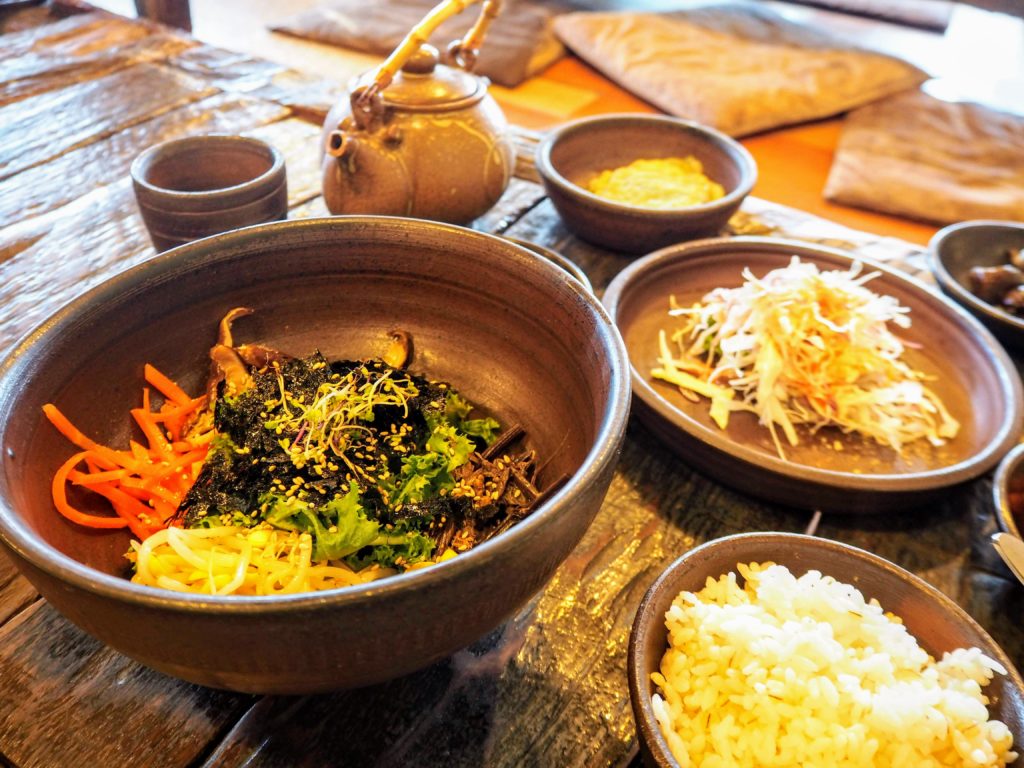
- Admire beautiful pottery and handicrafts at the Jeonju Goods Exhibition Center and the Jeonju Traditional Artcraft Exhibition Center. They are conveniently located next to a large gazebo and rest area, incase your lunch is making it hard for you to walk!
- Head up to the Omokdae Viewpoint , either via the wooden staircase near the Exhibition Centers, or by circling around to climb the slope near the busy Girindaero road. Here you can admire Jeonju Hanok Village from above, from several different viewpoints at the summit.
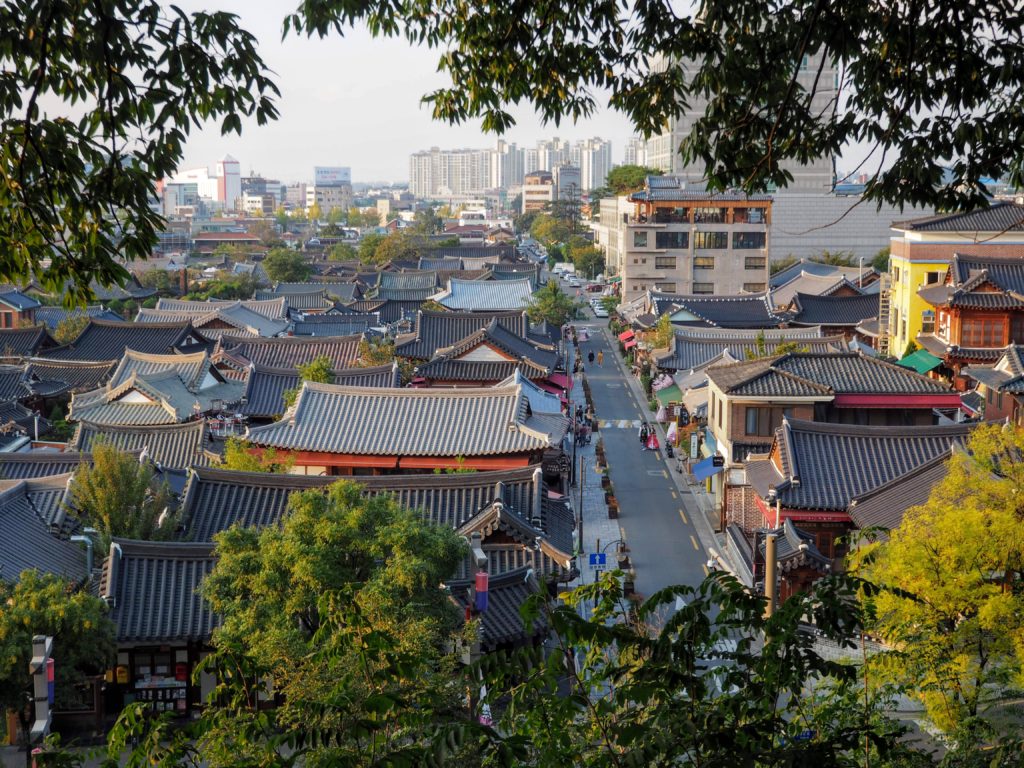
- Cross the bridge to the Jaman Mural Village , where dozens of colorful murals line the streets and small alleyways. Find your favorite cartoon and anime characters, famous movie stars, and beautiful flowers and landscapes pained wherever you look. Stop by a quirky cafe for a coffee or dessert, and take in the hipster atmosphere of this small village.
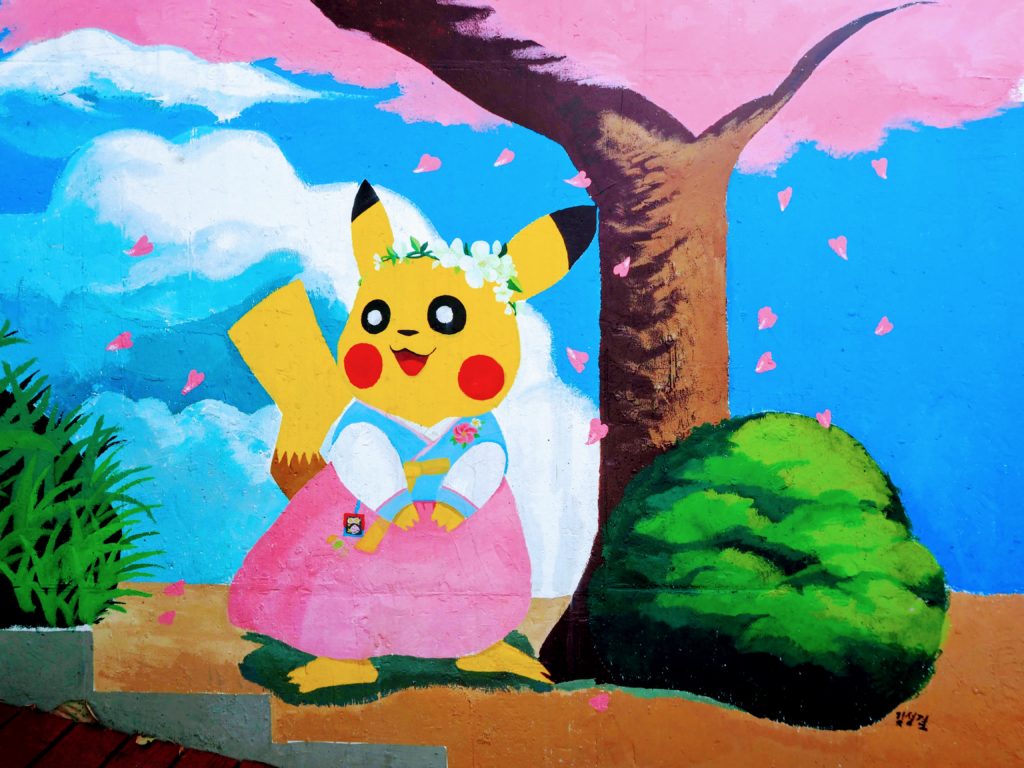
- Follow Girindaero Road down until you see a bridge, where you can cross the under it to the scenic Hanbyeokdang Pavilion . Pavilions like this are common across Korea’s countryside, especially in mountain towns, but this one is extra special overlooking a small lake and the mountains next to it.
- Walk back along the river and in one street to the Jeonju Hyanggyo, or the Confucian School . The school is still used today to teach Confucianism, and is most popular to visit in the fall when its 400 year old Gingko trees all turn to a bright yellow.
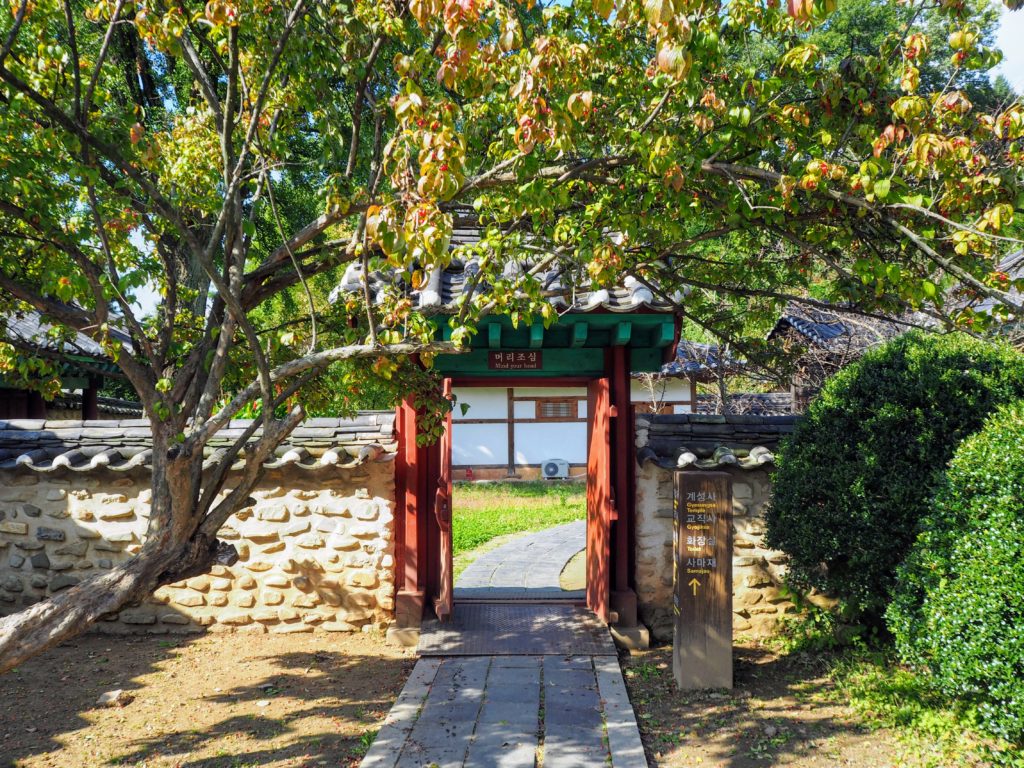
Late Afternoon
- Head back towards Jeonju for a picturesque view of the arched Cheongyonru Bridge , where you can rest on the pavilion overlooking the river.
- Follow the river walk or head back through Jeonju’s Hanok Village to the Jeondon Catholic Church (mass happens every morning, so it’s best to visit in the afternoon). This is one of the largest and most beautiful Catholic Churches in South Korea, and is a popular filming spot for Korean dramas.
- The Pungammun Gate is across the street from the Catholic church in the center of a roundabout. This gate marks the border between Jeonju’s Hanok Village and the rest of Jeonju, and uses similar architecture and design as the Gyeonggijeon Shrine.
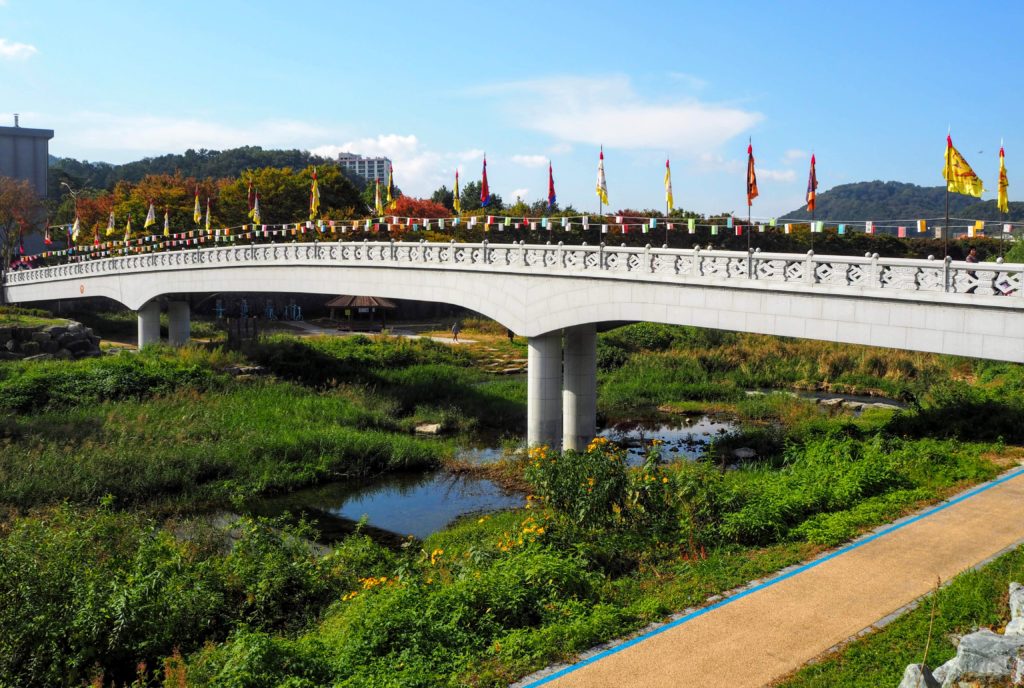
- South of the Pungammun Gate is Nambu Market . If you’re visiting on a Friday or Saturday, there will be a popular and bustling night market happening here! Try different types of Korean street food, bring home some souvenirs, or just window-shop around.
- Days where the Nambu Night Market is not happening, head up to the Gosa-Dong neighborhood, which is popular with local teenagers as a shopping and street food spot. Buy cosmetics, shoes, and other trendy items here.
- Circle back to Jeonju’s Hanok Village as you wind down your one day in Jeonju itinerary. The streets are lit up everyday with beautiful lanterns in the evening. Find a cozy place to have dinner, maybe order some some soju from the menu, pat a stray cat, and enjoy your night in the traditional Jeonju Hanok Village.
Check out my Top Things To Do In Jeonju Post!
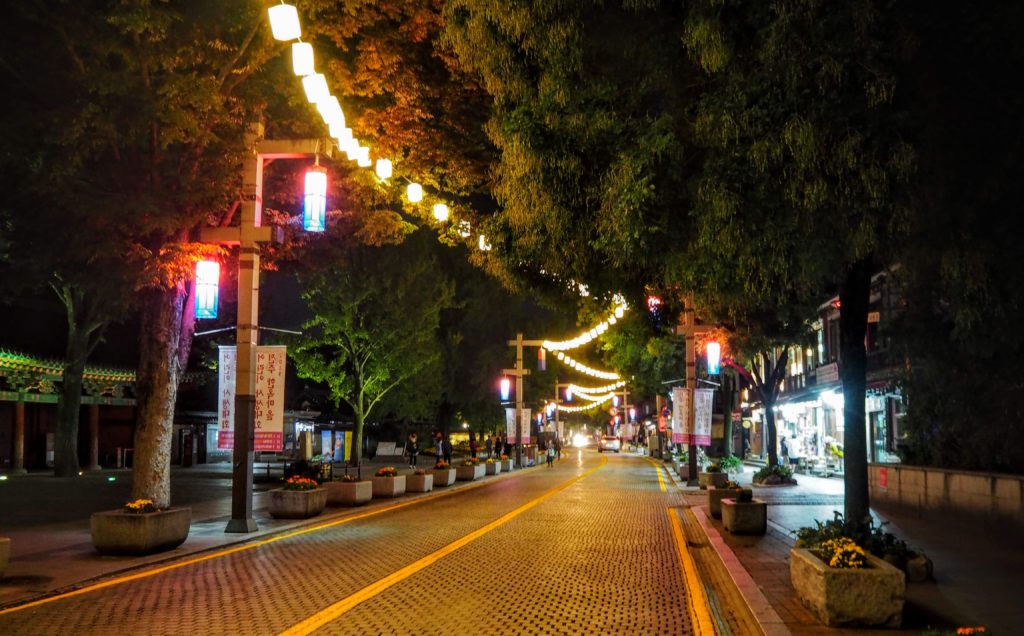
That’s a wrap for my one day in Jeonju itinerary. Have you booked your Jeonju accommodation yet? In order to make the most of a full day in Jeonju, I recommend staying one or two nights in town before continuing on your way. Be sure to check out the traditional hanok stay options in Jeonju .
Pin This One Day in Jeonju Itinerary!
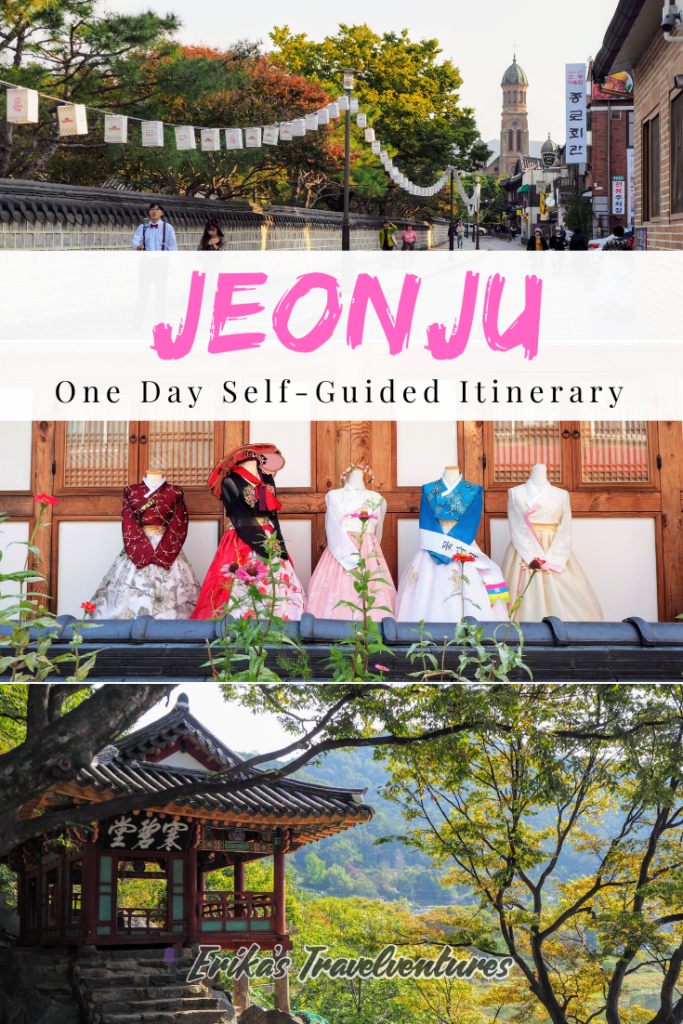
You might also like:

Ghibli Museum vs Ghibli Park – Which should you visit?

30 Cute and Kawaii Things to do in Tokyo
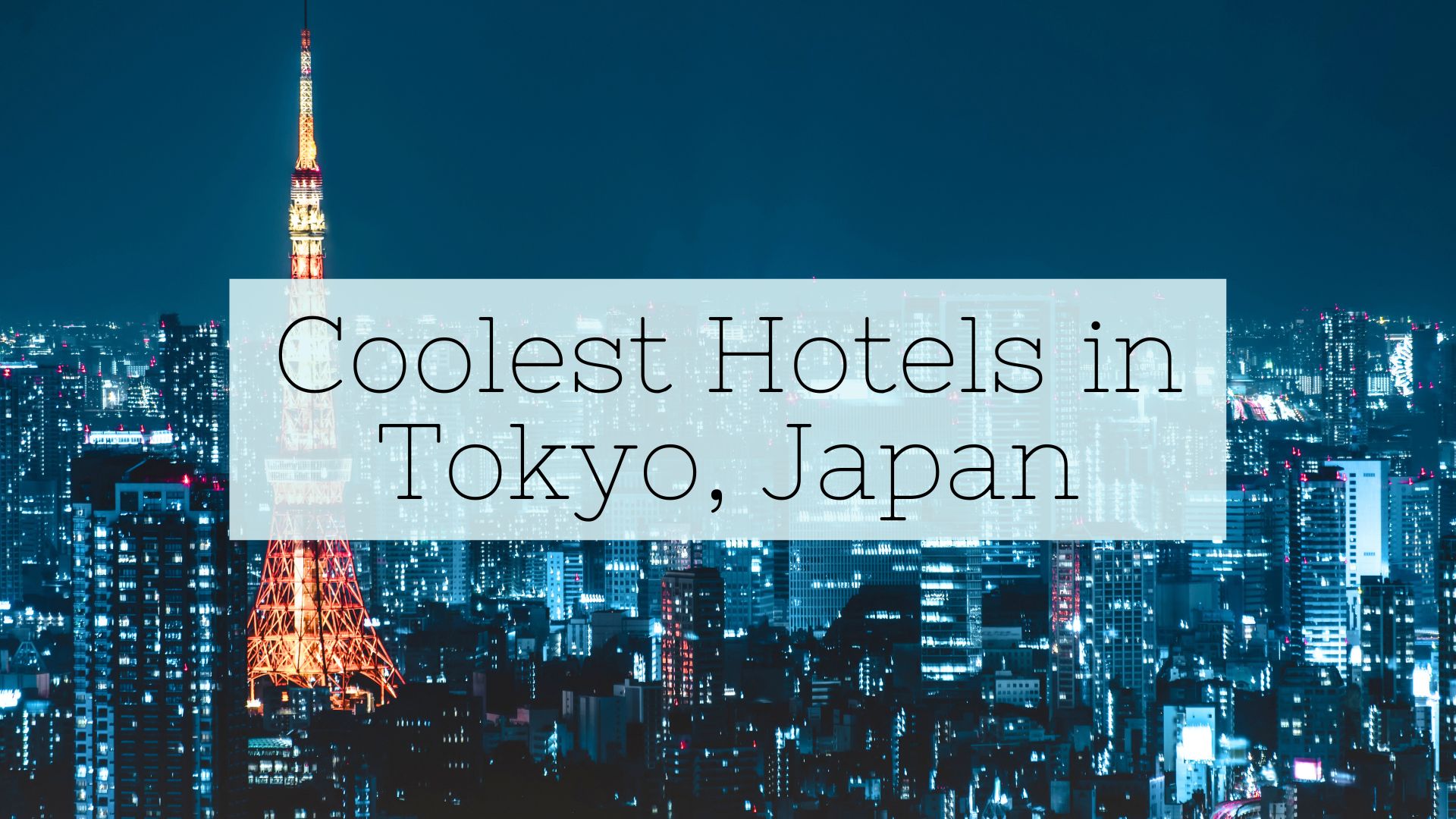
25 Cool and Unique Hotels in Tokyo
Leave a reply cancel reply.
Your email address will not be published. Required fields are marked *
Your Curated, Wanderlust-inducing, Insider's Travel Guide of South Korea
Suggestions, jeonju hanok village free & easy: 3d2n itinerary.
Jeonju is a city with rich history and culture. It has the distinguishing characteristics that set it apart from the other cities we are familiar with, such as Seoul, Busan or Jeju Island.
I have been writing about Jeonju in my previous 3 blog posts . In fact, this beautiful provincial city in Jeollabuk-do is where I’d strongly recommend you do a Free & Easy trip, regardless if you are a novice or a pro in travelling around South Korea.
It is straightforward to plan a Free & Easy trip to Jeonju. If you’re planning a trip to Korea and want something less complicated to plan and doesn’t involve a lot of arrangement in terms of transportation, I’d definitely recommend Jeonju. More so if your definition of a laid-back trip includes wandering around the historical town, and soaking up in the relaxed, cafe-hopping kind of atmosphere, then Jeonju is the ideal destination for you.
Jeonju Hanok Village has plenty of things to check out. And everywhere looks very instagrammable too! The best part? Each site mentioned in this article is within walking distance. Just pack your bag, catch your bus/ train and enjoy everything here right in the village.
This 3D2N Free & Easy Itinerary in Jeonju covers almost everything one should do in Jeonju. However, since I was traveling with the folks, the itinerary is more relaxed. We did not follow the itinerary thoroughly. That said, I’ll still share it up here in the post.
This whole Itinerary includes:
✓Jeonju Hanok Village Tour (Including Cafe and Street Foods, check my Jeonju Street Food Guide HERE ) ✓Jaman Mural Village ✓Jeondong Cathedral ✓Nambu Market + Youth Mall ✓Gyeonggi-Jeon Shrine ✓Omokdae & Imokdae ✓Jeonju Hyang-gyo (Jeonju Confucian School) ✓Must Eat Foods (Bibimbap, Ddeok-galbi and Kalguksu)
Transportation:
From Seoul to Jeonju Hanok Village: By Bus: There is a shuttle service which is exclusively for foreigners. The shuttle operates daily and would take about 3.5 hours from Seoul to Jeonju at USD 10 per pax (regardless of a one-way or round trip). More information here :
By Train: It takes about 2 hours to reach Jeonju via KTX. Of course, such express train rides come with a higher price tag too (Economy class ticket at KRW 32,900 for an adult per single trip). FYI, the Mugunghwa train would take about 3 hours to reach Jeonju and cost about KRW 17,600.
To reserve a train ticket, simply check the ticket availability on the Korail Train Reservation Site . Do note that your departure station from Seoul should be “Yongsan” instead of Seoul Station. And your arrival station should be “Jeonju”
Transport within Jeonju Hanok Village: By foot!
Jeonju Day 1
Check-in at Becky’s Gallery & Guesthouse 백희
Becky was the place I called home for my 3D2N Jeonju Trip. It is a cafe cum gallery cum guesthouse in Jeonju Hanok Village. Check more pictures about Becky and my review here .
Lunch:Veteran Kalguksu 베테랑
A Kal-guksu (칼국수 Knife-cut Noodles) house that started its business in 1977. Very similar to the Chinese刀削面, Kal-guksu is a popular dish at the Hanok Village, especially in the winter. The cooking method is quite identical to our Ban-mian. The noodles are thinly sliced from the dough and cooked in anchovies stock soup. Each bowl comes with an egg, and is drizzled with some chilli oil and some dried seaweed flakes. The shop offers man-doo (meat dumplings, KRW 4,000) as well. A relatively economical meal in Jeonju. Each bowl goes at KRW 5000.
Address: 전라북도 전주시 완산구 교동 84-10. 84-10, Gyo-dong, Wansan-Gu, Jeonju-si. Jeollabukdo. 9am-930pm.
Jeonju Omokdae & Imokdae Pavilion 오목대& 이목대
This pavilion located right beside the Jeonju Hanok Village is a victory pavilion where general Lee Seong Gye celebrated his victory over Japanese pirates in 1380. The general later became King Taejo, the first King of Joseon Dynasty. A smaller “pavilion” beside Omokdae is called Imokdae, where it kept a stone stele written by King Gojong. The Stele is a monument to the ancestors of General Lee Seong Gye. It was originally stood opposite the mountain (where Lee’s ancestors were born), but moved to the current location.
It was extremely crowded during my visit and I wasn’t able to get a satisfying wide angle shot. So here’s two very beautiful shots by Tistory Blogger island 1969 , during his visit to Omokdae & Imokdae Pavilion in a beautiful winter.
More pictures along the trail to Omokdae Pavilion:
Jeonju Mural Village 자만 벽화마을
Jaman-Dong Mural Village, a whimsical little village famed for its wall paintings. Steep slopes are probably the greatest problem you’ll face if you’re travelling with the folks, maybe you’ll need to check in with the folks regarding their condition before climbing up to the village.
Jeonju Hyang-gyo 전주향교
Th Jeonju Hyang-gyo is a Confucian school that was established during the Joseon Dynasty. It is known as the national education centre during the Joseon Dynasty. The school was originally located at the Gyeonggijeon Shrine site but was relocated in 1603. I did not go to this place for this trip, so here’s three pictures I found online. But I’ll be back in Spring and hopefully, I can replace them with my own work. So till then!
Dinner: Bibimbap at Hankook-Jib 한국집
There are various places for bibimbap in Jeonju Hanok Village. I had mine at Hankook-jib 한국집, which is slightly off the main streets of Hanok Village, but a brief 2 mins walk from Becky’s Guesthouse. It is quite famous among locals, also been visited by ex-President Park Geun Hye. According to the restaurant, President Park Chung-hee also dined at the restaurant during his visit to Jeonju.
The restaurant provides 3 kinds of Bibimbap , the Yuk-hoe Bibimbap (육희 비빔밥) a kind of bibimbap with raw beef tartare; Dolsot Bibimbap (돌솥 비빔밥), which is served in a sizzling hot stone pot, and Brassware Bibimbap (놋그릇 비빔밥), also called Jeonju Bibimbap which comes in brass tableware, and is said to be prepared based on royal court dish.
Address: 한국집 비빔밥. 전북 전주시 완산구 전동 2가-21번지. Hankook-Jib. Jeondong yi(2) ga, 21 bonji, Wansan-gu, Jeonju-Si, Jeollabukdo.
After dinner: Rest
Jeonju Day 2:
Breakfast: Gilgoria Baguette 길거리아
This baguette is one of the most popular street foods in Jeonju Hanok Village . Since Gilgoria and Dawoo-rang dumplings are located along the way to the Cathedral and Nambu Market and slightly away from the rest of the street food places, If you’re keen on completing your street food tour in Jeonju in a day, I’d suggest you to try out these popular street foods before embarking your excursion of the day. The queues are less crazy if you’re early.
Jeondong Cathedral 전동성당
A Catholic Cathedral built in 1914, in honor of Roman Catholic martyrs of the Joseon Dynasty on the very same spot the martyrs lost their lives. It is famed for its unique combination of Byzantine and Romanesque architectural styles, one of the most beautiful cathedral in Korea. I blogged about the Cathedral earlier here .
Jeonju Nambu Market 남부시장
Located 10 minutes away from the Hanok Village, the Nambu Market is another place worth exploring. Traces and bits of history can be found at the market. Ginseng, Herbal Medicine, fresh veggies and even beddings are available here at the indoor market. Soondae (Blood Sausage Soup) is the delicacy here.
Market by the Riverside
Walking out from the indoor market, you can head towards the river where you’ll see an outdoor market, with approximately 800 stalls along the riverside. It was a late morning (about 11am) so most stores would have gone home. It is quite an interesting place to check out if you are early!
Real New Town Youth Mall (Inside Nambu Market) 청녕몰
On your way back to the Hanok Village, please remember to make a detour trip to the indoor market– the are a more to check out — The Cheongnyeon Mall (or Real New Town Youth Mall), where you might find some hidden gems.
Located at the 2nd level of the indoor Nambu Market, this place is a cluster for young designers and baristas. Making good use of the aged shophouses, these small cafes, bars, art galleries, board games shops and accessories shops are a perfect mix of the old and new. Certainly a place of exceptional charm.
Below is a short clip by Arirang TV featuring the Nambu Market and the New Town Youth Mall located at the 2nd level of the market.
Gyeonggi-jeon Shrine 경기전
This shrine was built in 1410, and holds the portraits of King Taejo and his successors such as Sun-jong, Cheol-jong, Yeong-jo and many others can be found on display. The King Taejo and his queen is enshrined at the Jogyeong Shrine within the Gyeonggi Jeon. Part of the shrine is destroyed during the invasion of foreign forces in 1592-1598. The current structure that we see now here in the Gyeonggi-Jeon Shrine is a rebuild in 1614.
I did not spend long time here at the shrine despite visiting Jeonju twice in two months. As such, there isn’t any good pictures of the shrine taken by me. The compound looks identical to a palace, no doubtedly less fancy. Well you can search online for more pictures if you wish to understand more about it.
Hanok-Village Street Food 한옥마을 길거리
You can’t leave Jeonju without trying their street food. If you are a foodie like me, there is no reason for you to go out hunting. I’ve compiled a Jeonju Street Food Guide earlier, I am pretty sure there are more to explore. Prepare your stomach for a feast!
Cafe: 산책 Taste & Walk Cafe UPDATE MARCH 2015: Cafe Closed.
A quaint Hanok cafe 산책 (Taste & Walk Cafe) located beside Eun-haeng-Jeong (은행정 银杏亭) is a perfect place to rest after a tiring food hunt. It is a cafe cum Italian restaurant build in a private hanok, with its own garden. Since it is hidden behind an alley, this place is relatively quiet. Coffee and the rice cakes are great. I am not too sure about their pizzas and spaghetti, but online reviews are positive.
Address: 전북 전주시 완산구 풍남동 3가 74-25 74-25 Pungnam-dong Sam(3)ga, Wansan-gu, Jeonju-si, Jeollabukdo.
Exploring Jeonju Hanok Village
Famed as the starting point of Joseon Dynasty, Jeonju and its Hanok Village is brimming with that classic, ancient charm. Hanok shop houses, hanok cafes and stone wall trails (돌담길) are common scene in the village. Visitors are also allowed to rent hanbok at about KRW 5,000 for that old Joseon experience. That’s why you see people walking around wearing Hanbok. This city with remnants of beauty left from the past definitely worth spending half a day or more to explore.
Dinner: Elu-hwa Ddeokgalbi Restaurant 에루화 떡갈비
Ddeok-galbi (bbq pork patty) is a speciality dish in Jeonju. At Elu-hwa 에루화, their minced pork patty course goes at KRW 8,500 per person. It was partially cooked and served on a grill to finish the cooking at your table. Salad and other fresh vegetables, together with a few side dishes are served together with the patties. Not a fan of cold noodles so I ordered a mini bibimbap to complete the meal. Nicely scented with sesame oil, we chomp down this bowl of goodness within minutes.
For dessert, head to the huge pots of biscuits and grilled chestnuts located right at the entrance. Those are free of charge! Dessert menu changes according to the season.
Address: 에루화. 전북 전주시 완산구 서신동 932-10 932-10 Seo Sin-dong, Wansan-gu, Jeonju-si, Jeollabukdo.
WHY should one do Free-and-Easy in Jeonju?
It is easy to do a Free & Easy trip to Jeonju, even if you don’t speak Korean . English signboards are available at important places such as KTX stations and bus stations. The Jeonju Hanok Village itself has two tourist information centers (if I remembered correctly) and they offer maps in English. Take the free map in BOTH English and Korean Language so that it is easier for locals to help you around with that map in Korean.
If there is one city to recommend, other than Busan or Jeju Island, it’ll be Jeonju. In terms of convenience , it is just a 2-3 hours train ride from Seoul. The rest of the places are within walking distance.
What is more, there are plenty to check out even within the Hanok Village itself. The Hanok stay is one great experience, renting Hanbok as cheap as KRW5,000 and walk around Jeonju in your Hanbok is another. Jeonju’s local cuisine a nation pride too — this makes Jeonju a foodie paradise .
Most importantly, when you are doing Free & Easy, you get to choose what you want to do, and how long you want to spend at certain places — this is particularly very important to me. Isn’t it a waste if you like certain place and would loved to spend more time there but have to move on to another place just because you are only given only 40 minutes to eat, tour and shop? That’s the beauty of Free & Easy!
What if I don’t speak Korean?
I’d say it is not really a problem if you do your homework — my itinerary above may help you a bit.
The Koreans learn English from a young age. On average, their command of English might not be as fluent, but most of them are equipped with good listening skills. Try to enunciate clearly, especially your “r” and “t”. Use short sentences, and speak in a slow, clear manner. Sometimes “No Ketchup.” works much better than “Please do not put ketchup in my burger”. Singlish wouldn’t work.
Roughly speaking, I find their younger generation speaks better English. Especially those born after the 90s. Korean parents spent 20 trillion Won (USD 18 Billion) on private education each year, much of it on English Education. It is quite popular for them to send their kids to the US, UK and Canada for English summer camp. I have come across Korean kids speaking English way better than our kids at home. My point is, to try speaking to younger Koreans for better communication.
In a local restaurant and surrounded by mid-40s ajumma waitresses? Waitresses at famous restaurants are likely to speak simple English or even Mandarin. If worse come to worst, show them the photo of the food with a hand gesture of the amount you’d like to order.
Have problems navigating around? Always have the Korean version of the address with you — this is also the reason why you can find the Korean version of the address on every single post on my blog. Most cabs here are equipped with a GPS navigation system. Give the address to the cabby or call your hotel lobby/guesthouse owner and let the Koreans communicate.
See you in Jeonju! ; )
- Free and Easy Jeonju
- Jeonju Hanok Village
- Jeonju itinerary
40 Comments
hi we will be taking the free shuttle bus in april but would like to a meal a Ye-lu-hwa Ddeokgalbi Restaurant before we deparat5pm
do they serve meal at 3pm?
Hi Tham, I hope my reply comes in time. I am not too sure if they operate at 3pm. I think the best way is to go before 230pm to avoid disappointment. ; )
Hello! Didnt know there was so much to do in Jeonju. May I know how you got around Jeonju? Did you just walk from one place to another or with public transports? Thanks!
Hi Lily, as I have mentioned in the post, everything in the itinerary are within walking distance. You can just explore the hanok village and cover some of the major historical sites by foot! Easy 🙂 Of course if you want to check out the Fortress, temples etc, you have to travel out of the Hanok Village, it that case you need to take public transport and cab.
May i know id there a free shuttle bus from Busan to Jeonju n if have what’s the frequency n timings when departing from Tks1
hello, as much as I know there’s only shuttle service available from Seoul to Jeonju. For other information (frequency and timing etc.), you might want to check the site which is already linked above, under the “Transportation” section. : )
Hi there, I’m planning to go to Jeonju from Seoul, then also make a 2D1N or 3D2N trip to Busan. May I know if its better to get to Busan from Jeonju? It seems like there’s no direct line on the KTX from Jeonju to Busan, do you know any easier way? Thanks!
Hello Lina, There’s no direct train (Mugunghwa or KTX) from Jeonju to Busan. You’ll need to transit a few times if you want to take train. I would suggest you to take bus if you want to travel directly from Jeonju to Busan. You can take a bus from Jeonbuk Bus Terminal 전주 시외버스 공용 터미널 (address: 705-10 Geumam 1(il)-dong, Deokjin-gu, Jeonju-si, Jeollabuk-do, South Korea) and take a direct bus to Busan Seobu Bus Terminal 부산 서부 버스 터미널. The journey is about 3 hours 37 minutes. After arriving at Busan Seobu Terminal, you can travel via subway to any place you want in Busan. The nearest subway station to the terminal is Sasang Station.
Hi there, thank you for the useful article.
I’ll be travelling with my parents in Nov from Seoul>Jeonju>Busan. While I’ve registered for the free shuttle bus, just in case I don’t get a ticket, is it better to travel from Seoul to Jeonju via KTX or express bus?
Thank you in advance!
Hello! I am not too sure about the express bus though. If you can’t get the shuttle bus ticket, I recommend taking the train service (either KTX or Mugunghwa), but that is because I am more familiar with the train system in South Korea. Personally I think their train service is more organized. Also, if you’ve successfully registered for the free shuttle service, it is highly impossible you don’t get a ticket 🙂
Thank you for sharing your itinerary and experience in Jeonju! My husband and I plan to visit in March so your experience will help a lot! 🙂
Hi, May I know is there any free shuttle bus from Incheon airport to Jeonju ? or how to travel from Incheon airport to Jeonju?
Hi Koong, As far as I know, there isn’t free shuttle service from Incheon airport to Jeonju. The best and easiest way is to travel from Incheon Airport to Seoul, then take the shuttle bus or train services from Seoul to Jeonju. As for meeting point etc. (for shuttle service) I remember it was Gwanghwamun Station, not too sure, please click on the link provided in my content to find out more on where to board the shuttle. The website linked above is in English.
I hope that helps 😉
Hi, do you recommend us to sign up for the city tour bus in jeonju, or find our own transport in jeonju like you do?
Hi Jia Ying, did you mean the Jeonju-Seoul shuttle service? If that is what you’re referring to, it is a fuss-free and English-friendly bus cater for foreigners. If you can speak/read Korean with no problems navigating around (by public transport or even communicating with the taxi driver) I would say go by your own. Reason being the meeting point for the shuttle bus is quite far away from the Hanok village, and you’ll be tied down to the bus schedule. Arranging your own transport will give you the flexibility.
I’m going to Jeonju this October & your article is so helping.Just a question,you took the train to Jeonju right?Is the Jeonju station far from the Hanok Village area.Thank you.
Hi Shima, Thanks for commenting and I am glad the post helped. 🙂 There are public buses connecting the Jeonju KTX station to the Hanok Village, however you’ll need to transit twice to reach the village and the total time needed is about 30-45 mins. I would suggest you to take a cab right outside the train station, and it doesn’t cost much too. 20 mins ride at about 6,400-7,000 won.
Hi I am truly inspired by your site and the content on it. I am thinking of a trip to Korea in January and I am looking into exploring Jeonju.
Do you think it is possible to complete: ✓Jeonju Hanok Village Tour ✓Nambu Market + Youth Mall ✓Omokdae & Imokdae ✓Jeonju Hyang-gyo (Jeonju Confucian School) + Street Food
within a full day?
I would assume myself to leave from Seoul (Yongsan).
Thanks & looking forward to your reply. Once again, awesome blog!
Truly sorry I missed your comment. It all depends on what type of traveller you are. I think it is possible to complete them all on one day, but you might not be able to catch the last shuttle bus back as i remember it leaves Jeonju quite early in the evening. Give the hanok village 2 hrs, hyanggyo 1 hr, Omokdae + Imokdae and the walking about 1 -2 hrs…It will be a very fulfilling day, but it is completely doable.
Hi there, Thanks for the post on Jeonju! Very insightful and definitely will help in my planning if I decides on Jeonju. ? Now I am torn between Busan and Jeonju.. lol..
Hi, I am trying to take a 6.20am KTX Train from Jeonju Station. Will it be easy to get a cab from the Hanok Village at an early hour of 5.30am?
Hey, I guess it should be fine. I took the same KTX before and grabbed a cab at the main road around the same time. Hope this helps?
Thank you so much for this review! We are looking at stopping in Jeonju with our 5 children on our way to Alpensia for skiing. What is your opinion on renting a car and driving from Seoul to Jeonju and then from Jeonju to Pyeongchang? Thank you!!
If you have a GPS, car rental could be a great idea to travel around Korea. However it will be a detour from Jeonju –> Pyeongchang. Jeonju is at North Gyeongsam province, somewhere at the south west side of Seoul city, but Pyeongchang is located at Gangwon-do, somewhere to the east of Seoul. I would recommend you not to travel these two places on one trip.
Hi, Can i check with you about the KTX fare that you purchased, is it a round trip fare or single trip fare? Thank you.
Sorry for the confusion. A single trip from Seoul to Jeonju will cost about KRW 34,400 +- as of 2017 🙂 I have also updated the article, thank you so much for raising your queries 😀
Hello, your blog is very informative with a lot of beautiful pictures. I will visit South Korea with this itinerary : Seoul – 3D2N Jeonju – 2D1N Suncheon – Seoul , do you think korail pass is worth it or should I go with regular train ticket purchase? Since your blog is already cover all the places that I would like to go, It really save my time to make the itinerary ^^
if you’re travelling a lot, say to Jeonju, Suncheon, Busan within one week, I would say Korail pass is well worth your money. A 7 day unlimited pass cost about KRW 176,000 for two pax. Two return KTX ride from Seoul to Busan cost you about KRW 239,200. If you plan your itinerary wisely, the 7D pass is really a good deal.
Hi Pheuron I am planning a trip to Jeonju in April 2017 and your itinerary is so informative. Thanks!! May I know whether I have to purchase in advance the tickets and reserve seats on the KTX (Seoul to Jeonju), bus (Jeonju to Busan) and KTX (Busan to Seoul).
In addition, does South Korea has a 7 Days Pass for unlimited travel on trains and buses?
Hello Jennifer,
Glad to know that the write up is helping 🙂 Early booking of KTX/ Bus/ Shuttle service is recommended because April is a peak period to travel, especially during the cherry blossom period.
and yes, Korea has unlimited travel package, but only limited to all Korail services (Mugunghwa train, KTX, ITX, Otrain, Vtrain etc.) You may check out the rates and regulations here: http://www.letskorail.com/ebizbf/EbizBfKrPassAbout.do
Hi Pheuron,
Do you need to be able to speak Korean to communicate in Jeonju? Or simple English/Chinese they would still understand?
Joenju has become more and more popular with foreigners so I believe many can understand Eng/Chi.
Hi do you think I can do a day trip if these are the places/things I plan to cover? Jeonju hanok village rent hanbok Food P&B chocopie omokdae jaman mural village nambu market
is jaman mural village walking distance from the hanok village? how much time is needed at the mural village?
im considering to take the second ktx train back to seoul.
Hello Stephanie,
It really depends on your travel style. If you’re the been there done that kind, or what the Korean say “bali bali” style, I am sure you’ll be able to cover all. It also depends if you’re going over the weekend as there’ll be crowds and queues everywhere hence you may not be able to complete the above in 1 day.
Based on my experience, you’ll only be able to settle the above in one day, provided that it is a weekday, you arrived early, and you’re fast in selecting your hanbok . (some girls took 2 hrs to choose/match their hanbok). Some of the cafe/ palace closes on Monday too.
Jaman mural village is of walking distance from the hanok village. Again it depends on your travel style/ crowd situation to see if you can settle it within an hr. It’s an uphill slope so I don’t think you can complete within 30 mins. But i think normal speed with a pair of comfortable walking shoes, any healthy person can complete within 1.5 hours with some snap and go photo taking session.
Eluhwa Ddeokgalbi Restaurant – worth going or not as it is quite far from becky. are you taking cab or bus to go there ? how much would be fare like ?
Hey Chris, it’s not too far. Should be able to walk as Eluhwa is located right in the bustling streets of hanok village. Taste wise its really very subjective. I’d say Koreans love it, I find the taste not bad, and the fact that they have freebies (appetiser and dessert) lolx
What a nice guide!! Your pics look great! Thanks a lot, Pheuron!
Hi, My family and I are off to seoul for 10 days holiday. I have read a number of blogs detailing activities and their experience to Jeonju. We would like to give Jeonju a go for a day, I am just slightly concerned that as Blacks (African- americans – touring by ourselves using your guide, how feasible is that or best to do a group tour. Does it matter…honest view please.
Hello Braze,
I don’t think there will be any matter for anyone to check out Jeonju! Its quite an international city due to their very active tourist promotion campaign so i believe you’ll have a wonderful time there! 🙂
Hello there! Came across your blog and thank god i chance upon it. I really love your photos and content. Is it okay if i ask what kind of camera did you use? I’m travelling to Korea next year during Spring, but sadly i’m afraid we won’t be going to jeonju. However am really excited for the trip!
Leave a Reply Cancel reply
Your email address will not be published.
Save my name, email, and website in this browser for the next time I comment.
You might be interested in

Space Sieon, The Orchard: Remote Cafe in Jeonju
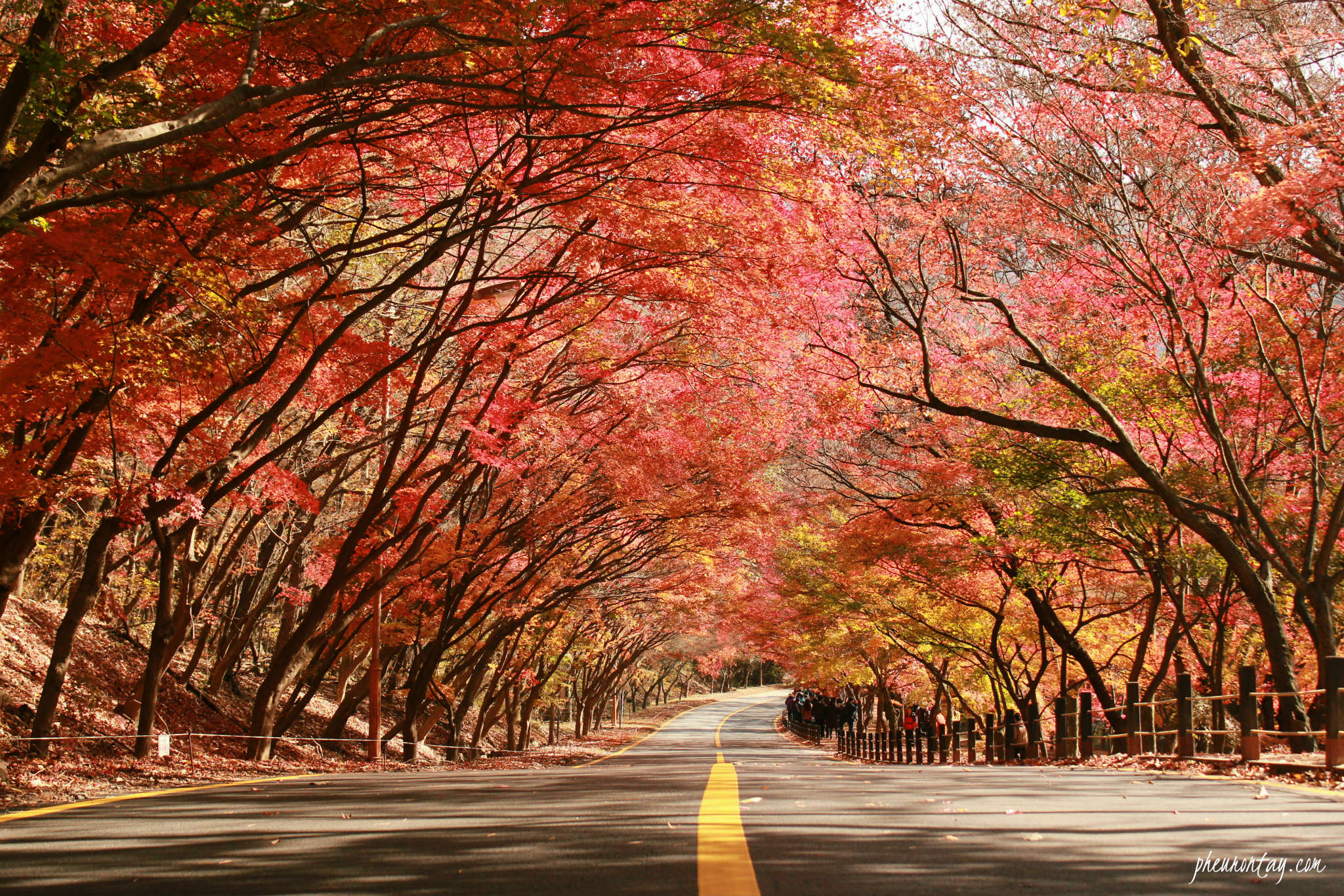
#InsiderKR: 4 Best-Kept Secret Places to See Autumn Foliage in Korea
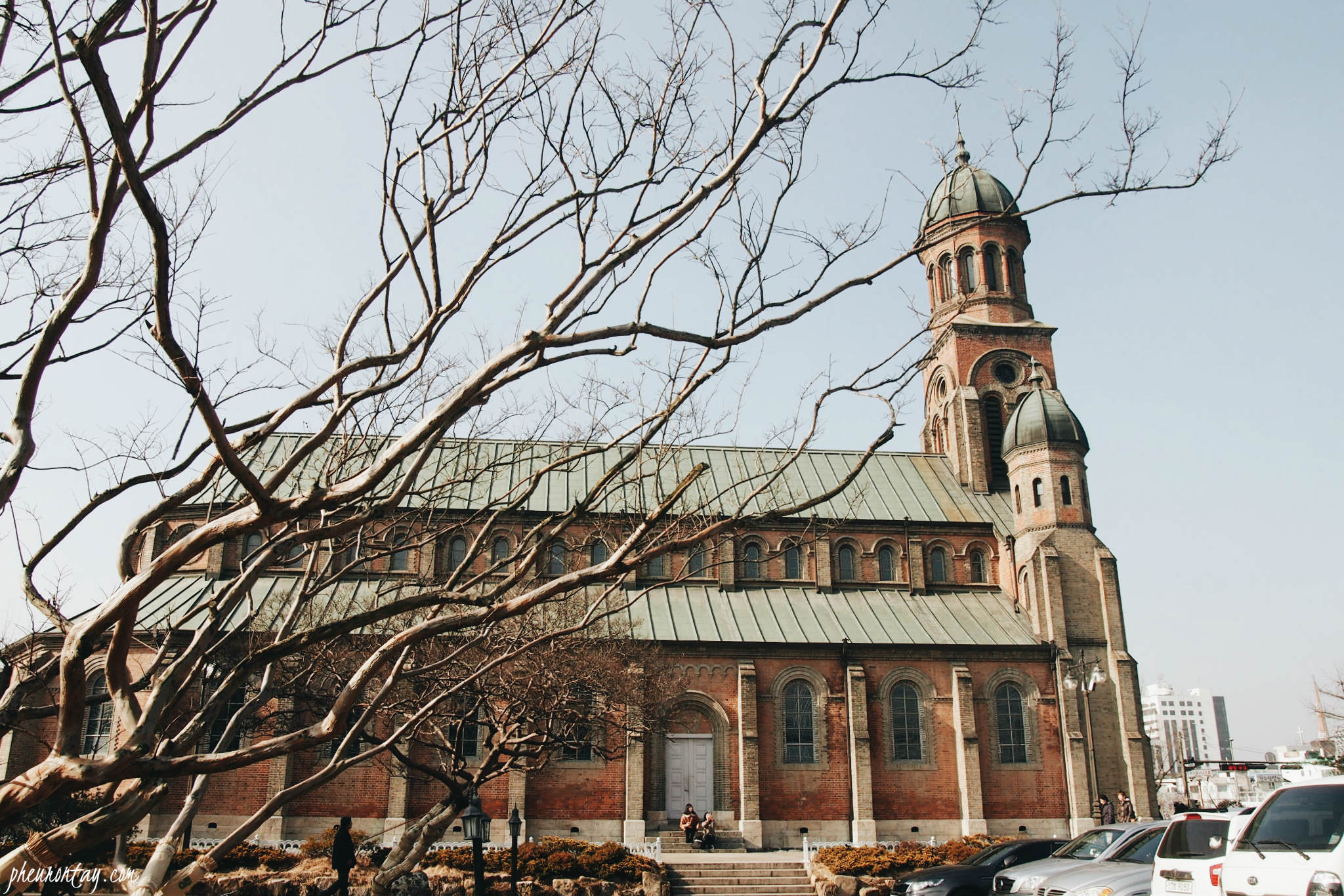
Jeonju Jeondong Cathedral: The Most Beautiful Catholic Church in Korea
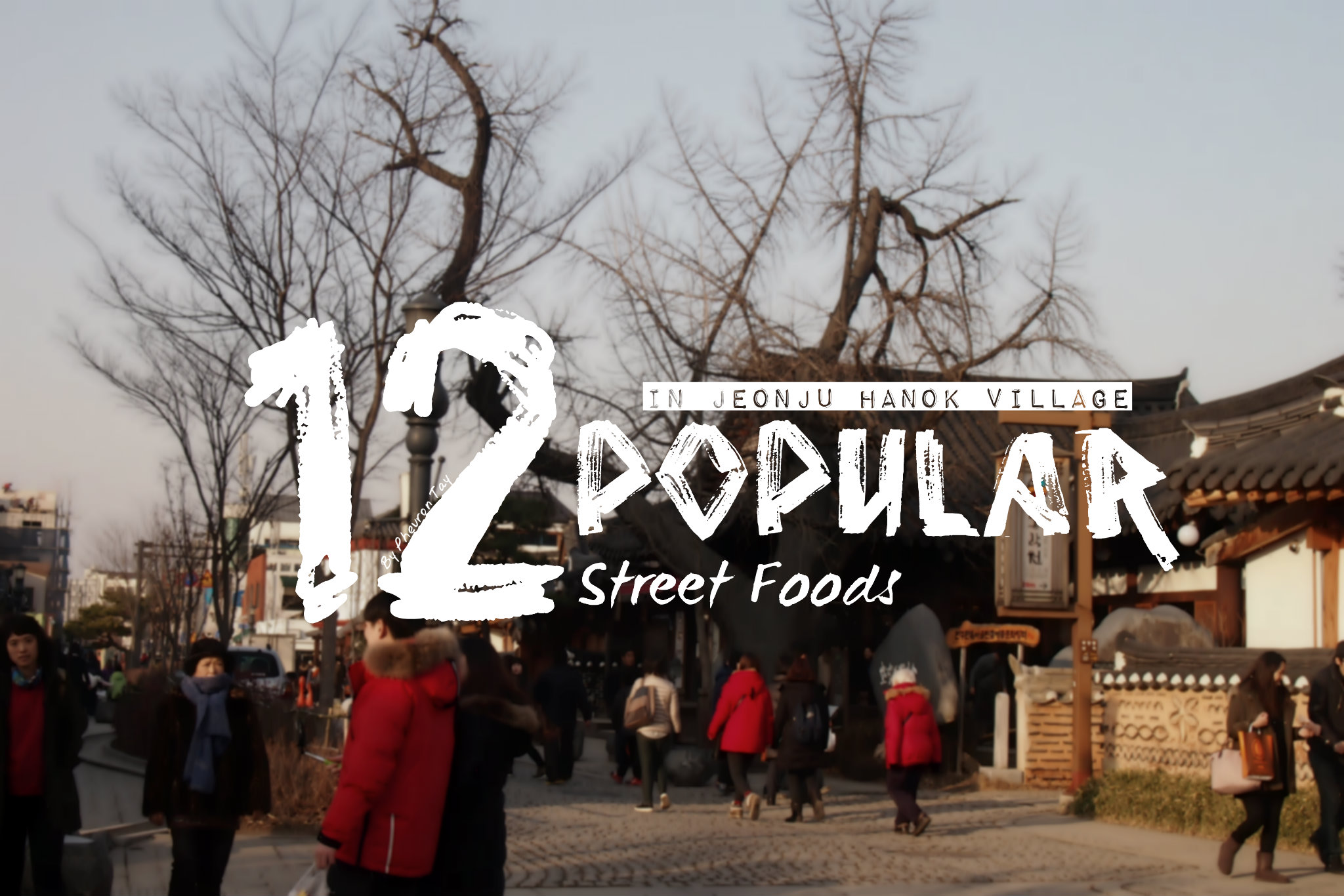
12 Popular Street Foods in Jeonju Hanok Village

Gwangjang Market: Bindaetteok & Budget Foodie Paradise
- Car Rentals
- Airport Transfers
- Attractions & Tours
- Flight + Hotel
- Destinations
- Trip.com Rewards
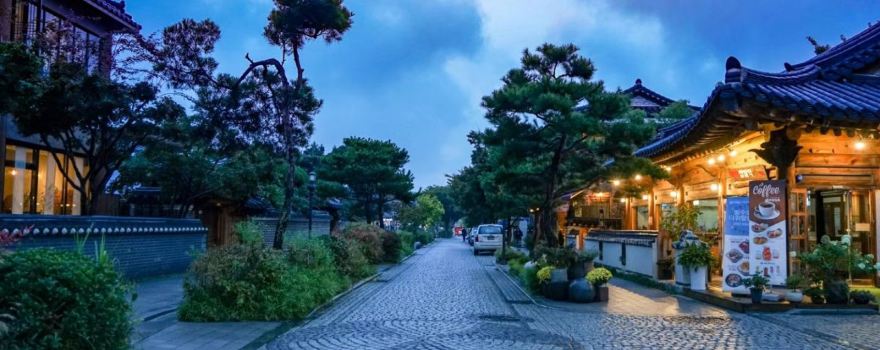
Jeonju Travel Guide
Experience jeonju.
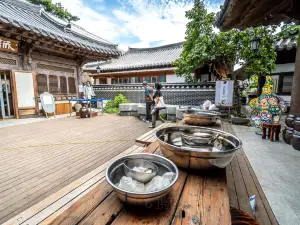
Jeonju Hanok Village

Nambu Market

Deokjin Park
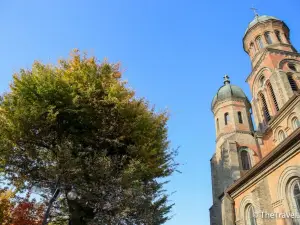
Jeondong Cathedral

Korea Expressway Corporation Arboretum (Jeonju Arboretum )
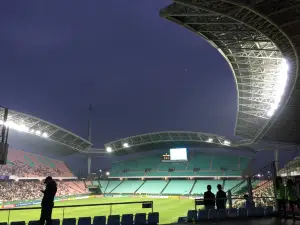
Jeonju World Cup Stadium

CGV Jeonju Hyoja
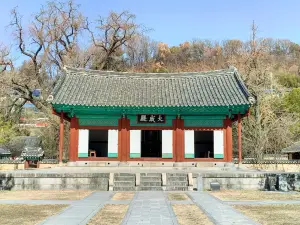
Jeonju Hyanggyo
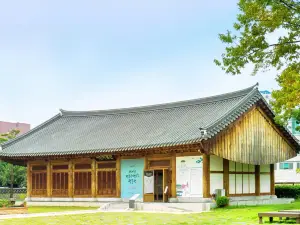
Gyeonggijeon
Where to stay, the classic hotel, best western plus jeonju hotel, white tourist hotel, lahan hotel jeonju, jeonju lime hotel, n bridge hotel jeon ju, gloucester hotel jeonju, jeonju signature hotel, jeonju hotel sounds, jeonju hanok hotel kung, pungnam tourist hotel, arirang hotel, what to eat.

Nammun Pisundae

Waeng I Yellow Beans Rice Soup
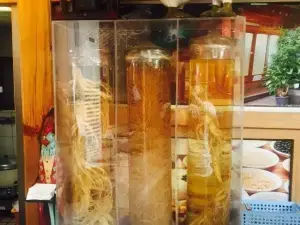
Junganghoegwan
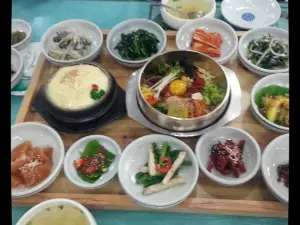
Family House(Jeonju Bibimbap)
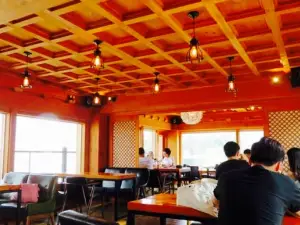
Tomorrow Cafe
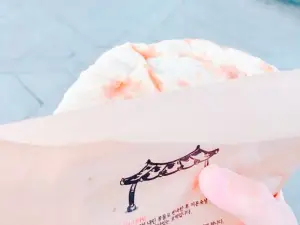
Pancake Dong Sweet Rice and Sugar-Filled Korean Pancake

Neul Chaeum

Discover the Real Jeonju With a Local Expert

More Ways to Enjoy Jeonju
Popular luxury hotels near jeonju.

Josun Palace, a Luxury Collection Hotel, Seoul Gangnam

JW Marriott Hotel Seoul

Park Hyatt Seoul
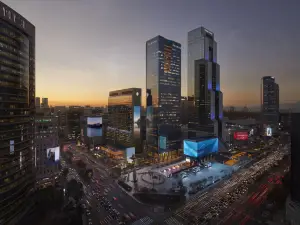
Grand InterContinental Seoul Parnas, an IHG Hotel

Sofitel Ambassador Seoul Hotel & Serviced Residences
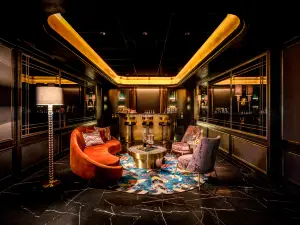
Art Paradiso, Paradise City

Fairmont Ambassador Seoul

Conrad Seoul

Banyan Tree Club & Spa Seoul

The Shilla Seoul
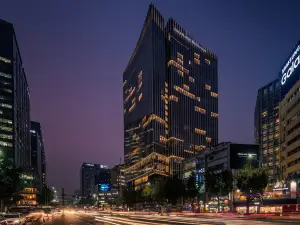
Four Seasons Hotel Seoul
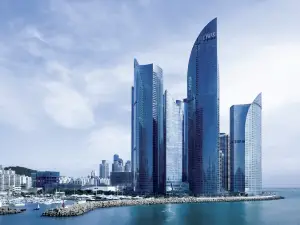
Park Hyatt Busan
Popular family hotels near jeonju.
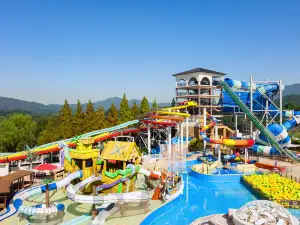
Sono Belle Cheonan
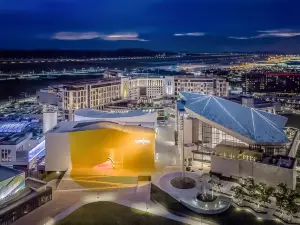
Paradise City
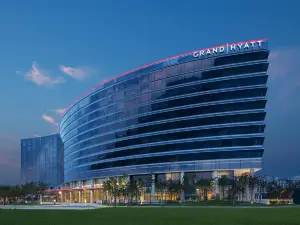
Grand Hyatt Incheon
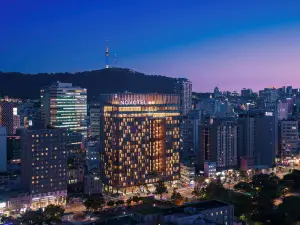
Novotel Ambassador Seoul Dongdaemun Hotels & Residences
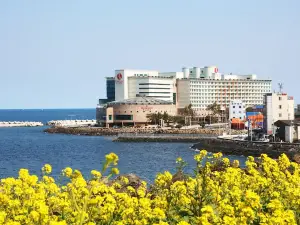
Ramada Plaza by Wyndham Jeju Ocean Front
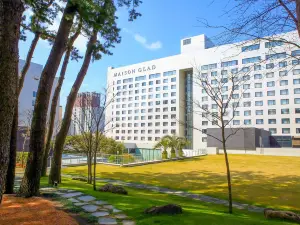
Maison Glad Jeju

Grand Hyatt Jeju
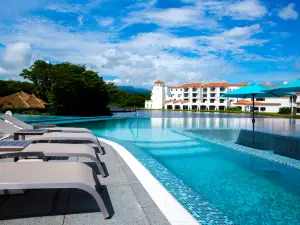
Ecoland Hotel

Haevichi Hotel & Resort Jeju
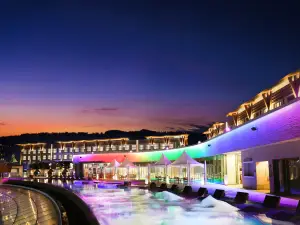
Shinhwa Jeju Shinhwa World Hotels & Resorts
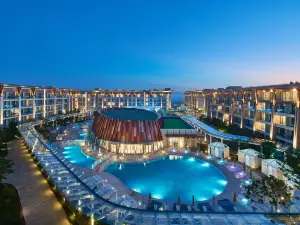
Marriott Jeju Shinhwa World Hotels & Resorts

Somerset Jeju Shinhwa World
Popular scenic hotels near jeonju.
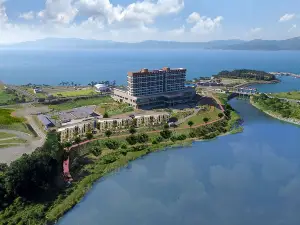
Sunvalley Resort Goheung
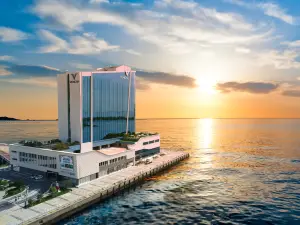
Yeosu Venezia Hotel & Resort
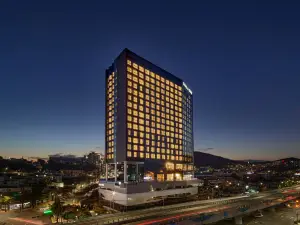
Shilla Stay Yeosu

Utop Marina Hotel & Resort

Sono Calm Yeosu
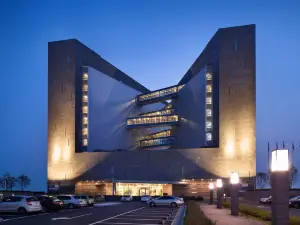
Hidden Bay Hotel

Ramada Plaza by Wyndham Dolsan Yeosu
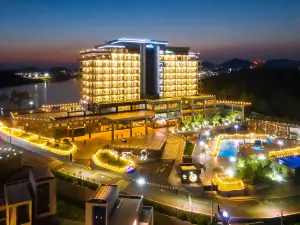
HOTEL JCS YEOSU

Stanford Hotel&Resort Tongyeong

Songdo Central Park Hotel
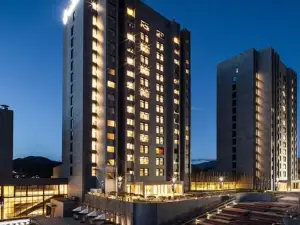
Bloomvista Hotel & Conference
Popular instagrammable hotels near jeonju.

Ananti at Gangnam
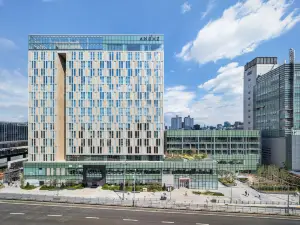
Andaz Seoul Gangnam
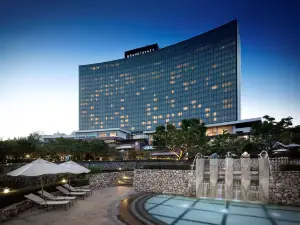
Grand Hyatt Seoul

RYSE, Autograph Collection Seoul by Marriott
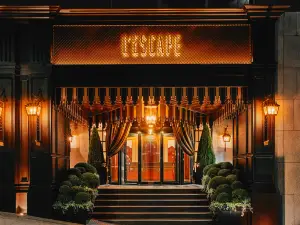
L'Escape Hotel

The Westin Josun Seoul

The Plaza Seoul, Autograph Collection
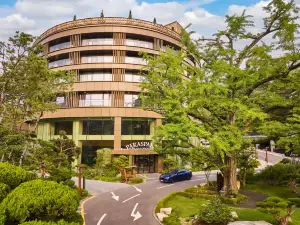
Paraspara Seoul operated by Josun hotels & Resorts
Popular hot spring hotels near jeonju.

Hotel Susung
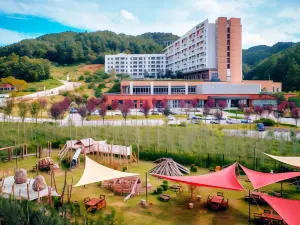
Sono Belle Cheongsong
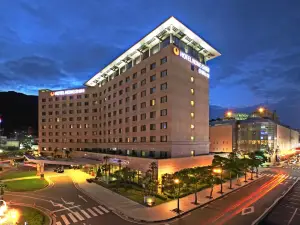
Nongshim Hotel
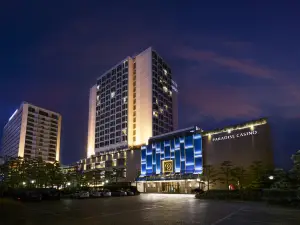
Paradise Hotel Busan
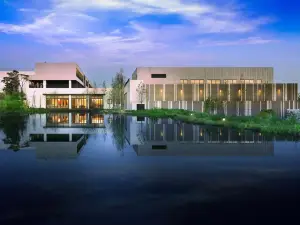
Popular Ski Hotels Near Jeonju
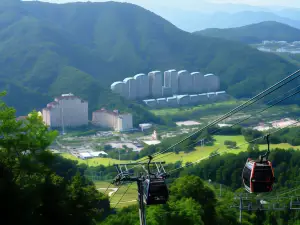
SONO Felice Vivaldi Park
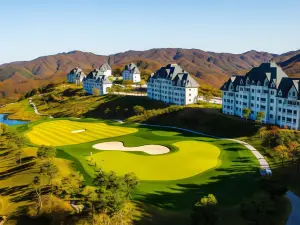
Vivaldi Park Hongcheon

High1 Grand Hotel Main Tower
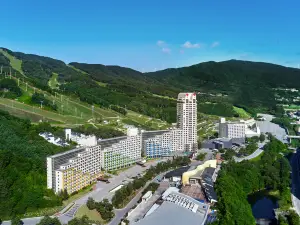
Phoenix Resort Pyeongchang
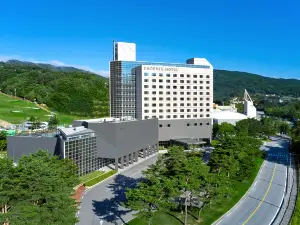
Phoenix Hotel Pyeongchang
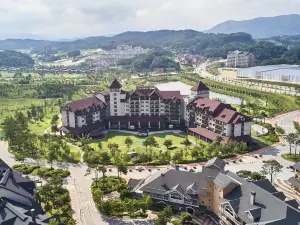
InterContinental Hotels Alpensia Pyeongchang Resort
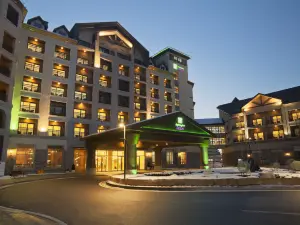
Holiday Inn Resort Alpensia Pyeongchang

Holiday Inn & Suites Alpensia Pyeongchang
Popular gourmet hotels near jeonju.
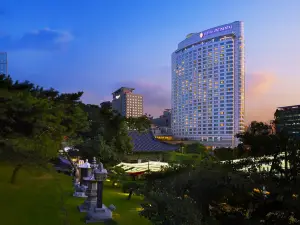
InterContinental Seoul COEX, an IHG Hotel
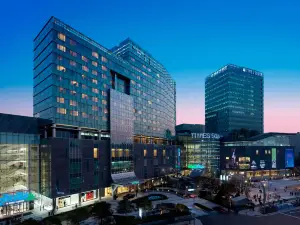
Courtyard by Marriott Seoul Times Square
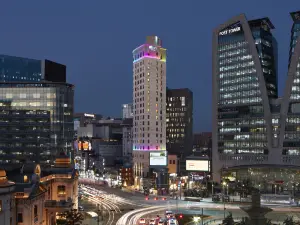
Aloft Seoul Myeongdong
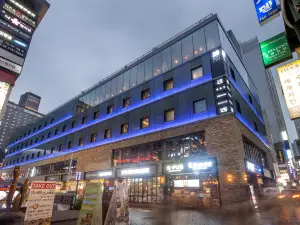
Hotel28 Myeongdong

Nine Tree Premier Hotel Insadong (Myeongdong)
Popular premium hotels near jeonju.
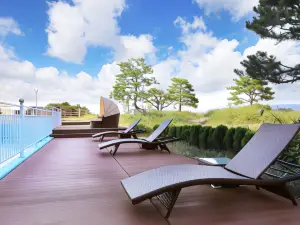
Buan Tourist Hotel
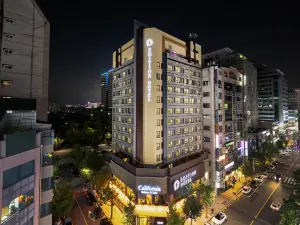
Hotel D Edition
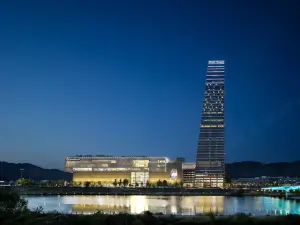
Hotel Onoma, Daejeon, Autograph Collection
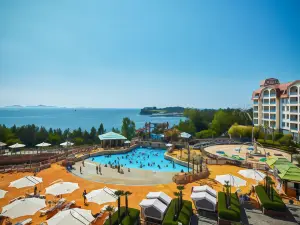
Sono Belle Byeonsan
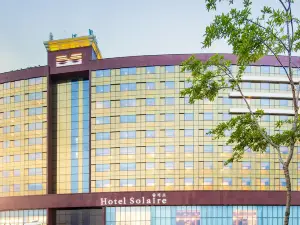
Hotel Solaire

Ramada Plaza by Wyndham Gwangju

Grand Plaza Cheongju Hotel

Ananti at Namhae
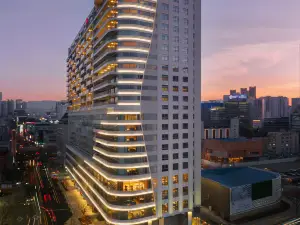
Daegu Marriott Hotel

Hotel Inter-Burgo Daegu
Popular 4-star select hotels near jeonju.
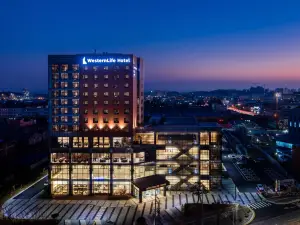
WesternLife Hotel
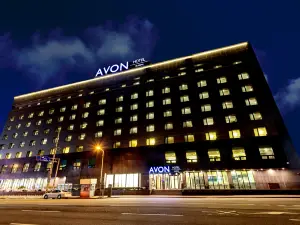
Avonhotel Gunsan

Ramada by Wyndham Gunsan
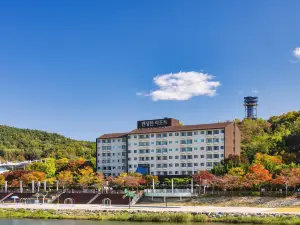
KensingtonResort JirisanNamwon

The Suites Hotel Namwon

Buan Tomynspa Pension
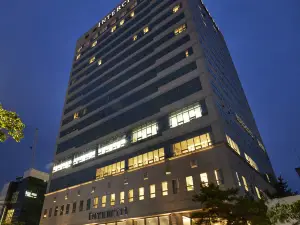
Hotel Interciti
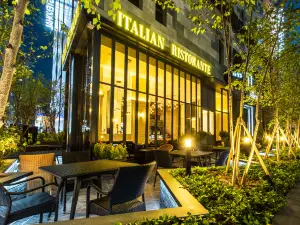
Hotel Stendhal
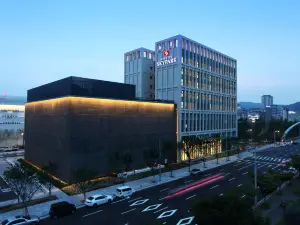
Hotel Skypark Daejeon 1

Courtyard Sejong
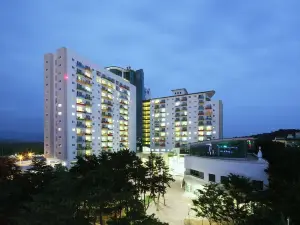
Hanwha Resort Daecheon Paros

Ramada Plaza by Wyndham Chungjang
Other recommended cities.

Popular Types of Attractions in Jeonju
Popular attractions in jeonju, popular restaurants in jeonju, popular destinations, recommended attractions at popular destinations, popular trip moments, popular travel types, more things to do in jeonju.
- Customer Support
- Service Guarantee
- More Service Info
- Website Feedback
- About Trip.com
- Terms & Conditions
- Privacy Statement
- About Trip.com Group
Other Services
- Investor Relations
- Affiliate Program
- List My Property
- Become a Supplier

A Complete Guide to Visiting Jeonju’s Hanok Village
Ready to take a trip to the largest Hanok village in South Korea? Delve into the rich culture of Jeonju Hanok Village and explore its past and present in this guide.
I’m willing to bet you’ll visit a Hanok Village, when you’re travelling through South Korea . Maybe by accident, or perhaps you’ve already heard about the charming collections of hardwood homes with tile roofs curling up towards the clear blue skies. But why not visit the biggest and best? Enter Jeonju Hanok Village.
Jeonju isn’t just a stop along the tourist trail; it’s a living time capsule. Walking down the cobbled streets between the whopping 800 houses on my most recent visit, I couldn’t help but notice the energy that still buzzes through this historic village.
Locals and tourists travel near and far to stroll through the streets that evoke a South Korea deeply rooted in tradition and pride. So put on your best Hanbok dress (you can rent one) and step back in time with a journey to Jeonju Hanok Village.
Why Visit Jeonju Hanok Village?
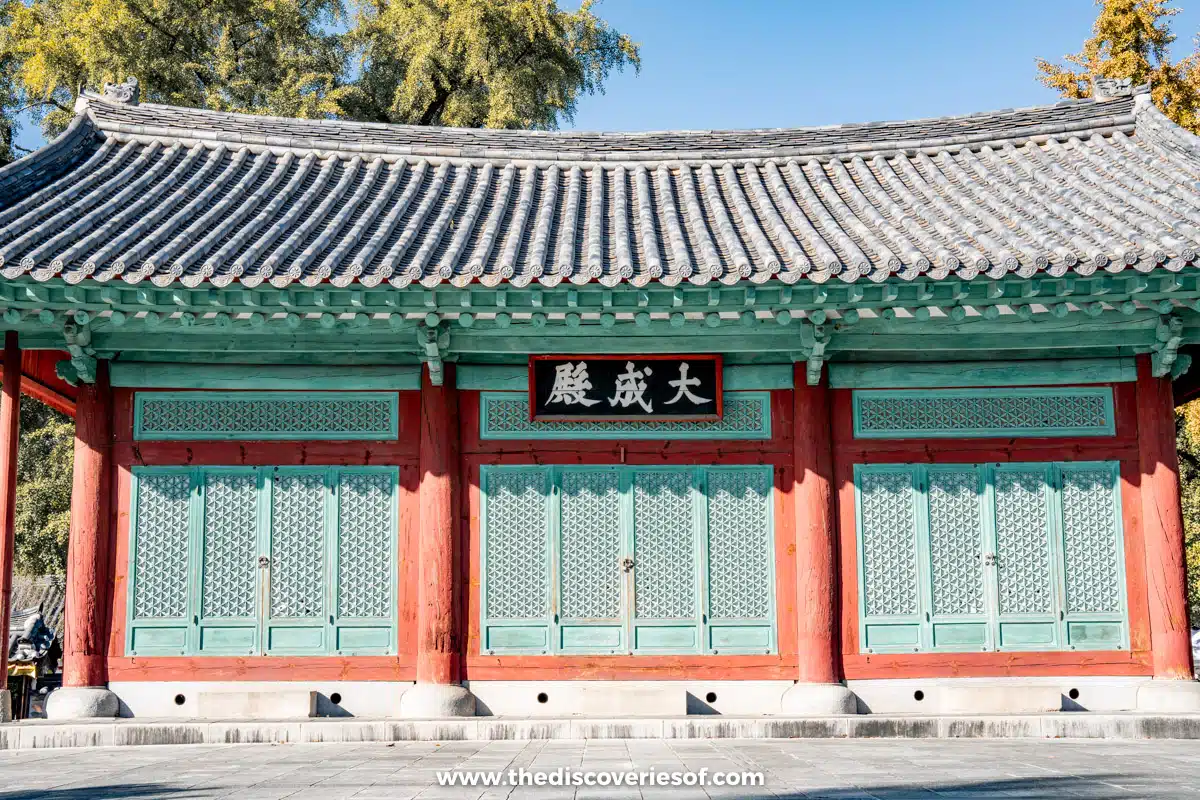
Jeonju Hanok Village isn’t just the largest Hanok Village in the world; it’s also the most charming. Walking around the cobbled streets and admiring the 20th-century Hanok homes are huge parts of the appeal of visiting Jeonju.
Friendly locals, traditional tea houses, and historic monuments like the Gyeonggijeon Shrine are just a few reasons that make visiting Jeonju Hanok Village a must on your trip to South Korea. Don’t worry – I’ll tell you all about these and some hidden gems soon.
More recently, Jeonju Hanok Village became an official Slow City by Cittaslow (the slow food movement group).
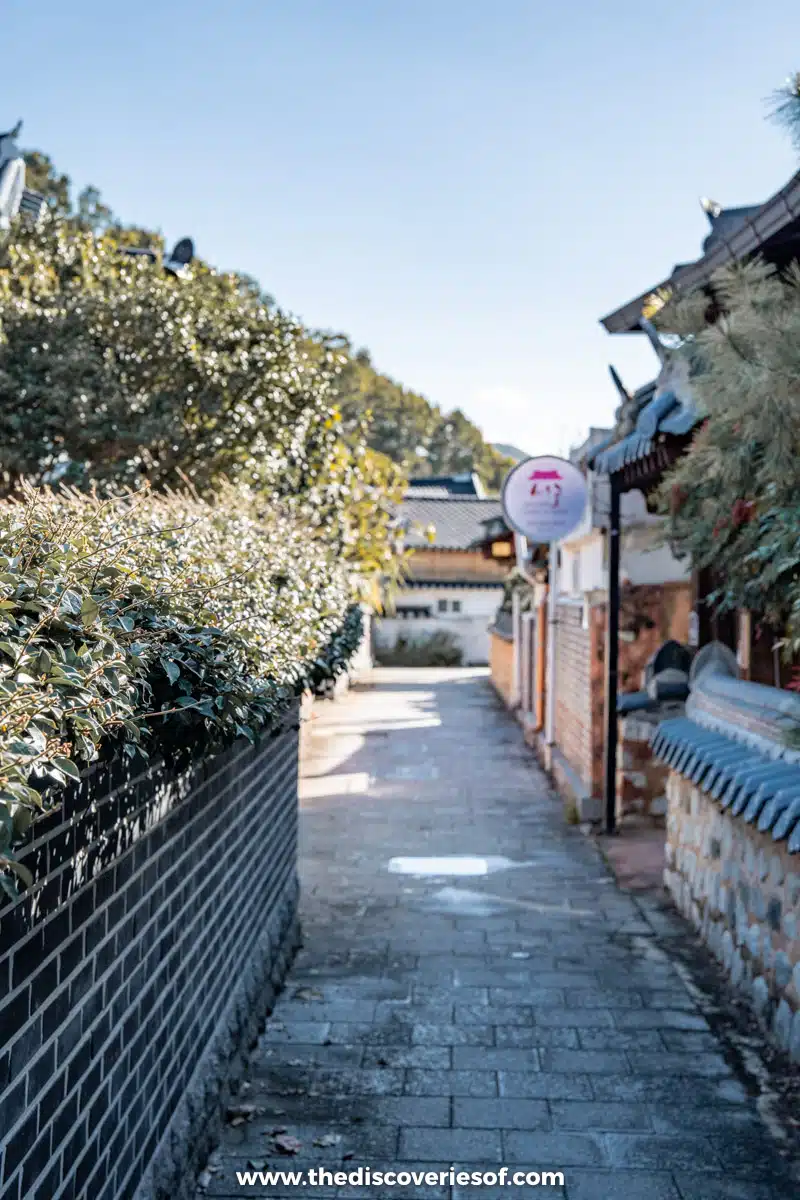
Why does this matter? The international organisation gives the honour to cities that preserve local traditions and offer high-quality food and beverage options and a laid-back quality of life. In other words, they have it all figured out.
Try to plan your trip around one of the annual festivals, like the famous Jeonju International Film Festival, each April and May to watch the town come alive.
Top Things to Do
Attend a festival.
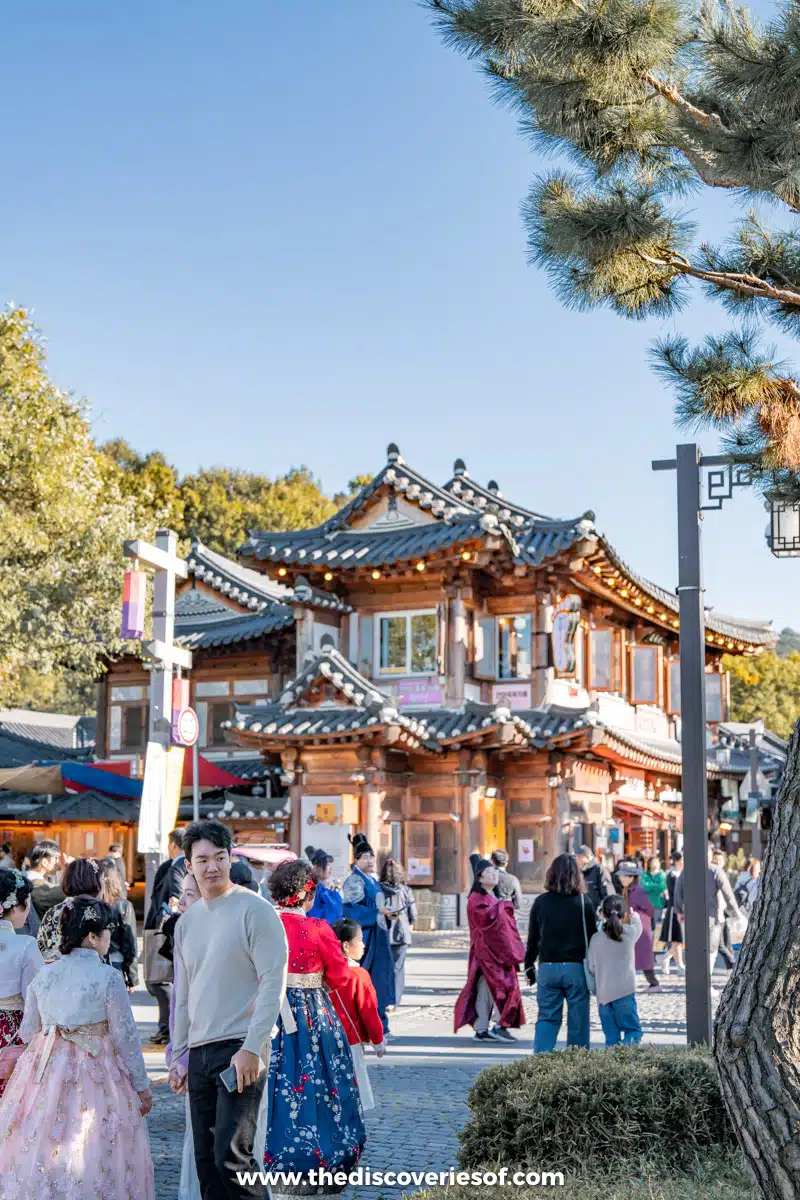
Jeonju Hanok Village is always a fun place to visit, but when you add a festival into the mix, an already memorable place becomes even more festive. The Jeonju International Film Festival is the most famous, and it takes place every Spring. The event started in 2000 and features nearly 250 films and events across the city in different theatres and venues. It’s the city’s most well-known event and one of the best.
But the Jeonju Bibimbap Festival is another tradition, where the village comes alive each fall, celebrating the local dish with cooking competitions and other events highlighting the famous combination of rice, kimchi, meats, and veggies. Either festival is a great choice, and there are plenty of smaller celebrations throughout the year.
Book your accommodation early if you’re attending any of the popular annual festivals, especially if you want to choose from the relatively limited options in the village itself.
Rent a Hanbok
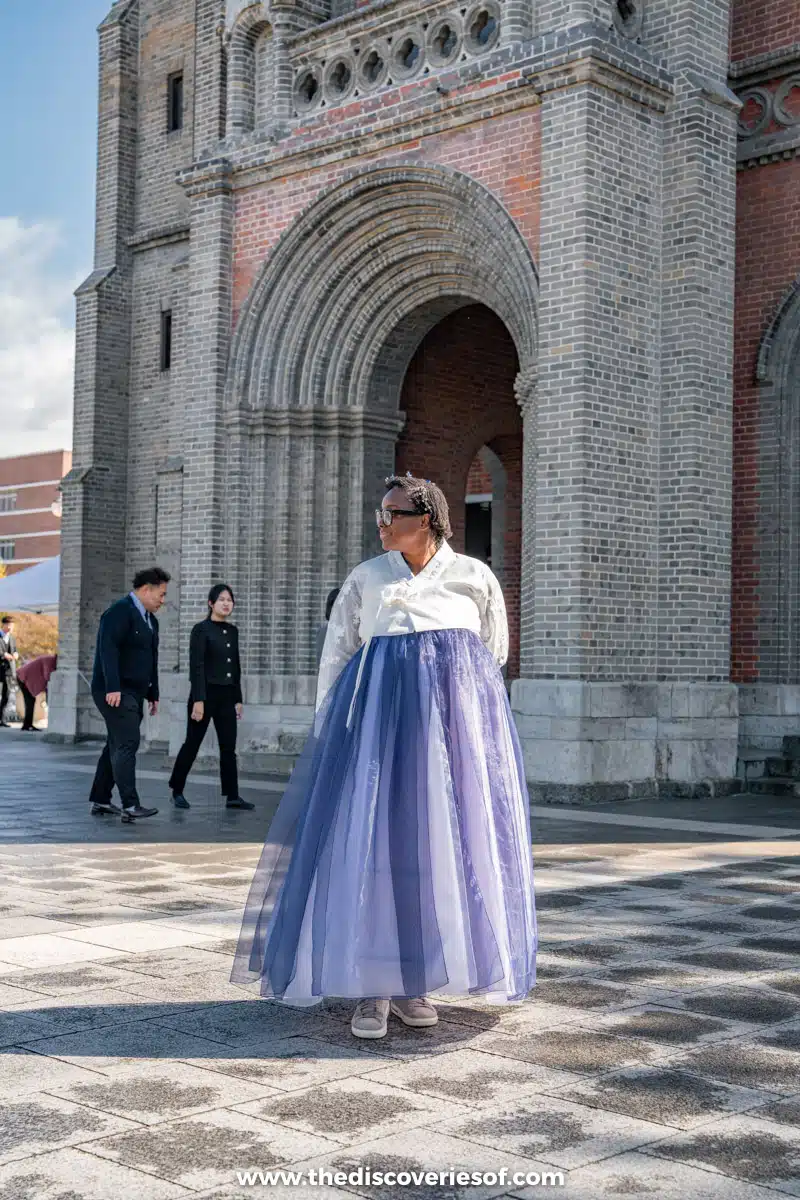
If you walk around Jeonju Hanok Village, you’ll probably see a lot of people strolling the cobbled streets wearing elaborate outfits from another era – this style of dress is called hanbok . While the dresses have been around for thousands of years, they’re having a bit of a moment again thanks to popular culture staples like K-dramas.
The lightweight, loose-fitting clothing features elaborate designs, which (historically) spoke to your social status. Women often wear a dress (or skirt with a jacket, and men wear a robe or pants with a similar jacket ( jeogori ).
While hanboks are always a popular choice for special events, renting one for photo sessions is increasingly popular, and there’s really no better place than Jeonju Hanok Village.
Visit Gyeonggijeon Shrine
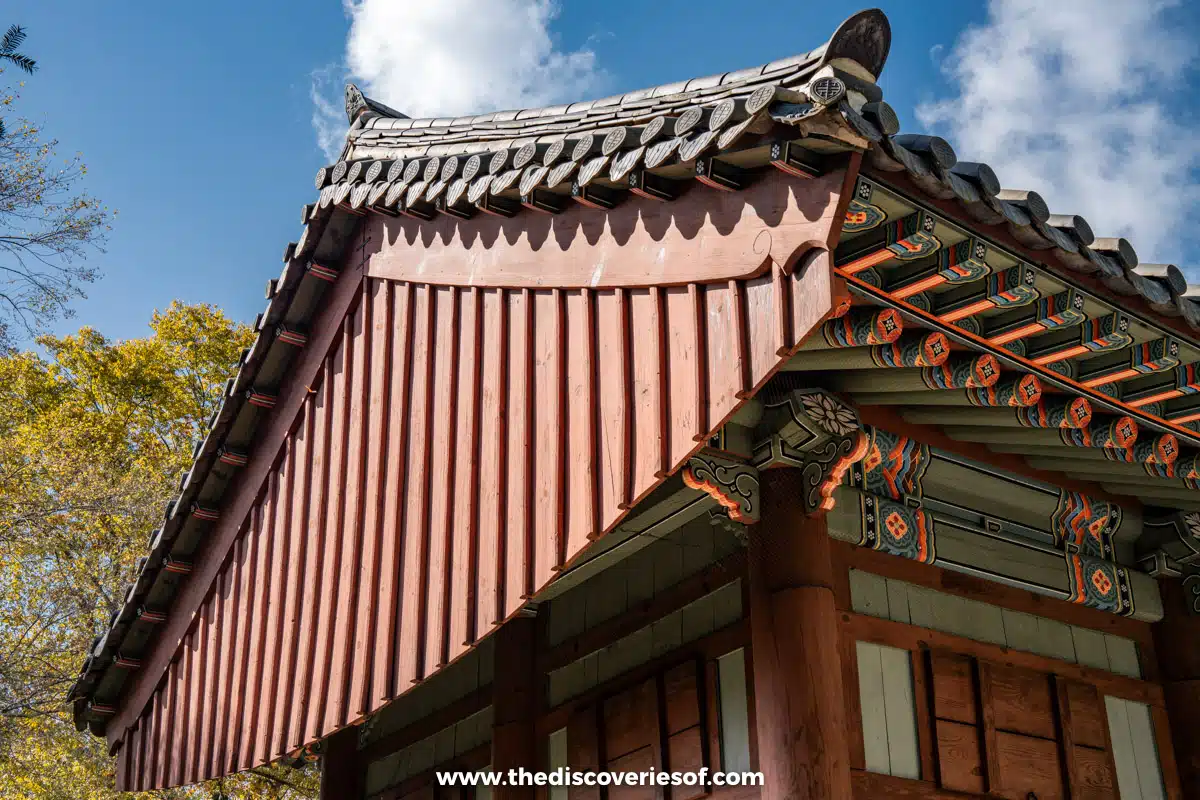
You can’t come to Jeonju village and not visit the Gyeonggijeon Shrine, the charming Hanok houses were literally built around the 15th-century year memorial. An homage to the first royal Joseon Dynasty leader, King Tae-jo, you can find his portrait alongside other Korean dignitaries over the years. The building and grounds are gorgeous and are one of the best places to take photos wearing traditional hanbok dress, so plan ahead.
Bring some cash. The museum is one of the only attractions in the village that you’ll need to pay for, and it costs £1.80 ($2.30).
Jeondong Catholic Cathedral
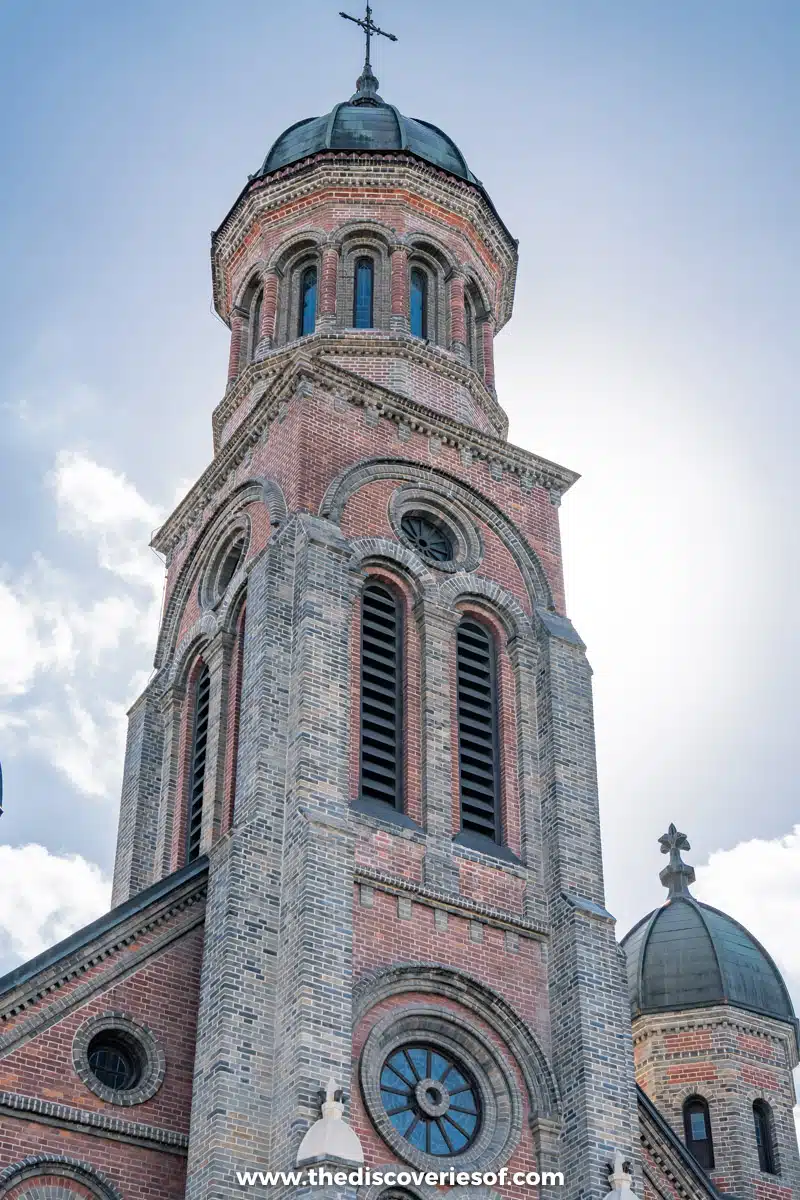
The 20th-century Roman-Byzantine cathedral may look a bit out of place next to the traditional Hanok-style homes, but it is a gorgeous building that’s an important part of local history.
Christians weren’t always welcome in this area, and under the Joseon Dynasty there were mass persecutions, mainly in the 1800s. And this church actually rests on the same land where Christian martyrs Paul Yun Ji-chung and Jacobus Kwon Sang-yeon were beheaded for disobeying Confucian laws.
It’s a fascinating look into Jeonju’s history, and the building itself is rumoured to have come from the walled fortress near Jeonju during the Japanese occupation.
See the Village From Omokdae and Imokdae Historic Sites
Looking down on the neatly designed rows of Hanok houses from above is an excellent way to appreciate the thought that went into designing this historic village. Omokdae offers one of the best viewpoints from above.
Omokdae and Imokdae Historic Sites are on the eastern corner of the village, perched high up on a cliff overlooking the village. The vantage point is perfect for seeing the curling tiled roofs and cobbled streets. But the site is also home to a pavilion, walking bridge, and stones that pay tribute to King Taejo, whose family lived in this area and where he returned after an important victory of Japanese troops.
Visit a Confucian School
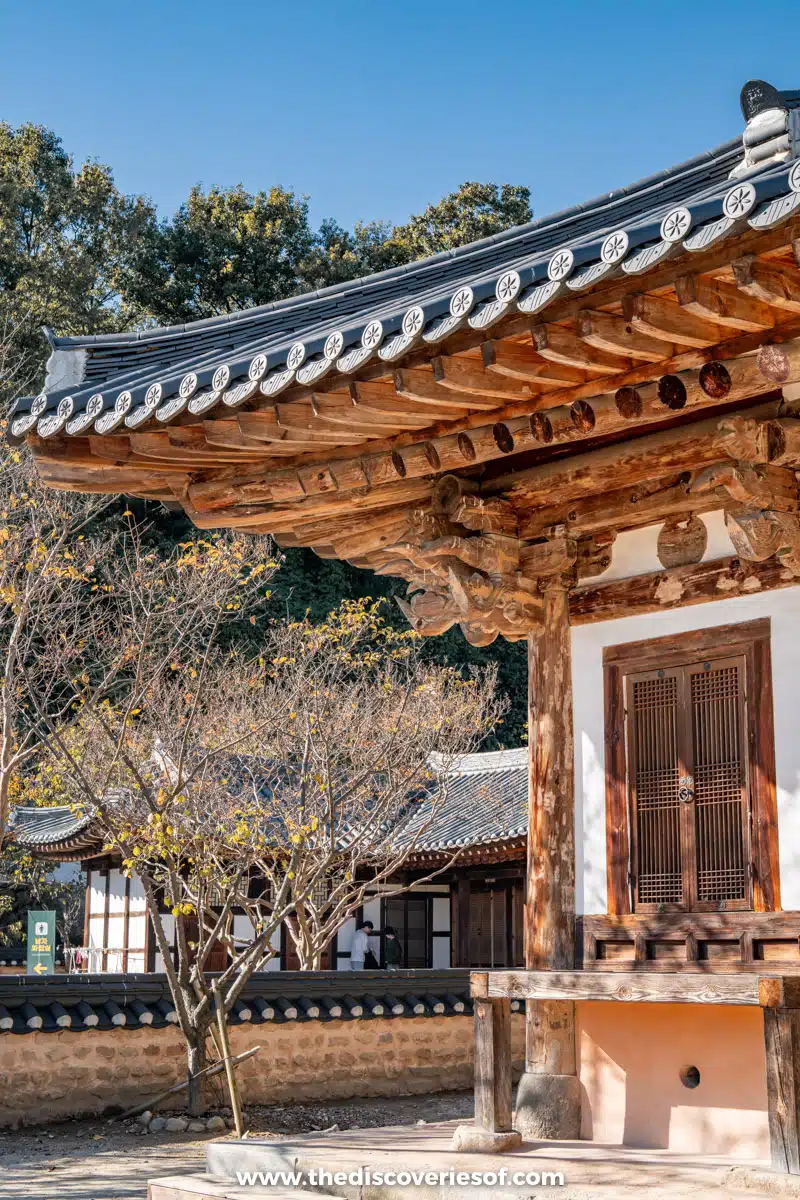
Confucian beliefs were an important aspect of the Joseon Dynasty rule, and you can still tour an academy dating back to the 15th century right in the middle of Jeonju Hanok Village.
Jeonju Hyanggyo used to be where Gyeonggijeon Shrine now sits, but it was moved to its current location in the early 17th century. The setting is absolutely gorgeous, with a large courtyard under several beautiful gingko trees that are easily a few hundred years old.
This is one of the most popular places to wear the hanbok dress as it’s one of the most historic, and the courtyard offers an excellent view of the Joseon-era building
Where To Rent a Hanbok & Top Tips for Doing So
Now that you know a bit more about what hanboks are, it’s time to rent one. Luckily, there are a few stores you can pick one up from, and there are lots of casual and formal designs.
Hanbok Significance
Wearing a hanbok tells a story; historically, it reveals your social and economic class. The materials used (like cotton or silk), colours, and patterns on the garment told stories about the family, event, or occupation.
Style of Hanbok
First, you’ll want to choose a hanbok that matches the occasion and maybe your personality. From formal wedding wear to dressing up like your favourite K-drama star, you can choose from endless options at the best shops.
Choose a Hanbok Shop
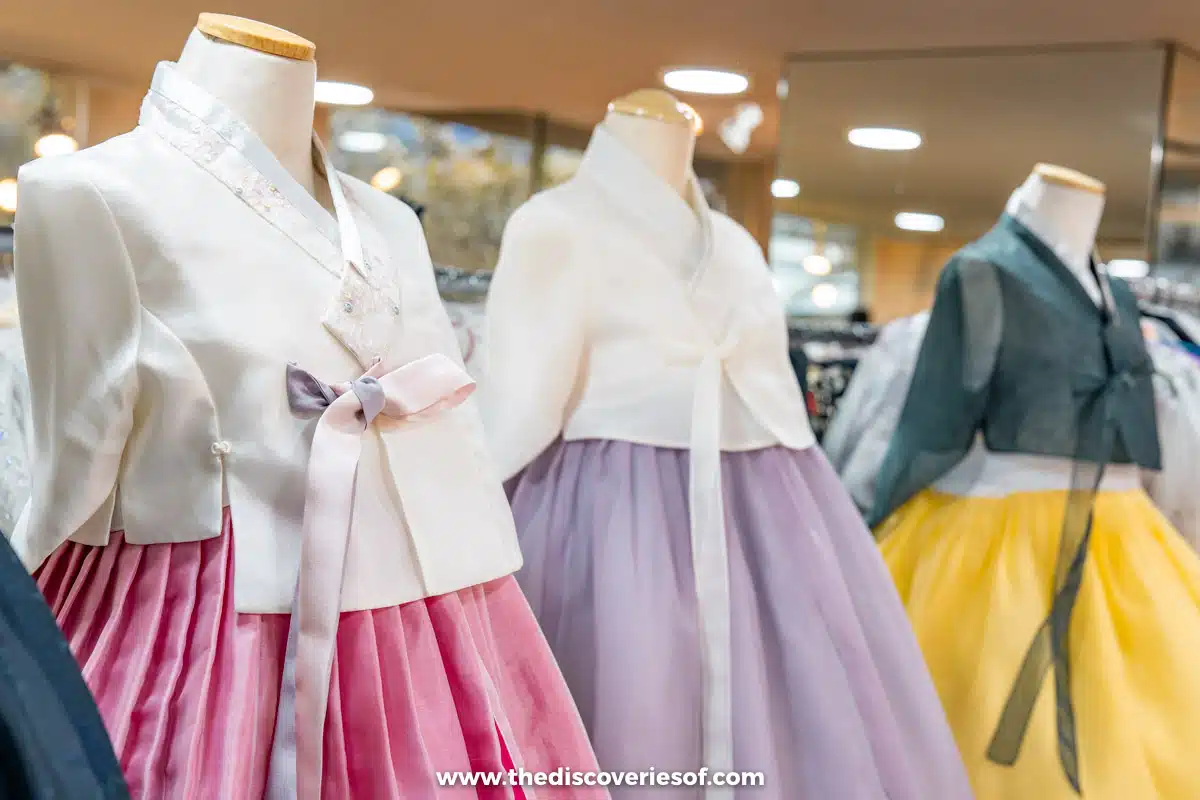
You can pack your hanbok when you travel or rent one when you get to Jeonju Hanok Village. There are a few popular shops along the main street, but Hanboknam is the most popular. Expect to pay around £6 ($8) per hour for basic hanbok rentals.
Hair & Makeup
Wearing the hanbok requires attention to every detail, so be sure to ask about hairstyles and makeup if you plan on hosting a photo session. Both are reasonable, with the hairstyles only costing around £1.50 ($2).
Where to Eat and Drink
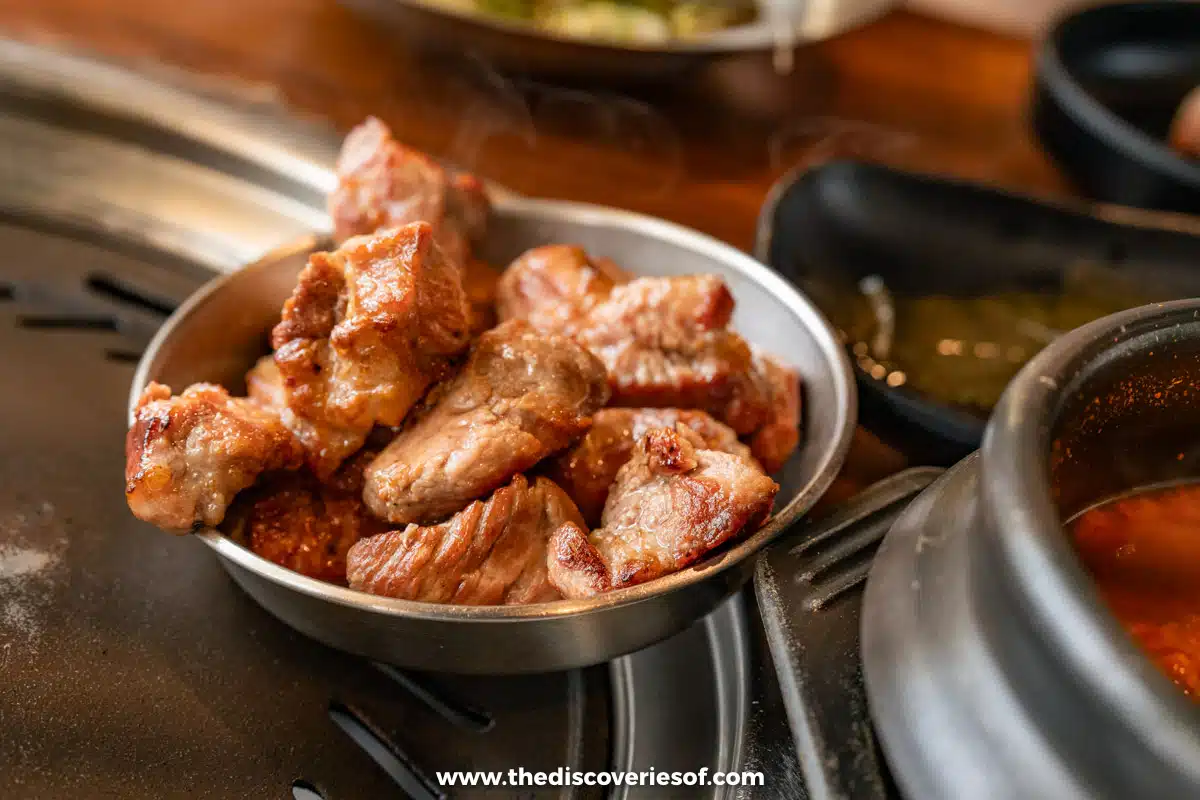
It’s no secret that Jeonju is a destination for great food. In fact, it’s an official UNESCO City of Gastronomy and the home of the world-famous rice bowl dish Bibimbap, so of course, you can find some fun things to eat inside.
PNB Hanok Village Point
Choco-pies are a thing in Jeonju. When you’re in Jeonju Hanok Village, you have to try the chocolate and marshmallow sandwich-style cake at the extremely popular PNB outpost right in the Hanok Village.
Dawoorang (다우랑)
Dawoorang (다우랑) is a famous shop inside the Hanok Village, best known for its shrimp dumplings. The steamed noodle pockets are stuffed to the brim with shrimp and chives. Order a few. They’re open from 10 am to 9 pm but are extremely popular, and the line starts well before they open.
Octopus Skewer
Looking for the one item you need to try in Jeonju Hanok Village? Get the octopus skewer, and thank me later. The grilled octopus is tender and delicious, and you can choose from fun toppings like bonito flakes and cheese for around £1.60-£2.40 ($2-$3).
Visit a Local Tea House
Visiting a local tea house is something that really helps you understand the centuries-old traditions in the ornate wooden walls of the Hanok buildings. It’s an opportunity to slow down, pay attention to each detail of the decor, and try a cup of Korean tea.
Gyodong Tea Garden is the most popular tea house in the village, and for good reason. They have some really cool options, from the classic and a bit funky Shan Lin Xi to the GABA tea, which uses modern techniques during fermentation for more pronounced medicinal benefits. You can also order rice cakes and yakgwa (a honey-based cookie) to complement the wide variety of tea flavours made with different herbs and flowers. Sign me up.
Alternatively, go to Gosindang. It’s not as famous, but serves tea alongside fun snacks like sherbert and red bean porridge in comfy digs.
The History of The Hanok Village
Before you can explore the history of Jeonju Hanok Village, you’ll want to know more about the city itself. Jeonju is an ancient city with its roots dating back to 57 BCE. Over the years, it went from being a small market village to an important city with some of the most influential artwork, political figures, and food (I’m talking about you, bibimbap) in Korea.
Over the years, the city was the capital of one of the 3 Kingdoms of Korea (Hubaekje), the site of the physical and moral victory of the Imjin War invasions by Japan during the Battle of Jeonju, and where the original leader of the Joseon Dynasty was born.
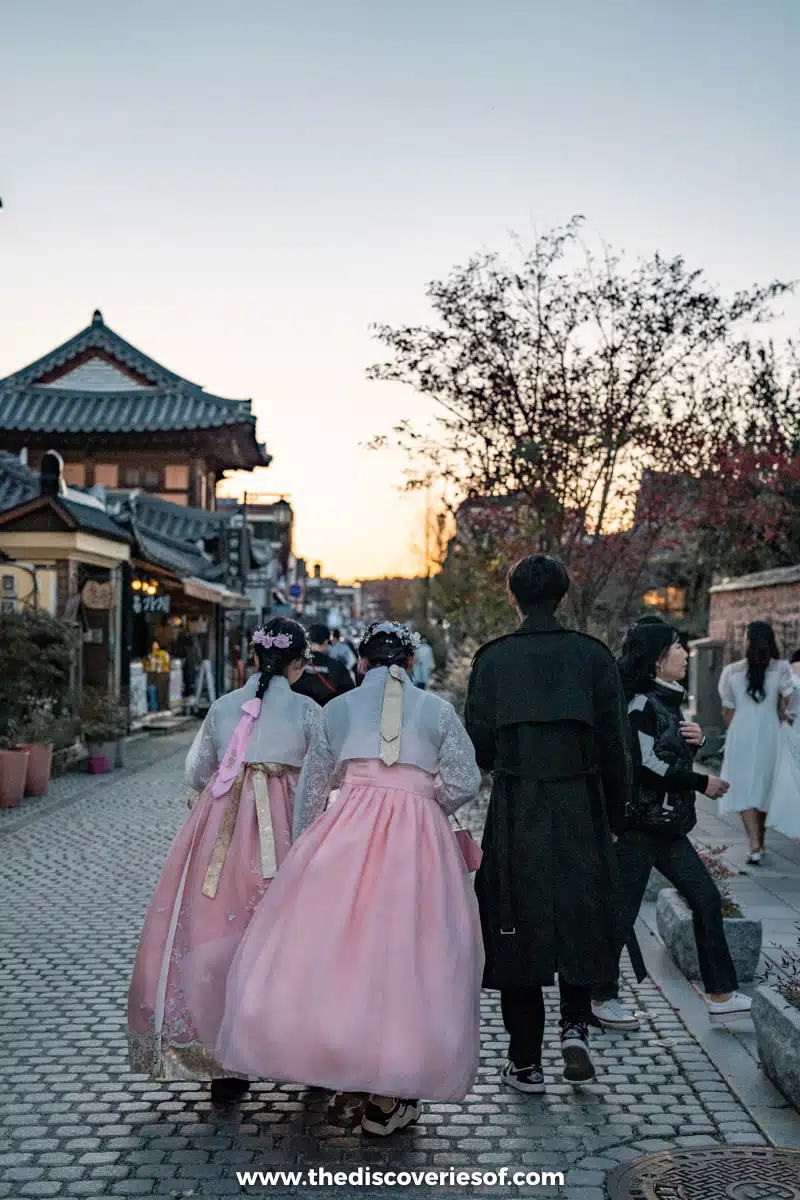
It’s not surprising that a city with this much history and significance to the Korean identity is home to the most iconic living example of a traditional Hanok village.
Construction of the Jeonju Hanok Village
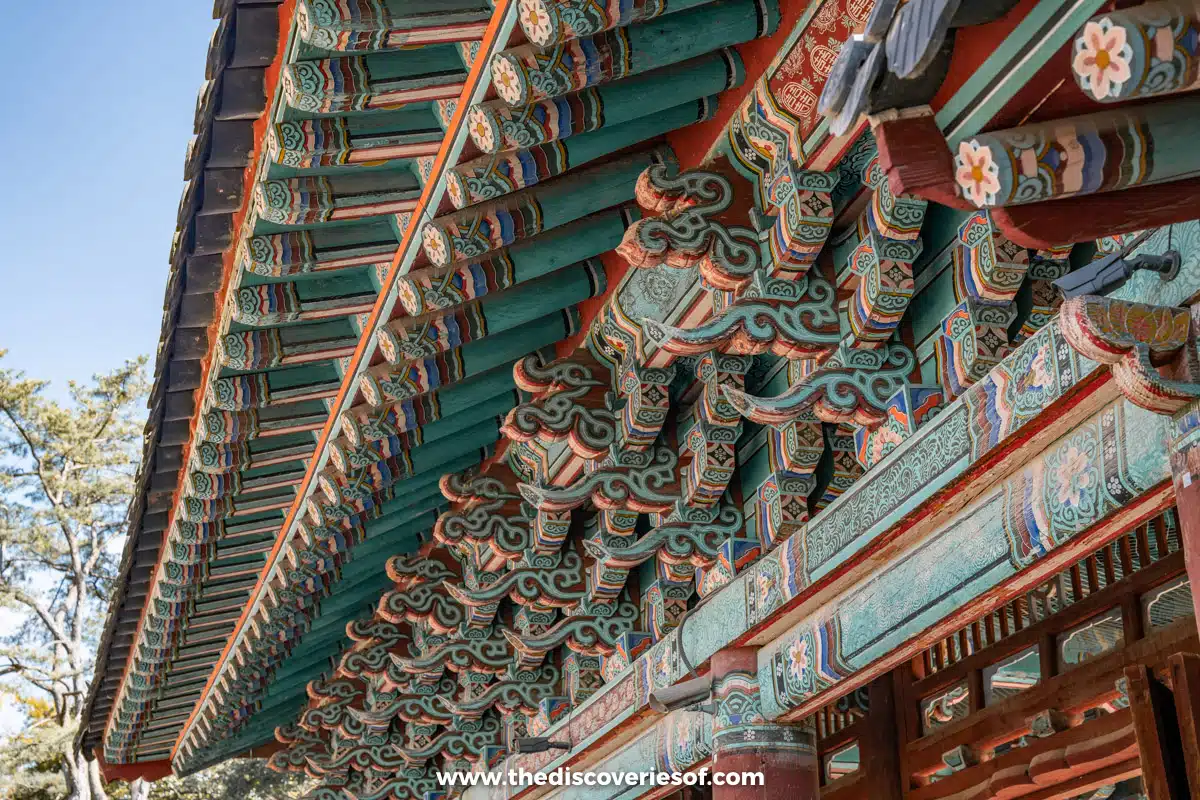
So, what exactly are the 800 (give or take) Hanok homes in Jeonju Hanok Village? They are traditional residences inspired by centuries of Joseon-era Korean customs.
The homes were made with large wooden beams, a stone exterior, and (in this case) tile roofs that famously curl toward the skies. Most notably, you’ll often find two different living areas in one home because men and women had separate quarters called the Sarangchae and Anchae.
Another characteristic of these houses is that residents often slept on the floor. A specialised heating system called Ondol uses fire to heat a large stone, which warms the floor to a pleasant temperature. Brilliant, isn’t it?
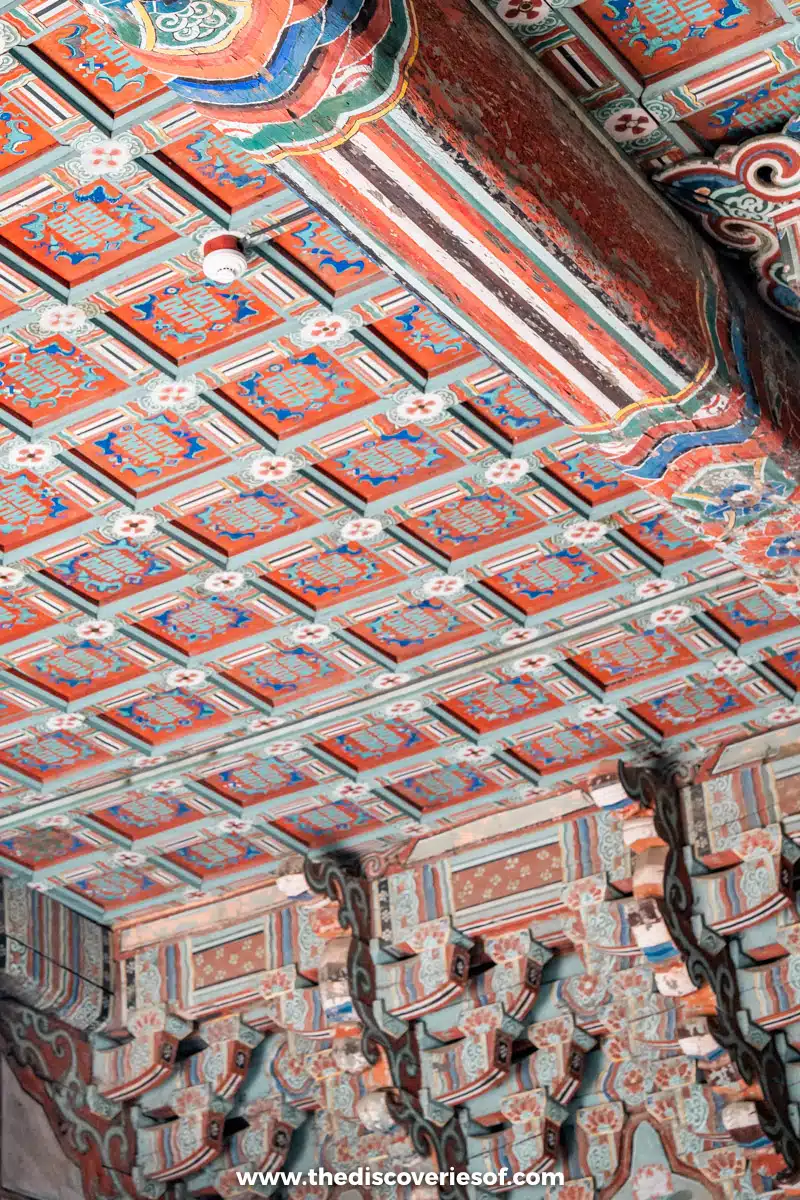
The village itself is more recent than you may think. Even the oldest houses in Jeonju Hanok Village are from the early 20th century.
When the Japanese occupied Korea from 1910-1945, South Korean residents noticed their neighbourhoods were changing. A lot. And you can still notice the stark difference that the Giwa-jib (tile roof) Hanok houses have compared to the more modern buildings throughout the rest of town.
Jeonju residents built the homes in the early 1930s, protecting the Gyeonggijeon Shrine in the middle with the Hanok-style homes.
Top Tips for Planning Your Visit
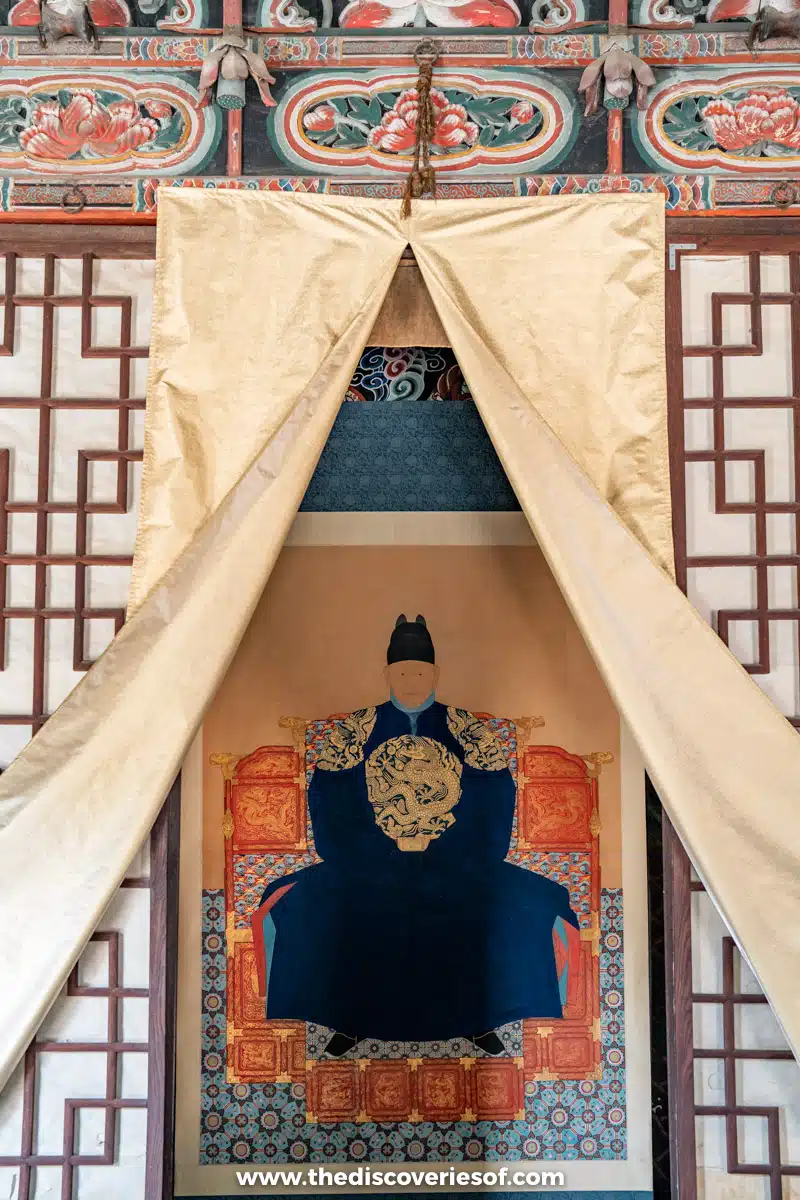
- If you’re looking to stay in the Hanok Village, there are lots of options from local hosts and on websites like Booking.com and Airbnb.
- Take your time and walk around the Hanok Village and chat with friendly shop owners and B&B hosts.
- Festivals are a wonderful way to experience festivities with locals in the historic village.
- You can stop by one of the Tourist Information Centers and pick up a map for important landmarks and information on parking lots and bus stops.
- Most areas of the village are free, but you’ll need to pay admission to the Gyeonggijeon Shrine.
Practical Information
Jeonju hanok village address.
99 Girin-daero, Wansan-gu, Jeonju, Jeollabuk-do, South Korea
Opening Times
Jeonju Hanok Village is open 24/7, 365 Days per year, but individual businesses have varying hours.
Getting There
You can get from Seoul to Jeonju Hanok Village a few different ways. You can drive, which takes around 3-3.5 hours, depending on traffic. Alternatively, you can take a bus or train, both of which reach Jeonju in around 3 hours. The KTX from Yongsan Station costs around £28 ($35), but I highly recommend upgrading to 1st class, which only costs about £8 ($10) more. The ride is much more comfortable, and you’ll have plug-ins and WiFi at your seat.
If you opt for the bus, tickets average around £15 ($19), and it gets there in about 3.5 hours.
Where to Stay
Interested in making Jeonju Hanok Village more than a day trip? I have good news. You can spend the night (or several) in the Joseon-era-inspired homes. I couldn’t do this on my last visit, but I’ve heard that renting a guest house allows you to immerse yourself in the culture and lifestyle in ways you can’t do in one afternoon. Rain check. How do you stay in one? You can find listings on Airbnb or try the popular Happiness Hanok Full Guesthouse on Booking.com – just reserve one in advance.
I highly recommend sharing a guest house with locals to learn more about this history and traditions from Jeonju residents.
Recommended Tours
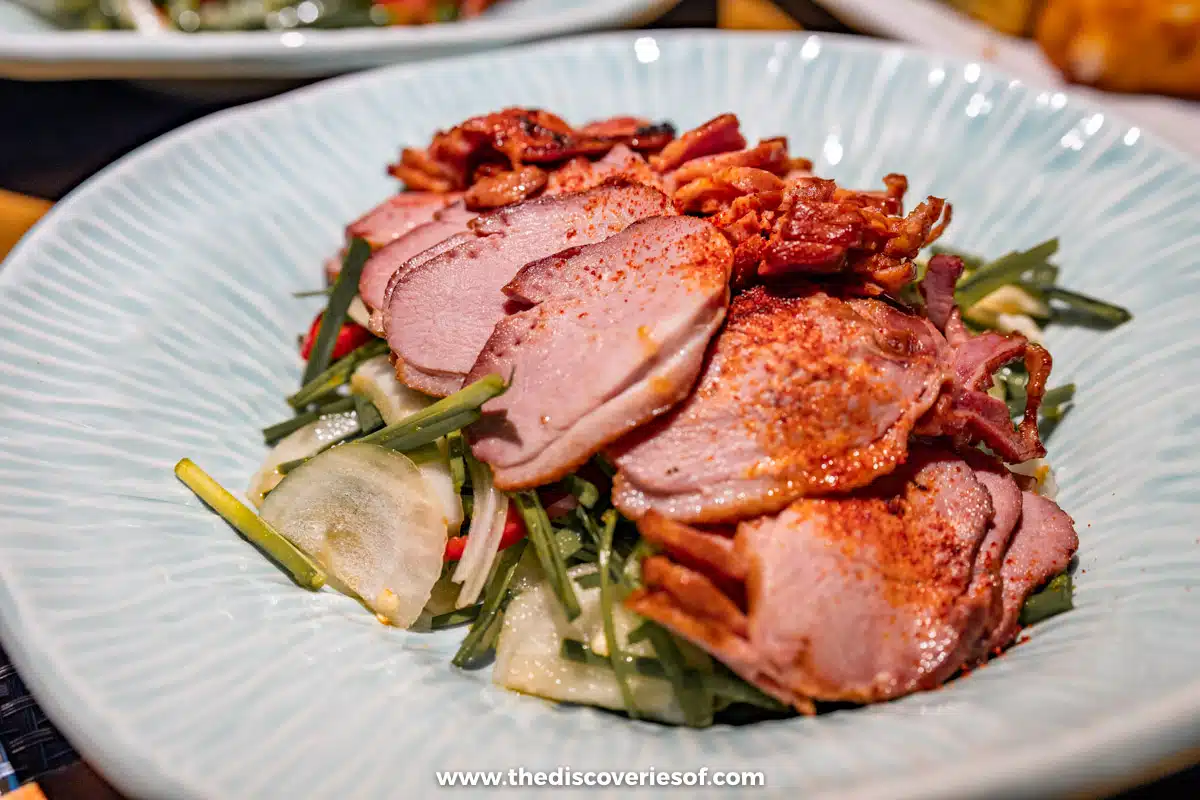
Jeonju Hanok Village Map
Read More South Korea Guides
- The Best Things to do in South Korea
- Plan Your South Korea Itinerary With This Guide
Love This? Save and Share on Pinterest
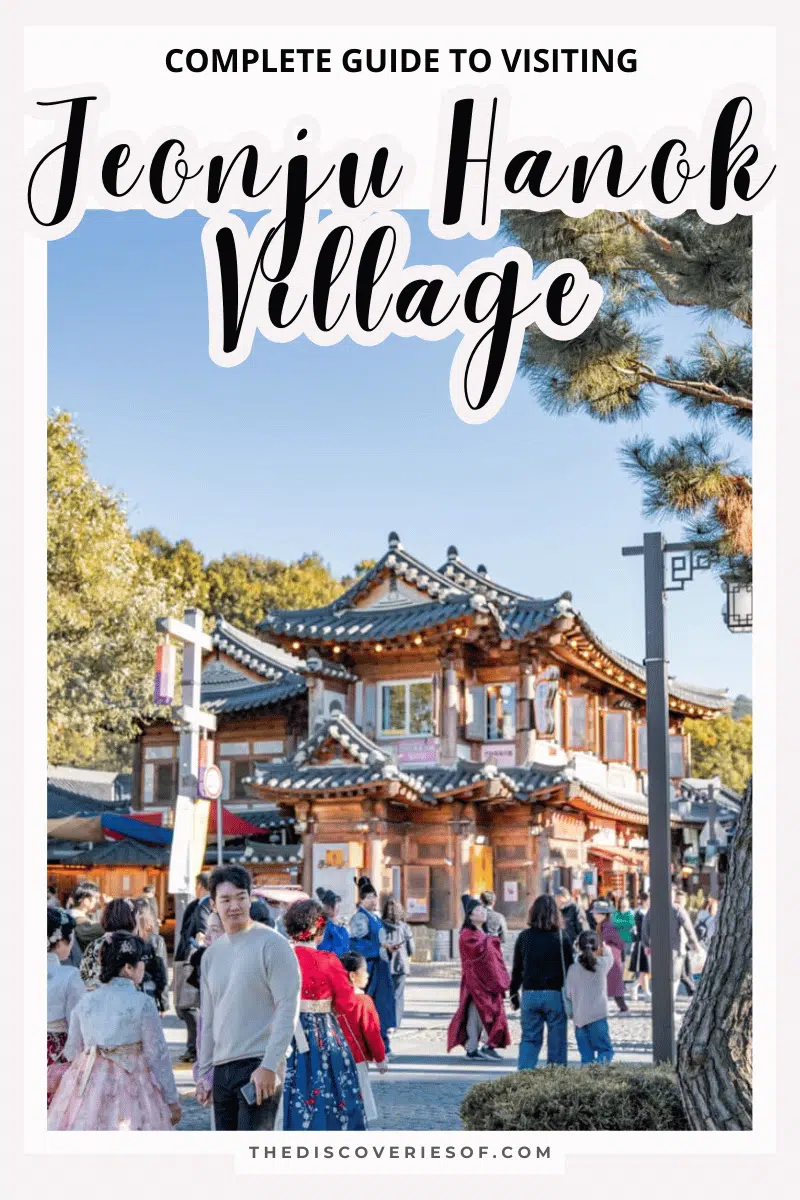
I’m Julianna Barnaby - a professional travel writer and geek extraordinaire. I started The Discoveries Of to help you to discover the best of new destinations from around the world.
Discovering new places is a thrill - whether it’s close to home, a new country or continent, I write to help you explore more and explore differently.
Related Posts
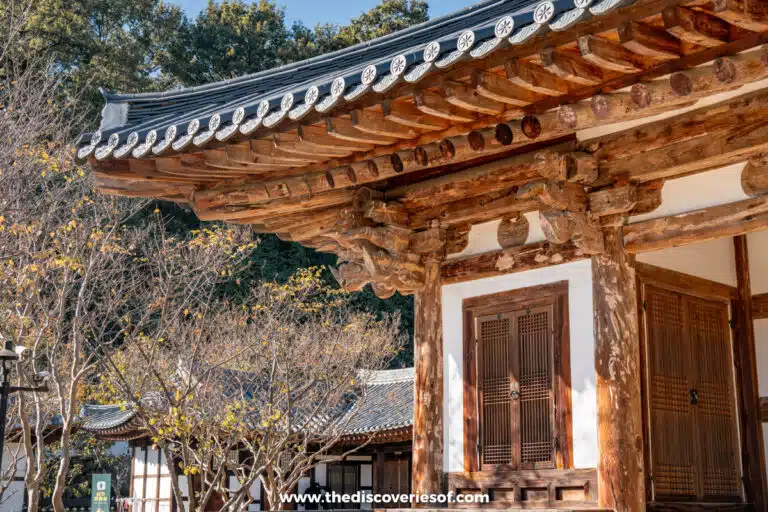
A Complete Guide to Jeonju, South Korea
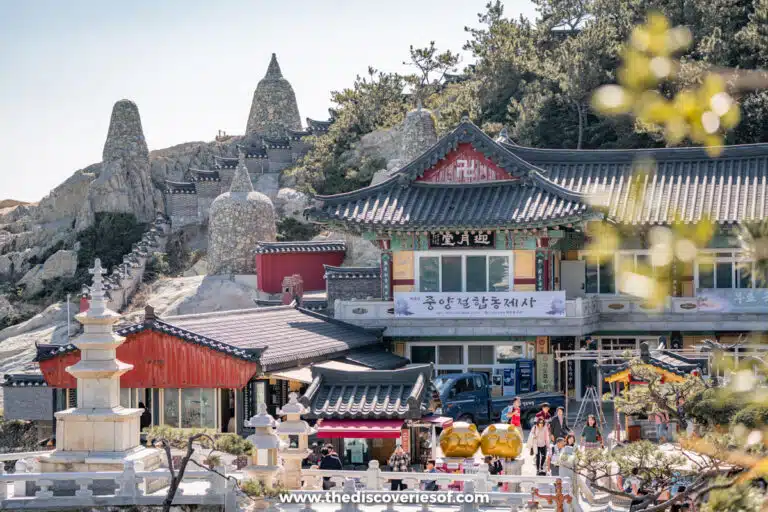
How to Spend 3 Days in Busan: An Epic Itinerary
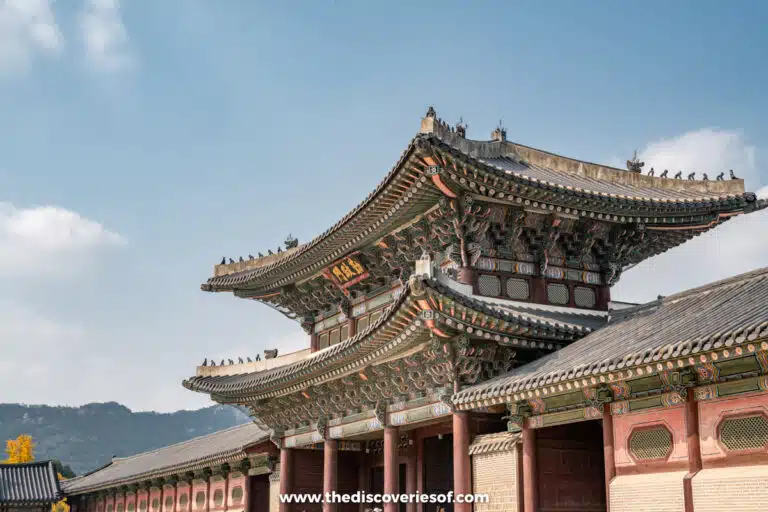
3 Days in Seoul: The Perfect Seoul Itinerary
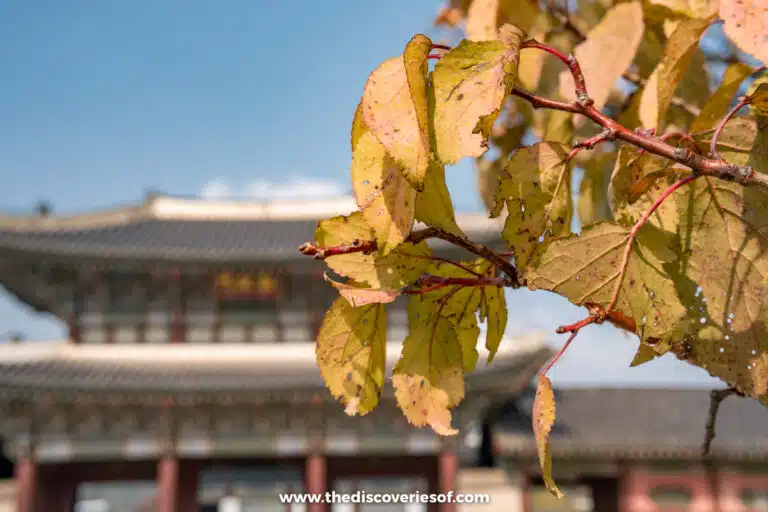
10 Days in South Korea: The Perfect South Korea Itinerary

Follow me on Instagram for travel inspiration, tips, and guides.
- 1 Understand
- 2.1 By train
- 3.2 By taxi
- 3.3 By foot
- 3.4 By bike
- 8.1 Hanok village stays

Jeonju (전주, 全州) is the capital of North Jeolla province, South Korea . It is an administrative, educational, and cultural center in the central part of Jeollabuk-do. The area is 206.2 ㎢, accounting for 2.6% of the total area of Jeonbuk. As of 2020, the population was 666,177, accounting for 36.3% of the total population of Jeonbuk.
Understand [ edit ]

Jeonju has been a central city in the Jeolla region for centuries. It was regarded as the birthplace of the Joseon dynasty, as the royal family clan was from Jeonju.
Get in [ edit ]
By train [ edit ].
KTX trains to Jeonju Station from Seoul depart from Yongsan Station, with some departing from Seoul Station. This is the fastest but most expensive option, taking about 2 hours from Seoul. Basic KTX fare from Seoul to Jeonju is ₩29,400 (2023).
Reaching Jeonju by train from the Gyeongsang region ( Busan , Gyeongju , Changwon ) require a detour and a transfer usually at Osong Station.
By bus [ edit ]
The Express Bus Terminal (고속버스터미널) and Intercity Bus Terminal (시외버스터미널) are right next to each other.
From Seoul, express buses departing from Central City Terminal are available for as little as ₩6,900 (child) ₩13,800 (adult) and take 2 hours and 40 minutes. From Incheon Airport , there are limousine buses that run every half hour that will take you near city hall in Jeonju. It takes 3 hours and 30 minutes. From Busan, express buses leave approximately every hour and cost ₩24,900. The trip takes around 3 hours.
Every bus trip makes at least one rest stop during the journey for about 15 minutes at a rest area where you can grab a bite or use the restroom.
Get around [ edit ]
There's an excellent public bus system that costs ₩1,300. All buses have free wifi. Line 1000, with a trolleybus livery, is designed for tourists and connects the train station and bus terminals to the hotel district and hanok village.
By taxi [ edit ]
Meter drop for taxis is ₩2,800. From the station to Hanok Maeul (Hanok Village) it's about ₩5,500.
By foot [ edit ]
Due to its relatively small size the main tourist spots can be fairly well seen by foot; sights like Deokjin Park, Wolseon Park and the city centre are not that far from each other.
By bike [ edit ]
Kakao T Bike, a shared electric bike service, is available in most of the city. There are no designated stations so the bikes can be left wherever as long as they are locked and accessible. ₩1,130 for the first 15 minutes and ₩500 for each 5 minutes after.
See [ edit ]

- 35.847509 127.121757 1 DeokJin Park ( 덕진공원 ) ( Near Jeonbuk University. ). You can see the bridge on the pond and Changpo herbs (창포) and you can take a duck boat. At night you can also see the music fountail and beautiful lights on bridge. At the middle of bridge there's a cafe and a convenience store.
- Gaeksa Building ( 객사 ) ( In the city center. ). This building was built around 1471 and was used to accommodate important visitors. Rituals to honour the king were also held here. It's a meeting place for many as well as a hangout location for many old men. The downtown area surrounding is also referred to as Gaeksa.
- Hansol Paper Museum , 강원 원주시 오크밸리2길 260 . Records the history of paper making and usages since the age of the Egyptians. There is an interesting movie shown in English upon request. Most of the signs are in Korean only, but the museum is still quite interesting. There are some displays on traditional Korean paper making. You also have a chance to make a piece of paper there as well. On weekends and holidays, there are various workshops available.
- 35.811231 127.162939 3 Jeonju Natural Ecology Museum ( Half an hour walk SE of the Hanok Village. ), ☏ +82 063-281-2831 . A plant and wildlife museum perfect for children.
- Jeonju Traditional Wine Museum ( 전주 전통술박물관 ), 71 Hanji-gil, Wansan-gu , ☏ +82-63-287-6305 . 9AM-6PM, closed Mondays . Opened in the Hanok Village in 2002, this museum aims to promote Korea's tradition of home brewing. Besides displays, there are classes and hands-on programs. They are reportedly eager to assist anyone wishing to brew Korea's traditional drinks for themselves. There are small fees for the programs: interestingly, teens get a discount on the "Local Wine-Drinking Rituals" class! ( updated May 2015 )
- Ohmockdae ( 오목대 ) ( Near Hanok Village. ). A small hill with a traditional house on top. The best thing about this spot is the night view of the city.
Do [ edit ]
Watch the local football team Jeonbuk Hyundai Motors FC at the 35.867503 127.064803 1 Jeonju World Cup Stadium . They are one of the most successful in Korea (8-time K League Winner) and have won the AFC Champions League twice.
Eat [ edit ]
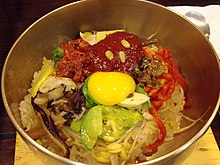
Jeonju is famous for its cuisine. Bibimbap is one of the most famous Korean dishes native to this region. "Bibim" means mixed and "bap" means rice. Served in the traditional brassware, it consists of rice with seasonal stir fried vegetables (carrot, bean sprout, radish, spinach, zucchini, bracken), seaweed (gim), and hot pepper paste (gochujang). It is also available in a hot stone bowl (dol sot), which slowly cooks the egg as you stir the ingredients together. The characteristic thing about Jeonju bibimbap is that it comes with Korean beef tartar (Yukhoe), Hwang Po Mook (a yellow jelly made from mung beans) and raw egg yolk (most of other regions in Korea serve with fried egg). The price for a serving of bibimbap is about ₩10,000. Along with bibimbap, kongnamul gukbap (bean sprout soup with rice) is one of the most popular food in Jeonju. Also give mountain vegetable (san chae) bibimbap a taste, if you're at any of the local mountains.
Some famous Bibimbap restaurants include:
- 35.817082 127.146052 1 Ga Jok Hoe Gwan ( 가족회관 ), ☏ +82 063-284-0982 . 11:30AM-9:30PM .
- 35.82743 127.120338 2 Loving Hut ( 러빙헛 ), Seosin Store 295-24, Seosin-Dong, Wansan-Gu , ☏ +82 063-274-7025 .
- 35.813411 127.151561 3 Veteran ( 베테랑 ), 84-10, Gyo-dong, Wansan-gu ( From the SE corner of Gyeonggijeon, go half a block south. The building is metallic gray and on the east side of the road. ), ☏ +82 63-285-9898 . A noodle restaurant with a limited but worthwhile menu. It is always busy.
- 35.814509 127.15216 4 Taste of bumpkin ( 촌놈의 손맛 ), 23, Taejo-ro, Wansan-gu , ☏ +82 063-535-5555 . It sells meatballs on a stick. Meatballs is made grilled Short Rib Patties. meatballs on a stick: 3,500won .
- 35.81383 127.151118 5 Gyodong croquette ( 교동고로케 ), 126, Gyeonggijeon-gil, Wansan-gu , ☏ +82 063-283-5555 . It is a croquette store. It serves many different types of croquette. Cream cheese croquette: 2,500won, Jeonju bibimbap croquette: 2,500won, Potato croquette: 2,000won .
- 35.814238 127.151045 6 Daurang ( 다우랑 ), 33, Taejo-ro, Wansan-gu , ☏ +82 063-285-5000 . It is a dumpling store. It serves many different types of dumpling. Shrimp pan-fried dumpling is one of the most popular food in this store. Shrimp pan-fried dumplings: 1ea-2,000won/1package-8,000won, Shrimp dumplings: 1package-5,000won, King-sized Dumplings: 1,500won, Pan-fried dumplings: 1,500won .
- 35.814222 127.156744 7 two aunts (Duimo) ( 두이모 ), 21, Jamandong 2-gil, Wansan-gu , ☏ +82 063-274-1212 . This café is famous for a bibimbap waffle. And it serves various homemade juices.
- 35.813336 127.152947 8 Jeondong Korean pancake ( 전동호떡 ), 75, Eunhaeng-ro, Wansan-gu , ☏ +82 063-232-3778 . It serves Korean pancake that is baked in a firepot. Korean pancake is chewy and mild. Soybean milk honey Korean pancake: 2,000won, Cream cheese Korean pancake: 2,500won, Garlic Korean pancake: 2,500won, Ice cream Korean pancake: 3,500won .
Jeonju-style Bean Sprout and Rice Soup Jeonju is known for its delicious food. Bean sprout and rice soup is called 'kong na mul kuk bap'. Various ingredients make delicious kongnamulkukbap. Bean sprouts are a basic ingredient for this. Jeonju-style bean sprout and rice soup is used a specially-made seasoning in food.
Watery black-bean-sauce noodles (Muljjajang-myeon) Jeonju has had special jjajang-myeon. Original jjajang-myeon is dry and savoury, on the other hand muljjajang-myeon is something spicy and watery. It had transparent soup in the old days, but now it become reddish and spicy soup as per Jeonju people's taste.
Homemade chocolate pie This chocolate pie is different to other chocolate pies. It is much bigger and sweeter than others. Also there is no marshmallow. It is popular all over the country including Jeonju.
Drink [ edit ]
Jeonju contains some areas for going out for drinks. The area by Jeonbuk National university, referred to by students as the Old Gate, is full of bars, restaurants, and Korean-style pochas catering to those in their 20s.
Another popular zone is Sinsigaji located in front of the provincial government building. This area is relatively new and has more variety of restaurants, bars, and clubs than the Old Gate. This area caters to university students and older audiences as well.
Foreign bars in Jeonju include J.R.'s Saloon, Deepin, Art & Travel, Tombstone and Mad Hungry.
Crude liquor (Moju) Crude liquor is an alcohol used as a hangover-chaser. It is made from makgeolli which mixed 8 medicinal herbs. Medicinal herbs are ginger, jujube, cinnamon, pear, etc.
Sleep [ edit ]
- 35.81718 127.1504 1 Jeonju Guesthouse , 62, Gyeongwon-dong 2ga, Wansan-gu ( Beside the east entrance of Kyoung-Ki-Jeon. Follow the wall and it is at the end of the wall. ), ☏ +82 63-286-8886 , +82 17-661-3929 . Check-in: Anytime , check-out: Anytime . B&B with dormitory beds, a cafeteria, a kitchen, a rooftop area for barbecues, and free internet. The staff speaks English. M-F ₩17,000, Sa-Su ₩19,000 .
- 35.838487 127.100998 2 Grand Hillstone ( 그랜드힐스턴 ), 22-5 Seogok 5-gil, Wansan-gu , ☏ +82 063 251 8000 . Check-in: 15:00 , check-out: 11:00 . Prices range from \75,000 - \90,000 per night for adults. ( updated Dec 2023 )
- 35.835786 127.132061 3 Jeonju Hotel Barahan ( 호텔 바라한 ), 17-5, Yongsan 2-gil, Deokjin-gu . Check-in: 15:00 , check-out: 12:00 . Prices range from \60,000 - \75,000 per night for adults. ( updated Dec 2023 )
- 35.816744 127.147746 4 Hotel Davin ( 다빈호텔 ), 160 Paldal-ro, Gyeongwon-dong 1(il)-ga, Wansan-gu , ☏ +82 063 229 8000 . Check-in: 15:00 , check-out: 11:00 . Prices range from \80,000 - \95,000 per night for adults. ( updated Dec 2023 )
- 35.818573 127.154891 5 Hanvit Hotel ( 한빛호텔 ), 102 Girin-daero, Wansan-gu . Check-in: 15:00 , check-out: 11:00 . Prices range from \80,000 - \100,000 per night for adults. ( updated Dec 2023 )
- 35.85969 127.095781 6 The May Hotel ( 더 메이 호텔 ), 800 Girin-daero, Deokjin-gu , ☏ +82 063 246 5555 . Check-in: 15:00 , check-out: 11:00 . Prices range from \120,000 - \140,000 per night for adults. ( updated Dec 2023 )
- 35.815196 127.143595 7 Jeonju Hanok Taejogung Hotel ( 전주한옥태조궁호텔 ), 40 Jeollagamyeong-ro, Wansan-gu . Check-in: 16:00 , check-out: 11:00 . Prices range from \55,000 - \70,000 per night for adults. ( updated Dec 2023 )
- 35.831586 127.173417 8 Benikea Jazz Around Hotel ( 재즈 어라운드 관광 호텔 ), Jeongeonsin-ro, 182 . Check-in: 15:00 , check-out: 11:00 . Prices range from \60,000 - \65,000 per night for adults. ( updated Dec 2023 )
Hanok village stays [ edit ]
Traditional Korean traditional house accommodation.
- 35.817574 127.15309 9 [dead link] Jjhanok ( 이음전주한옥생활체험관분사무소 ), ☏ +82 63-287-6300 .
- Hankindang . Web page available only in Korean, reservations by phone or e-mail.
- 35.8168 127.152768 10 JK Hankok , ☏ +82 063-285-3490 . Web page available only in Korean, reservations by phone.
Connect [ edit ]
Just like in the rest of Korea, internet cafes, known as PC Bang (look for signs showing PC방) are plentiful in Jeonju, these provide high speed internet access and modern desktop usage for around ₩1,000 an hour.
Go next [ edit ]
Buses regularly leave for Busan and other cities. The intercity and express bus terminal are very close to each other on the river.
- UNESCO Creative Cities
- Has custom banner
- Has mapframe
- Has map markers
- See listing with no coordinates
- Articles with dead external links
- Sleep listing with no coordinates
- North Jeolla
- All destination articles
- Has Geo parameter
- Usable cities
- Usable articles
- City articles
- Pages with maps
Navigation menu

All the insider's travel tips in Korea
A Complete Guide to Jeonju Hanok Village
Welcome to the enchanting world of Jeonju Hanok Village – a place where time-honored tradition meets contemporary charm. This guide is tailor-made for the curious traveler, the history enthusiast, the food lover, and anyone with a thirst for enriching experiences. Together, we will unlock the secrets of this living time capsule, where tradition and modernity intertwine seamlessly, painting an unforgettable tapestry of sights, sounds, and flavors.
1. All About Jeonju Hanok Village
Instagram에서 이 게시물 보기 유광현(@ukwanghyun)님의 공유 게시물
Dive into the enchanting world of Jeonju Hanok Village , a must-visit destination that transports you back in time to experience the rich cultural heritage of South Korea. Nestled in the heart of Jeonju, this traditional village showcases the beauty of hanok (Korean traditional houses), offering a delightful blend of history, art, and gastronomy. Immerse yourself in the vibrant atmosphere as you stroll through the charming alleyways, indulge in mouthwatering local cuisine, and witness captivating cultural performances. Whether you choose to arrive by train, bus, or car, the journey to Jeonju Hanok Village promises an exciting adventure that will leave you with unforgettable memories and a deep appreciation for Korea’s traditional charm.
🛖Recommended tours:
- Jeonju Hanok Village 1 Day Private Tour
- Jeonju Hanok Village 1 Day Join-in Tour
- Jeonju Hanok Rail Bike Ticket
- Jeonju Hanok Village Korean Food Tour
- Jeonju Hanok Village Self-guided Tour Package
- Jeonju Hanok Village & Mt. Jangtaesan 1 Day Tour – from Seoul
🛖How to get there on your own:
- Express Bus Ticket Reservation: Seoul ↔ Busan/Daegu/Gyeongju/Jeonju/Gwangju/Sokcho/Gangneung
- Korail Pass (KR Pass): Unlimited KTX & Trains Rides (2/3/4/5 days)
- Intercity Private Van Transfer: Incheon/Gimpo Airport/Seoul → Gapyeong/Chuncheon/Gangneung/Sokcho/Suwon/Jeonju
🛖Seasonal Tours:
- Summer Special: Buyeo Seodong Lotus Flower Festival & Jeonju Hanok Village 1 Day Tour (Jul 10~21)
- Autumn Special: Naejangsan National Park & Jeonju Hanok Village 1 Day Tour (Nov 1~13)
- Autumn & Winter Special: Jeonju Hanok Village & Mt. Jangtaesan/Daedunsan 1 Day Tour (Sep 25~Nov 25/Dec 13~Feb 24)
2. Places to Visit
1) nambu local market & youth mall.
Instagram에서 이 게시물 보기 전주남부시장 공식계정(@nambooman)님의 공유 게시물
Immerse yourself in the vibrant atmosphere of Jeonju Hanok Village by exploring the bustling Nambu Local Market & Youth Mall , where a treasure trove of unique shops, delectable street food, and lively entertainment await. Indulge in a shopping spree, savor mouthwatering local delicacies, and embrace the lively ambiance of this dynamic market, making it a fun and entertaining destination that adds an extra dose of excitement to your visit.
2) Omokdae Observatory
Instagram에서 이 게시물 보기 이가은(@jenny_lee_kaeun)님의 공유 게시물
Embark on an exhilarating journey to Omokdae Observatory , where panoramic views of Jeonju Hanok Village await, offering a thrilling perspective of the surrounding landscapes. Climb to the top, soak in the breathtaking vistas, and capture memorable photos, creating a fun and entertaining experience that will leave you with awe-inspiring memories of your visit to Jeonju Hanok Village.
3) Jeonju Hyanggyo Confucian School
Instagram에서 이 게시물 보기 이재형(@jae_h_2022)님의 공유 게시물
Step into the rich history and cultural heritage of Jeonju Hanok Village at the Jeonju Hyanggyo Confucian School , where you can explore the ancient grounds and admire the traditional architecture that dates back centuries. Immerse yourself in the tranquil ambiance, engage in cultural activities, and gain insights into Confucian teachings, making it an enlightening and captivating experience that adds a touch of fascination to your visit.
4) Jaman Mural Village
Instagram에서 이 게시물 보기 박유진(22)(@yujin993)님의 공유 게시물
Discover the vibrant and whimsical world of Jaman Mural Village , a captivating destination within Jeonju Hanok Village where colorful murals and art installations come to life. Roam the streets adorned with captivating artwork, snap photos with unique backdrops, and embrace the lively atmosphere, creating a fun and entertaining experience that adds a splash of creativity to your visit.
3. Places to eat
1) jeondong tteokgalbi.
Instagram에서 이 게시물 보기 가끔씩, 오래_(@m_seonny)님의 공유 게시물
Spice up your culinary journey in Jeonju Hanok Village by indulging in the delicious and interactive dining experience at Jeondong Tteokgalbi . Get ready to sizzle with excitement as you grill flavorful ribs at your table, engaging in a fun and entertaining feast that promises mouthwatering flavors and memorable moments.
| Address: 66, Jeondongseongdang-gil, Wansan-gu, Jeonju-si, Jeollabuk-do | Opening hours: Every day 10.30pm-8.30pm (Break time: 3.30pm-5pm) | Recommended menu: Homemade Tteokgalbi Bibimbap Set
2) Veteran Kalguksu
Instagram에서 이 게시물 보기 꼬마돌 | 송파구맛집 잠실맛집 강남맛집 강동구맛집(@_kkomadol)님의 공유 게시물
Get ready for a flavorful and enjoyable dining experience at Veteran Kalguksu , where you can slurp your way through a bowl of hearty handmade noodles served in a vibrant and lively atmosphere. Delight in the comforting flavors, engage in friendly banter with the staff, and embrace the fun and entertaining ambiance that makes this eatery a must-visit in Jeonju Hanok Village.
| Address: 135, Gyeonggijeon-gil, Wansan-gu, Jeonju-si, Jeollabuk-do | Opening hours: Every day 9am-8pm | Recommended menus: Kalguksu
3) Jeonju Waengi Kongnamul-gukbap
Instagram에서 이 게시물 보기 권코치스타그램(@kwoncoach3)님의 공유 게시물
Satisfy your taste buds with a bowl of Jeonju Waengi Kongnamul-gukbap , a delectable and mouthwatering dish that combines tender beef, bean sprouts, and savory broth for an irresistible culinary delight. With each spoonful, you’ll be treated to a burst of flavors that will leave you craving for more, making it a must-try culinary experience in Jeonju Hanok Village
| Address: 88, Dongmun-gil, Wansan-gu, Jeonju-si, Jeollabuk-do | Opening hours: Every day 7am-9pm (Last order: 8.30pm) | Recommended menu: Jeonju Waengi Kongnamul-gukbap
4) Gyodong Croquette
Instagram에서 이 게시물 보기 먹지런🐽🐽먹(고)찌(고)🐷(@aroi_sol55)님의 공유 게시물
Indulge in the irresistible delight of Gyodong Croquette , where crispy golden shells give way to a heavenly combination of creamy fillings bursting with flavor. With each bite, you’ll experience a symphony of textures and taste sensations that will leave you enchanted by this scrumptious treat in Jeonju Hanok Village.
| Address: 126, Gyeonggijeon-gil, Wansan-gu, Jeonju-si, Jeollabuk-do | Opening hours: 10am-8.30pm | Recommended menus: Jeonju Bibimbap Croquette, Gyodong Curry Croquette
5) Gilgeoriya
Instagram에서 이 게시물 보기 HYUN(@cocohavi123)님의 공유 게시물
Experience a culinary delight at Gilgeoriya , where you can relish in the delectable flavors of Jeonju’s signature dishes, from savory bibimbap to savory jeon pancakes. Prepare to be captivated by the scrumptious blend of ingredients and the rich heritage that makes Gilgeoriya a must-visit eatery in Jeonju Hanok Village.
| Address: 124, Gyeonggijeon-gil, Wansan-gu, Jeonju-si, Jeollabuk-do | Opening hours: Weekdays 9.30am-8.30pm, Weekends 9.30am-9pm | Recommended menus: Baguette Burger
6) Pungnyeon Bakery
Instagram에서 이 게시물 보기 또먹슈 ◡̎(@suhoyum)님의 공유 게시물
Delight in the delectable creations of Pungnyeon Bakery , where heavenly aromas and freshly baked treats await. If you’ve heard about choco pies, Pungnyeon Bakery’s handmade choco pies will have your taste buds wanting more. It’s a must-visit destination for chocolate lovers with a sweet tooth looking for a unique experience in Jeonju Hanok Village.
| Address: 141, Paldal-ro, Wansan-gu, Jeonju-si, Jeollabuk-do | Opening hours: Every day 8am-10pm | Recommended menus: Handmade Choco Pie, Real Choco Pie, White Choco Pie
To discover more exciting things to do and amazing places to visit around Jeonju Hanok Village, visit Trazy.com , Korea’s #1 Travel Shop .

Leave a Reply Cancel reply
Your email address will not be published. Required fields are marked *
This site uses Akismet to reduce spam. Learn how your comment data is processed .
- All about SIM Card
- All about WiFi
- Korea Travel Itineraries
- Getting Around Korea
- National Holidays
- Top 10 Things to Do
- Deoksugung Palace & Jeongdong Walking Tour
- Secret Garden & Bukchon Hanok Village Walking Tour
- Seoul K-drama Shooting Spots Walking Tour
- Namsan Park & N Seoul Tower Evening Hiking Tour
- Seoul City Wall & Ihwa Mural Village Walking Tour
- Seochon Village Walking Tour
- Seoul Hiking Tour: Inwangsan & Bugaksan
- Everland Guide
- Everland Ticket & Packages
- Lotte World Guide
- Discount Tickets
- Han River Cruise Guide
- Han River Cruise Ticket
- Hanbok Rental Service
- Hanbok Rental Guide
- Nami Island Guide
- Nami Island Tours
- The Garden of Morning Calm
- DMZ & JSA
- DMZ & JSA Tours
- Mt. Seoraksan
- Jeju Popular Attractions
- Busan Popular Attractions
- Rest of Korea
- Cherry Blossoms
- Spring Must-Dos
- Water Activities
- Summer Must-Dos
- Autumn Foliage
- Autumn Must-Dos
- Ski & Snowboard
- Winter Must-Dos
- Festivals & Events
- K-Pop & K-Drama
- K-Beauty Guide
- Visit Trazy.com
- General Tips
- Beauty, Hair & Skin Care Service
- Korea Shopping Guide
- Food & Restaurant Guide
- Cooking Class & Food Tours
- Survival Tips
Related Post
The most up-to-date travel guide of gyeongbuk, korea, 5 best things to do in gyeongju – korea’s ancient capital, 5 best self-guided tours across korea, best places for one-day trips from busan, korea’s most popular theme parks you must know, top 28 family-friendly places to visit in jeju island with kids.

IMAGES
VIDEO
COMMENTS
A quick Travel Guide to Jeonju Hanok Village. Jeonju is located 2-3 hours south of Seoul and therefore a perfect getaway from South Korea's capital. More precisely though, when we talk about Jeonju in this guide we usually mean Jeonju Hanok Village, which is actually only a smaller more relaxed part of the way bigger city of Jeonju.
Eat at Nambu Market. Hike to Omodae Viewpoint. Jaman Mural Village. Jeonjuchun River walkway. Seohakdong Art Village. Sip on makgeolli. 1 day itinerary for Jeonju Korea. South Korea essentials. This post may contain affiliate links to things like tours, hotels, Amazon associates and products.
It is the official cultural tourism site of Jeonju, a global tourism hub city, and provides Jeonju travel information such as attractions, festivals, performances, recommended trips, tourist maps, transportation, and shopping in Jeonju. ... Travel Guide! Tips for Visitor +More.
Jeonju is a fascinating part of South Korea that leans into historical traditions and culinary prowess. Explore the best of Jeonju, South Korea, with this guide. Top things to do, eat and travel tips for your trip. I just got back from a trip to South Korea and it was a whirlwind tour of the exciting East Asian country.
Wandering Through the Hanok Village. Jeonju Hanok Village is the best place to start exploring the city. This village is home to over 800 traditional Korean homes, which have been beautifully preserved. You can explore the homes, stroll through the streets, and even stay overnight in a hanok if you want to experience traditional Korean culture.. The traditional streets of this village are not ...
Set Off In Search Of Jeonju's Best Bibimbap. There are very few food experiences in the world like a 'meal in a bowl' in Jeonju, Korea. Among the gazillion such bowls, the most celebrated is the 'mixed rice' bowl of bibimbap that was born in Korea's Jeonju.. It is a bowl of rice mixed with shiitake mushrooms, beef, spinach, flavoured with spicy chilli paste, fermented soybean paste ...
Jeonju Travel Guide: Final Thoughts. Jeonju, the city of tradition, culture, and gastronomy, has something to offer for every type of traveler. From historic sites and cultural experiences to mouth-watering food and vibrant nightlife, this city has it all. Exploring the streets of Jeonju feels like stepping back in time with its traditional ...
Jeonju (Korean pronunciation: [tsʌn.dzu]) is the 16th largest city in South Korea and the capital of North Jeolla Province. It is a unique blend of urban and rural areas, largely due to its close proximity to Wanju County, which almost completely surrounds Jeonju. Many residents of Wanju County work in Jeonju.
Top 5 Reasons to Visit Jeonju. 1. The Food. The people of Jeonju have a saying: "Eat once in Jeonju, and you'll be spoiled for life." The signature dish of Jeonju is bibimbap, or a traditional rice bowl with meat, egg, vegetables, and hot sauce. 2. Picturesque Local History. There are more than 800 hanoks, or traditional wooden Korean dwellings ...
2. Visit Jeonju Gyeonggijeon Shrine. The Gyeonggijeon Shrine is located just outside the hanok village. Gyeonggjieon is one of the best things to see in Jeonju! This Shrine was built at the very beginning of the 15th century, a few years after the death of King Taejo, founder of the Joseon dynasty.
Jeonju. South Korea, Asia. Jeonju (전주), the provincial capital of Jeollabuk-do, is famous for being the birthplace of both the Joseon dynasty and Korea's most well-known culinary delight, bibimbap (rice, egg and vegetables with a hot sauce). Centrally located, the city is the perfect base from which to explore Jeollabuk-do, as it's the ...
Travel from Jeonju to Iksan is possible by bus, car, or train. Take the bus from 1-2 (Terminal. Dongsan Village), in Jeonju. The journey takes approximately one hour and 26 minutes and passengers can buy a ticket at the station. To travel by car, take Highway 26 and turn onto Highway 23 shortly after crossing the Mangyeong-Gyo bridge.
Bus: From Express Bus Terminal (Honam line - Central City) take the bus to Jeonju Express Bus Terminal, the ticket prices from 12,800 KRW to 187,000 KRW depending on the type of regular car or high quality car. Travel time is about 2 hours and 30 minutes. Bus from Seoul to Jeonju. KTX (Korea Train eXpress): From KTX Station take the train to KTX Jeonju (because it is a high speed train, it ...
From Yongsan Station in Seoul, you can take the high-speed KTX train for 34,600 won ($31 USD), or local trains for about 26,000 won ($22 USD) to reach Jeonju. Express busses also depart from Seoul to Jeonju every 10 minutes. They take anywhere from 2.5-4 hours and cost from 12,700 to 19,000 won ($10-$16 USD).
I would suggest you to take bus if you want to travel directly from Jeonju to Busan. You can take a bus from Jeonbuk Bus Terminal 전주 시외버스 공용 터미널 (address: 705-10 Geumam 1(il)-dong, Deokjin-gu, Jeonju-si, Jeollabuk-do, South Korea) and take a direct bus to Busan Seobu Bus Terminal 부산 서부 버스 터미널.
Jeonju Travel Guide. Jeonju is a city in Jeollabuk-do, South Korea. It has many popular attractions, including Jeonju Hanok Village, Nambu Market, Jeonju Zoo, perfect for a trip! Show Less.
Attend a Festival. Jeonju Hanok Village is always a fun place to visit, but when you add a festival into the mix, an already memorable place becomes even more festive. The Jeonju International Film Festival is the most famous, and it takes place every Spring. The event started in 2000 and features nearly 250 films and events across the city in ...
Jeonju (전주, 全州) is the capital of North Jeolla province, South Korea. It is an administrative, educational, and cultural center in the central part of Jeollabuk-do. The area is 206.2 ㎢, accounting for 2.6% of the total area of Jeonbuk. As of 2020, the population was 666,177, accounting for 36.3% of the total population of Jeonbuk.
Here are some things to do in Jeonju: 1. Visit Jeonju Hanok Village: This traditional village is a must-see attraction in Jeonju. It is filled with well-preserved traditional Korean houses called hanoks, where you can experience the traditional way of life and even stay overnight in a hanok guesthouse. 2.
Jeonju is the capital of the Jeollabuk-do region of Korea and the 16th largest city in the country. It is known as the "Taste City" of South Korea and has been recognized by UNESCO for its contributions to Korean gastronomy. Koreans often travel here with their friends and partners for a weekend break.
It's a must-visit destination for chocolate lovers with a sweet tooth looking for a unique experience in Jeonju Hanok Village. | Address: 141, Paldal-ro, Wansan-gu, Jeonju-si, Jeollabuk-do. | Opening hours: Every day 8am-10pm. | Recommended menus: Handmade Choco Pie, Real Choco Pie, White Choco Pie.
Jeonju, a traditional hanok village in South Korea. This Jeonju travel guide will give you all the information about best things to do in Jeonju, activties a...